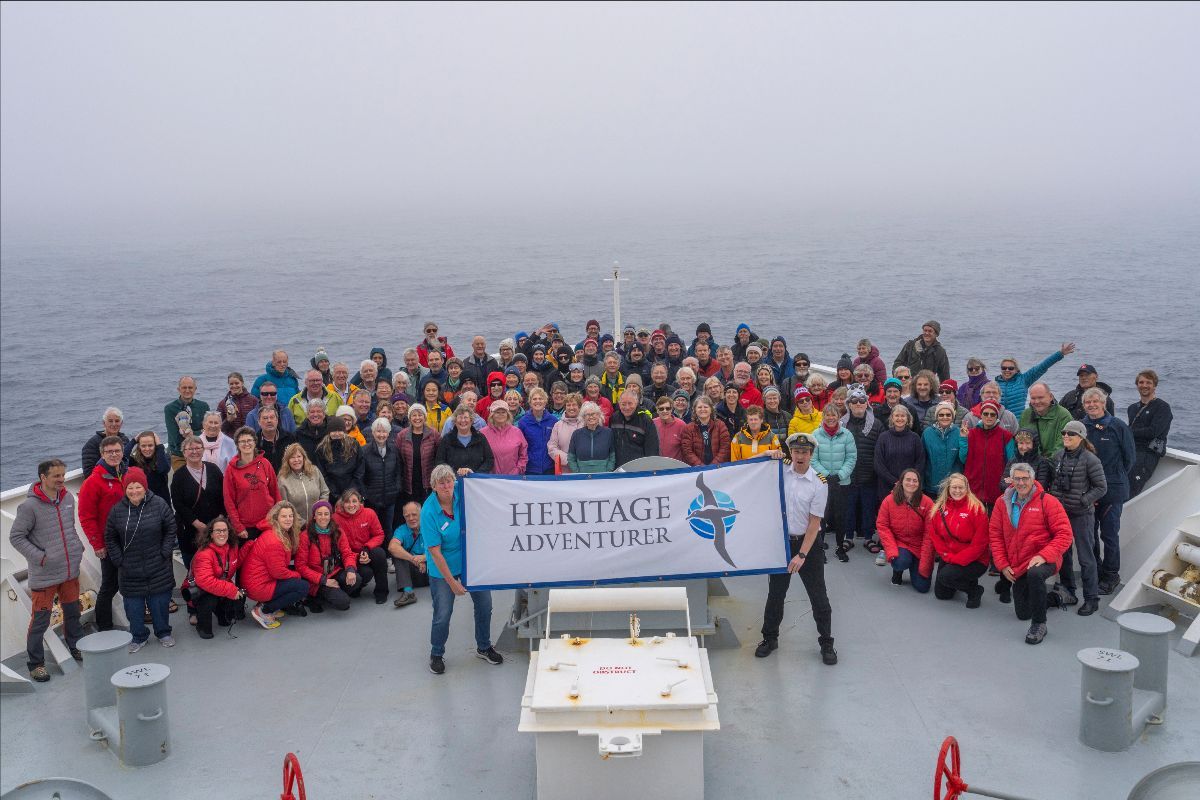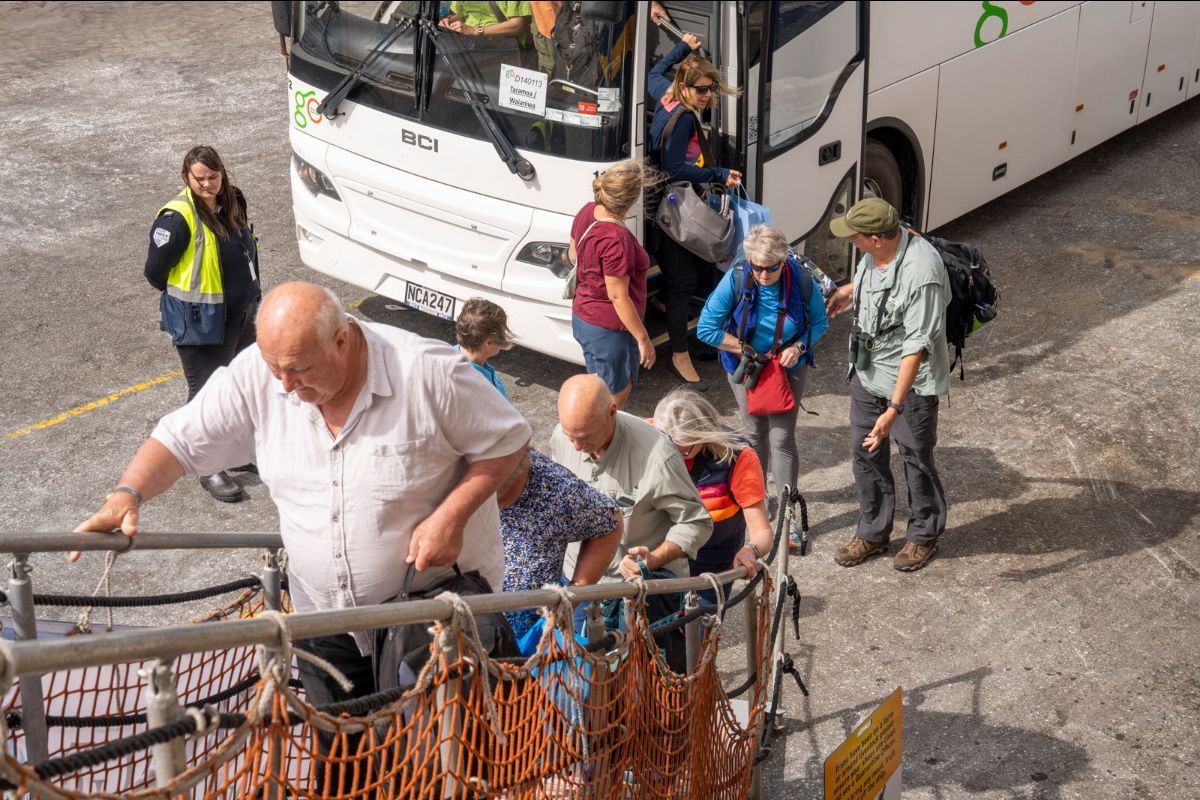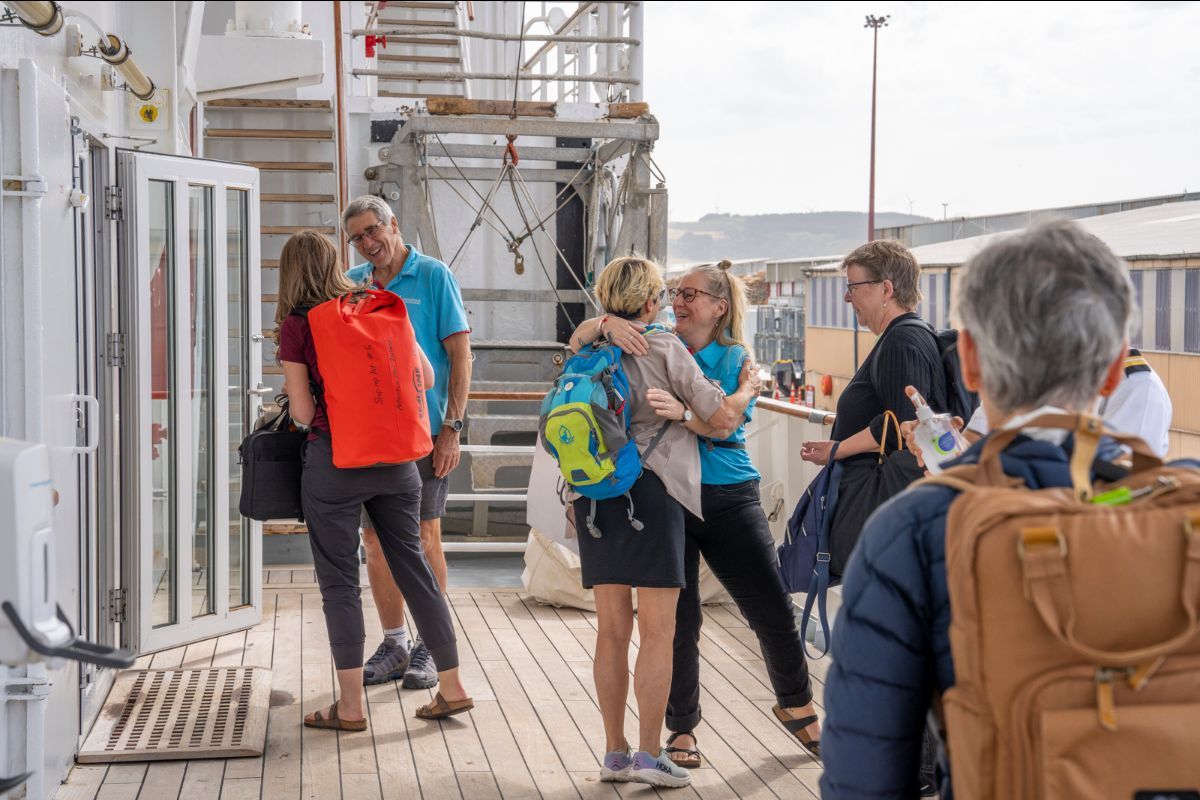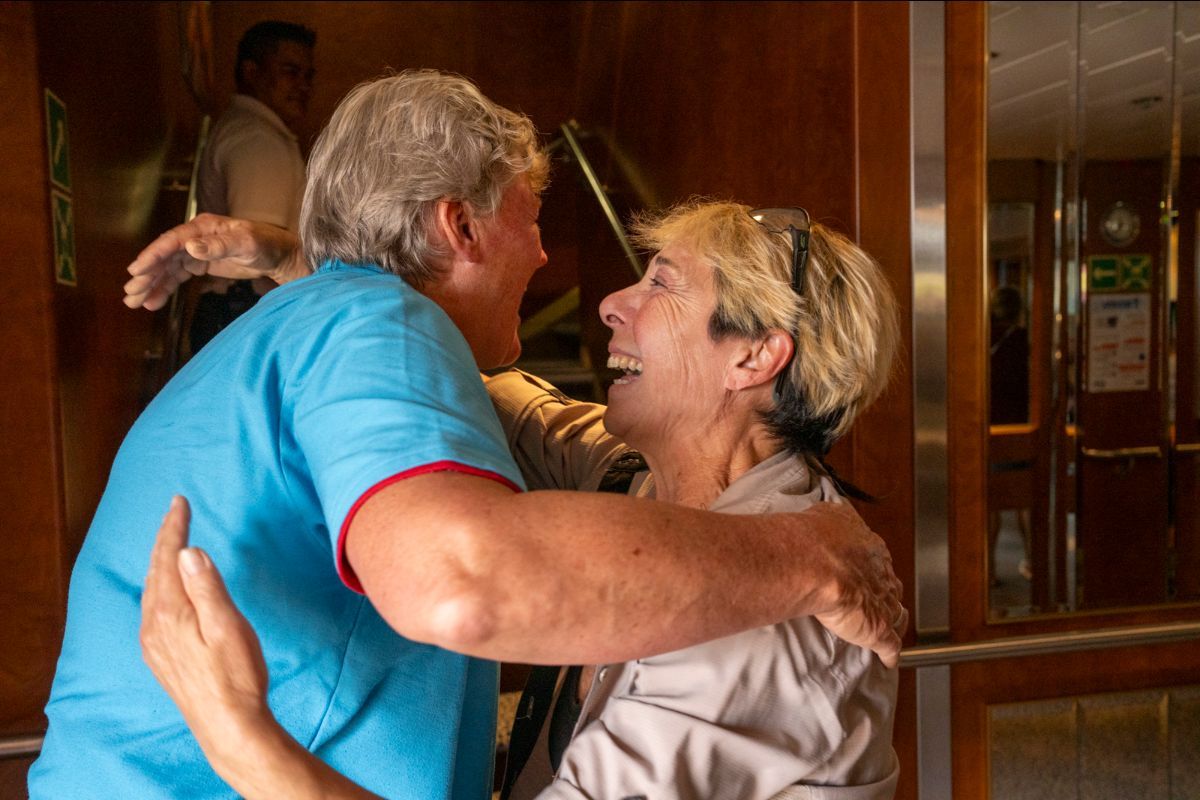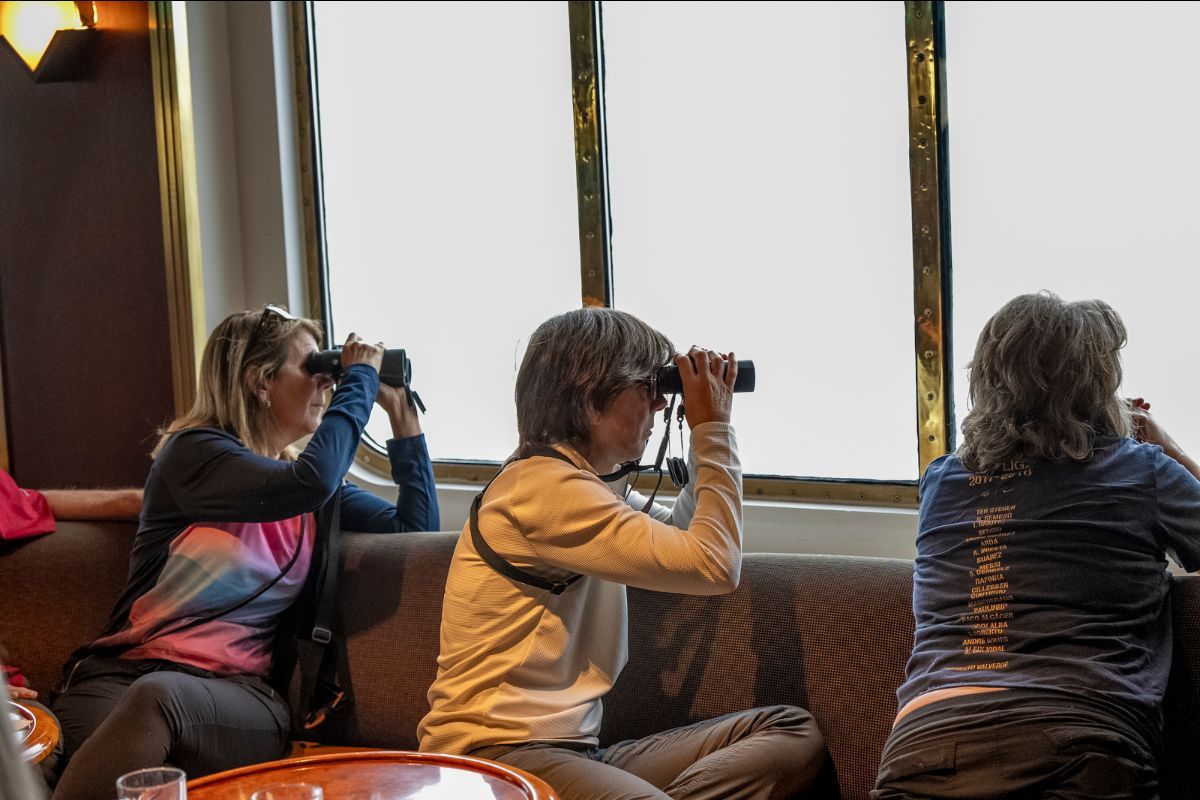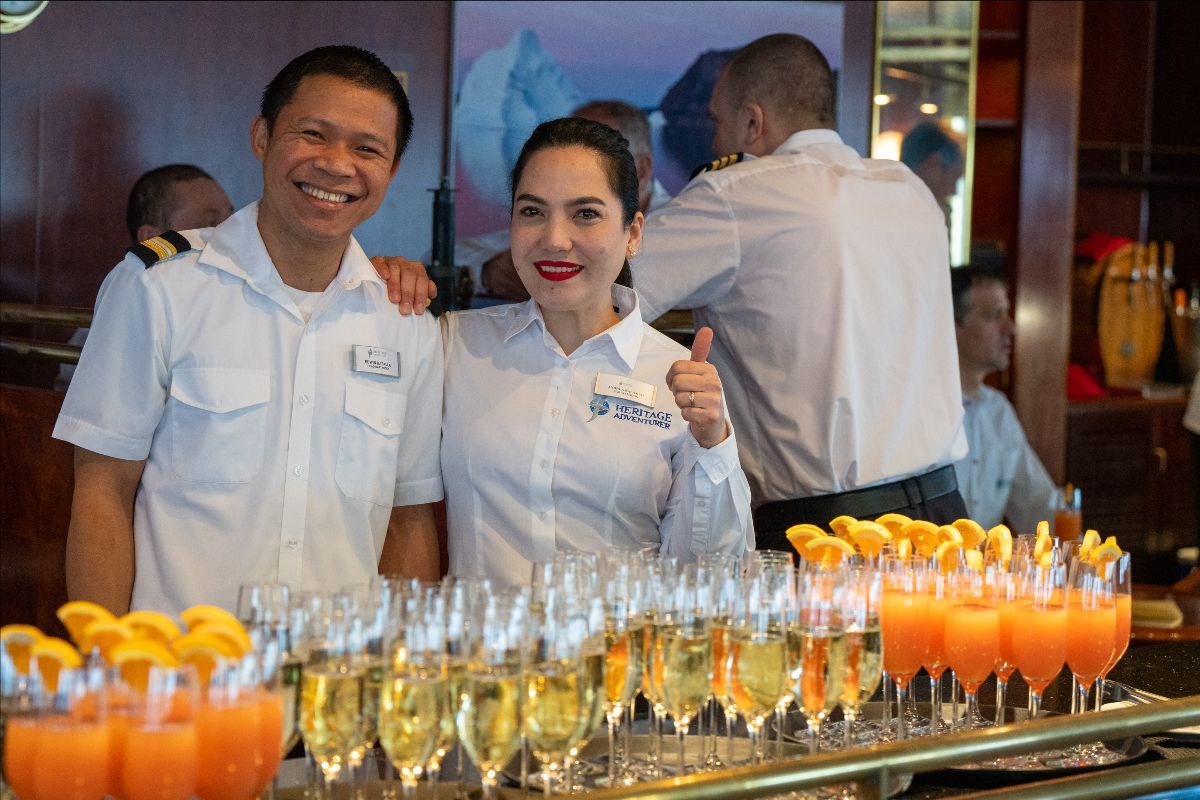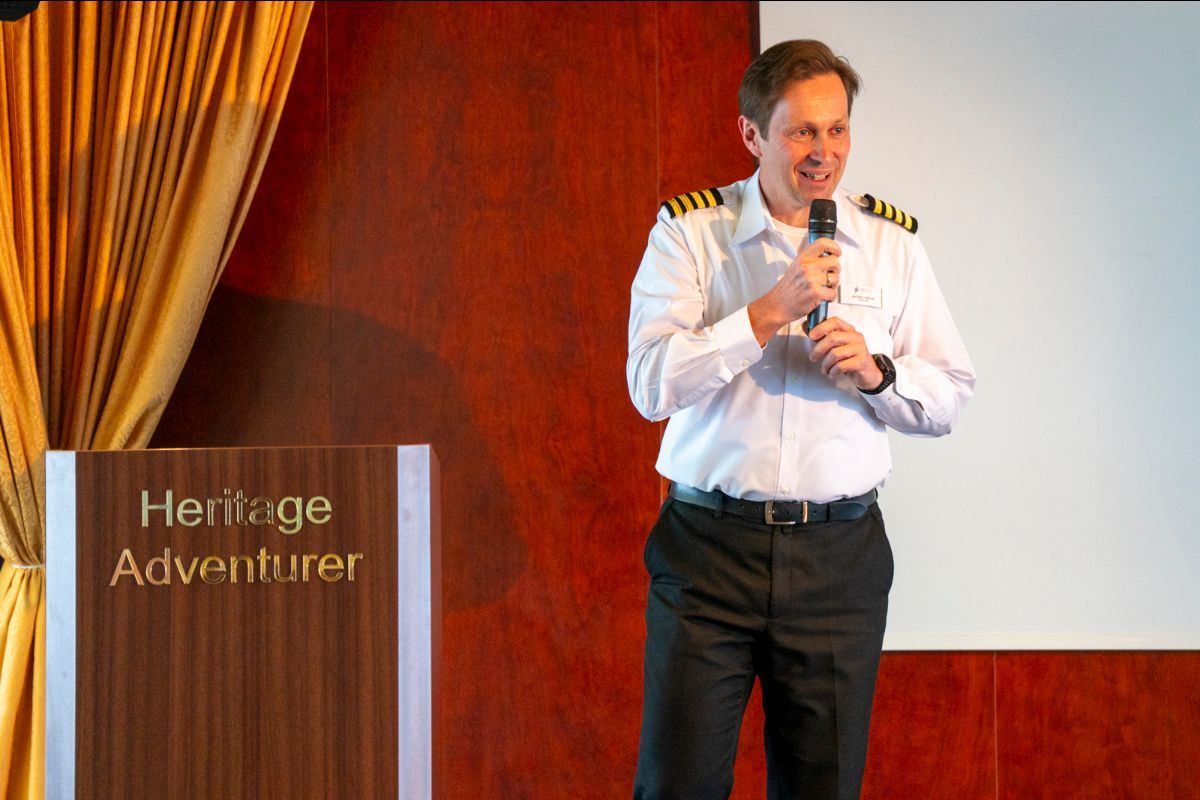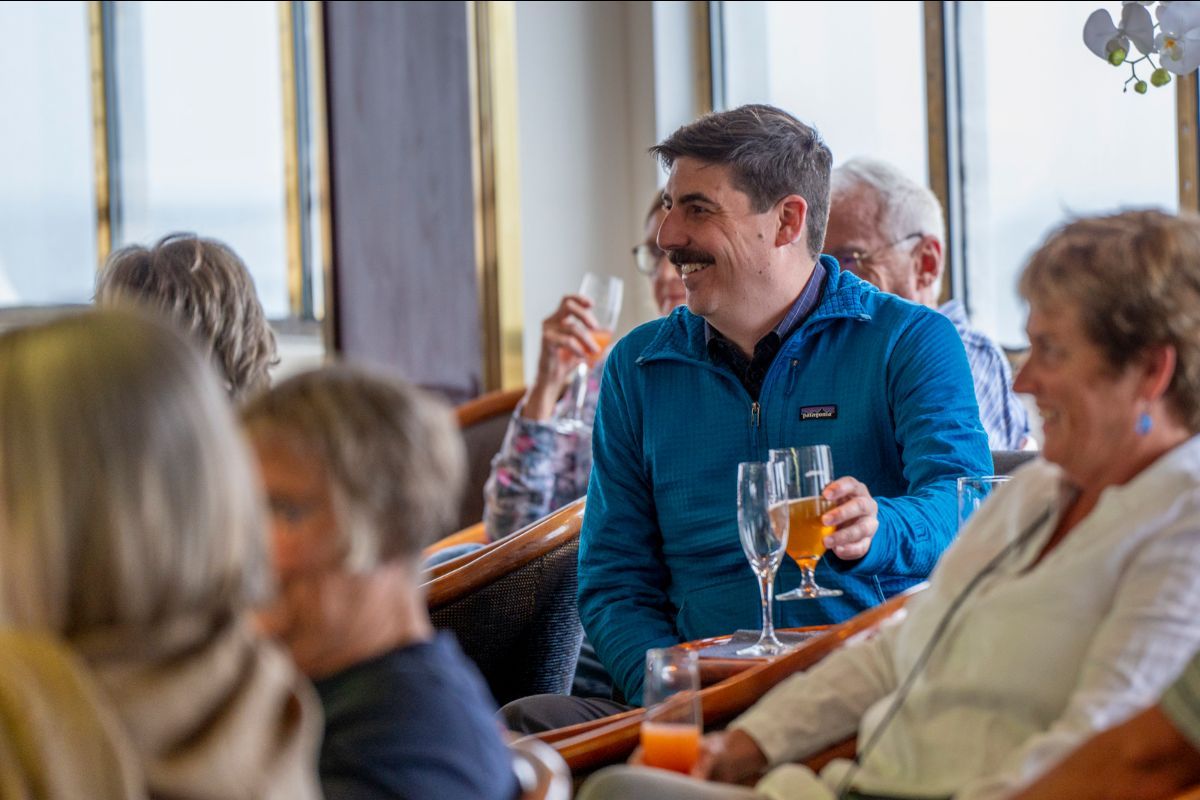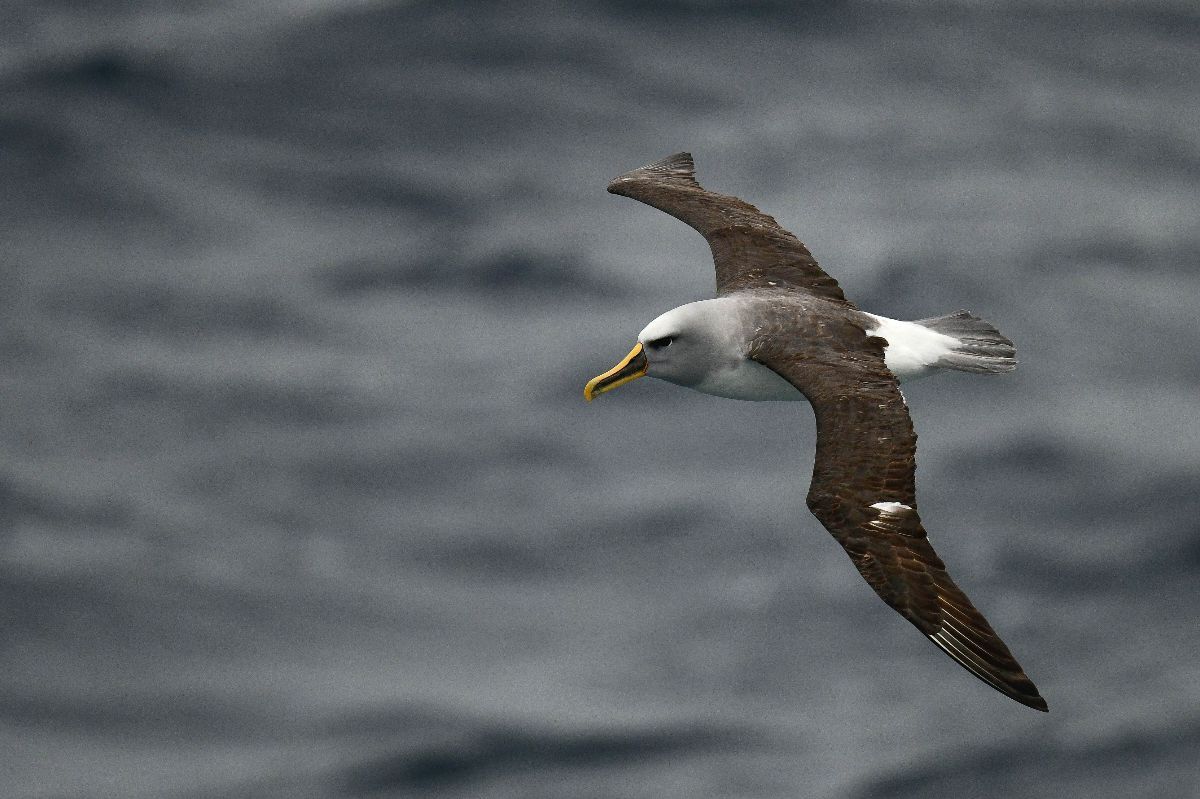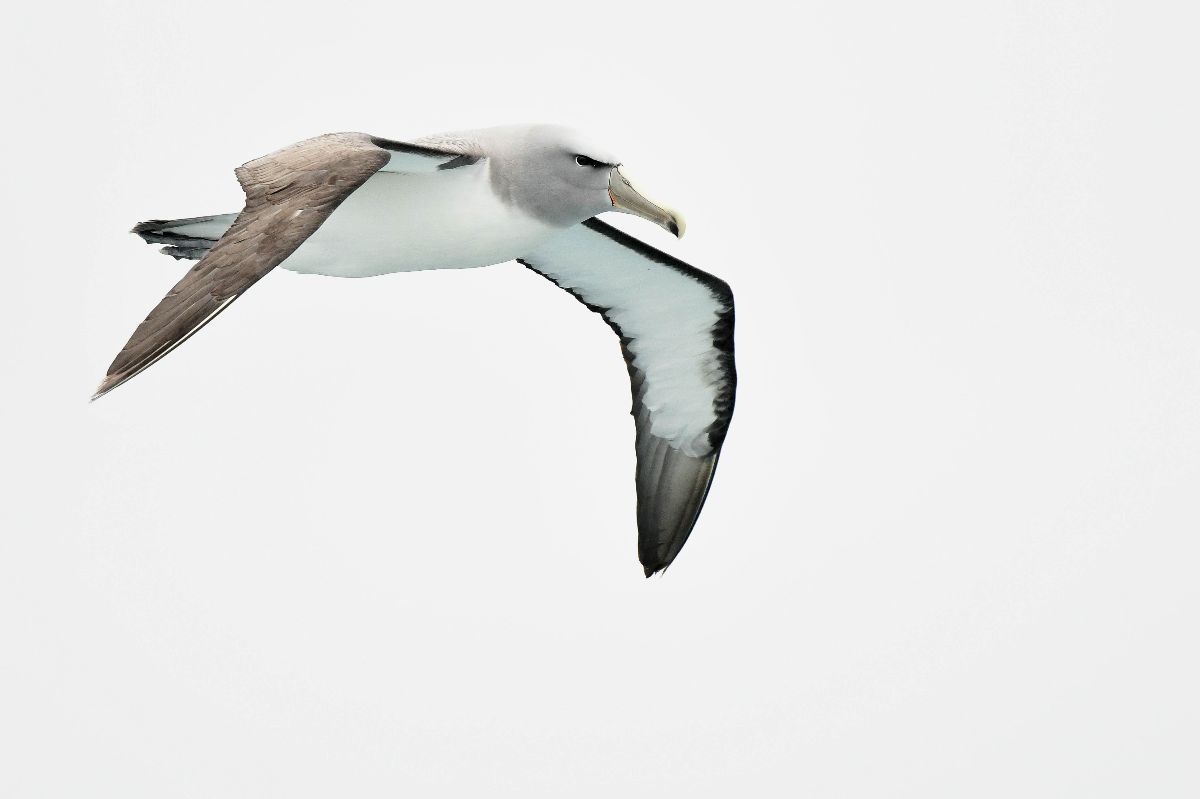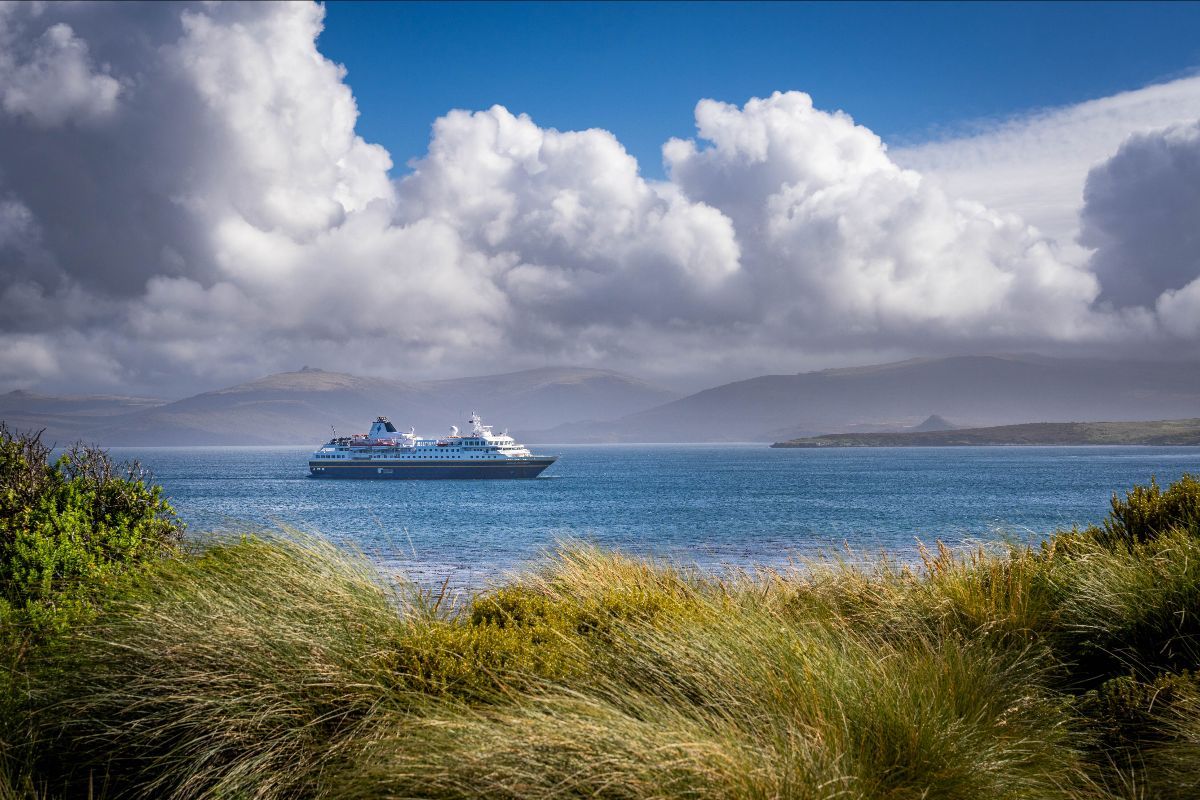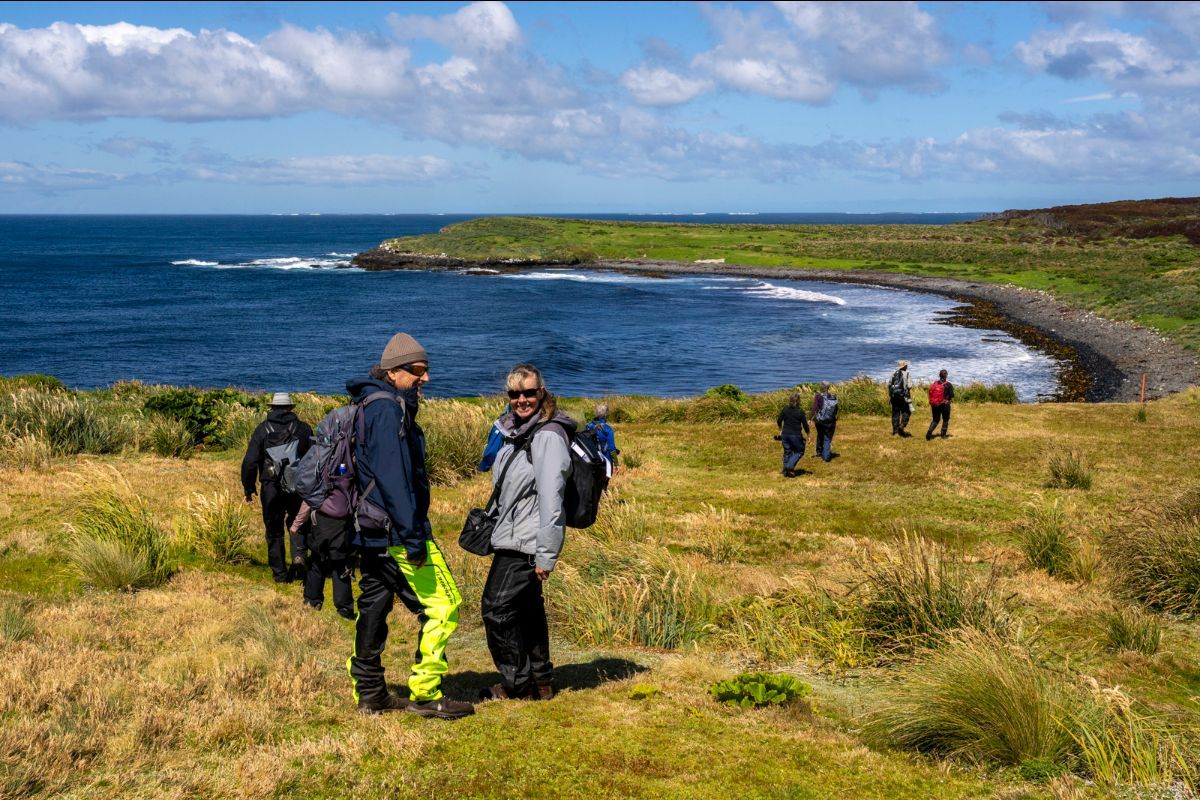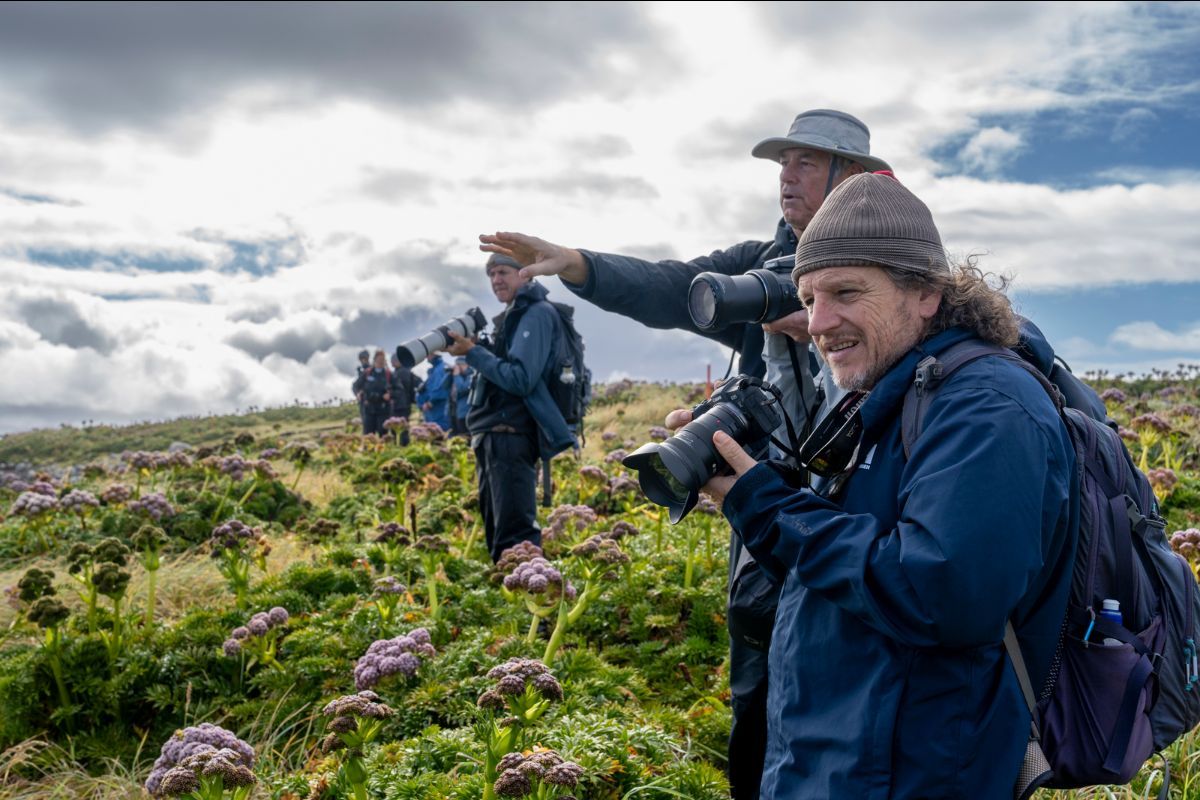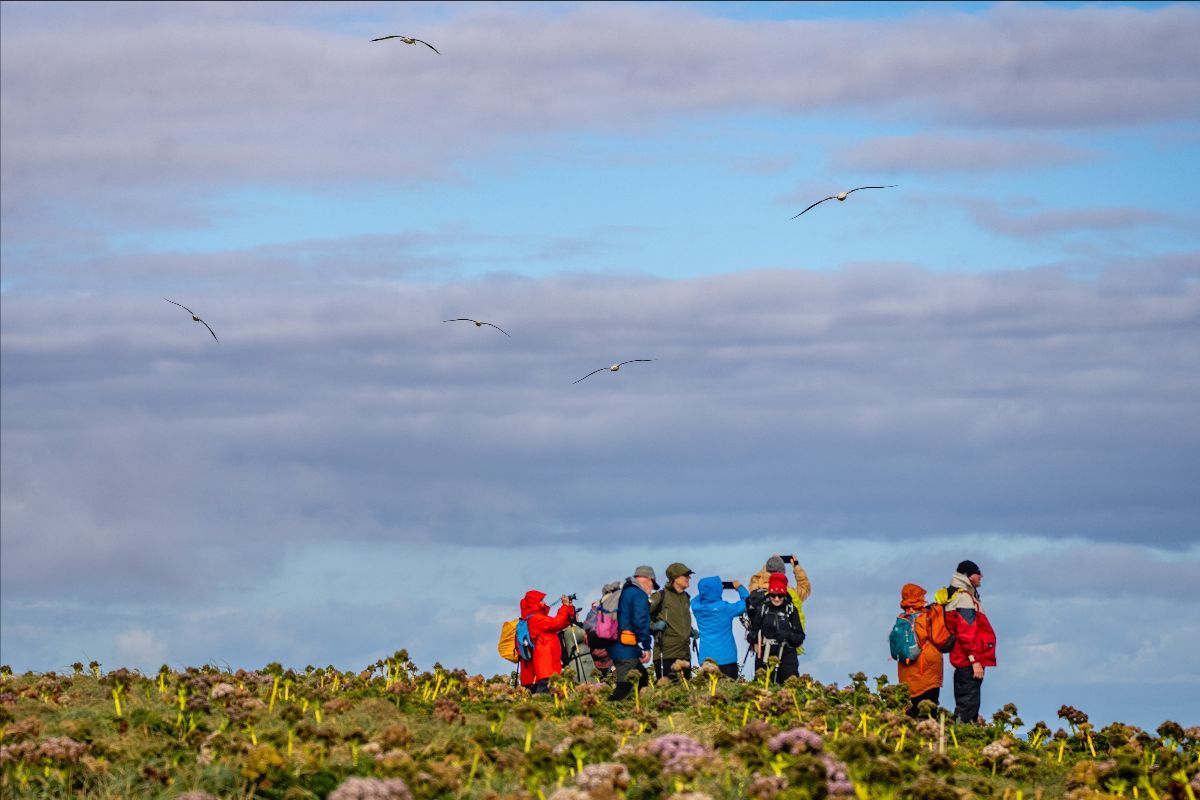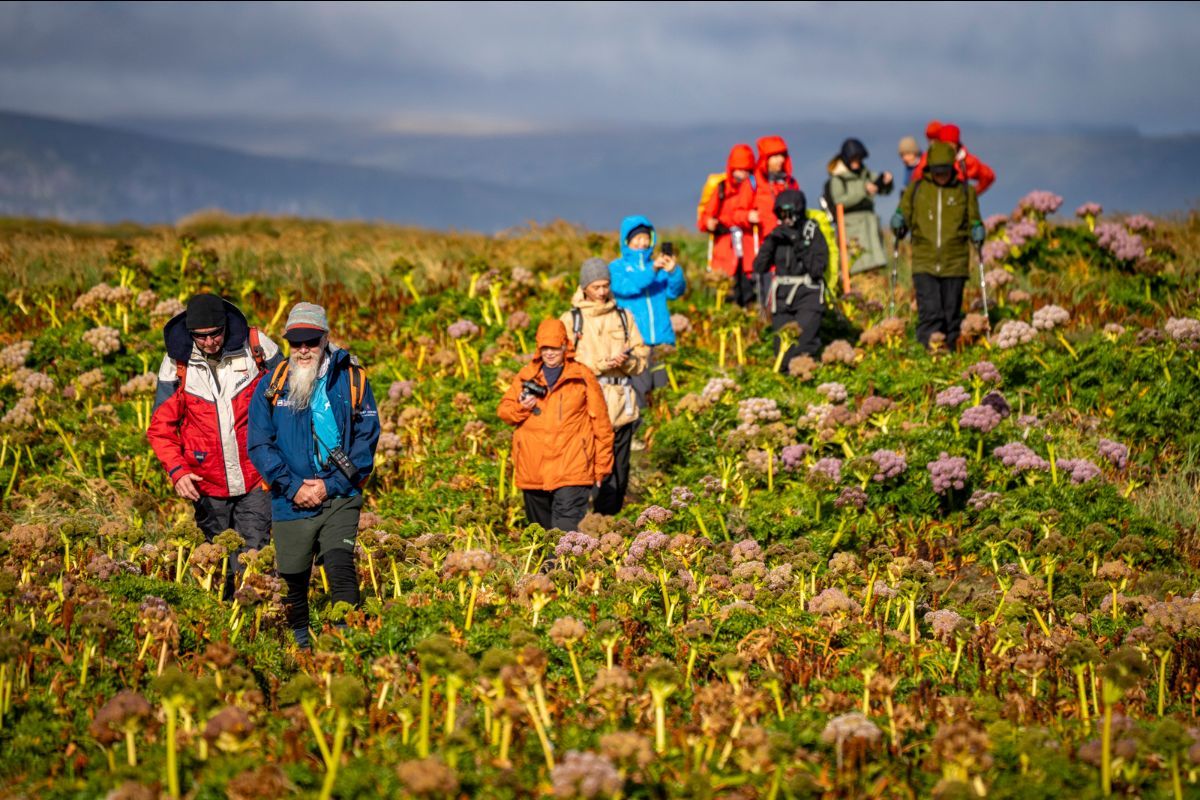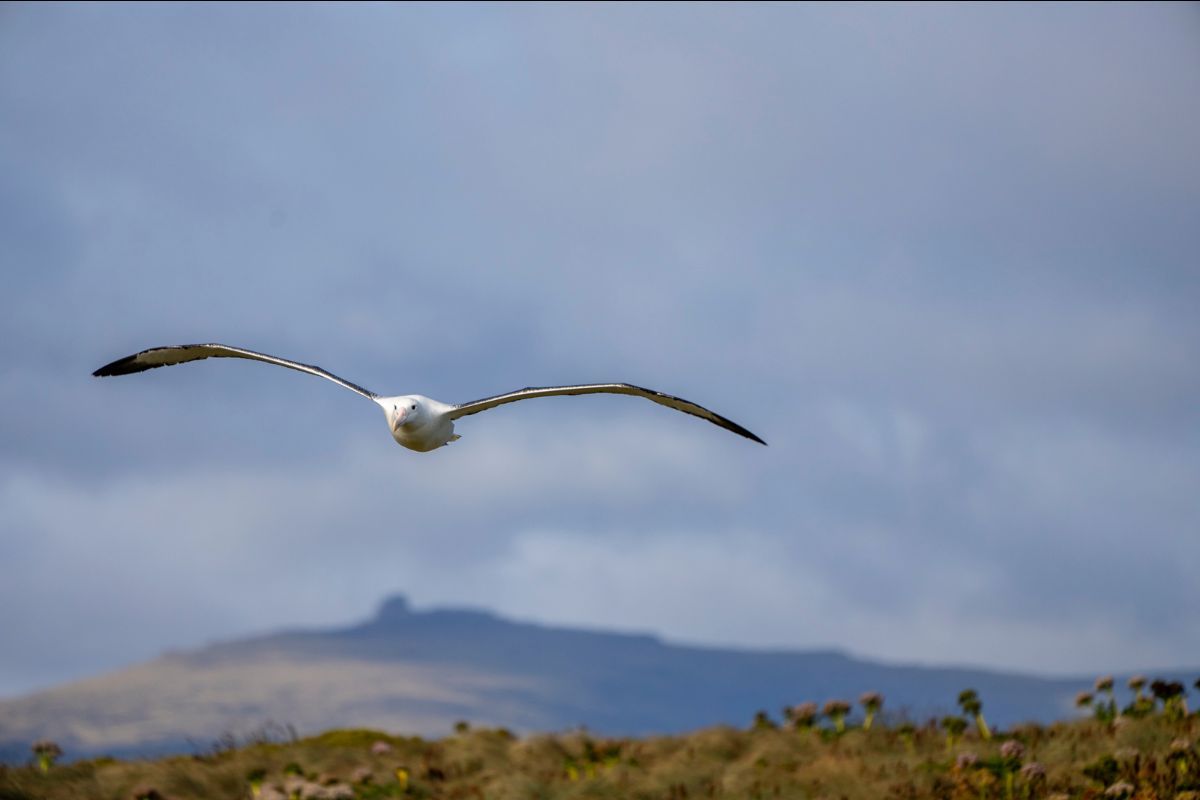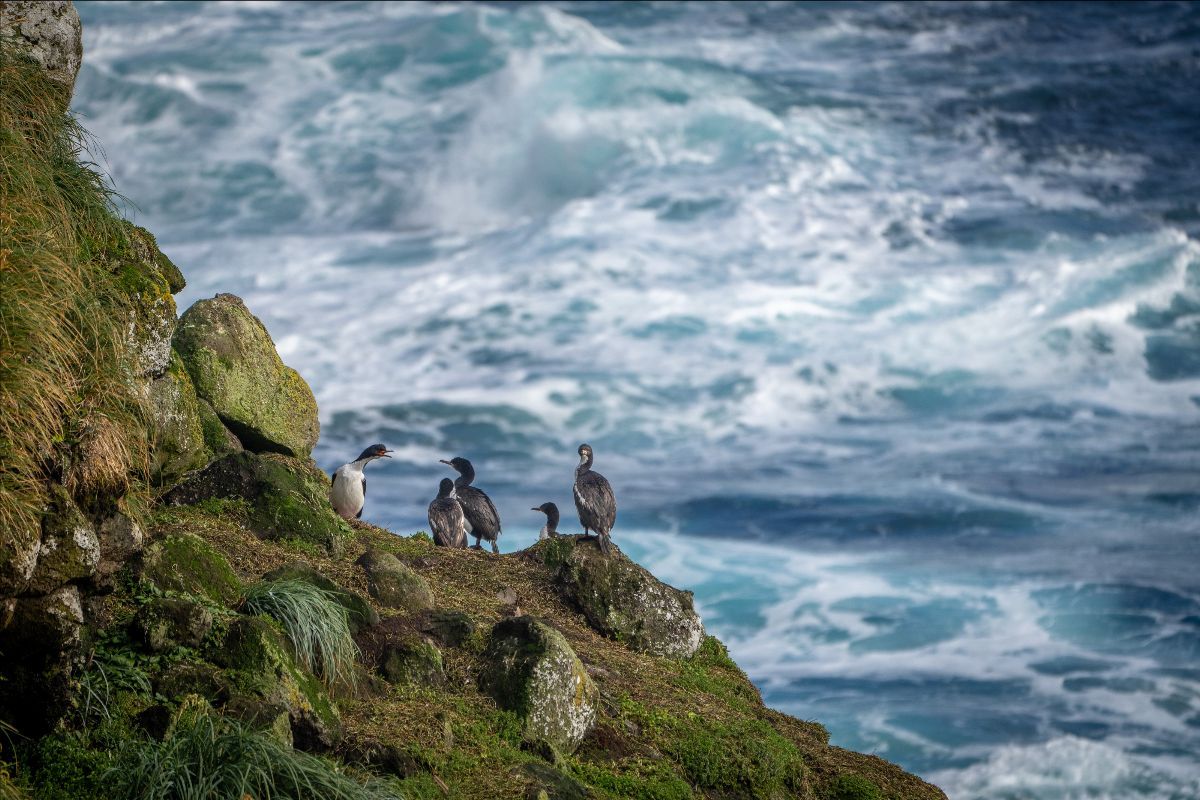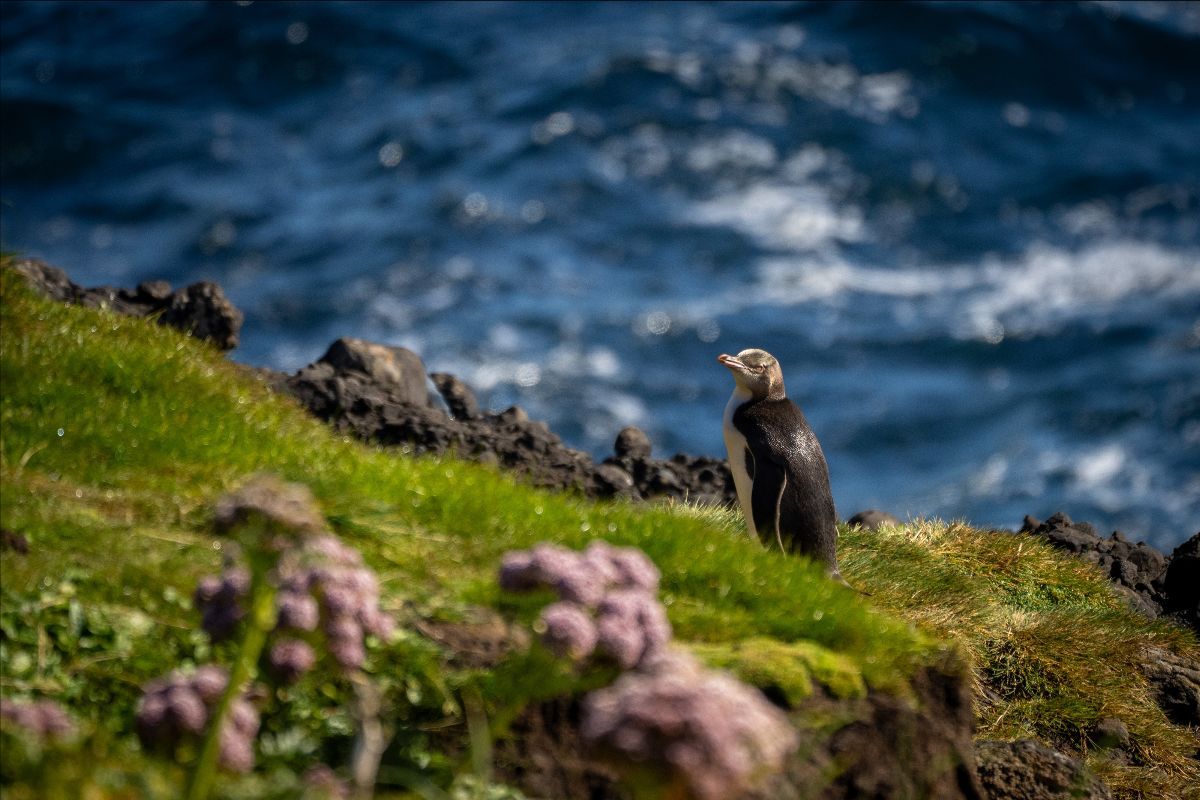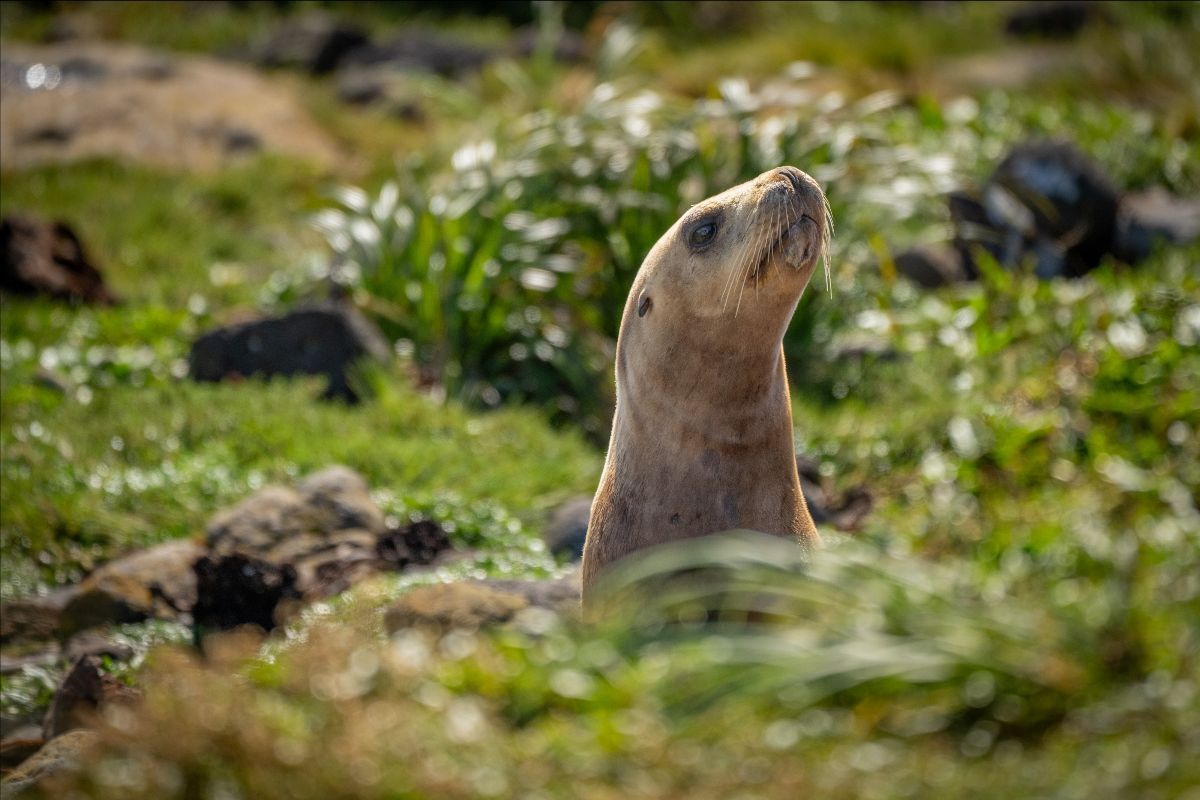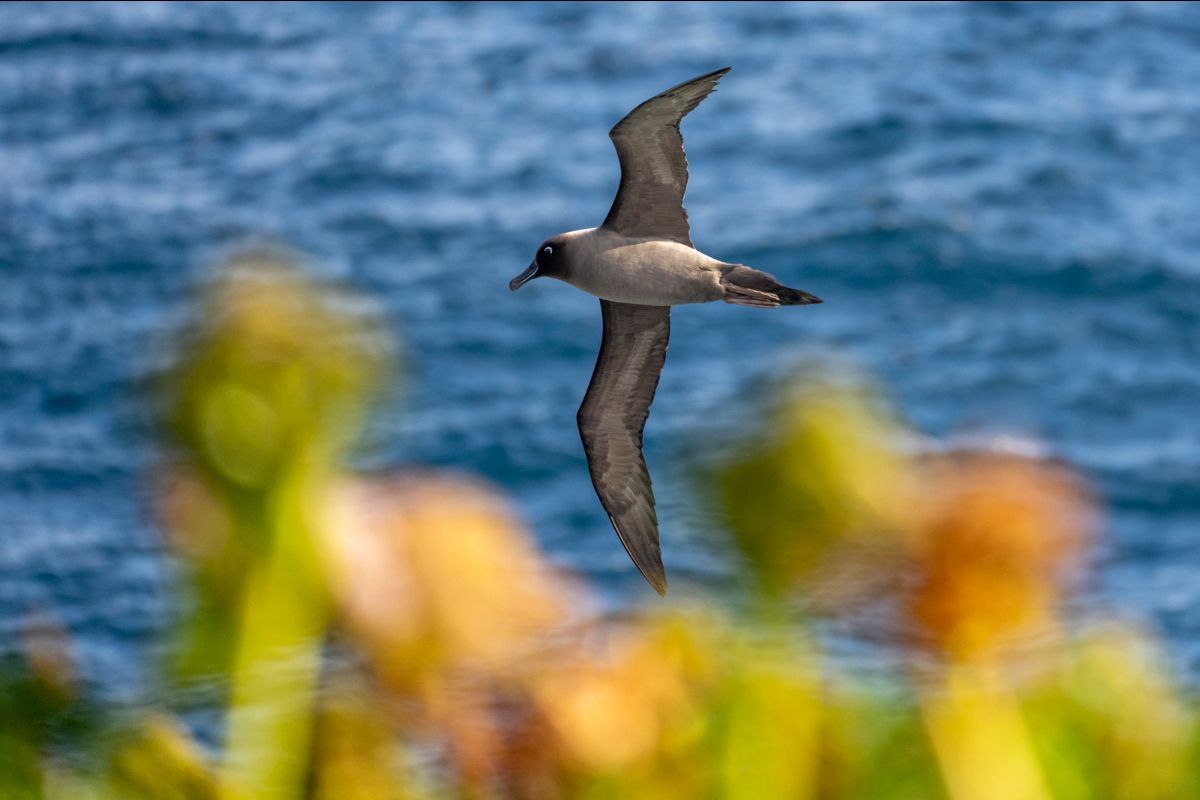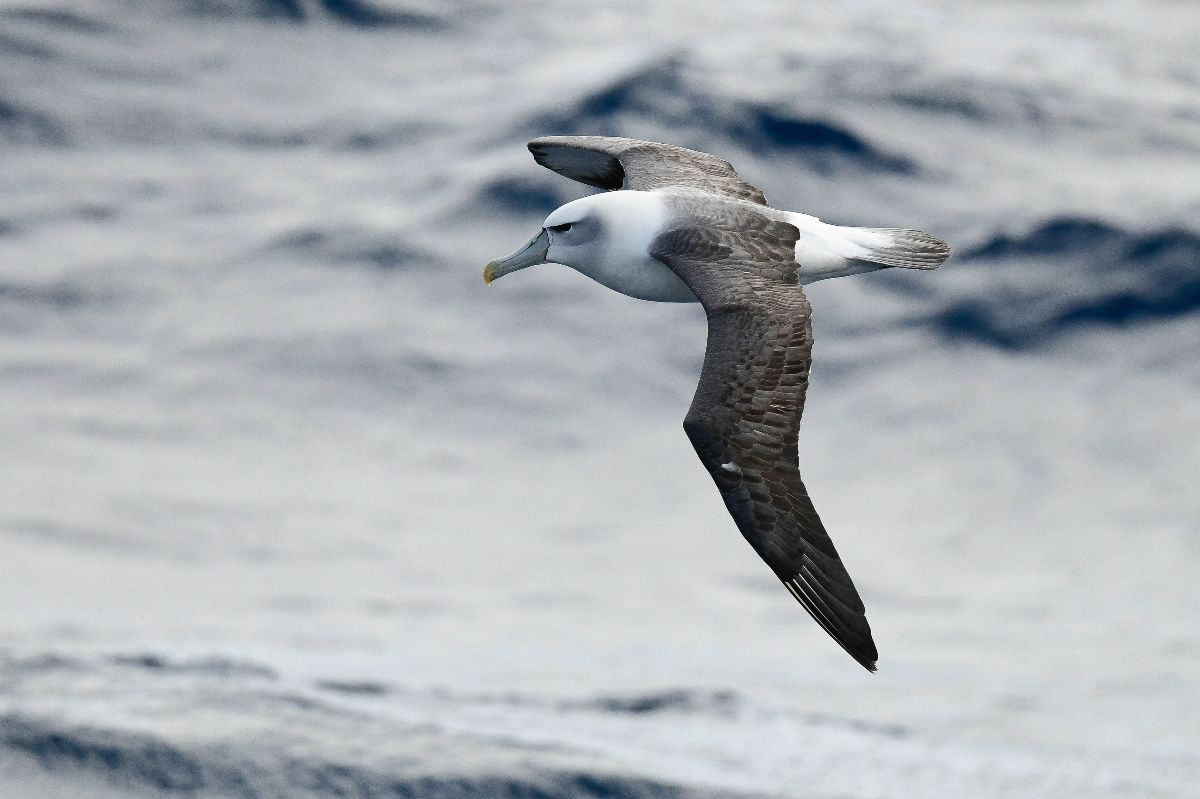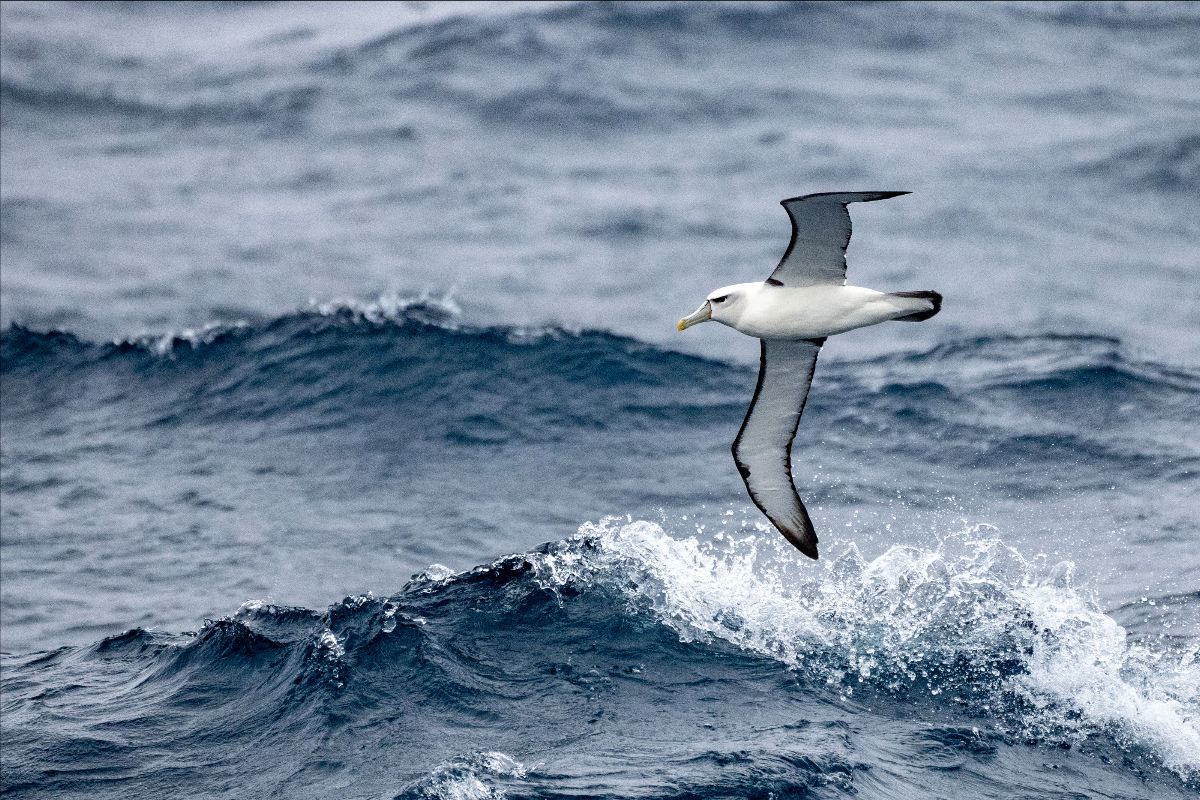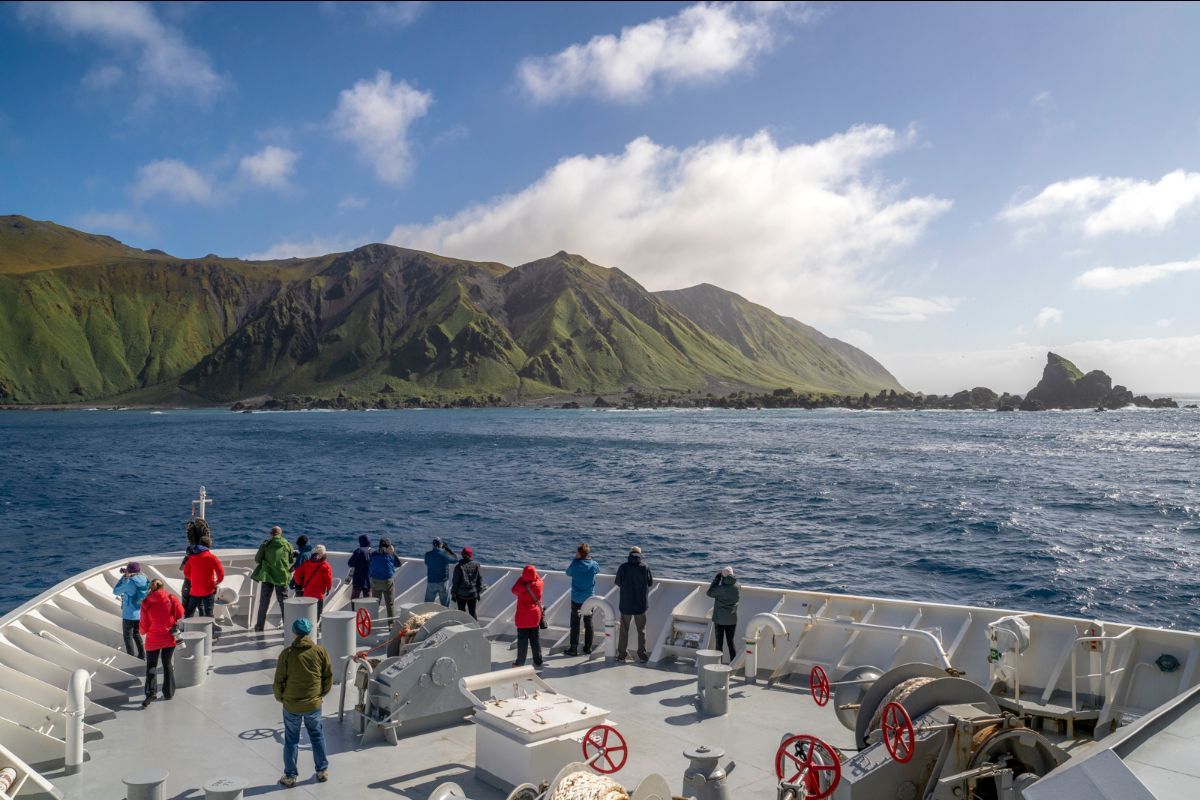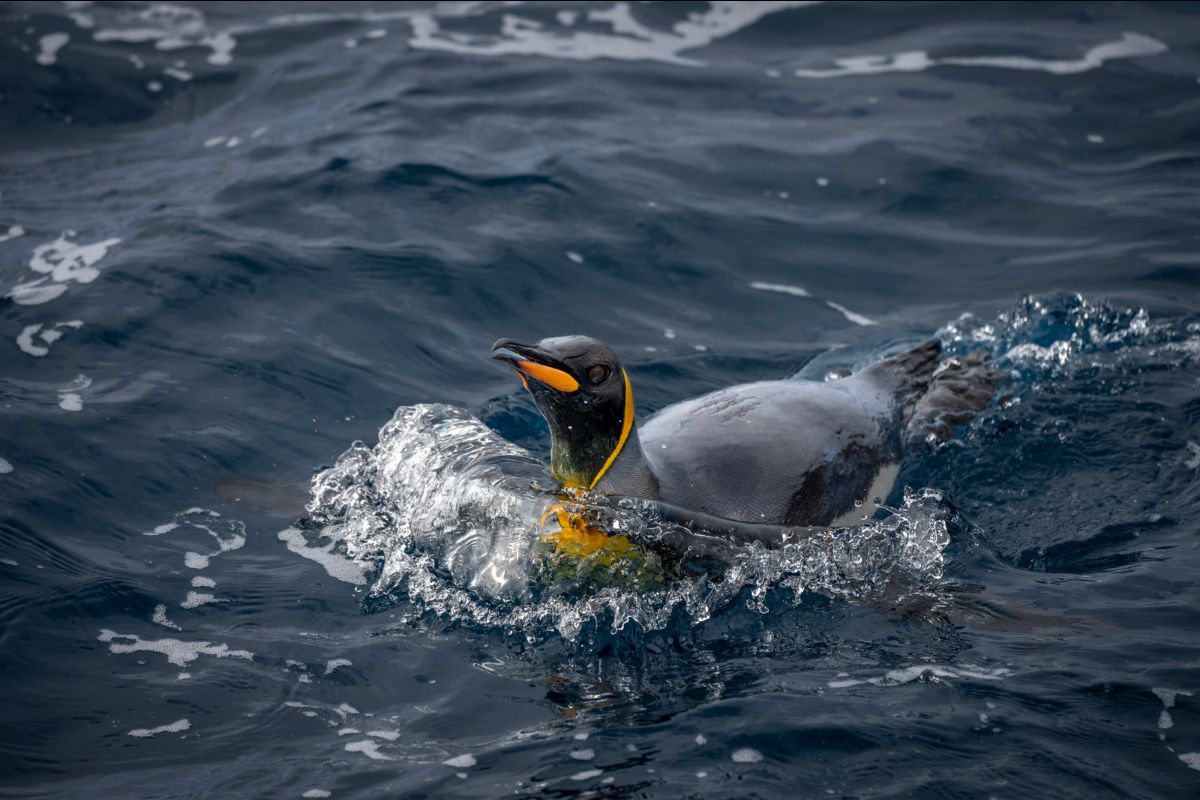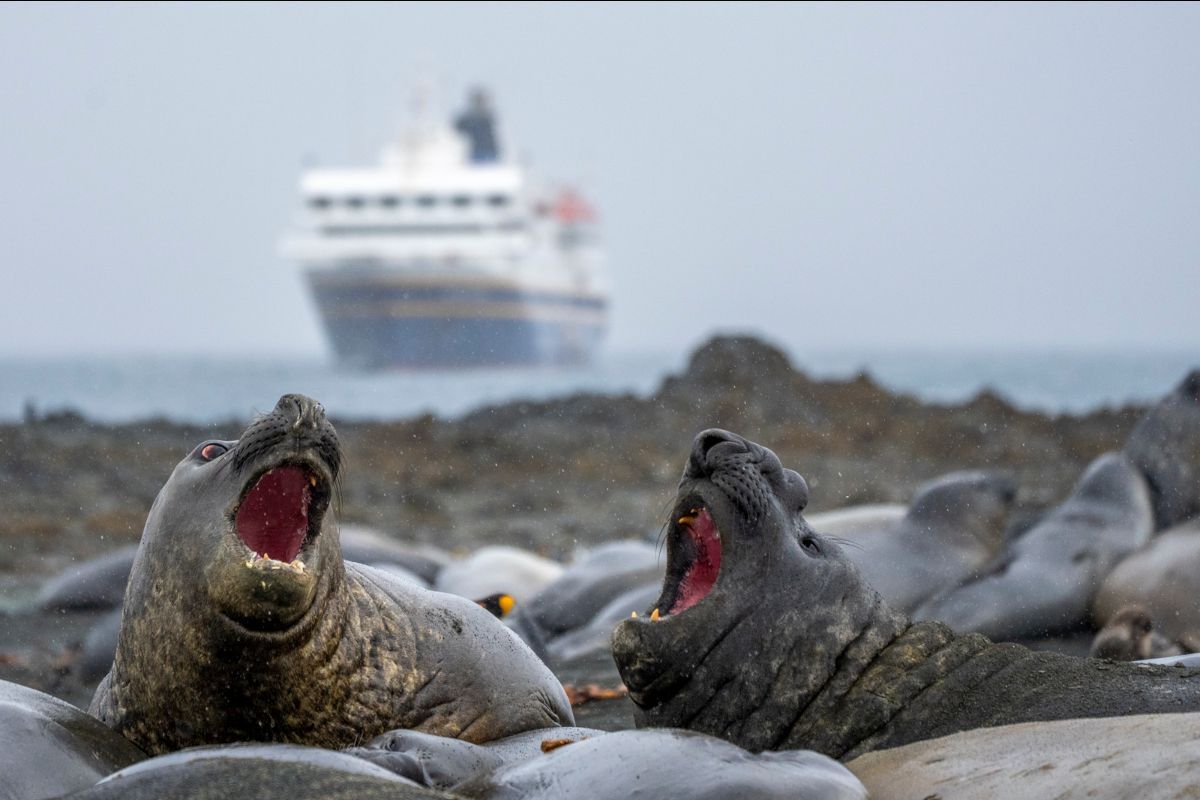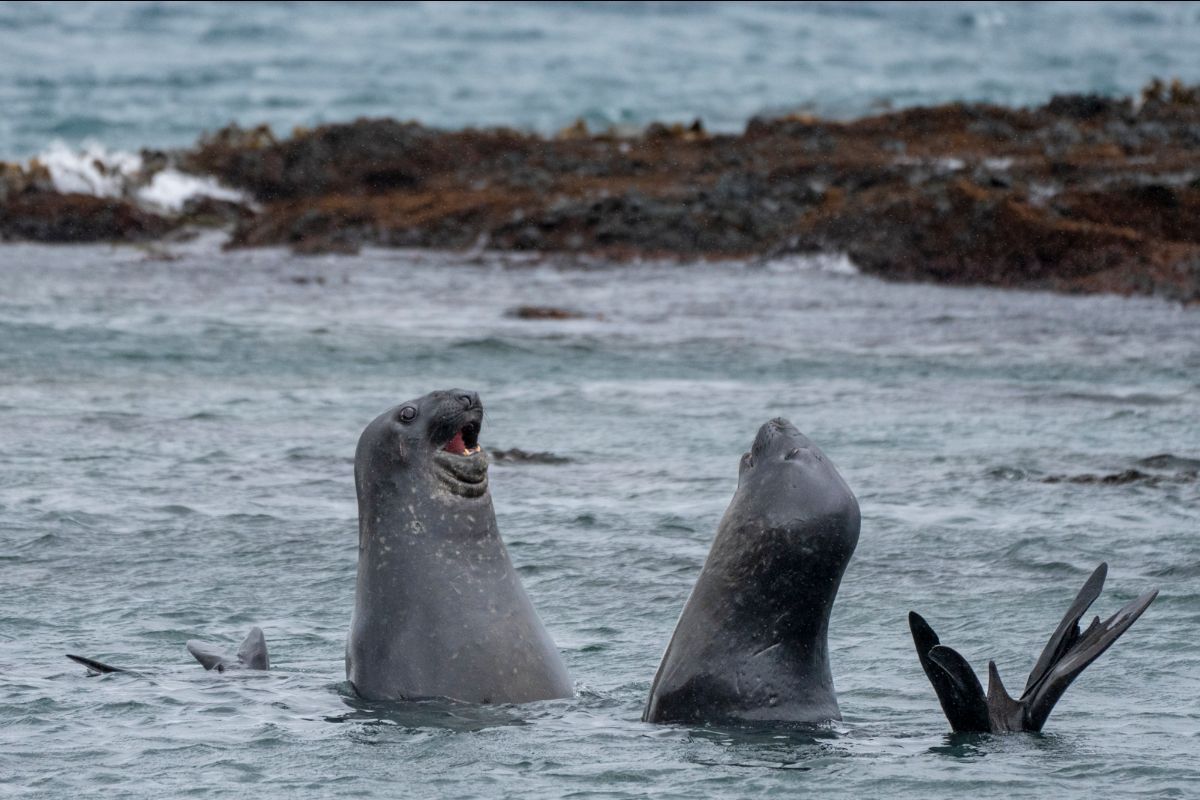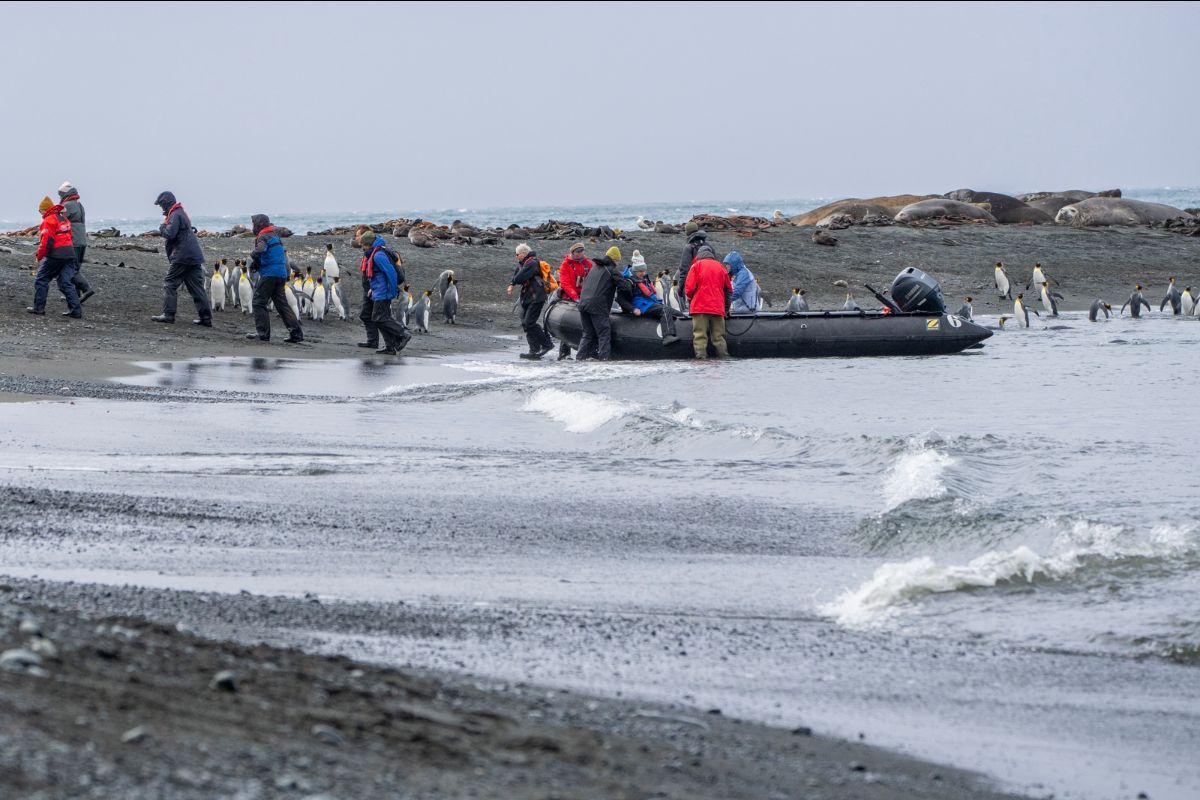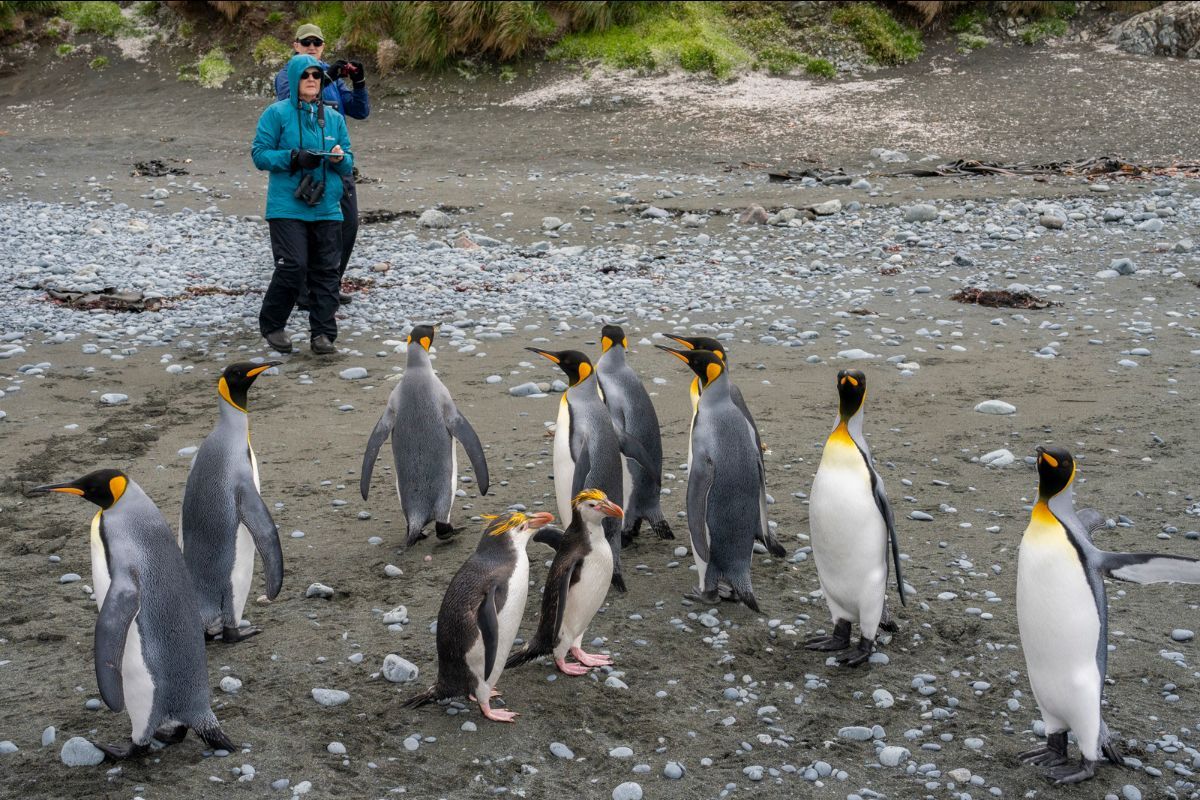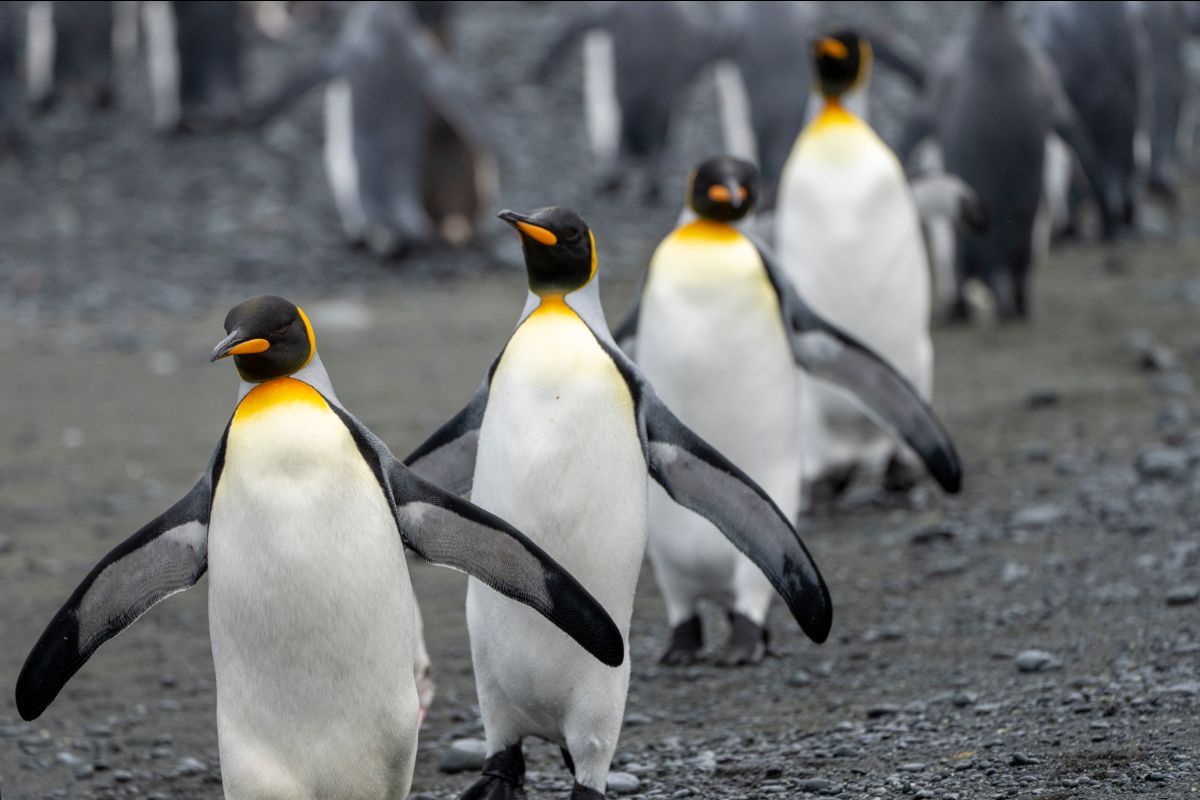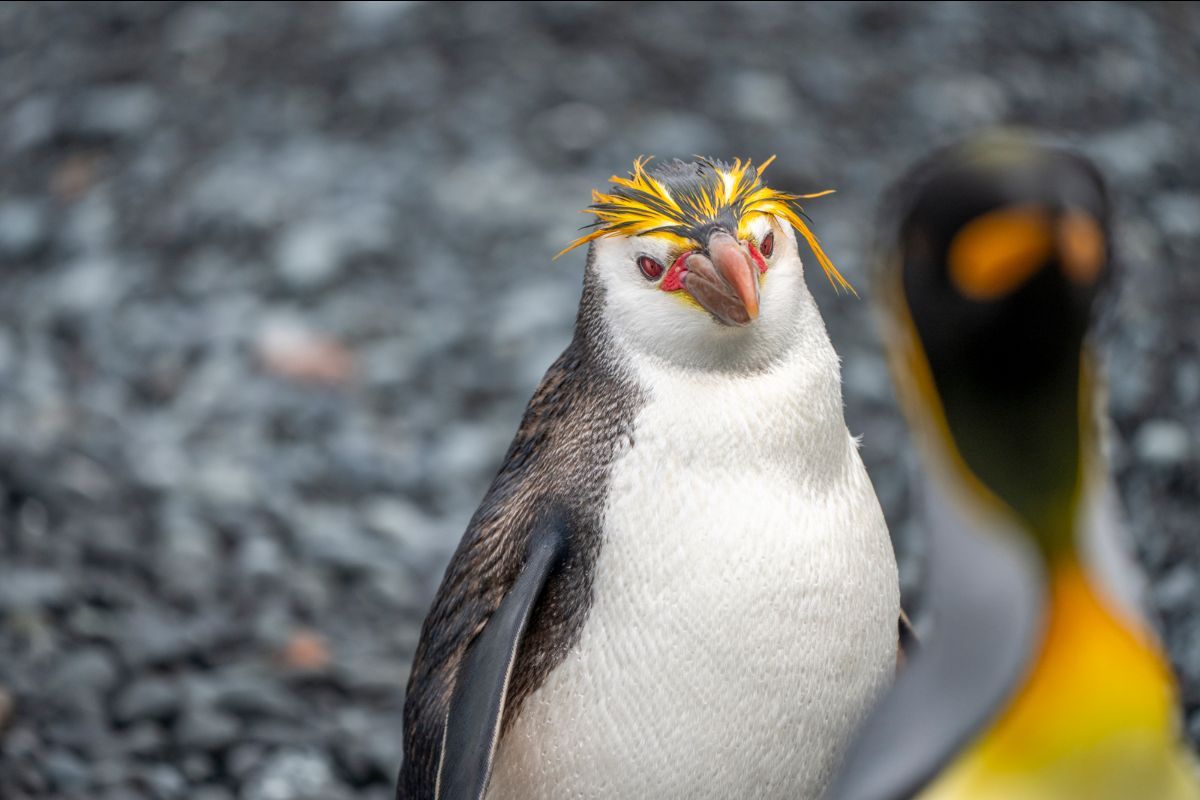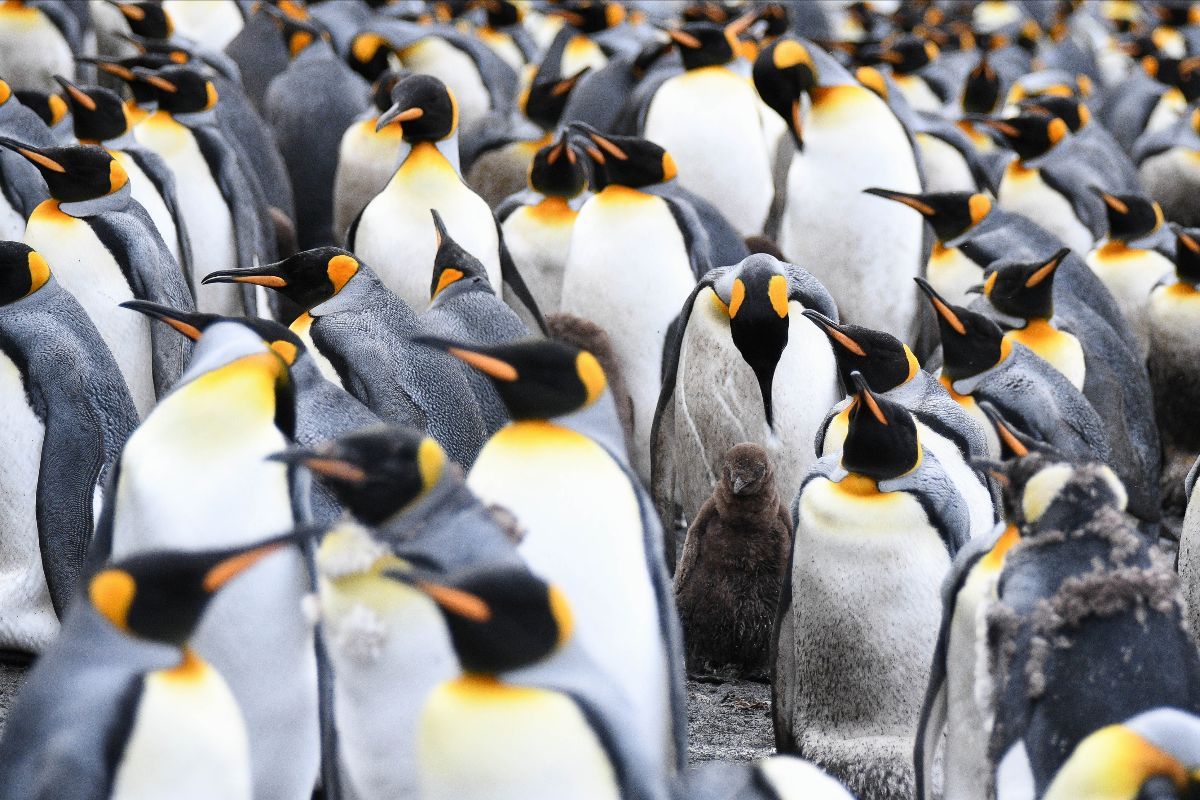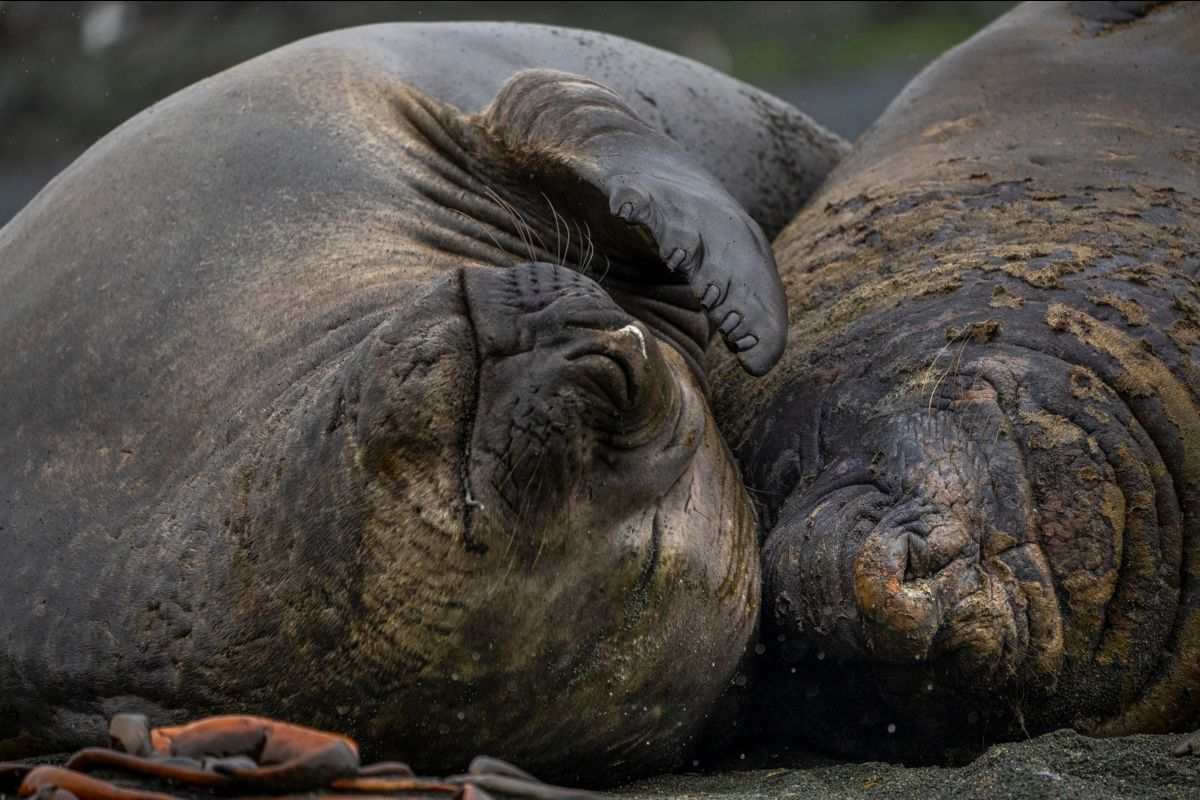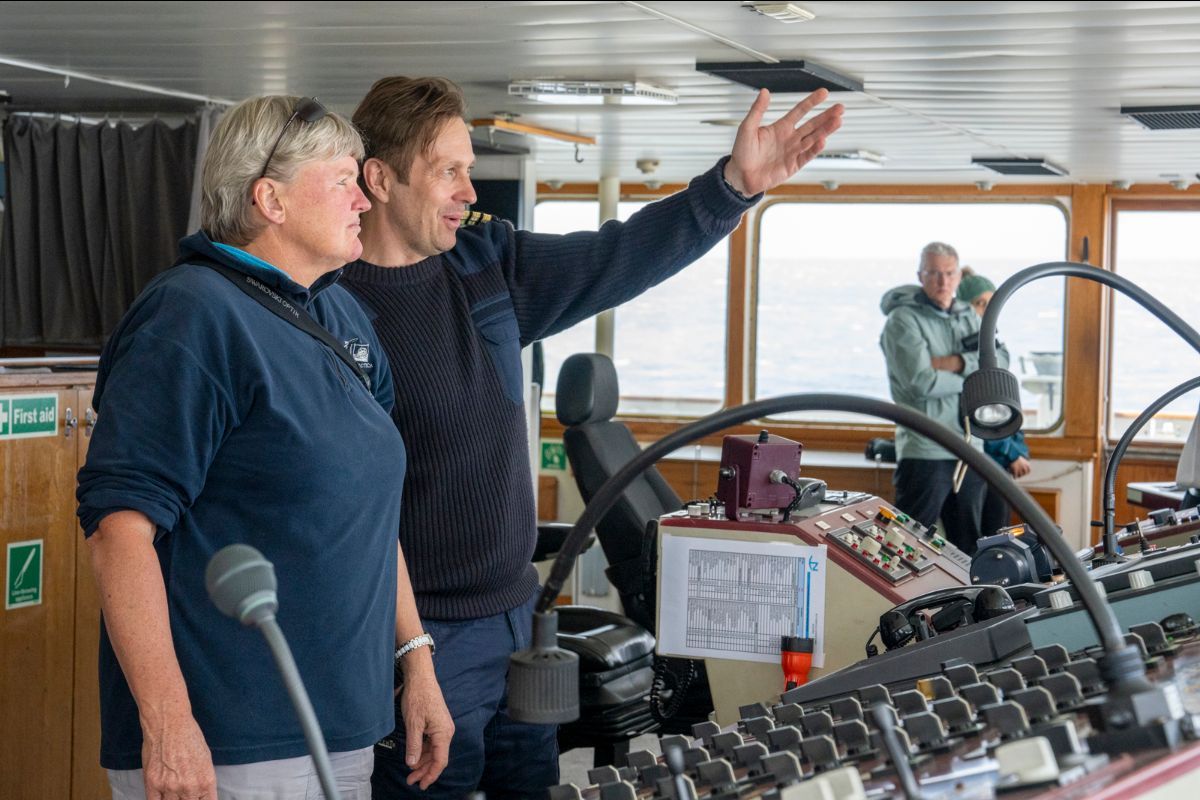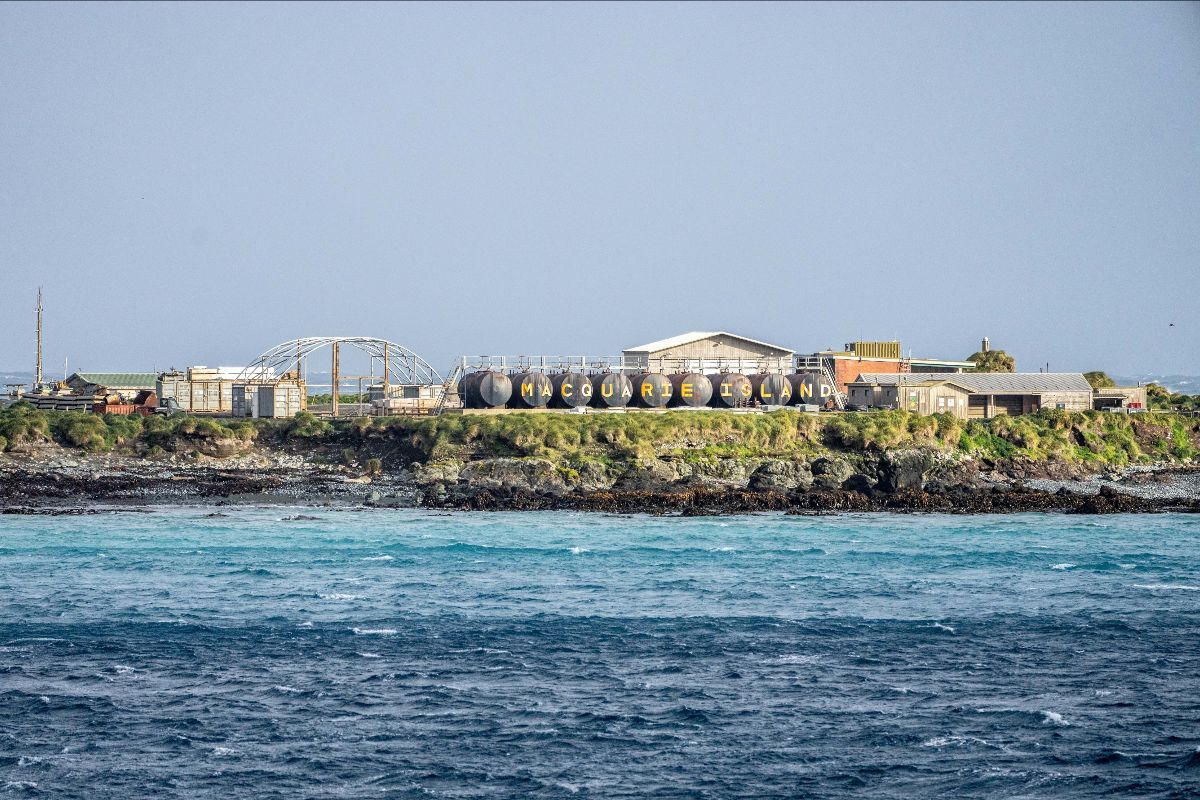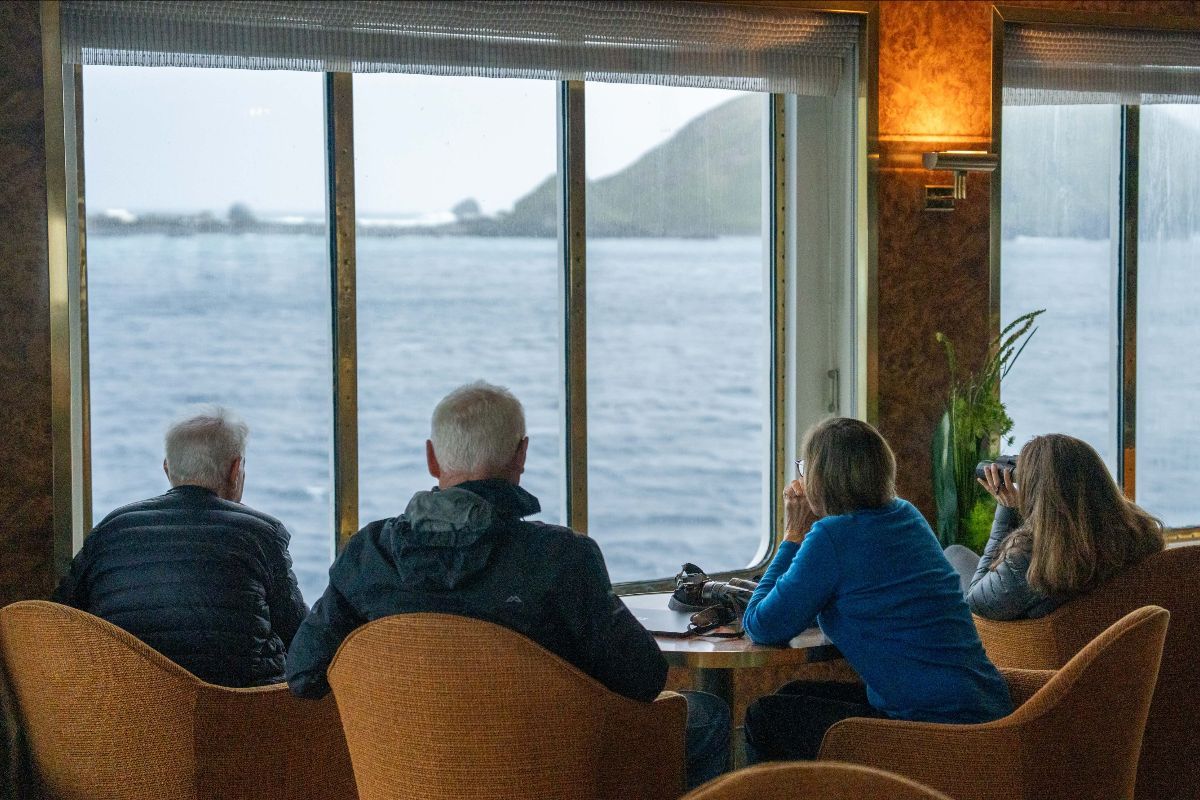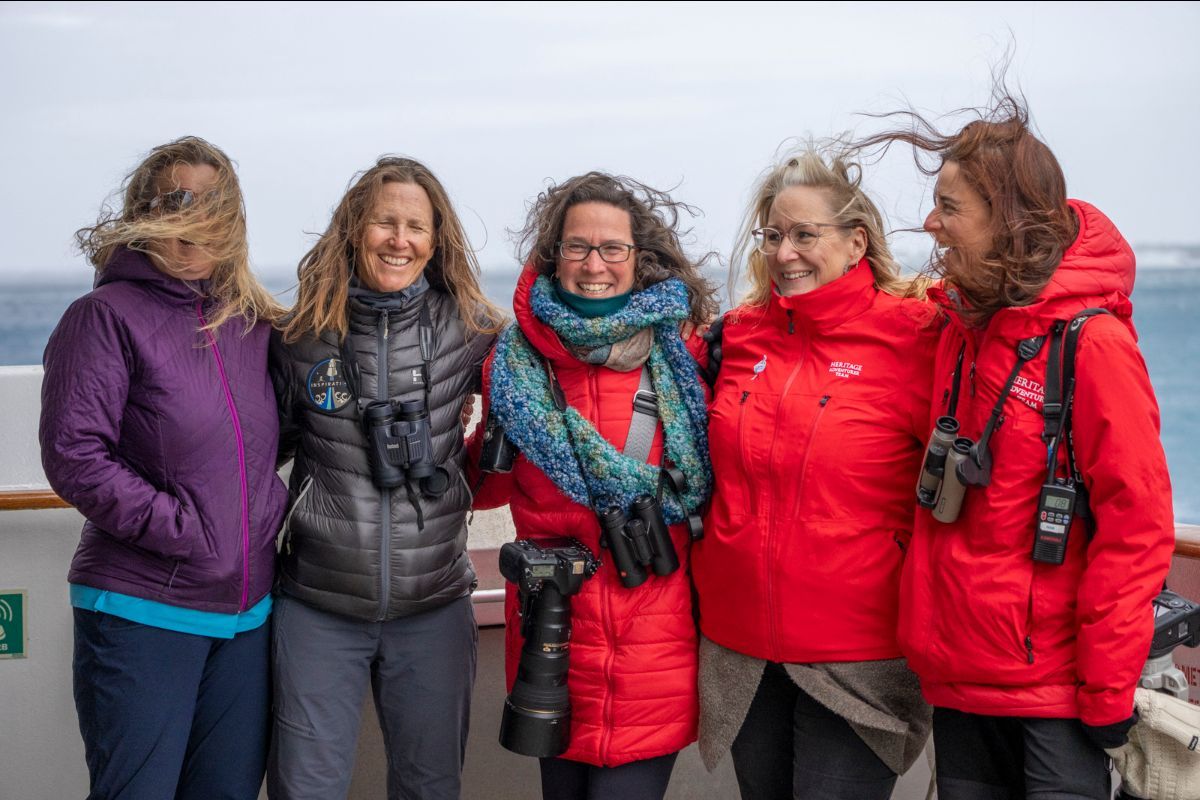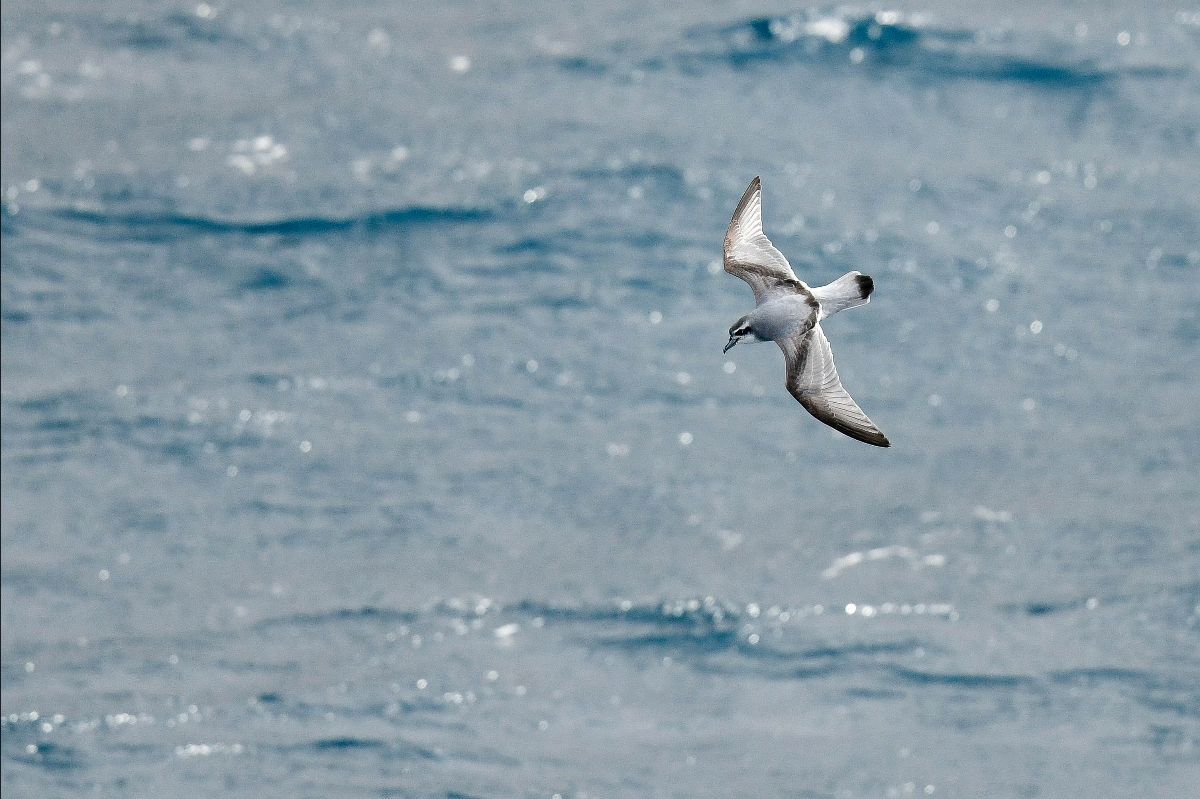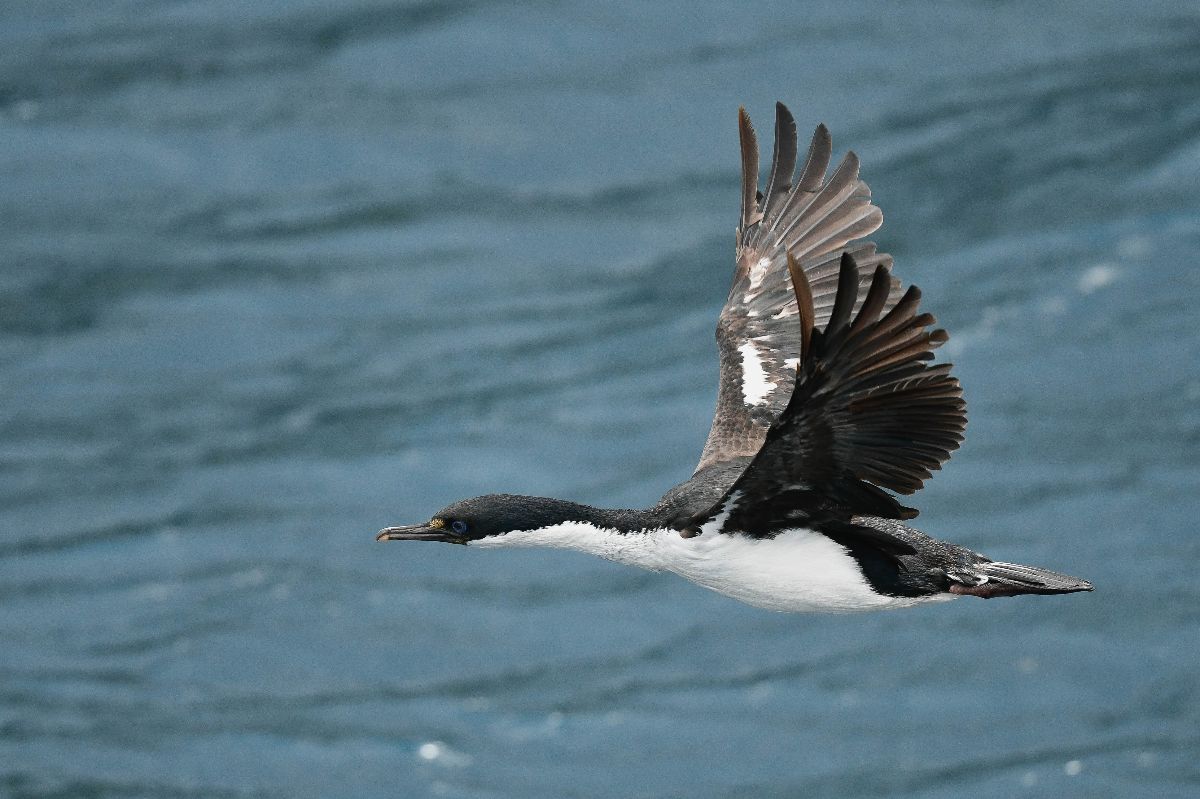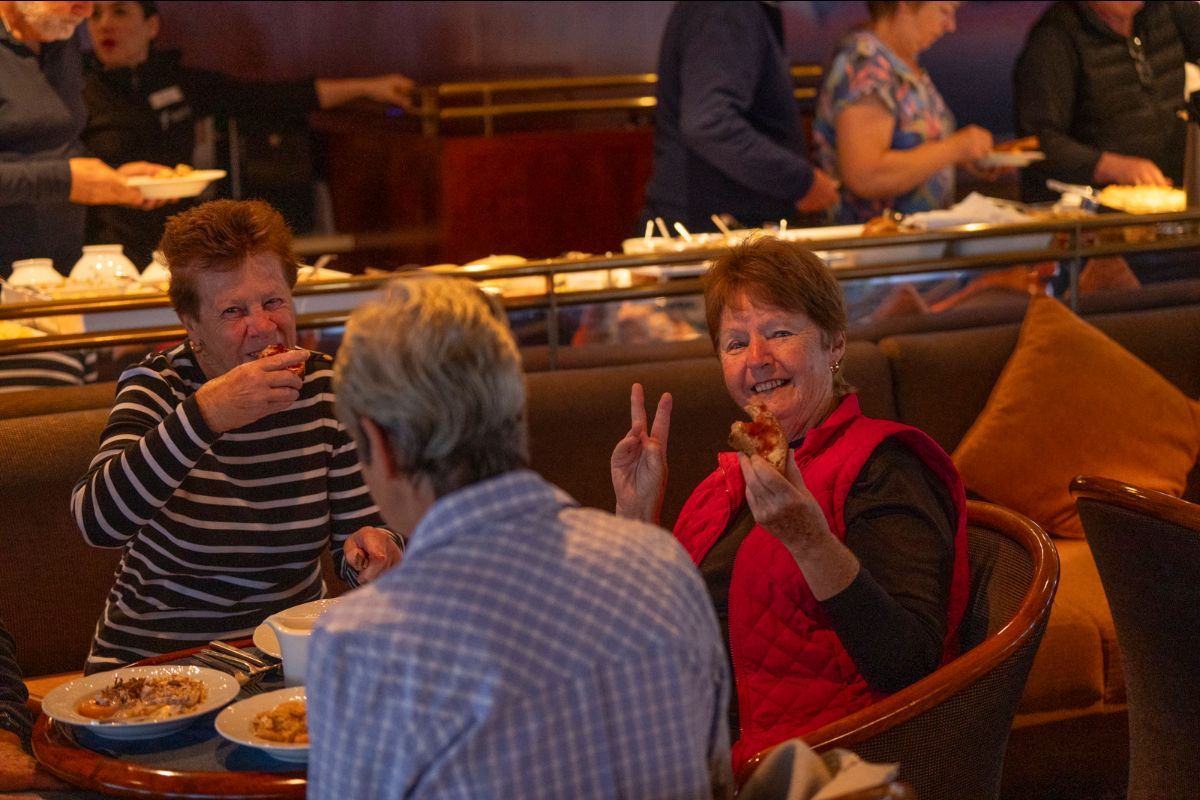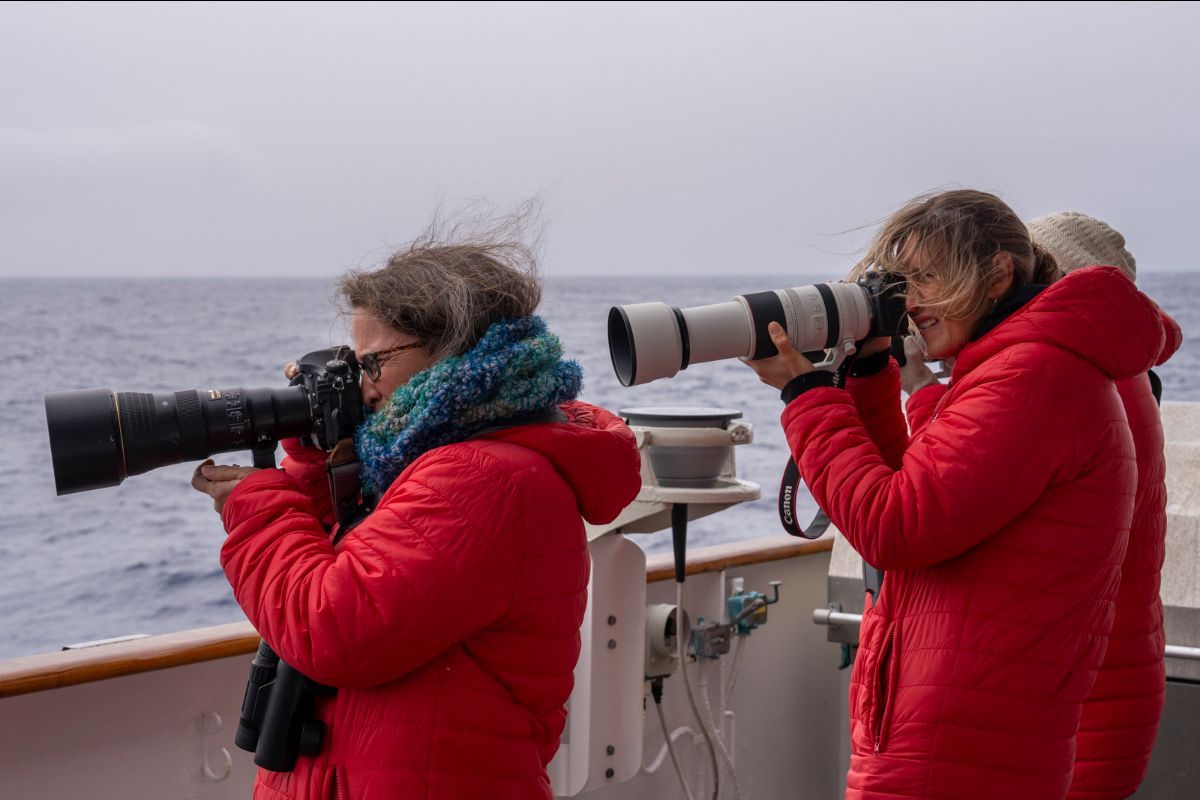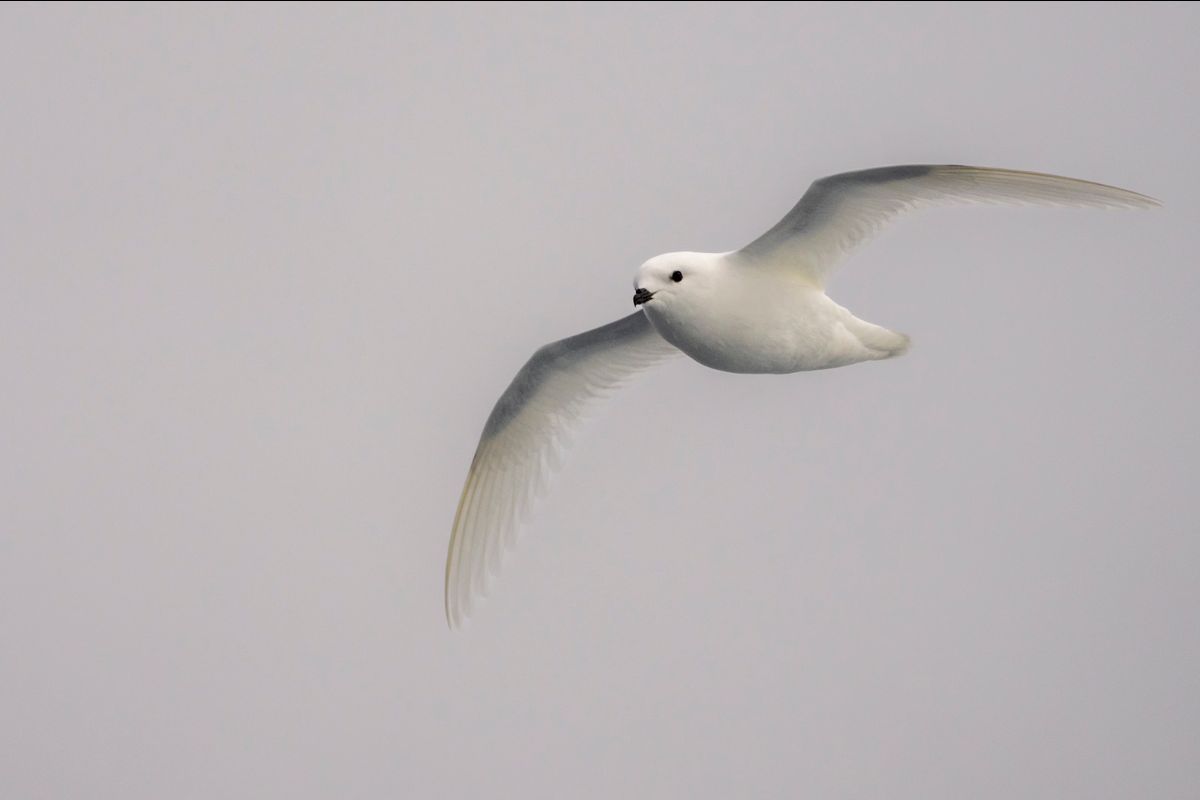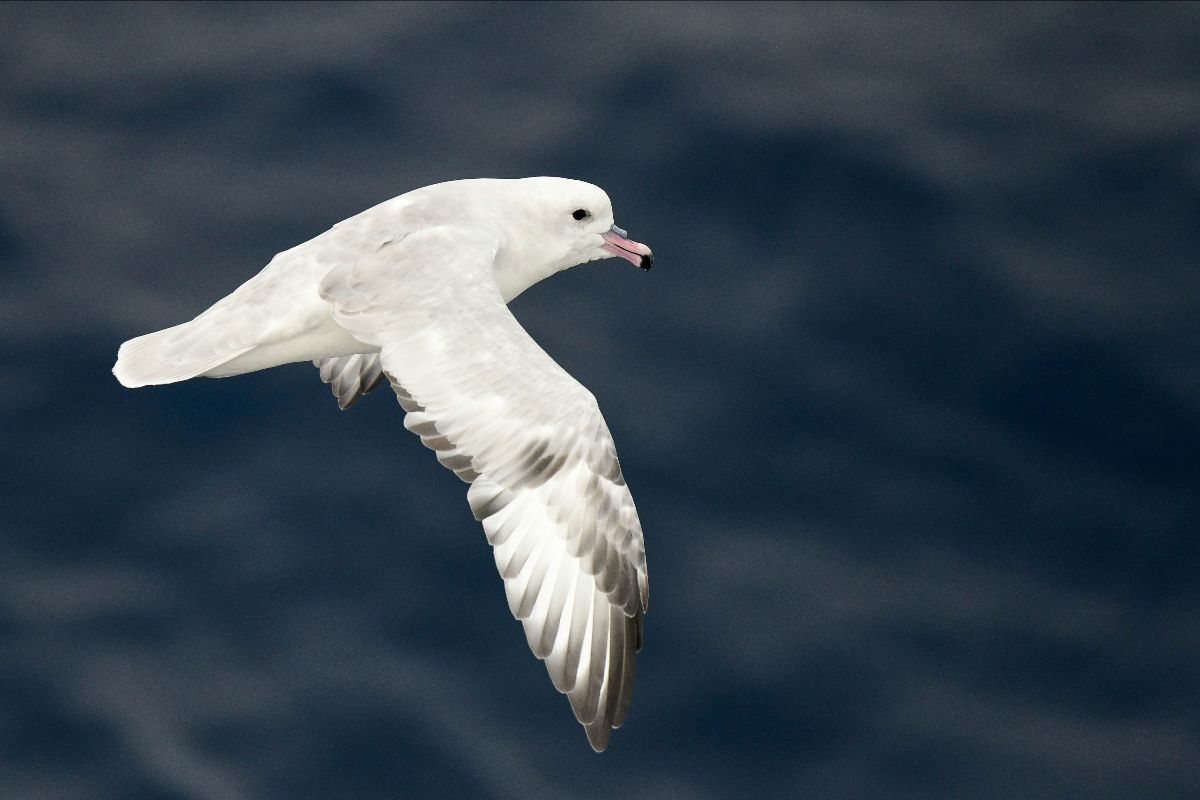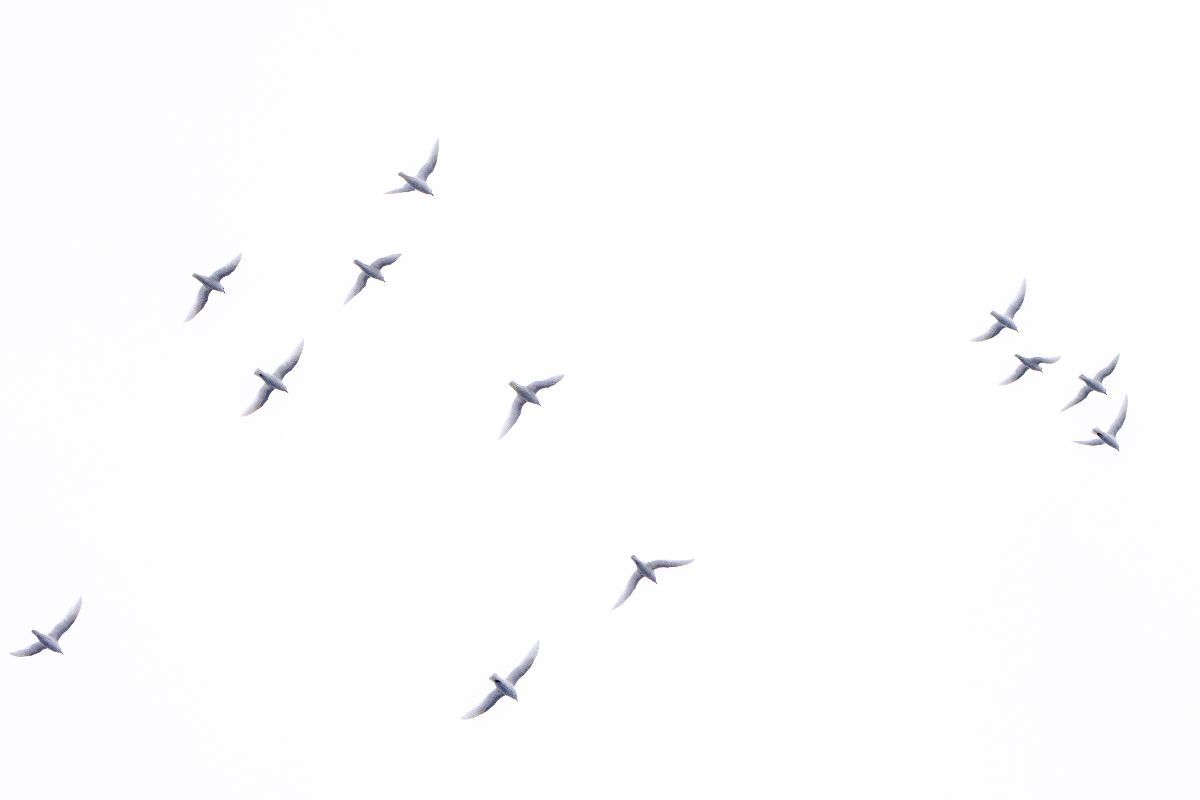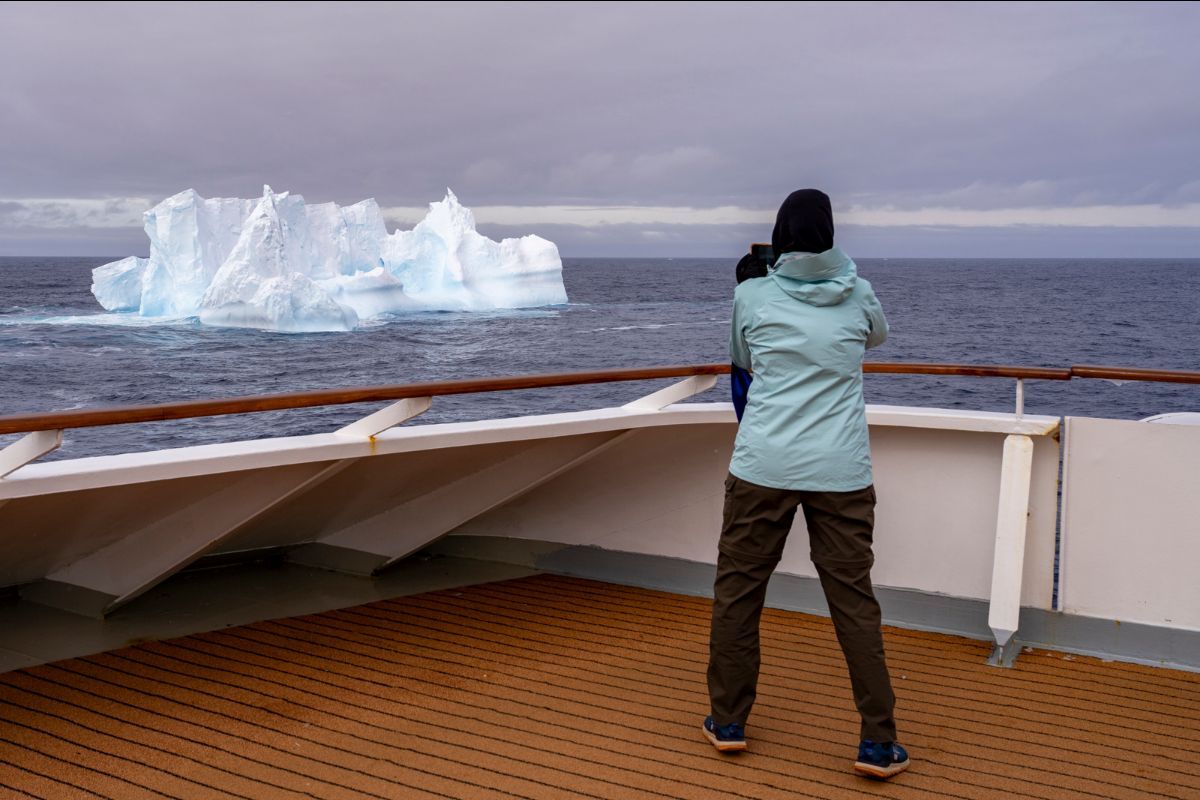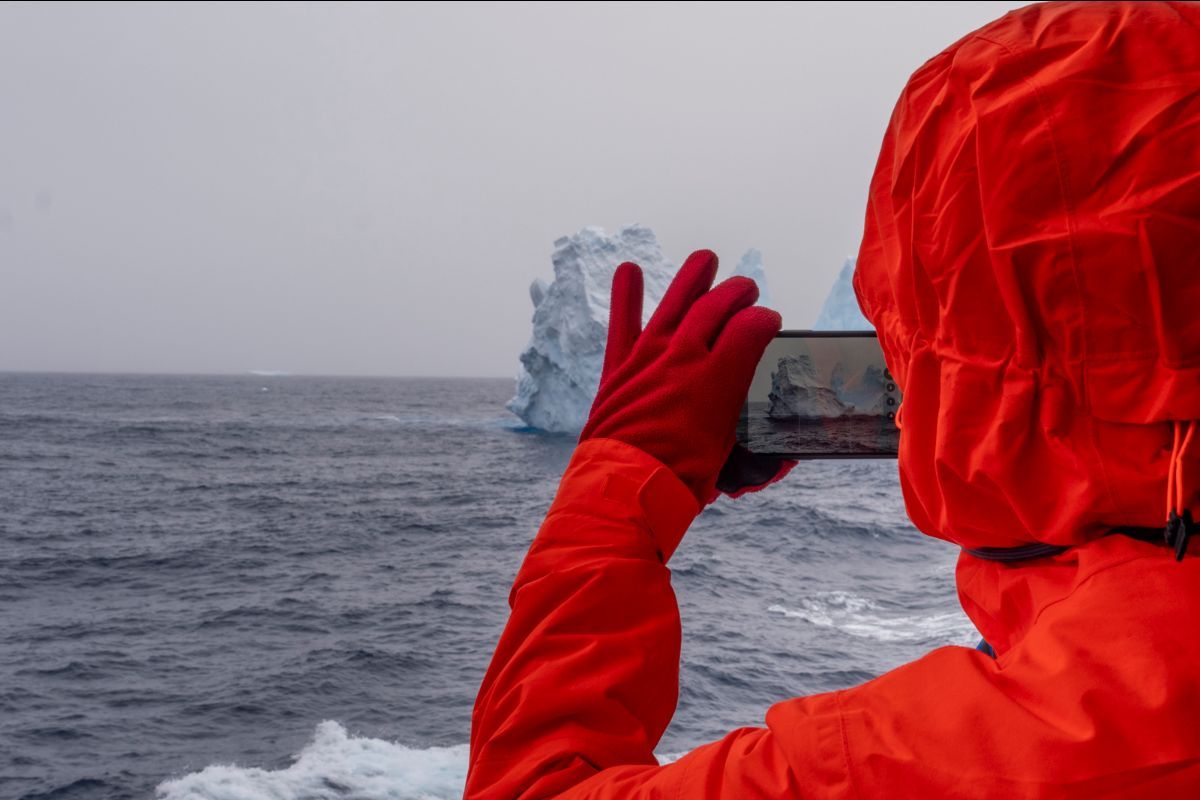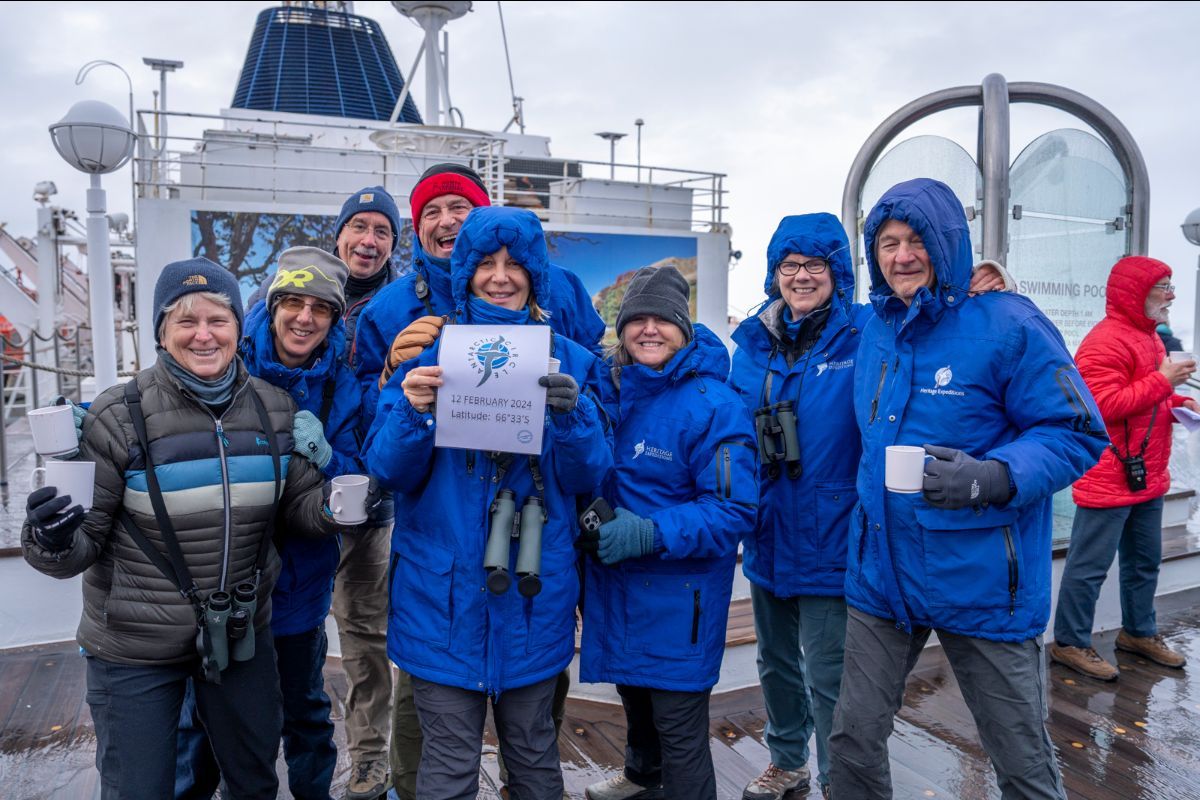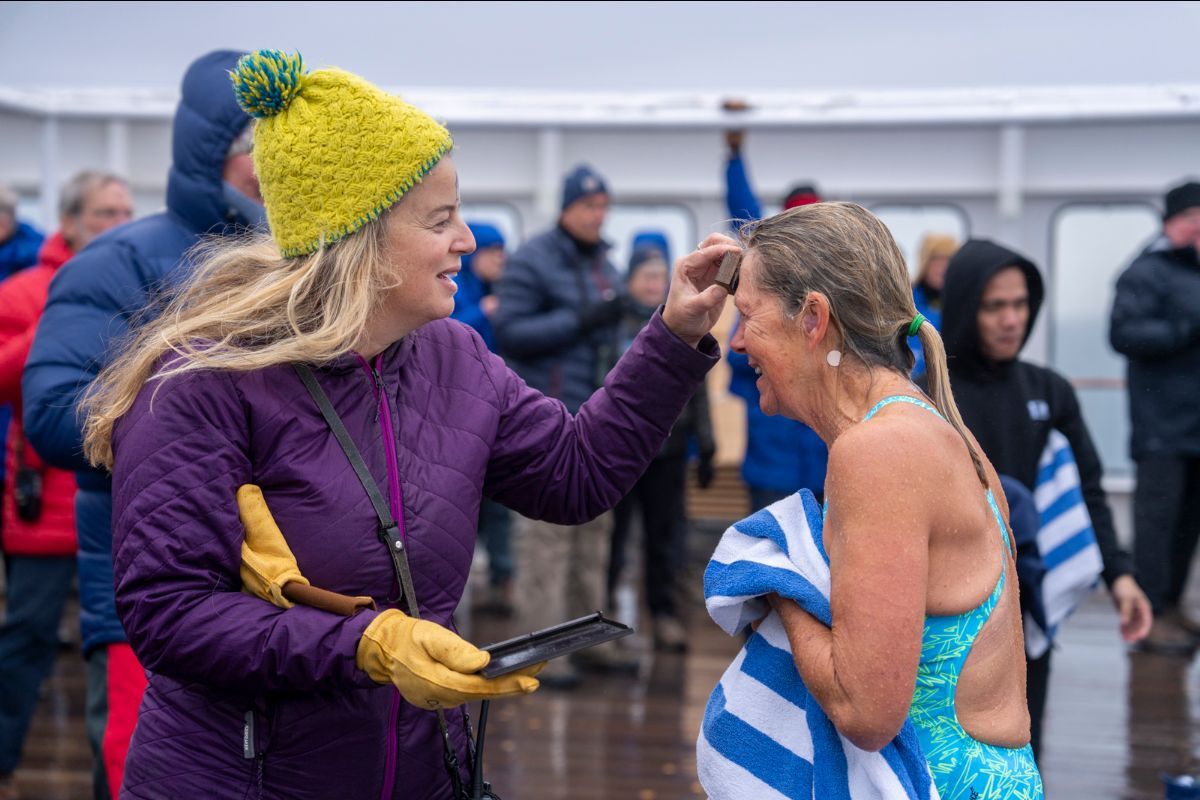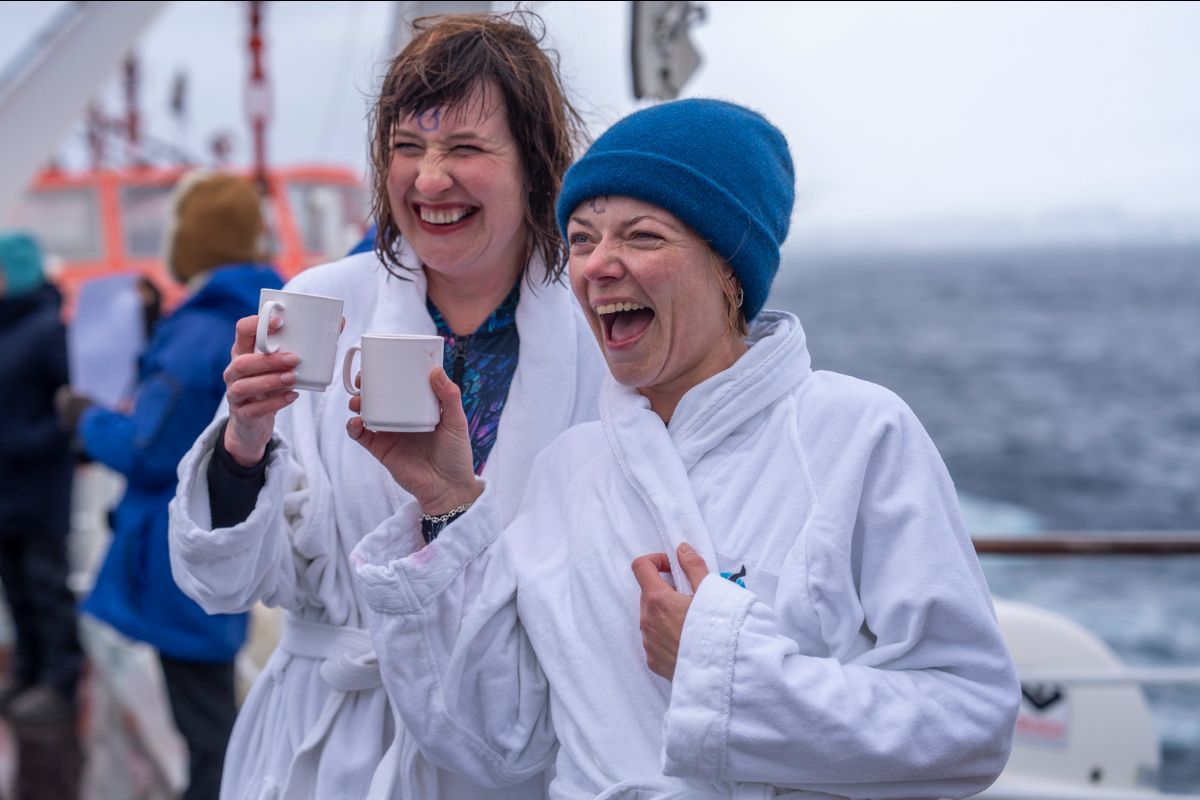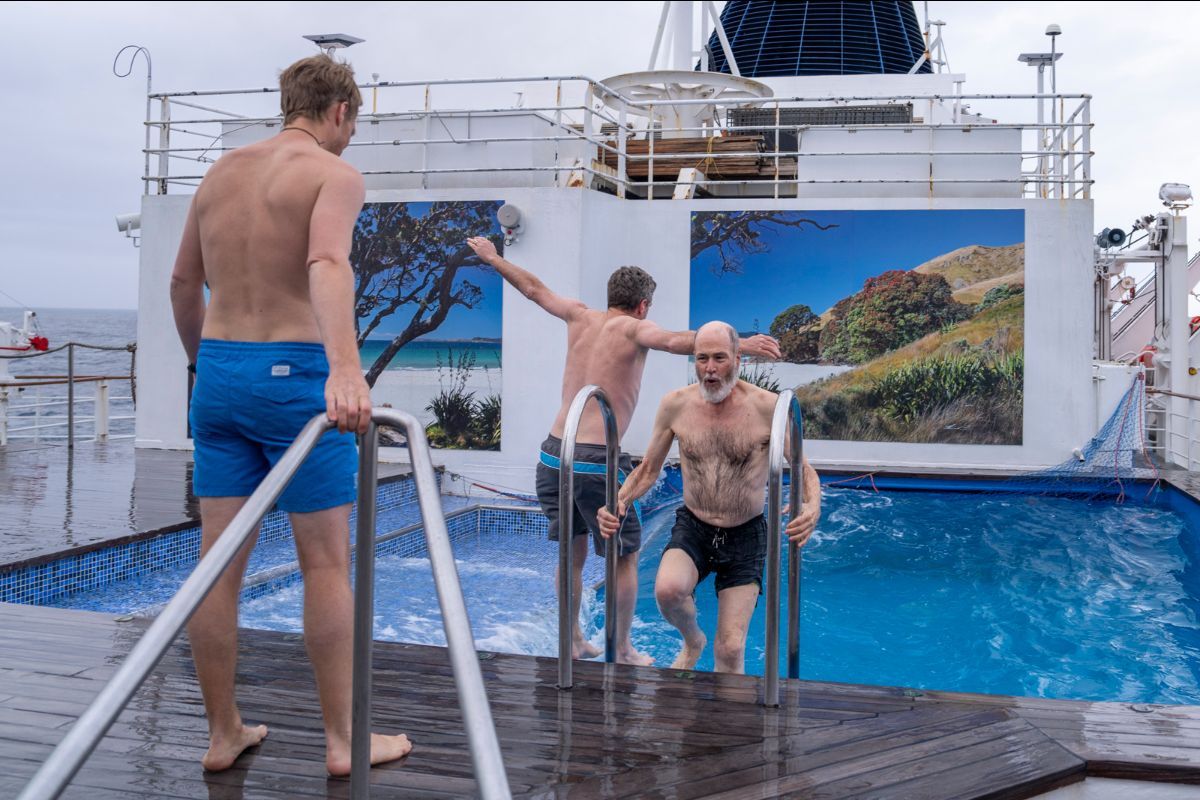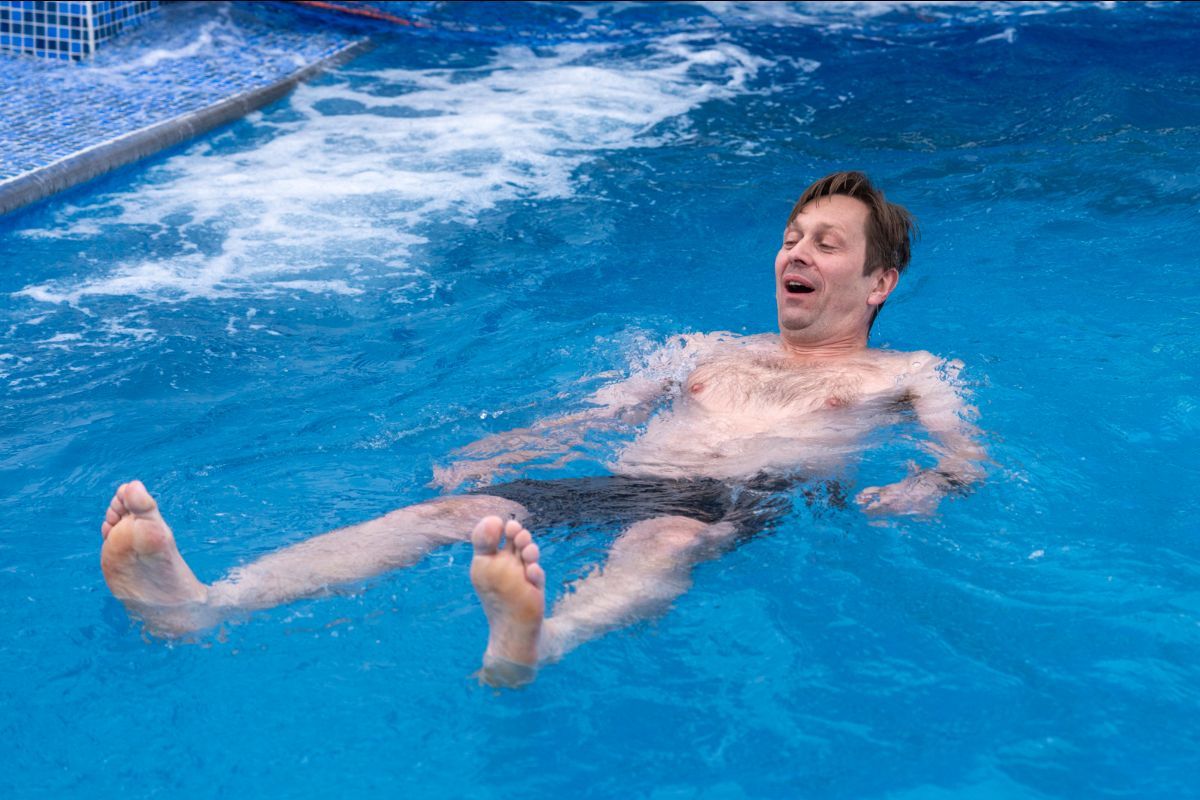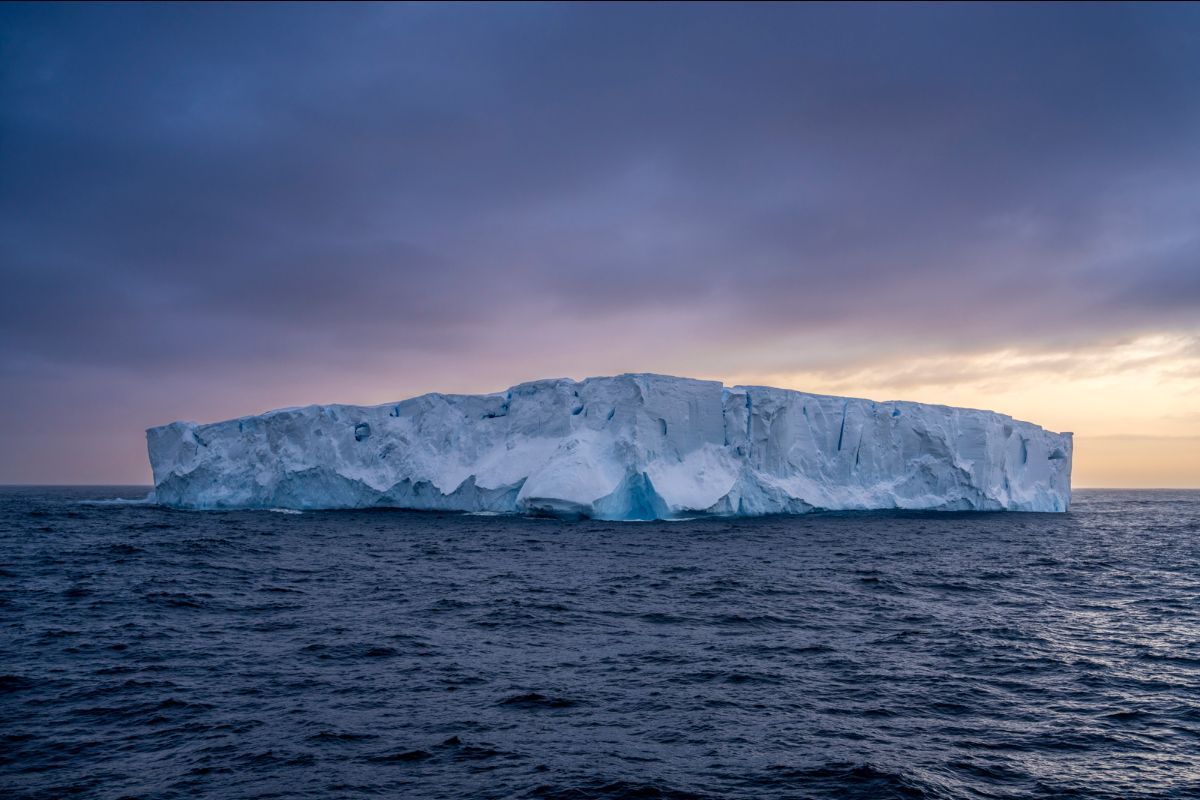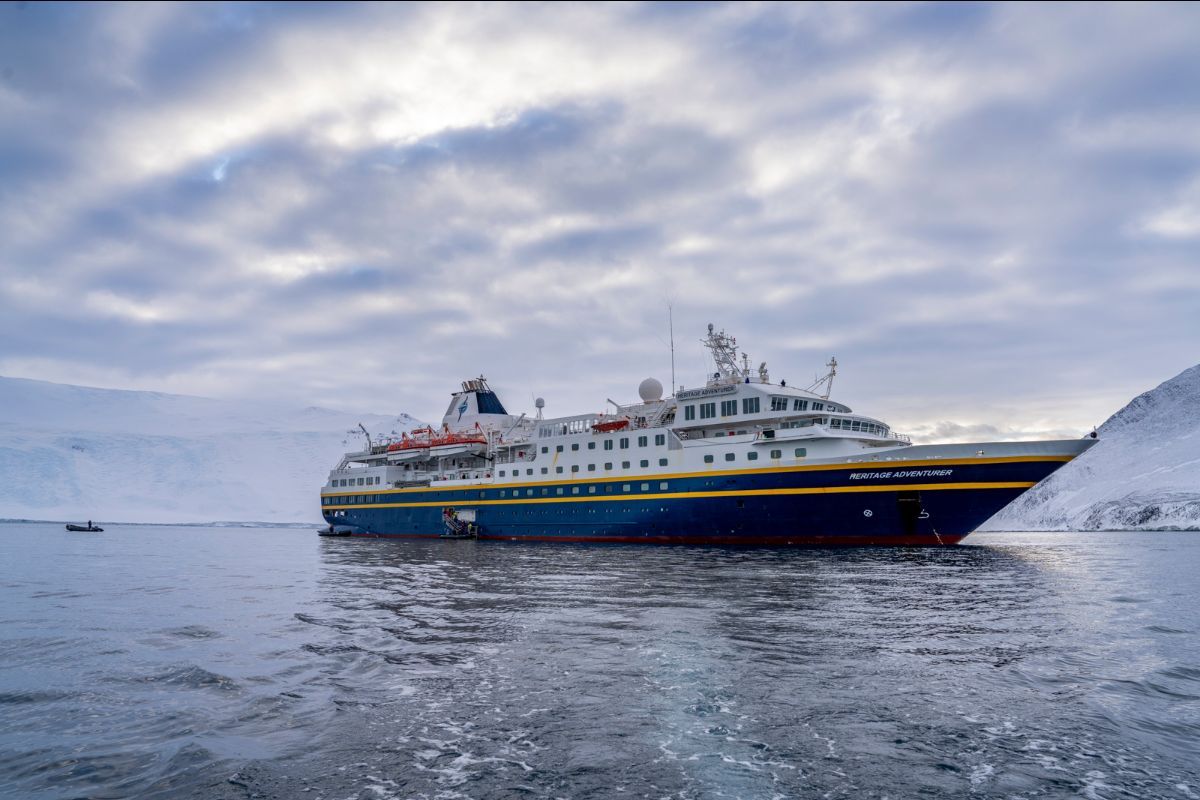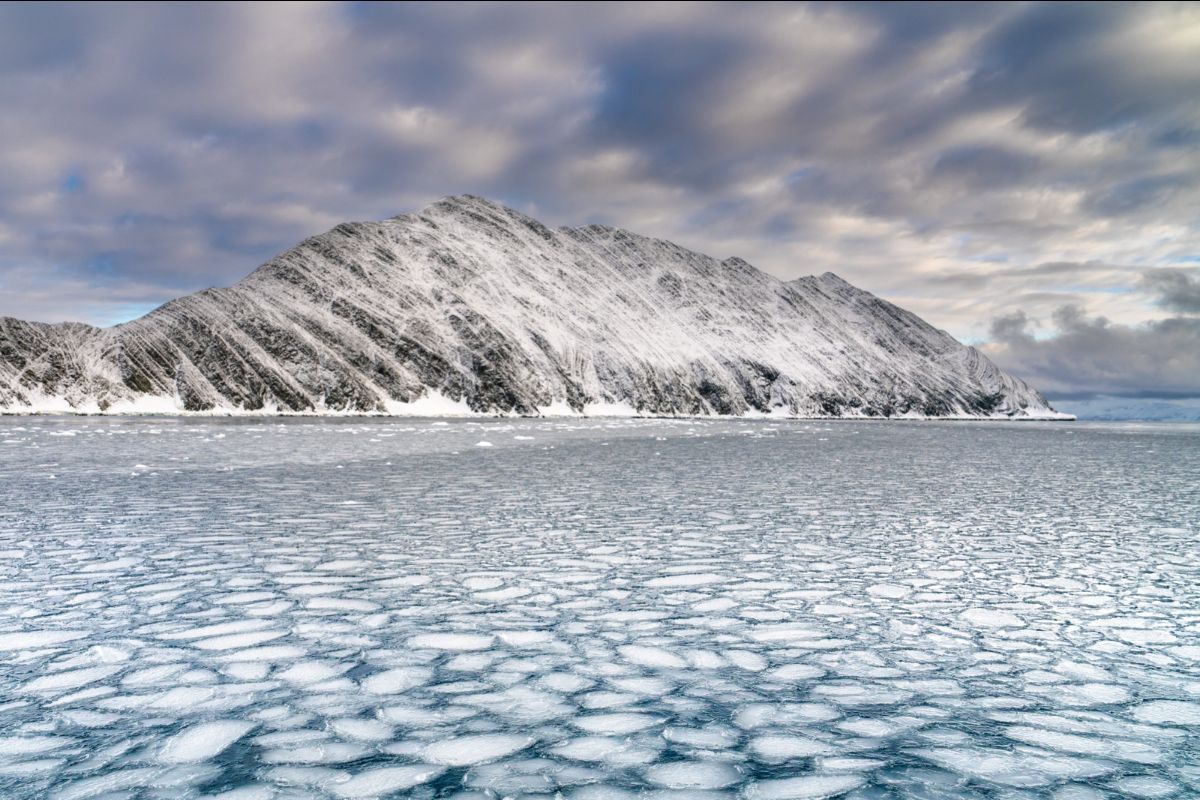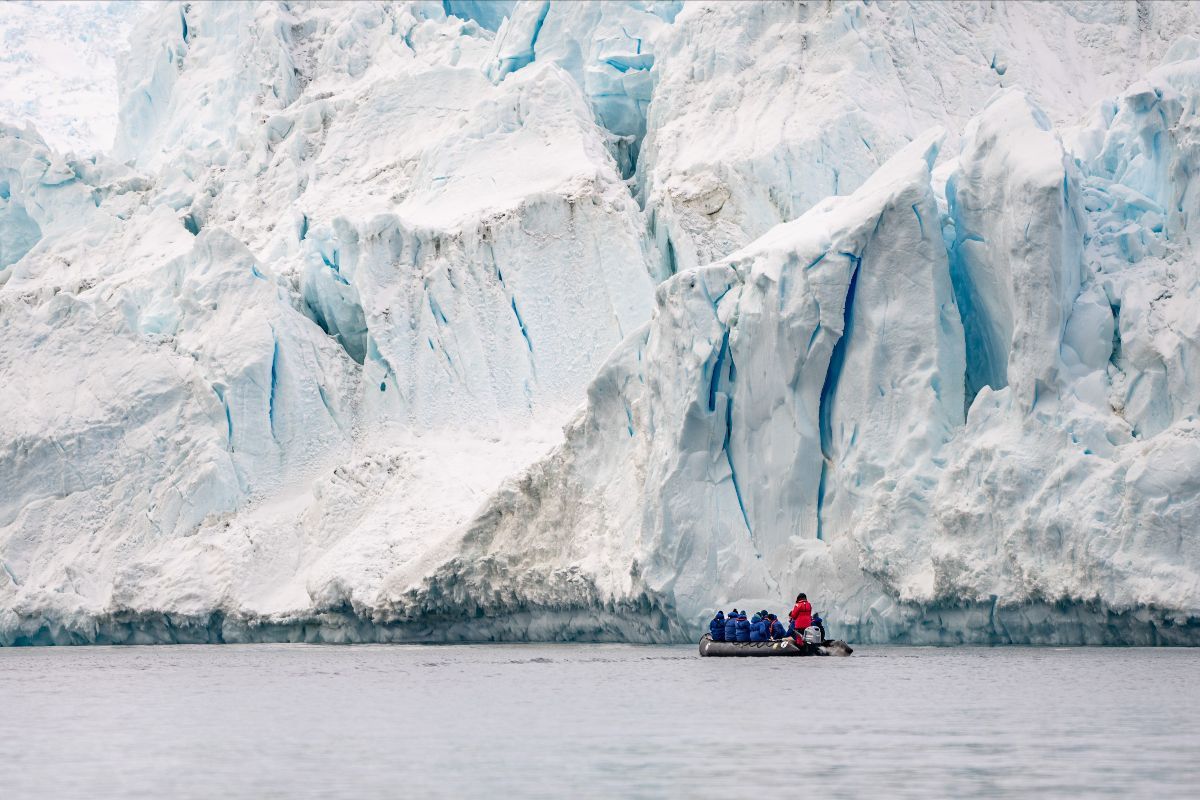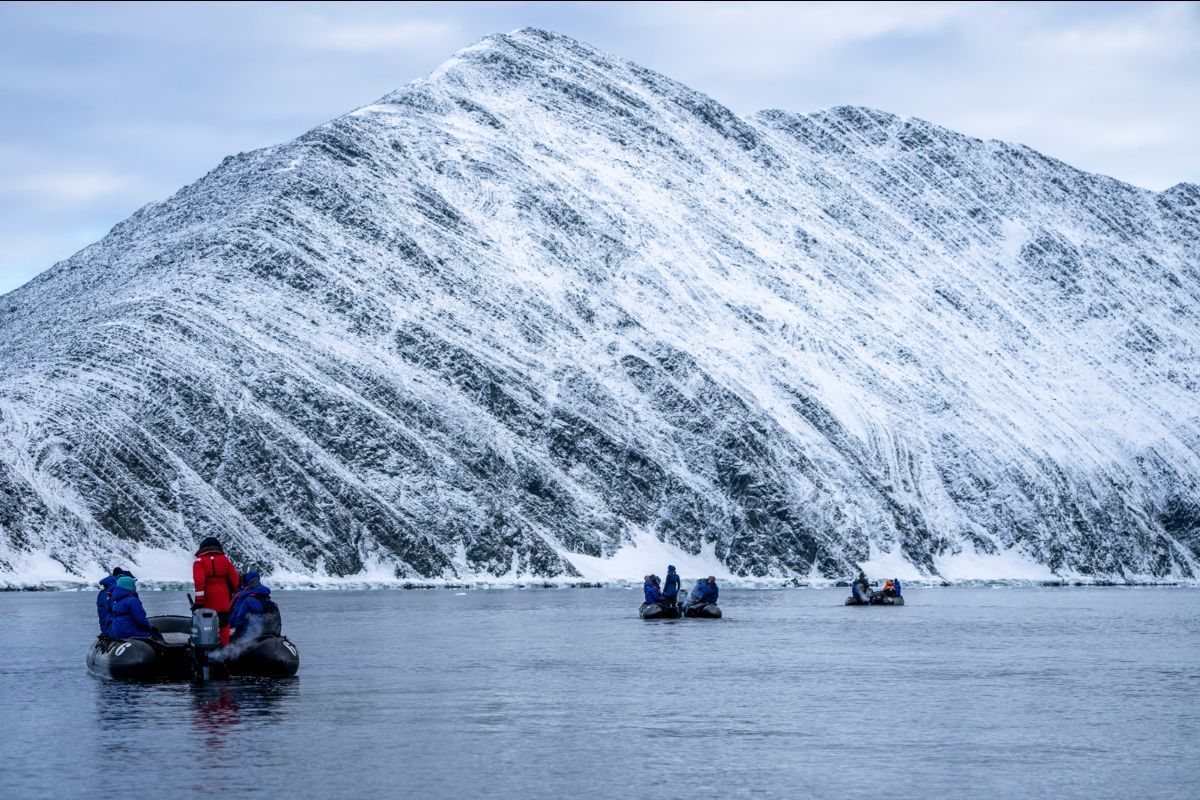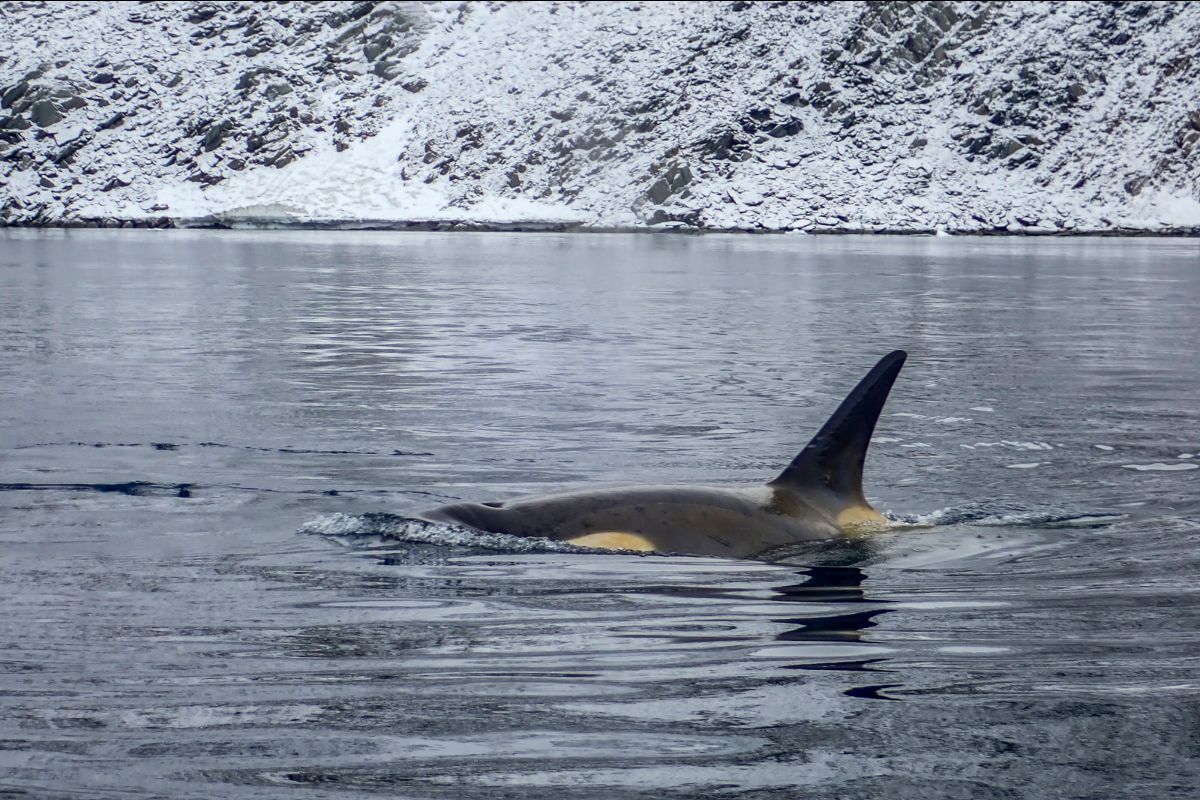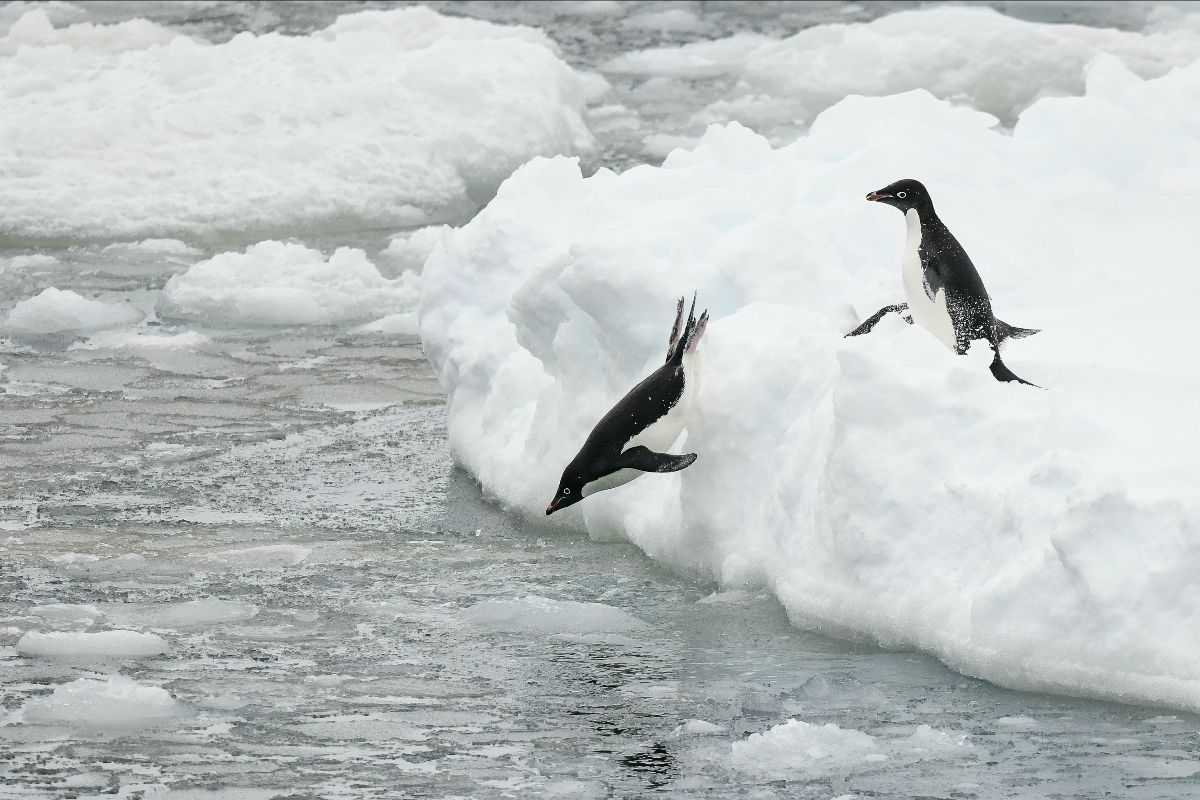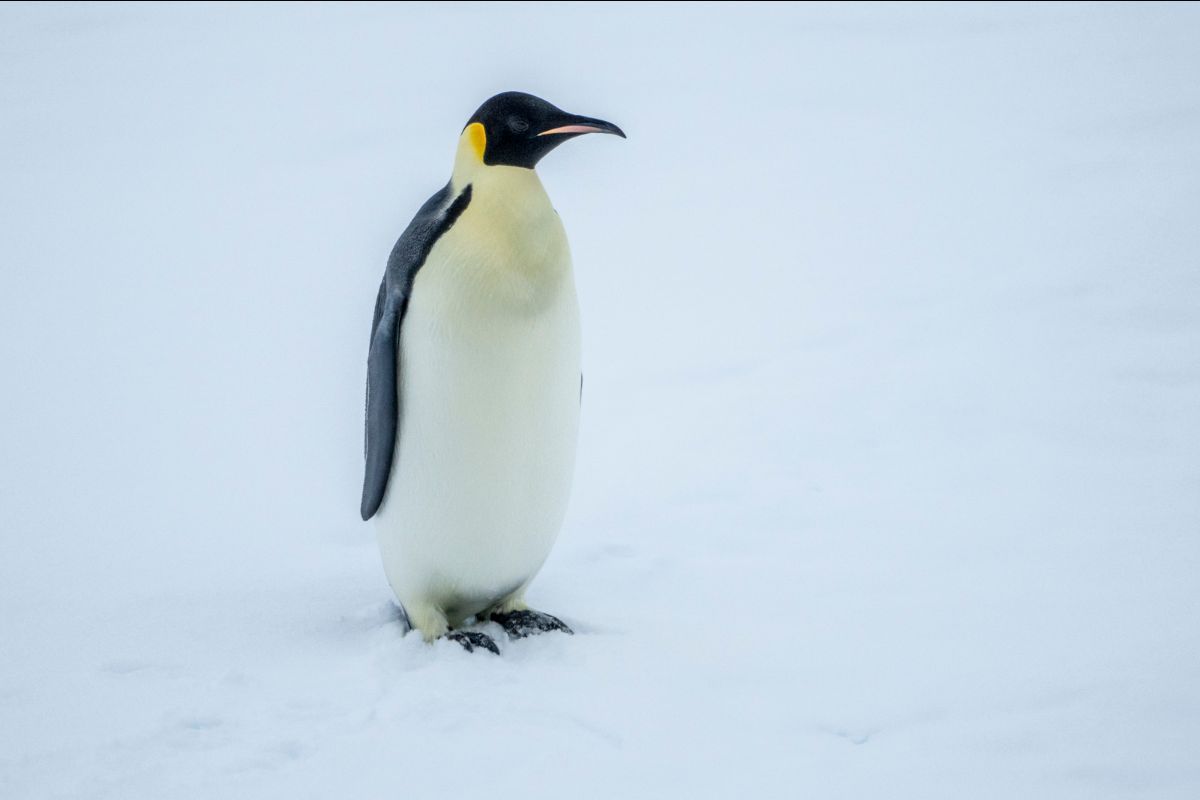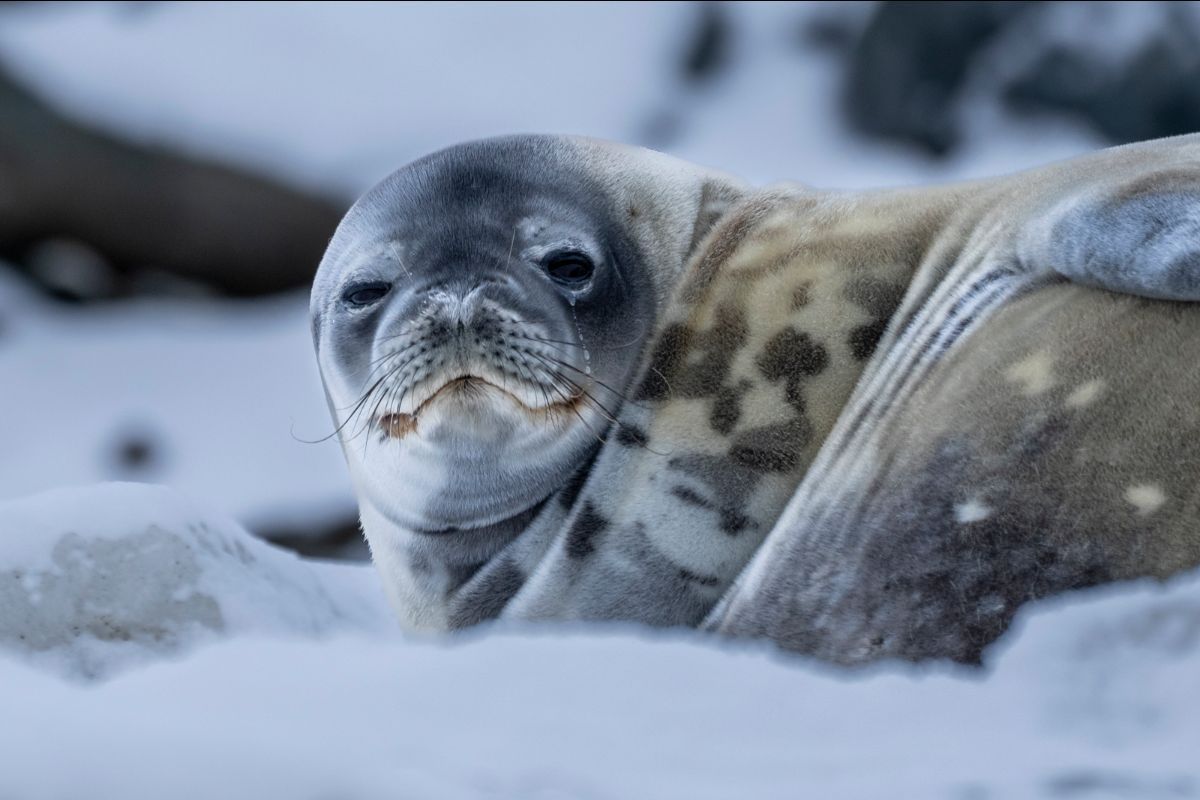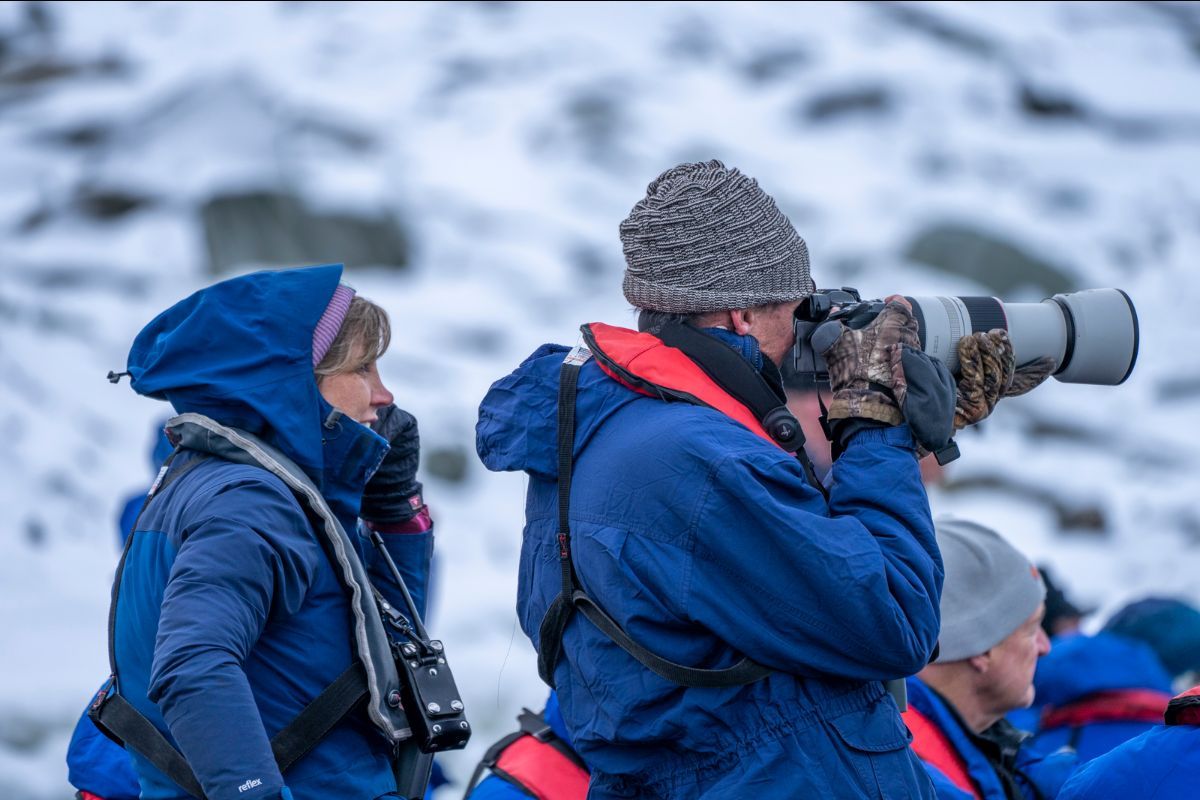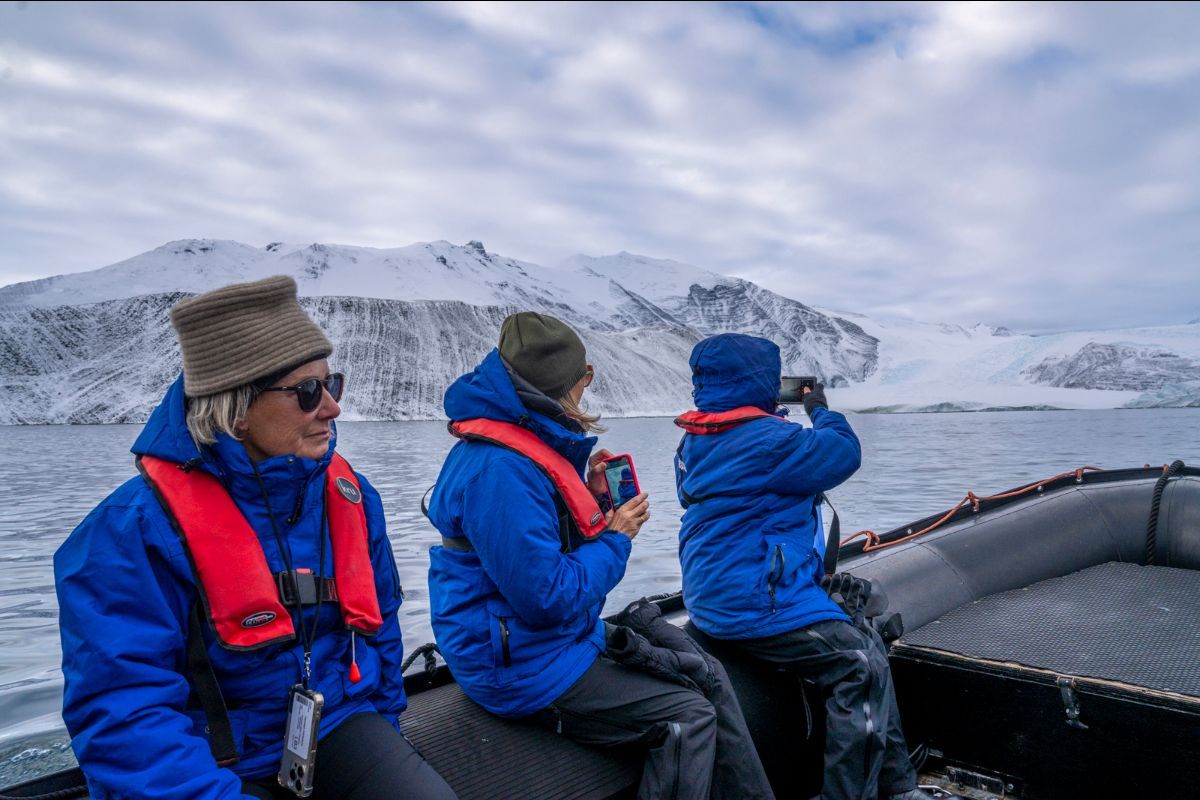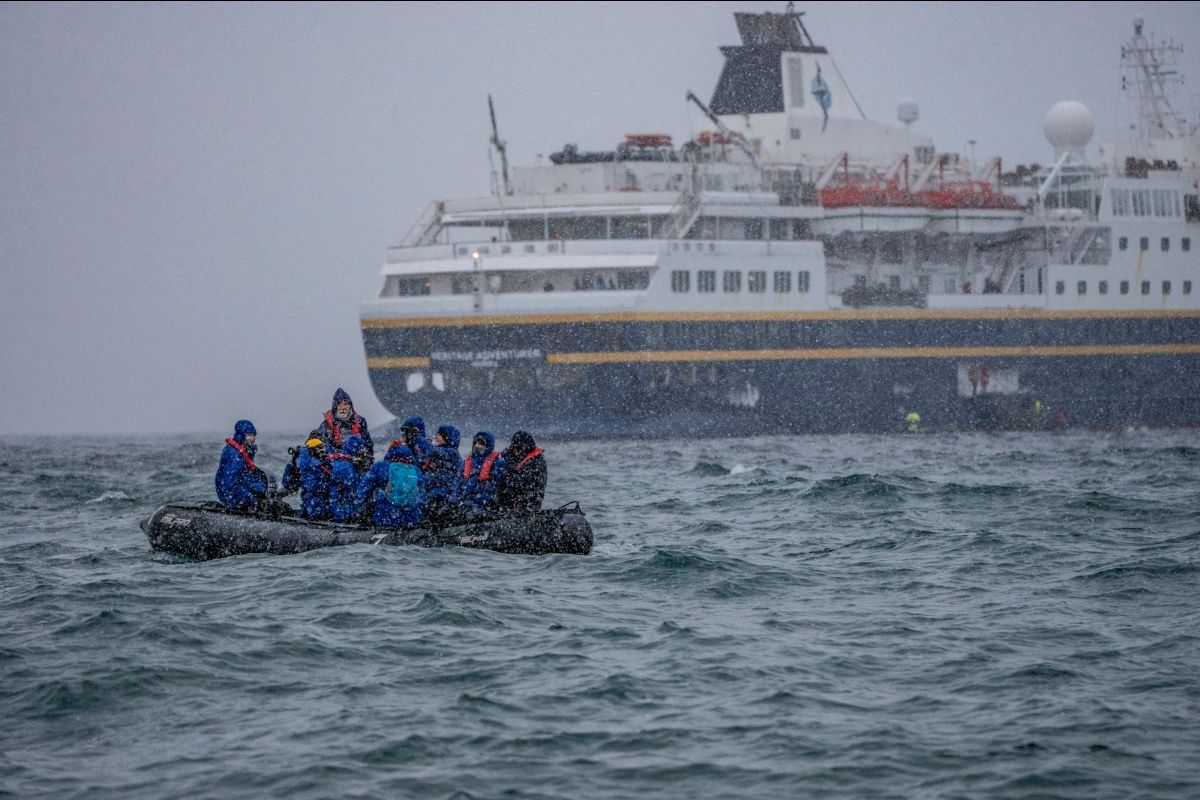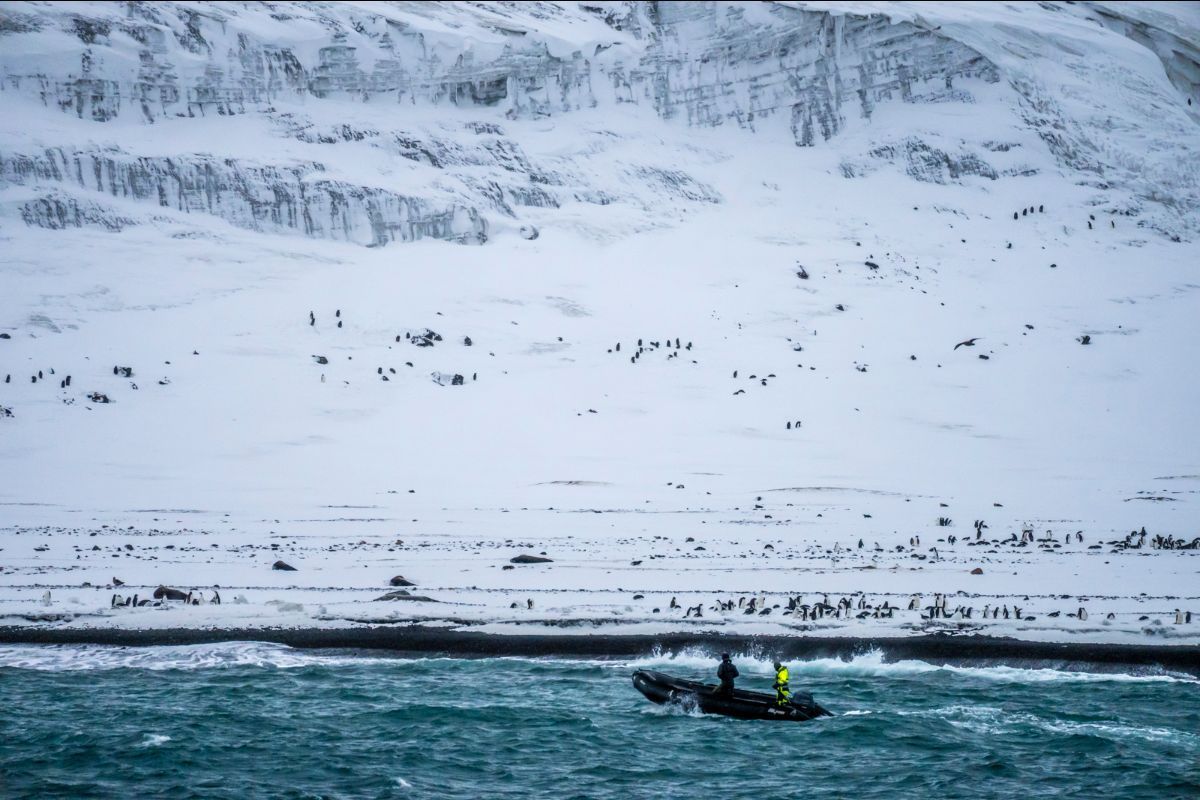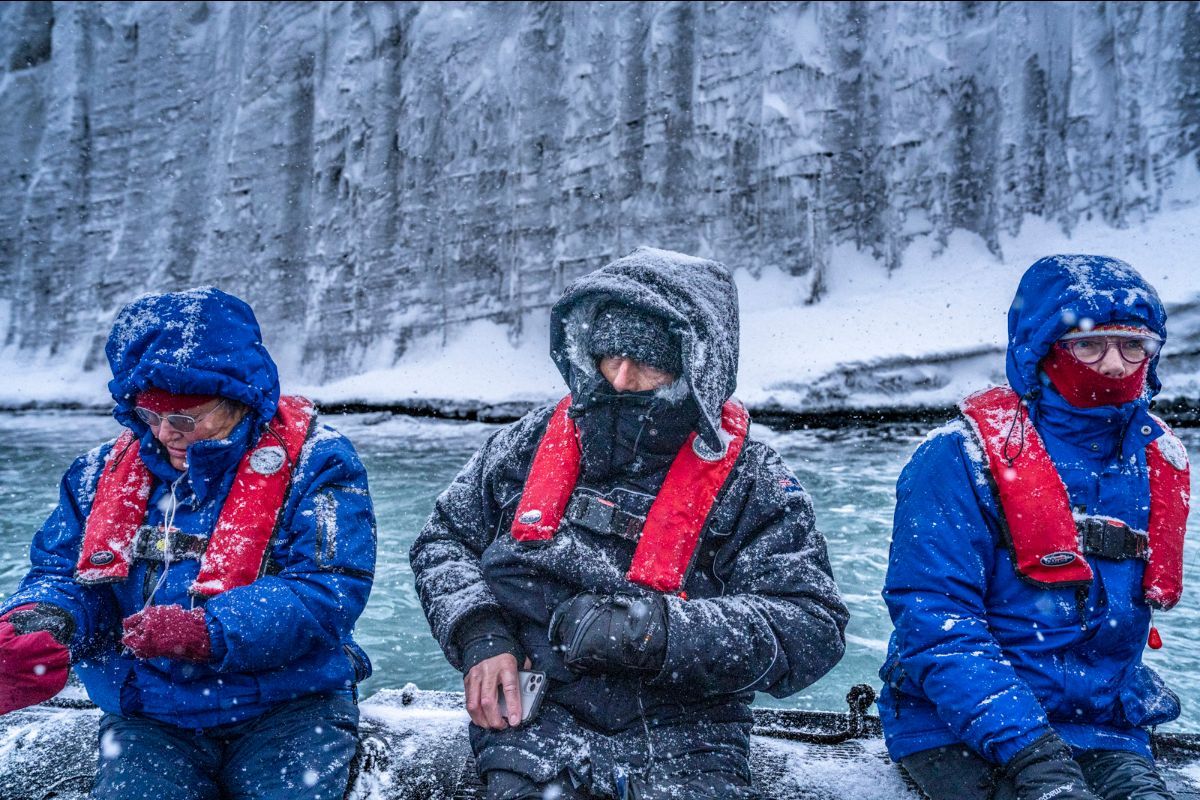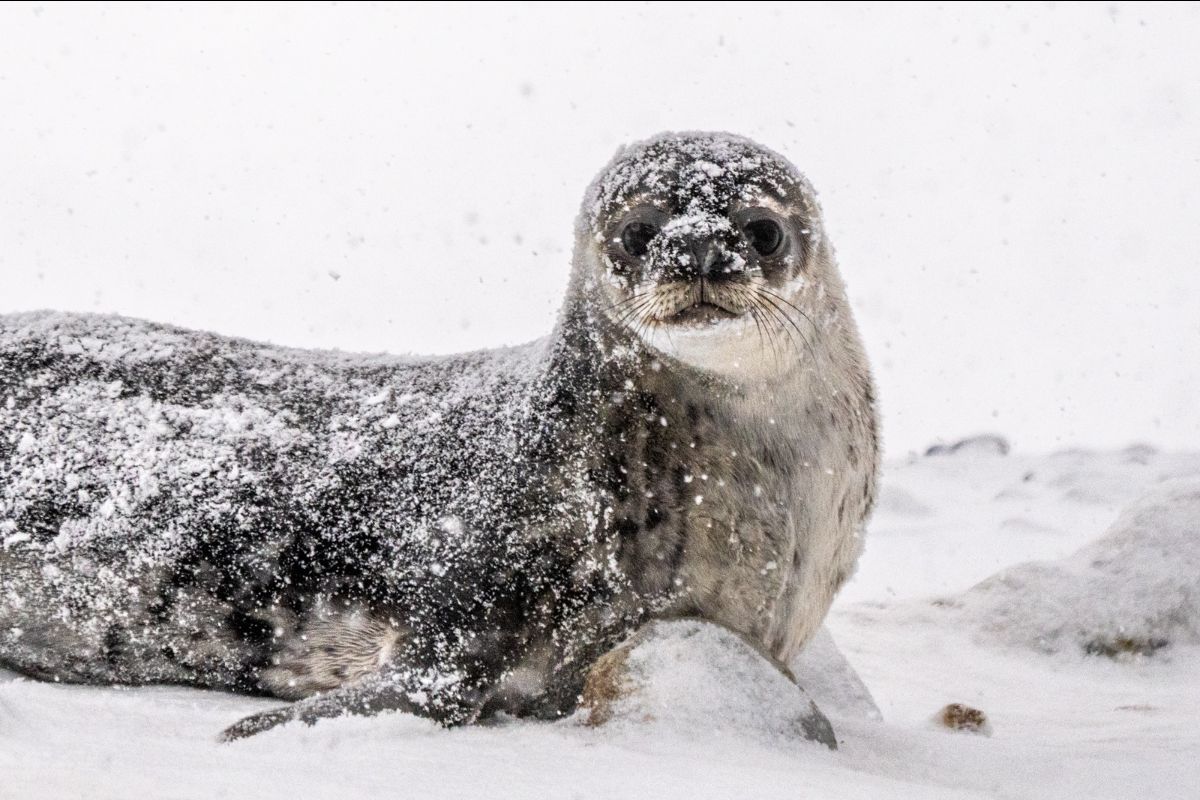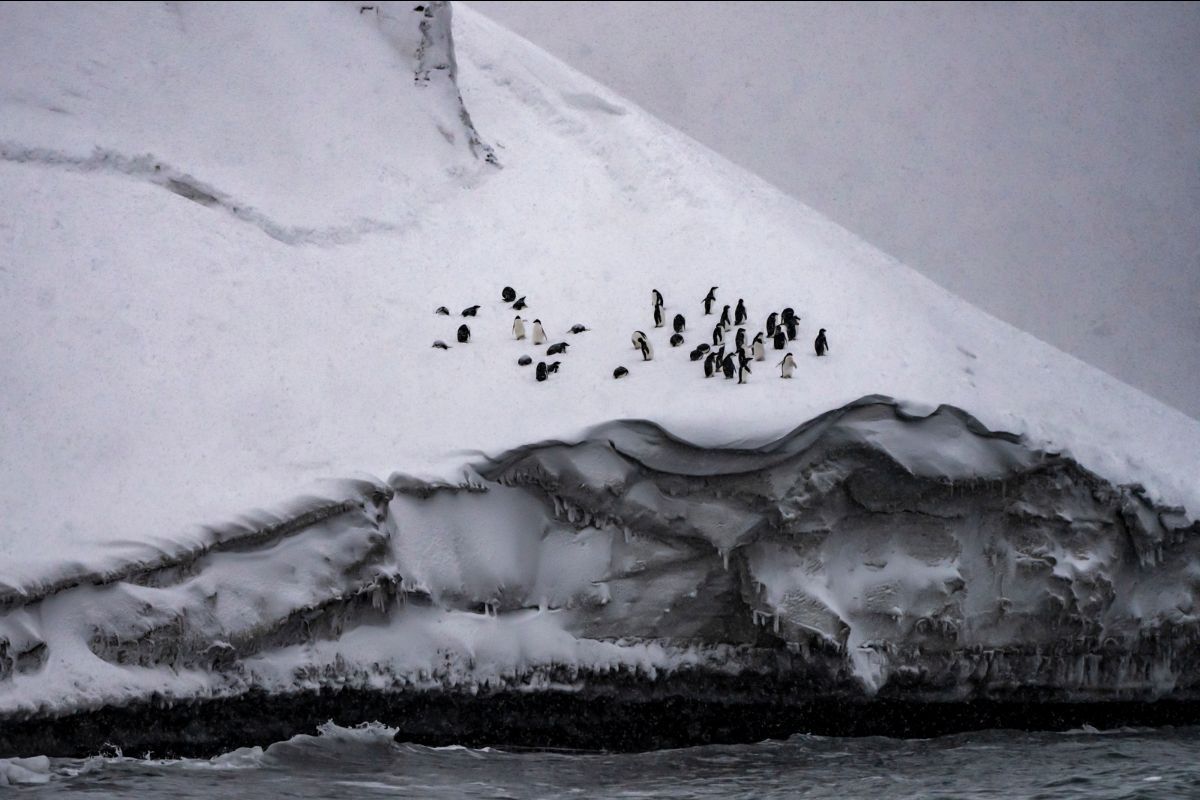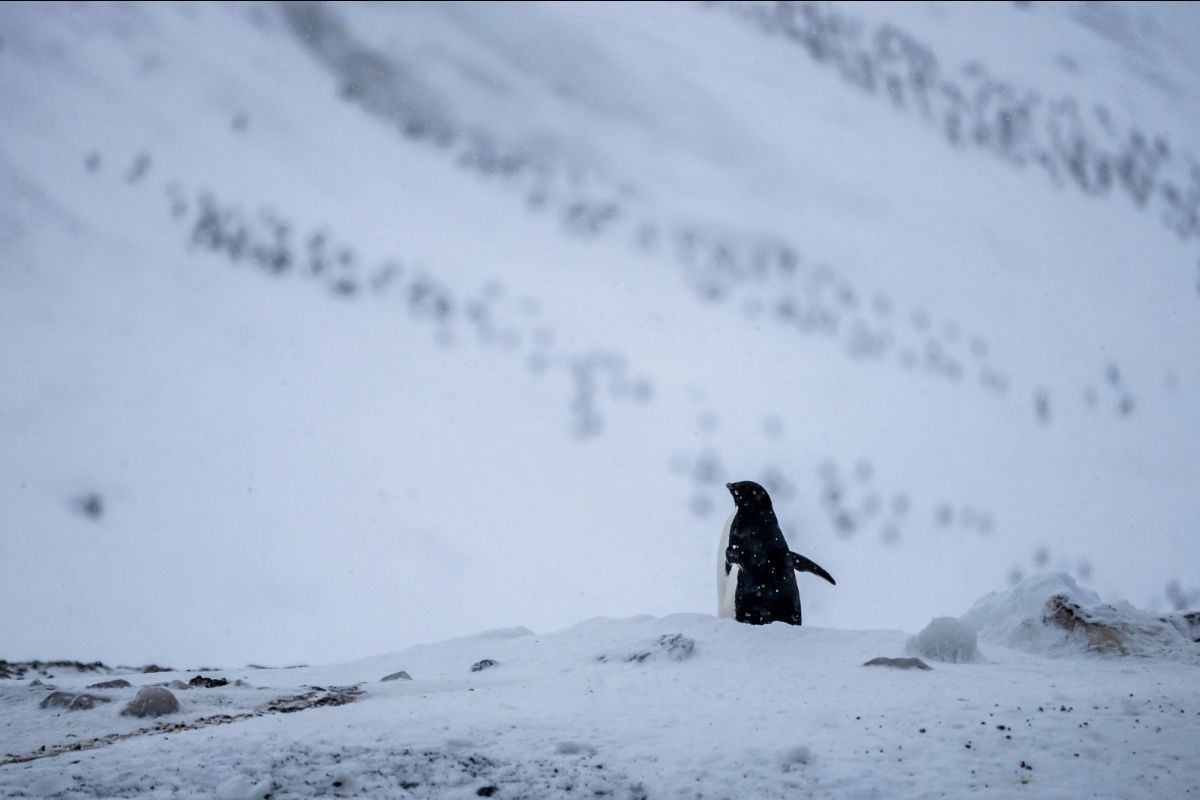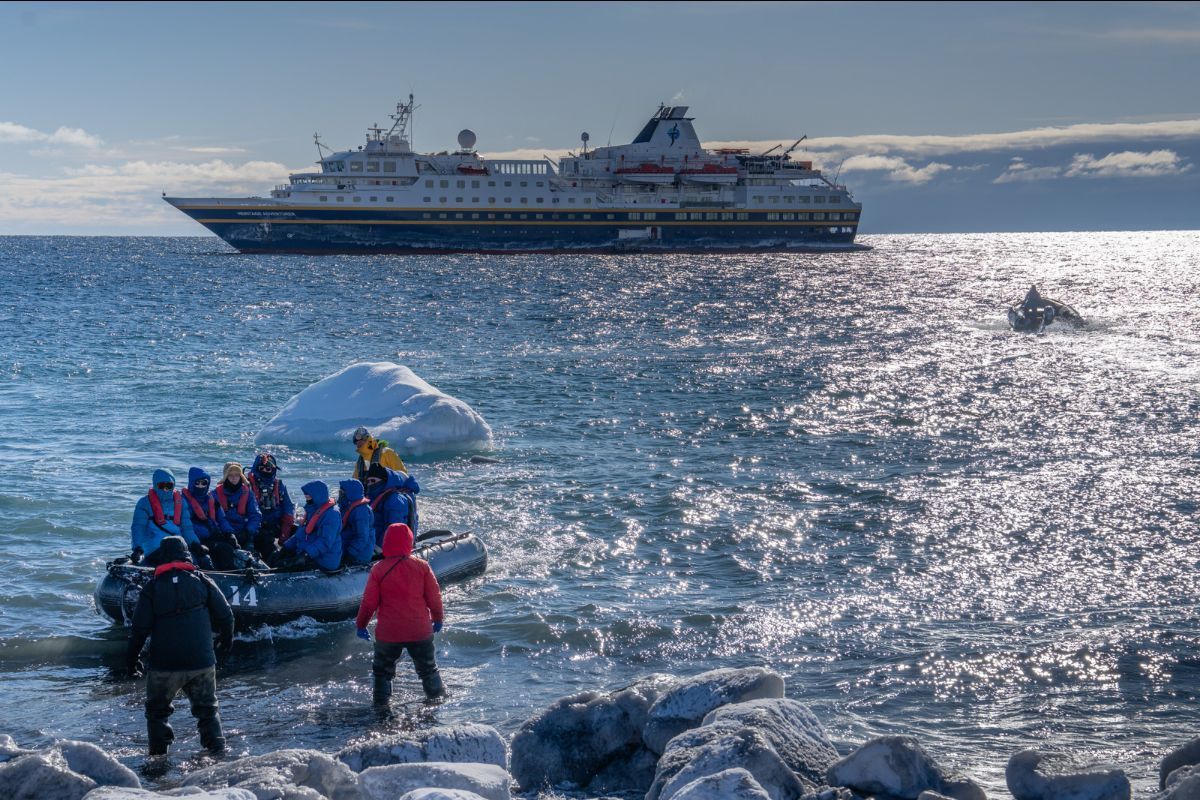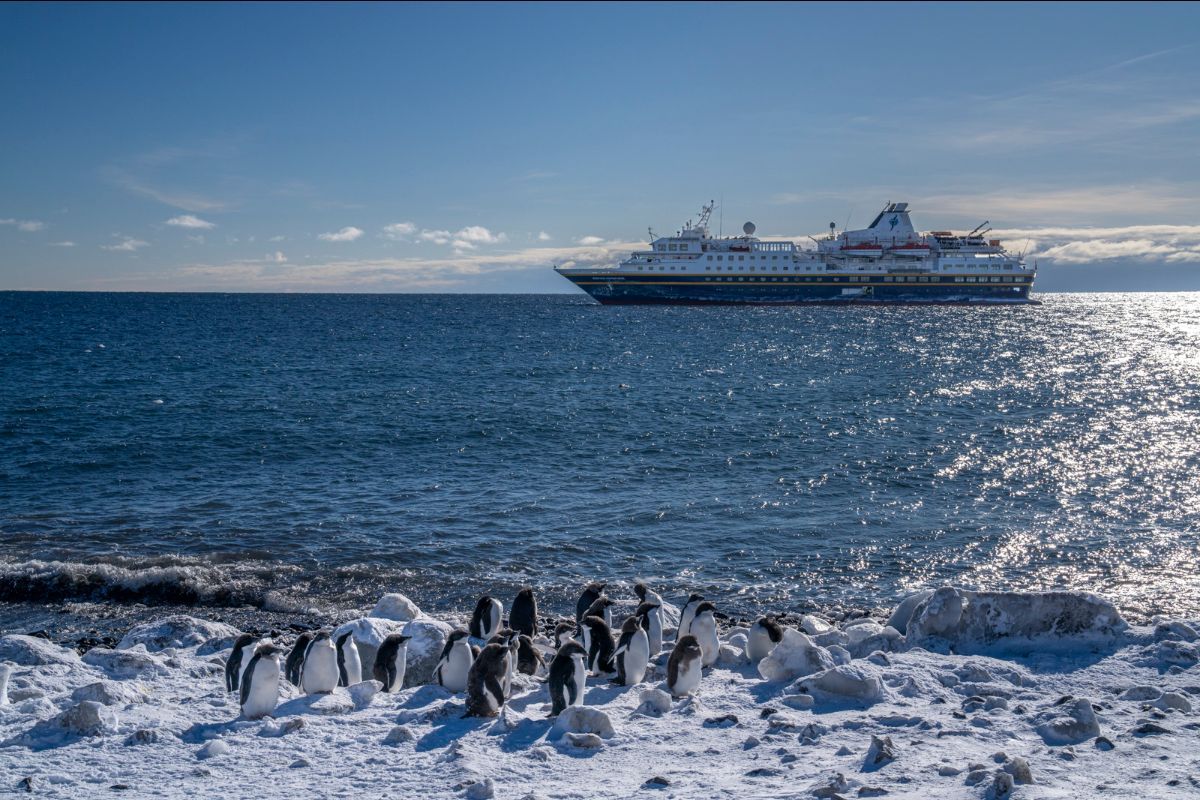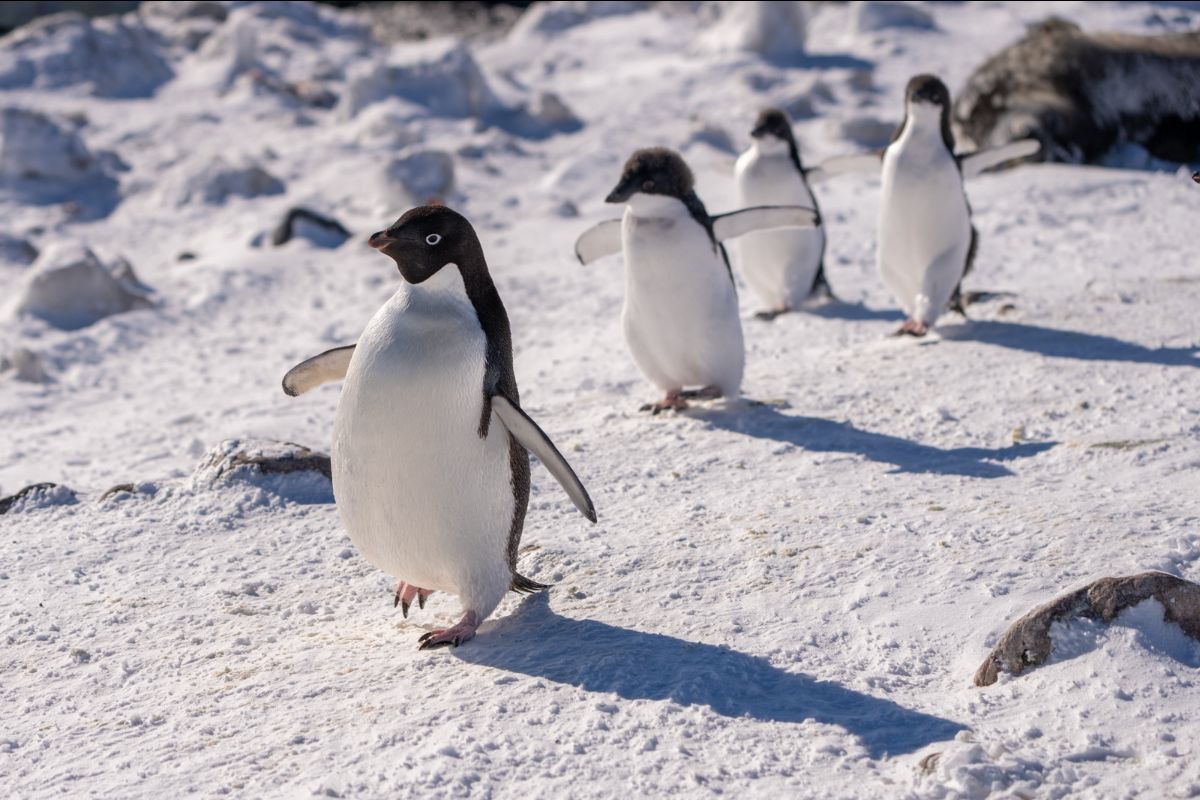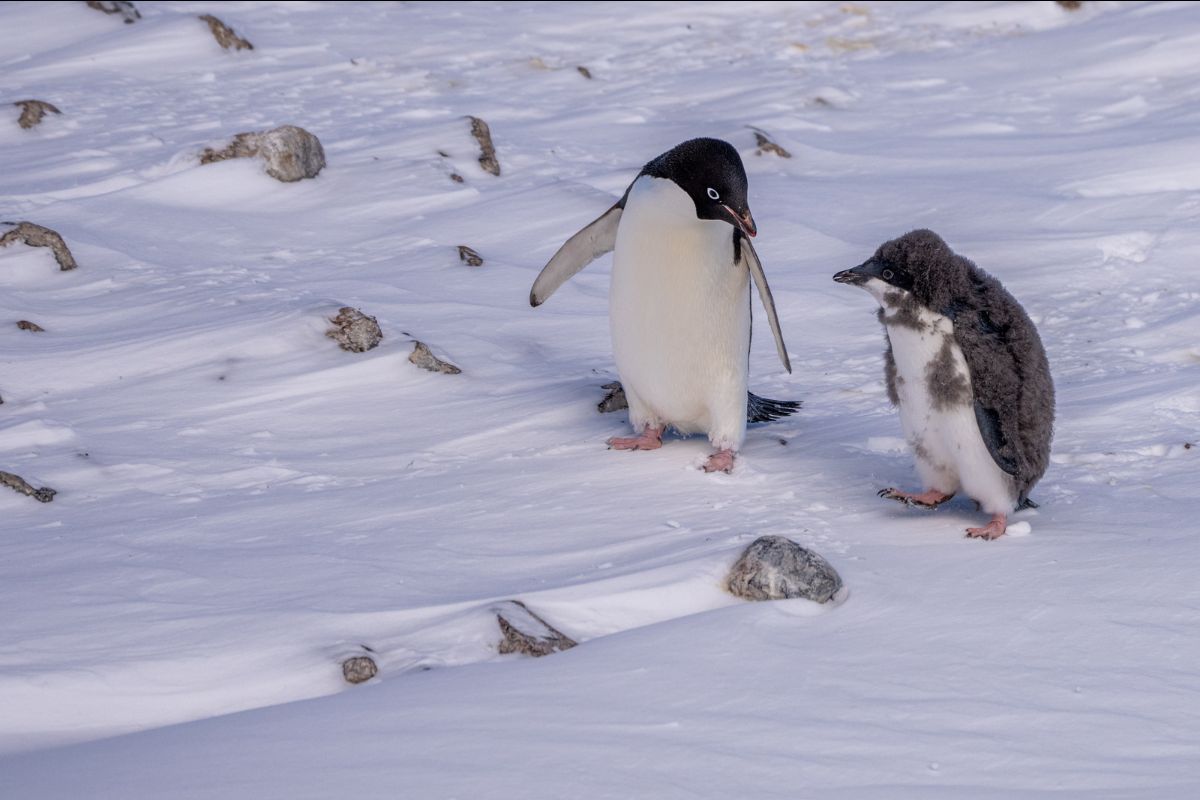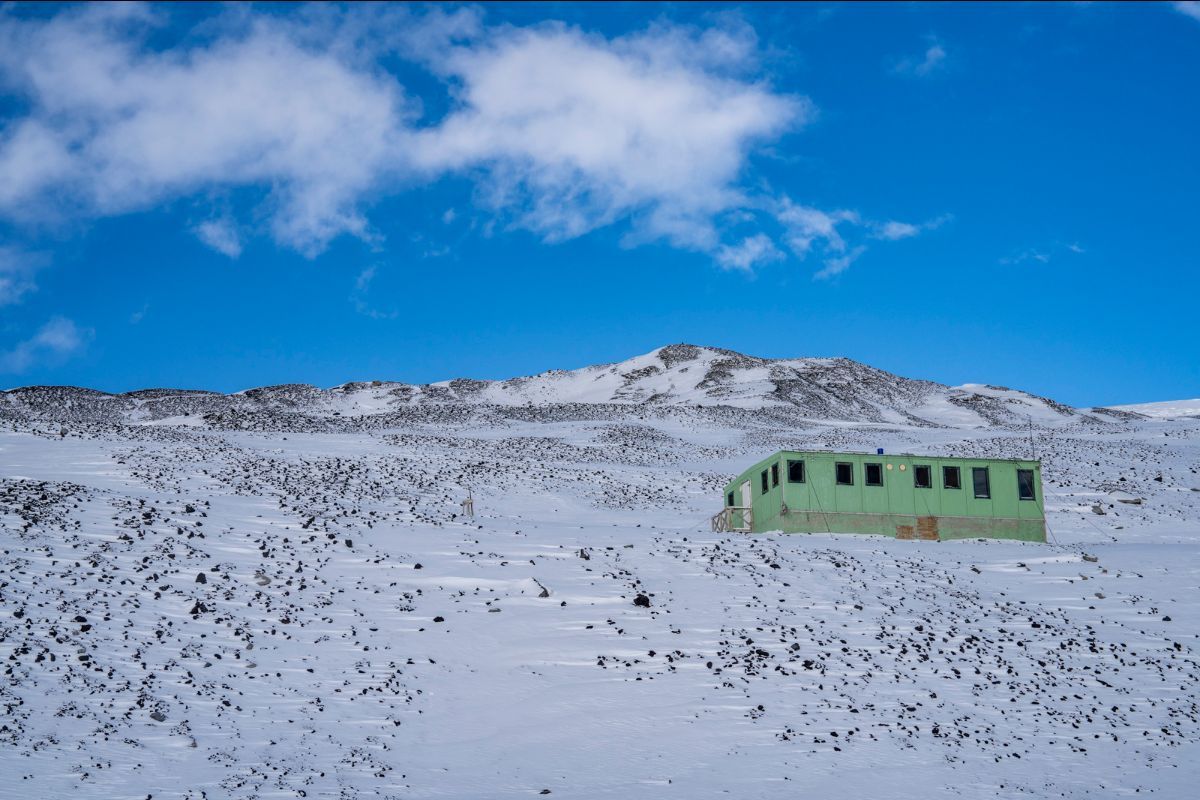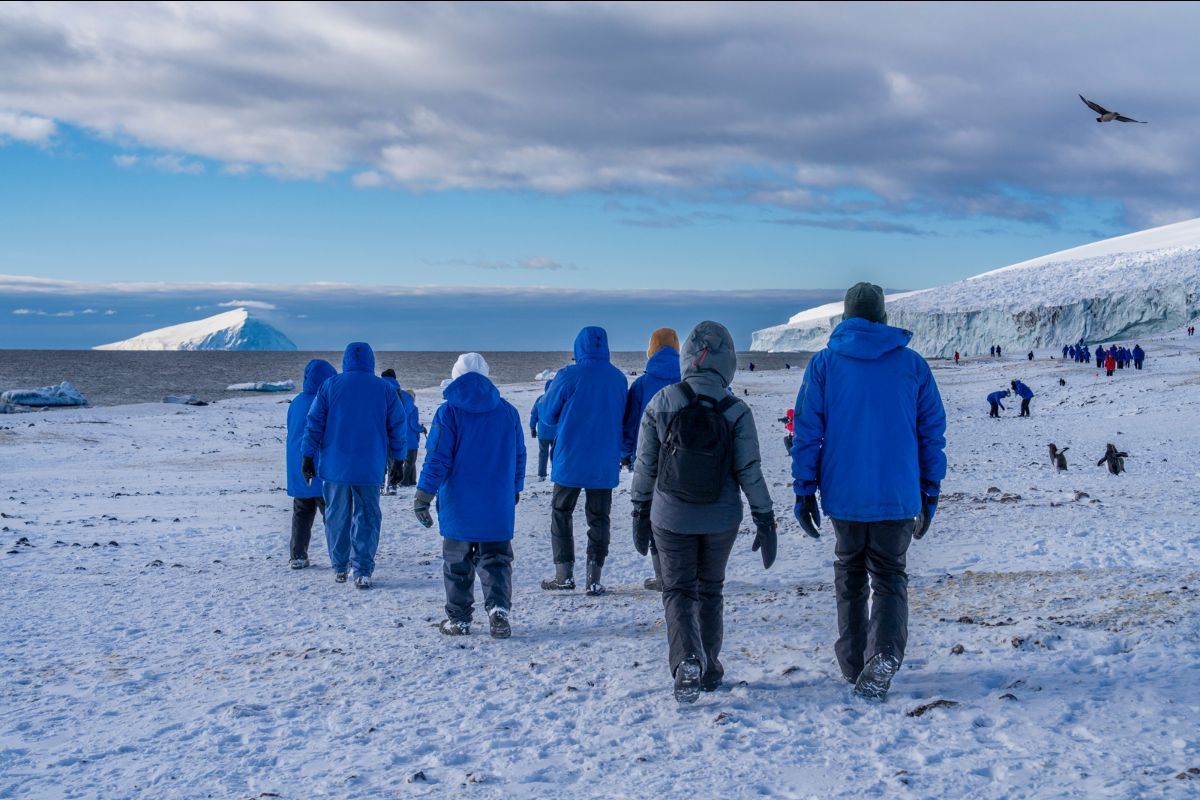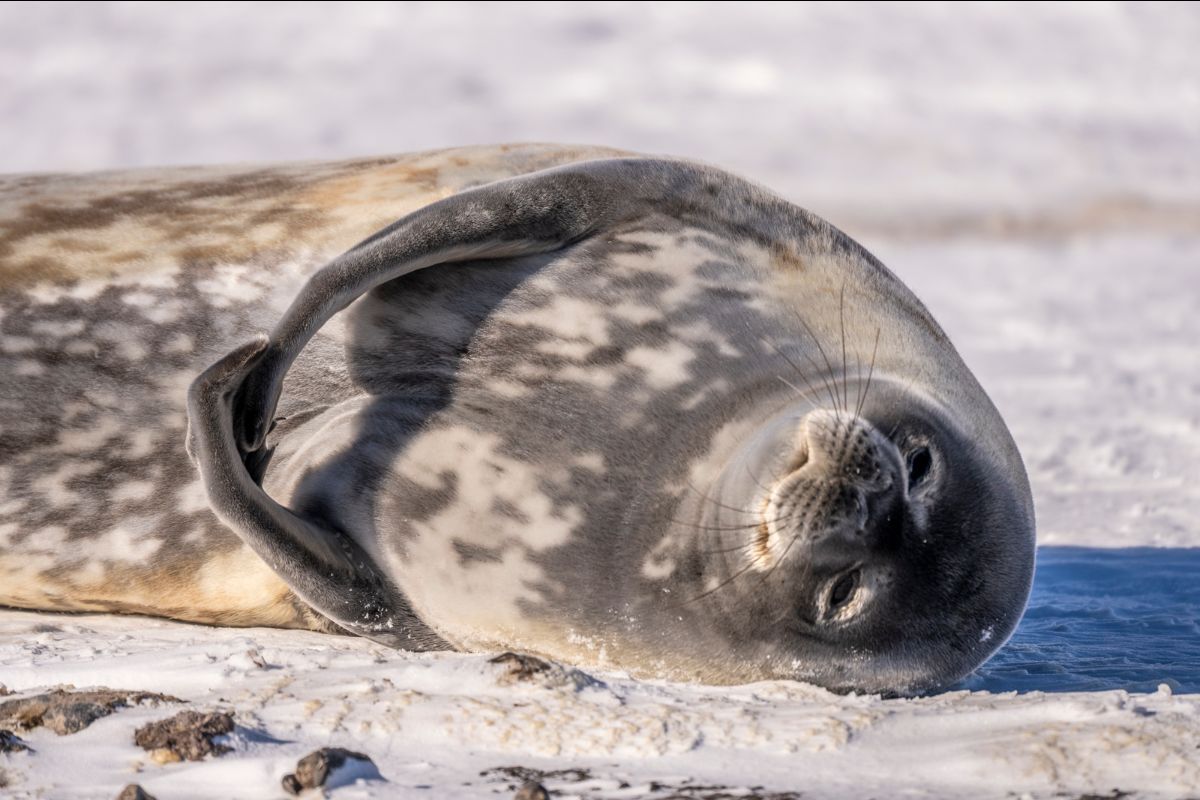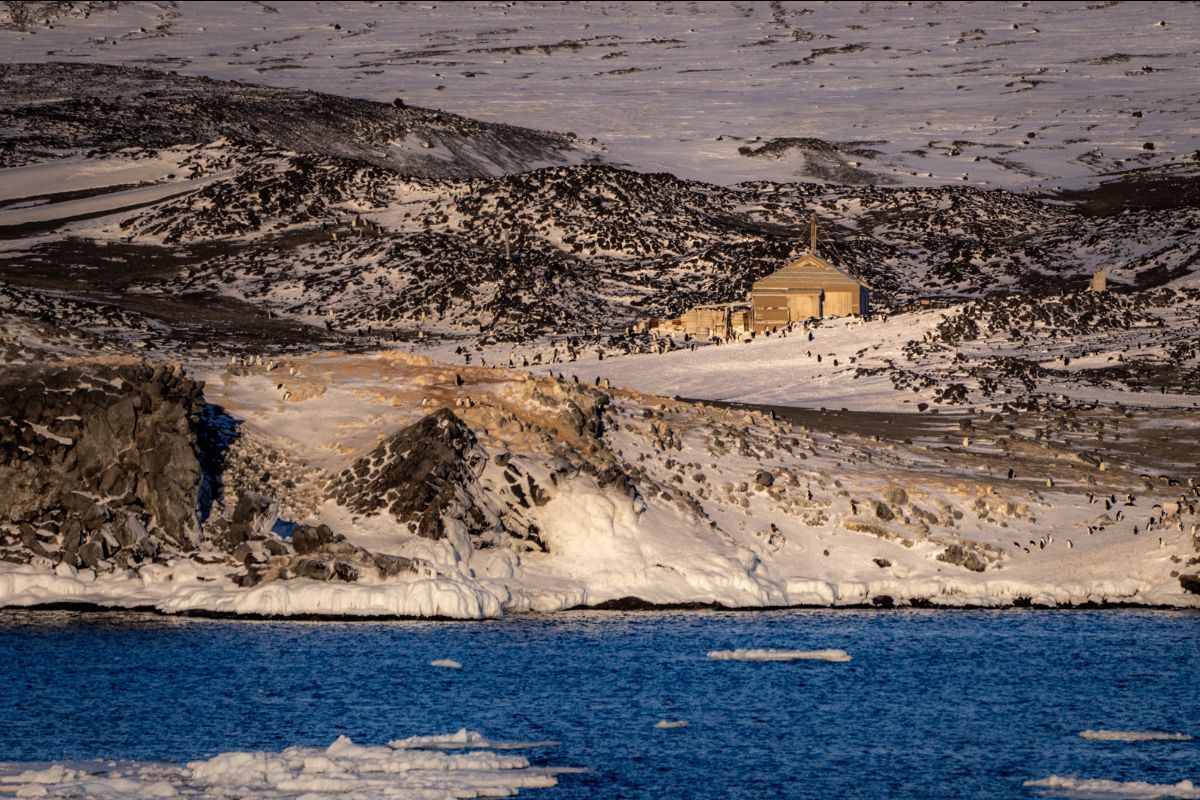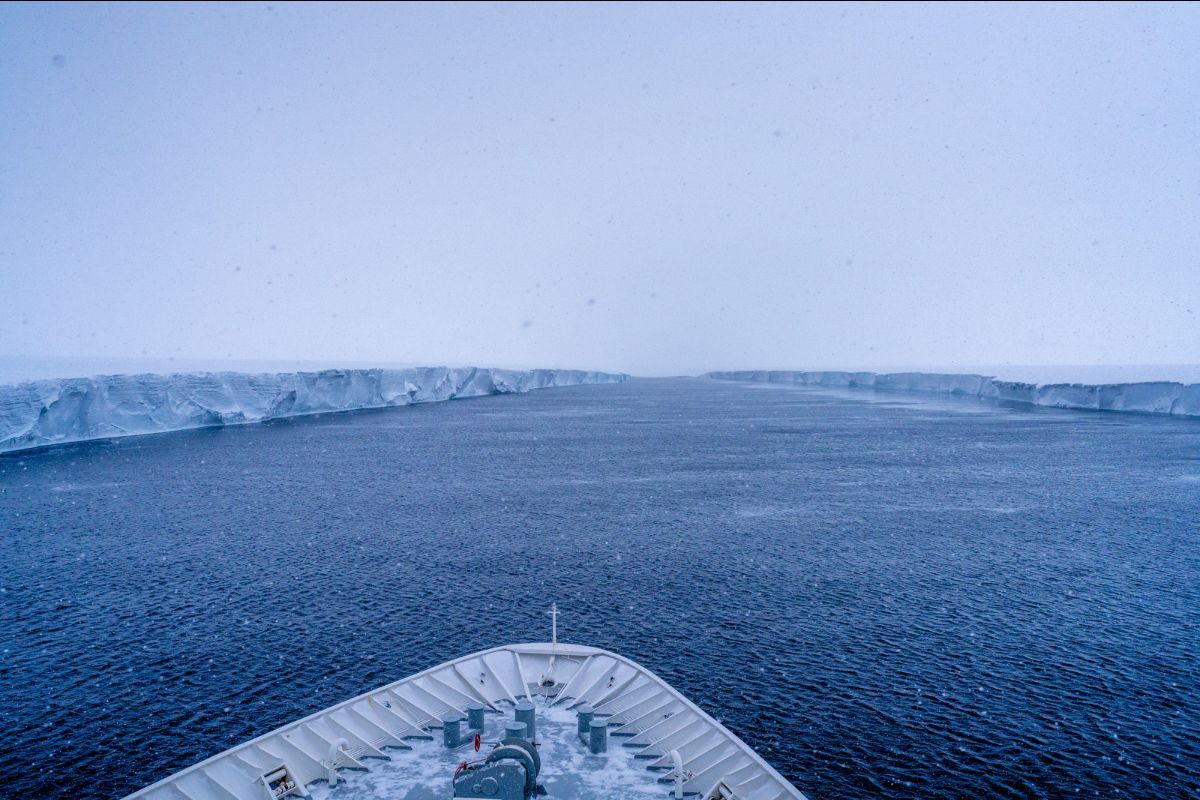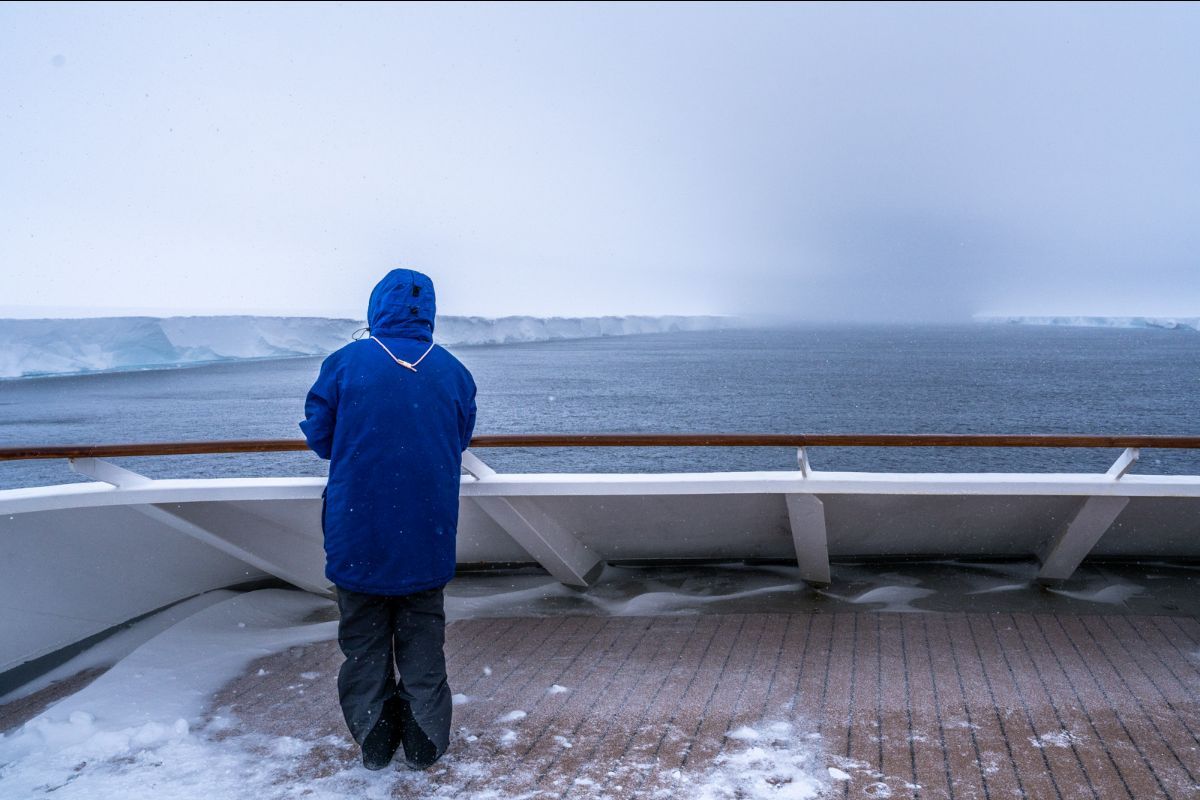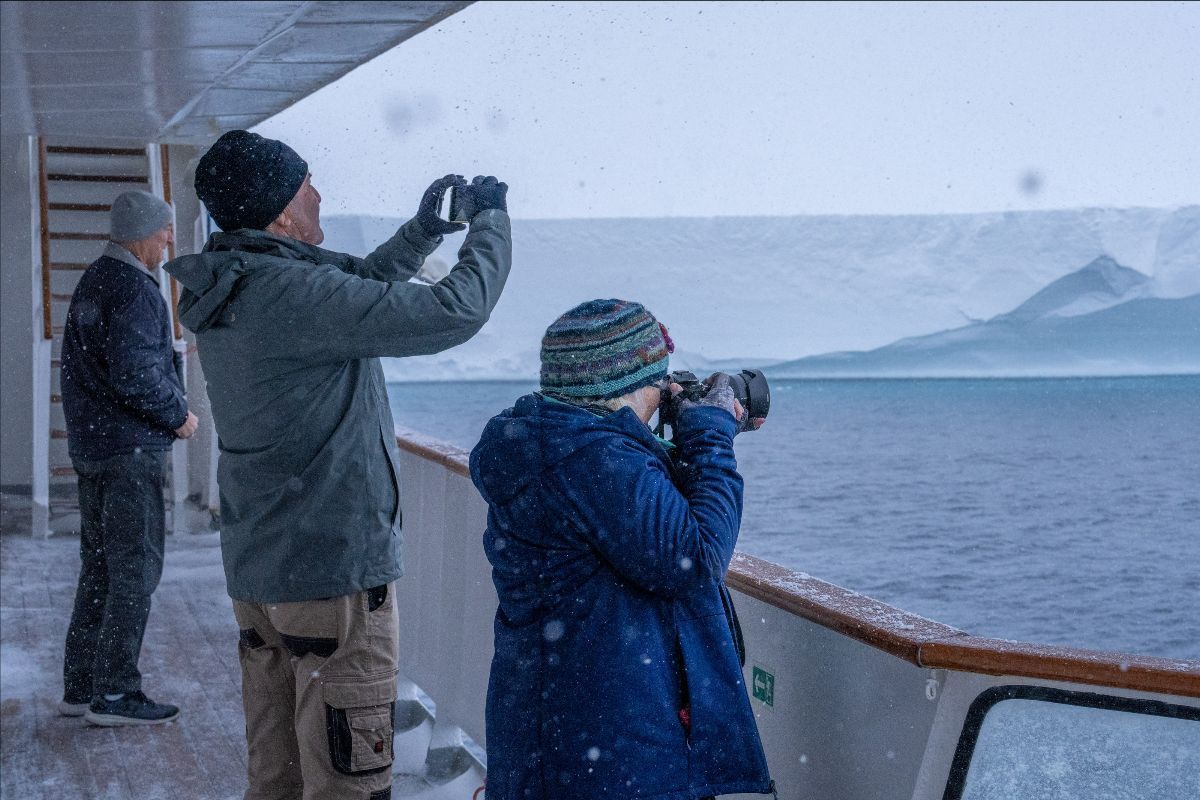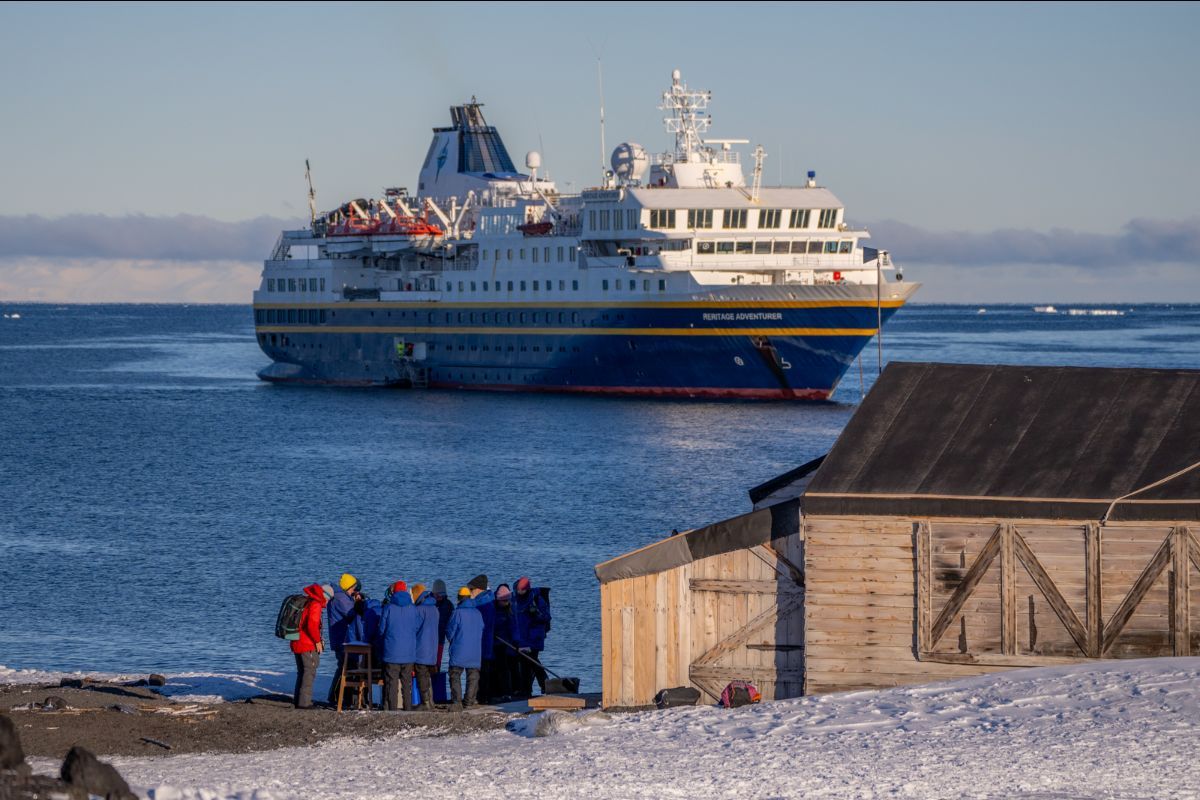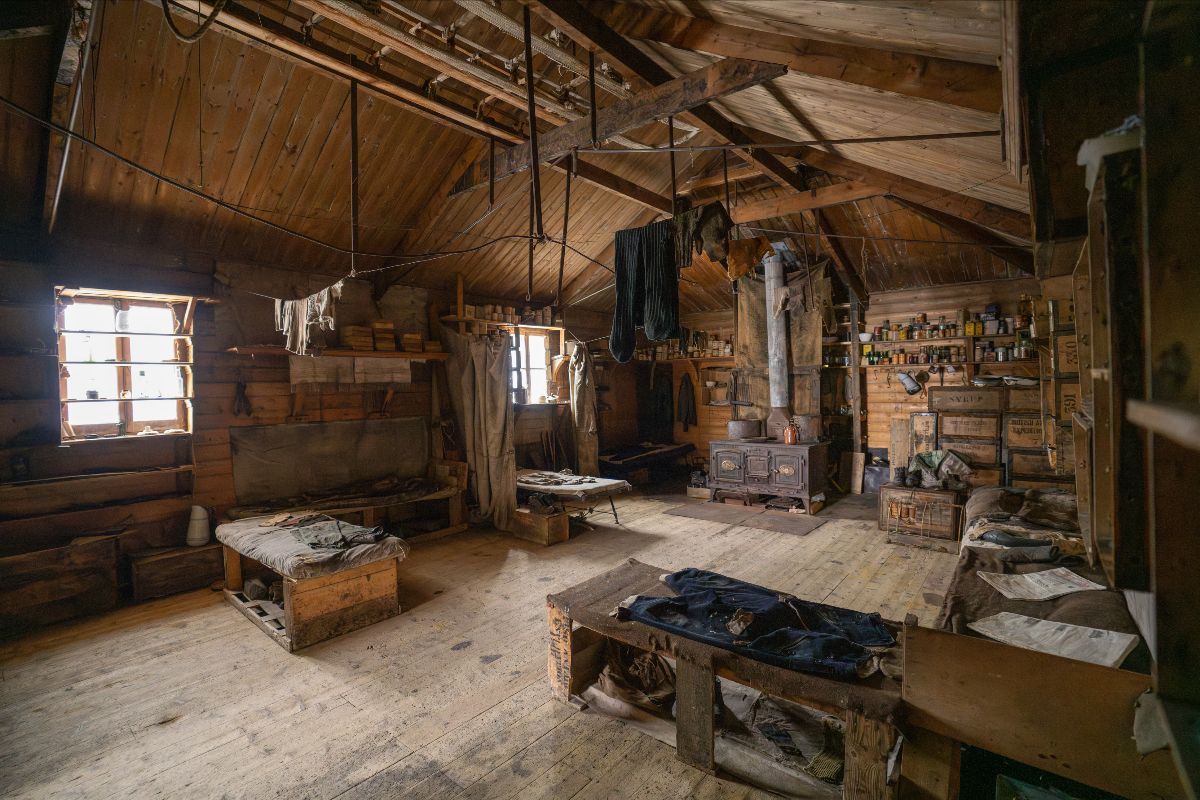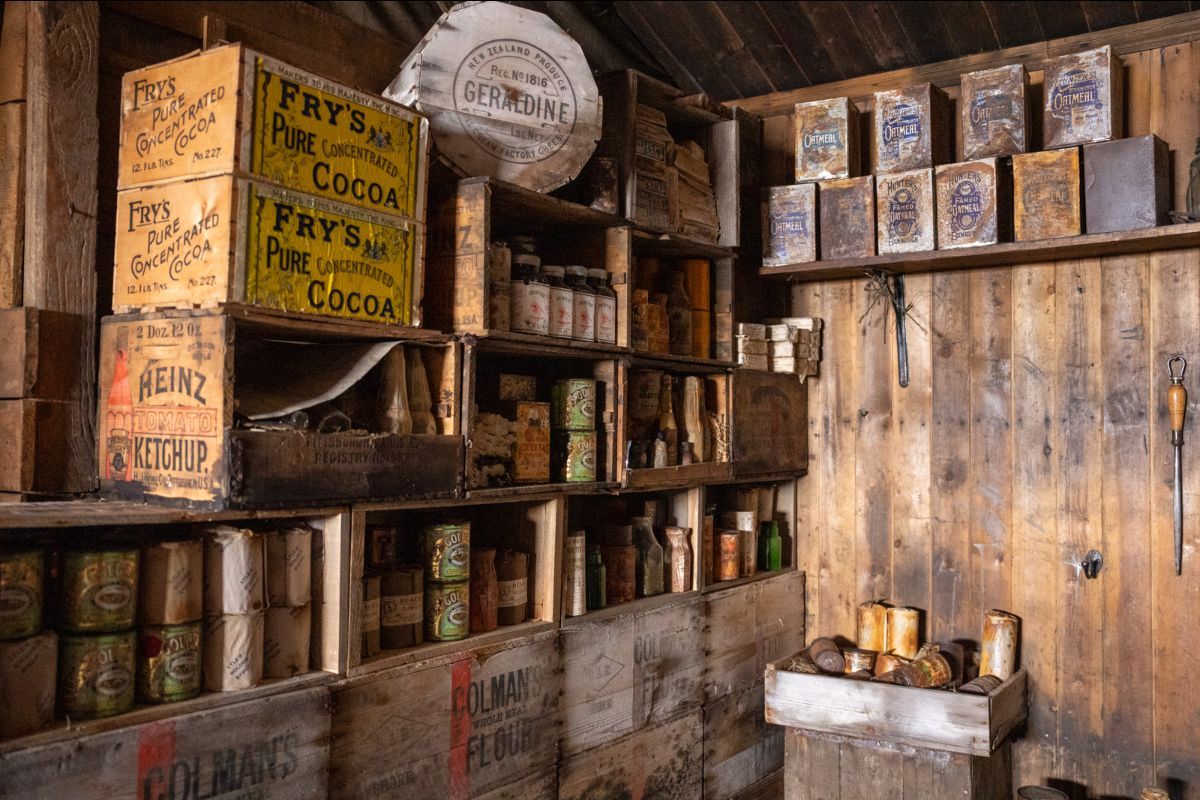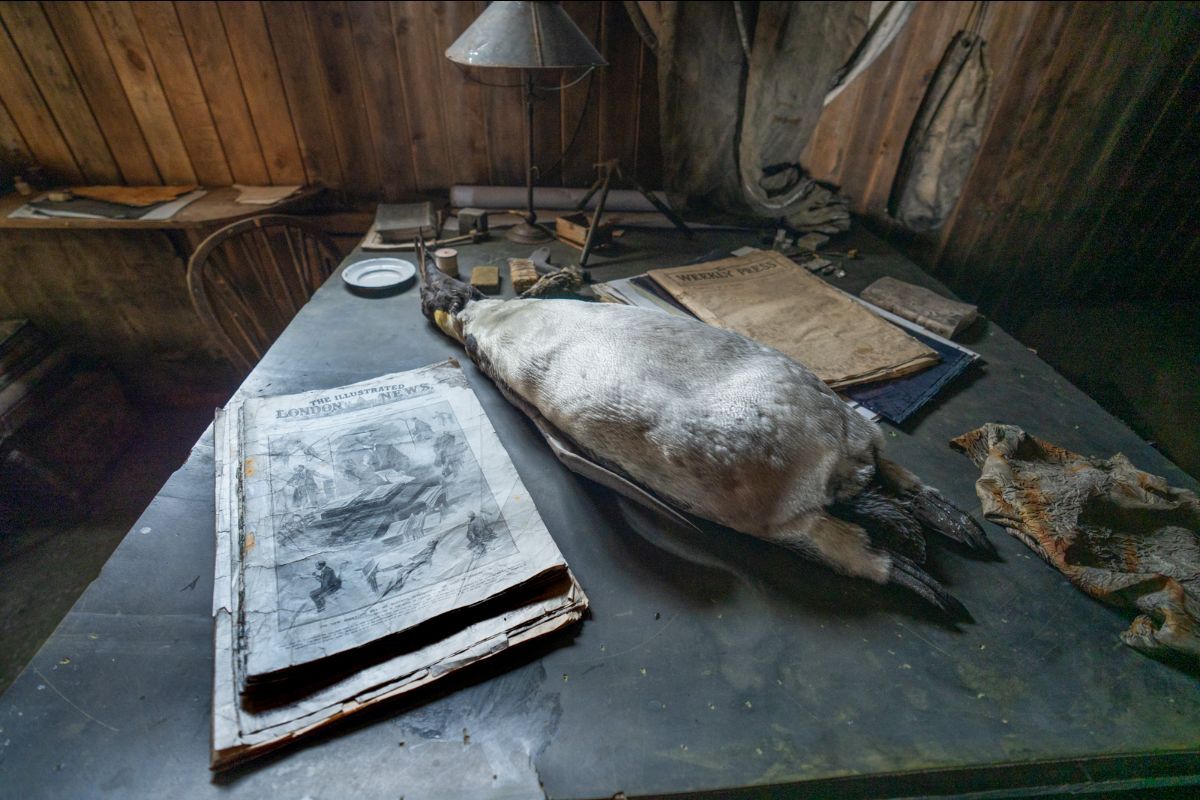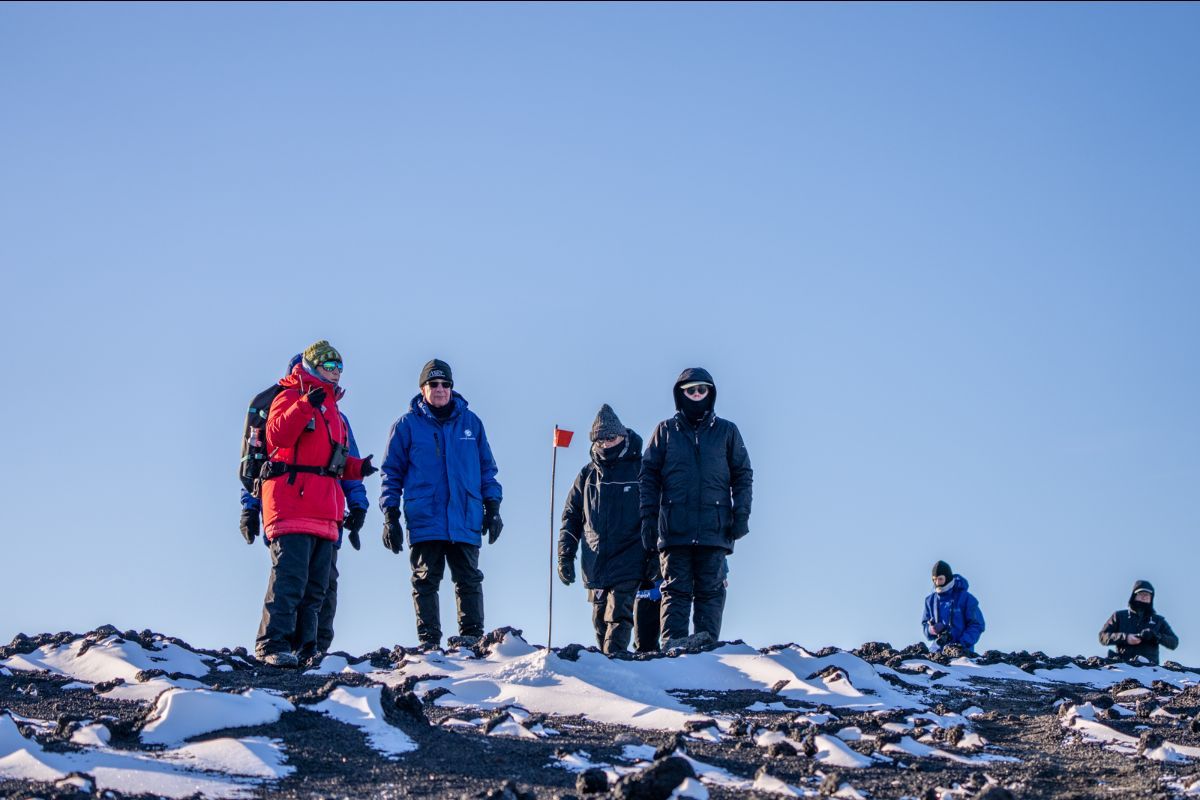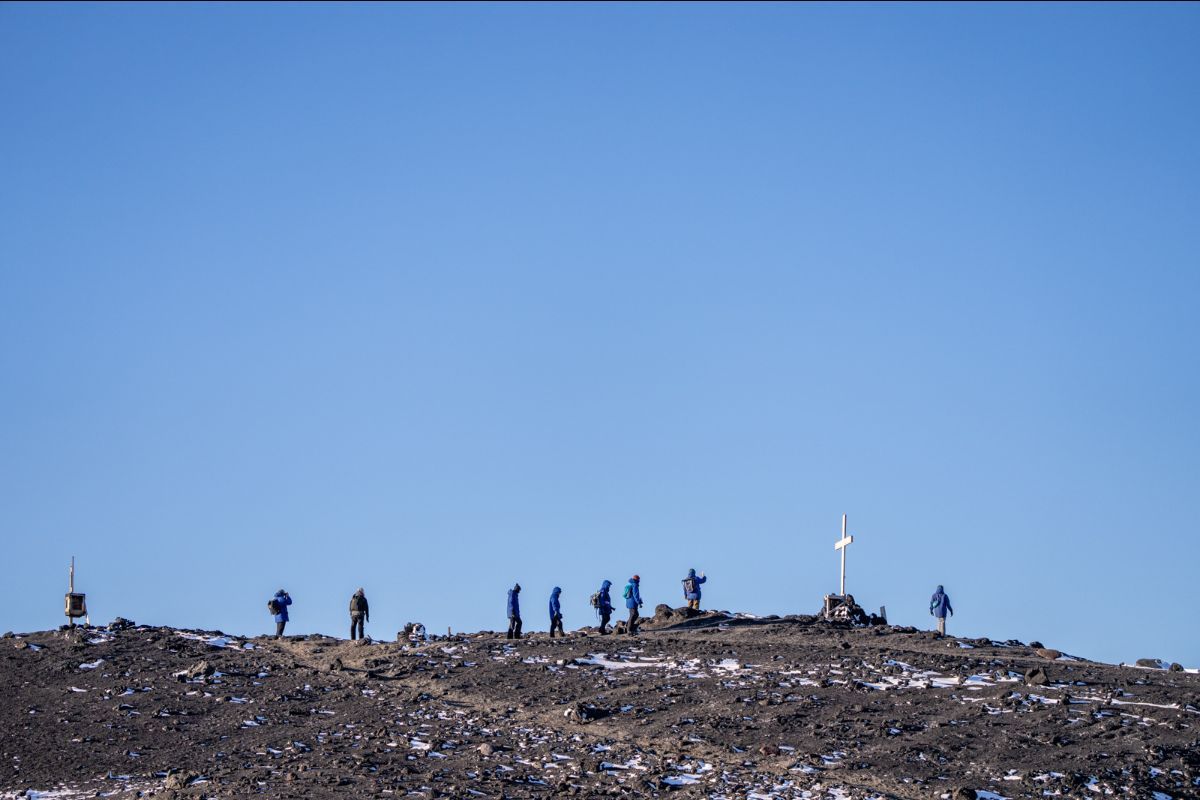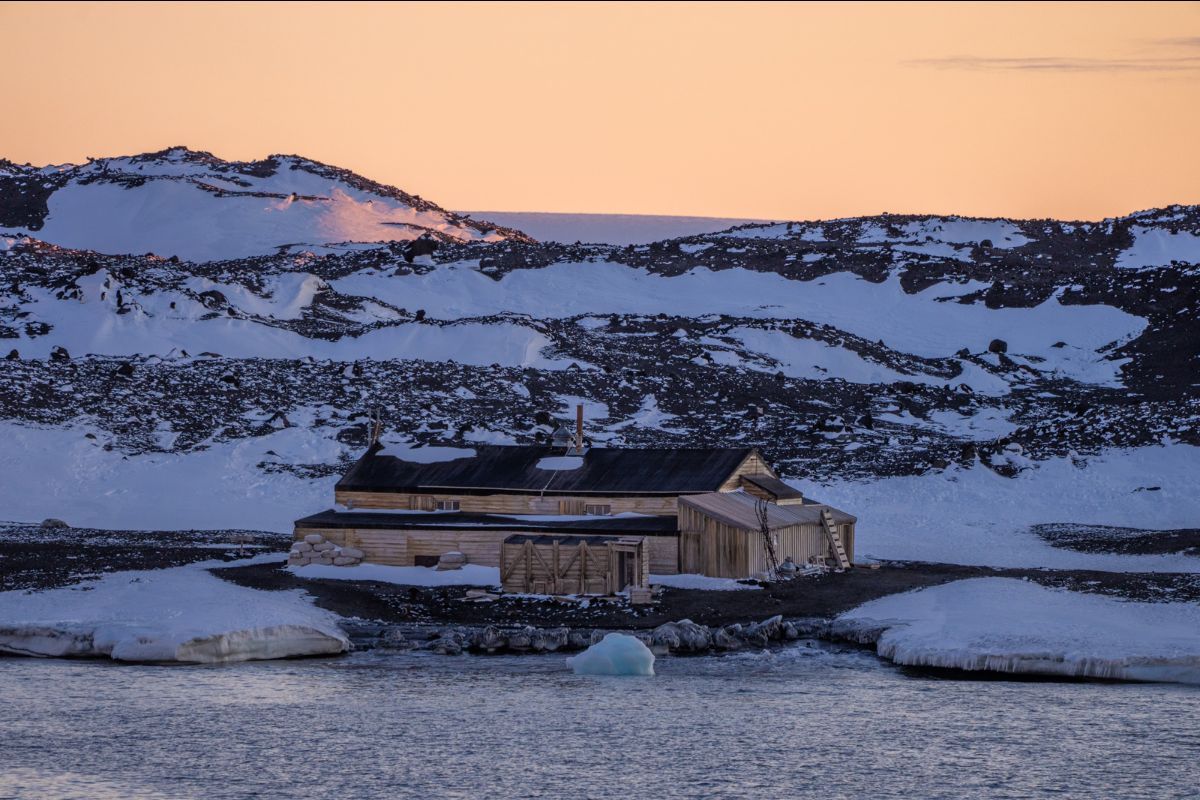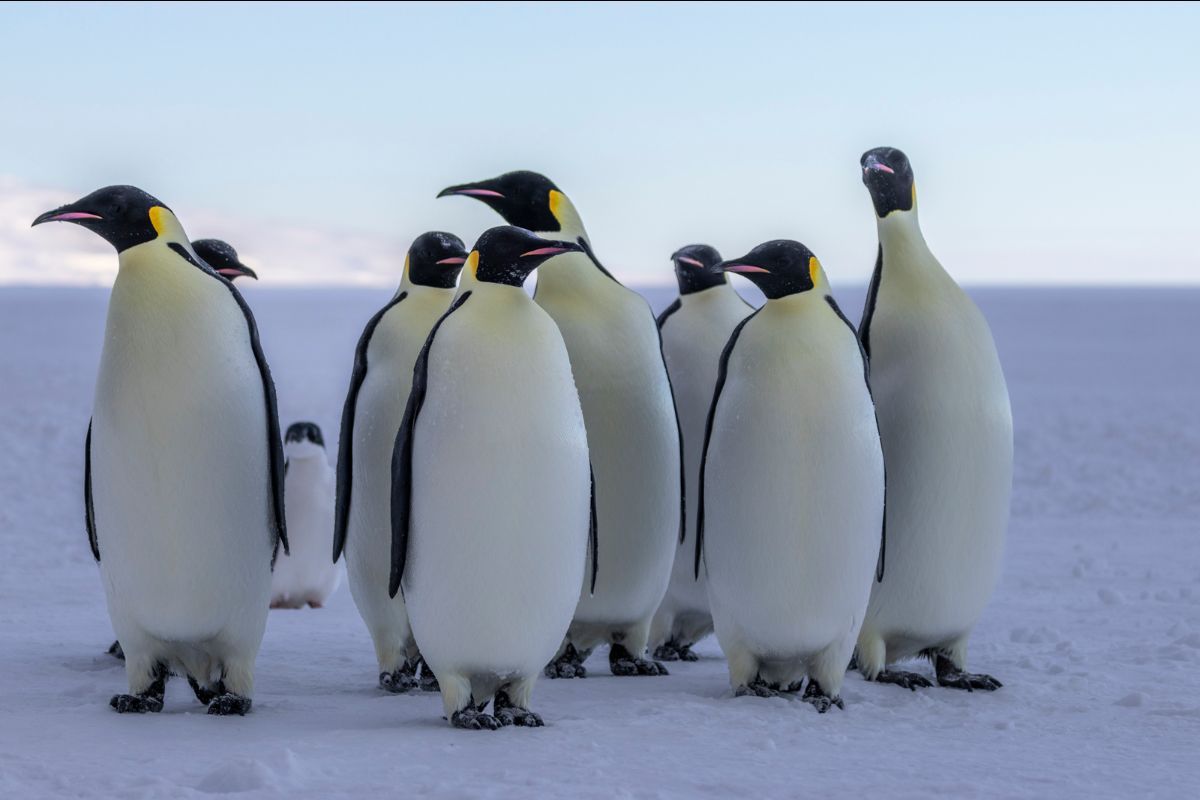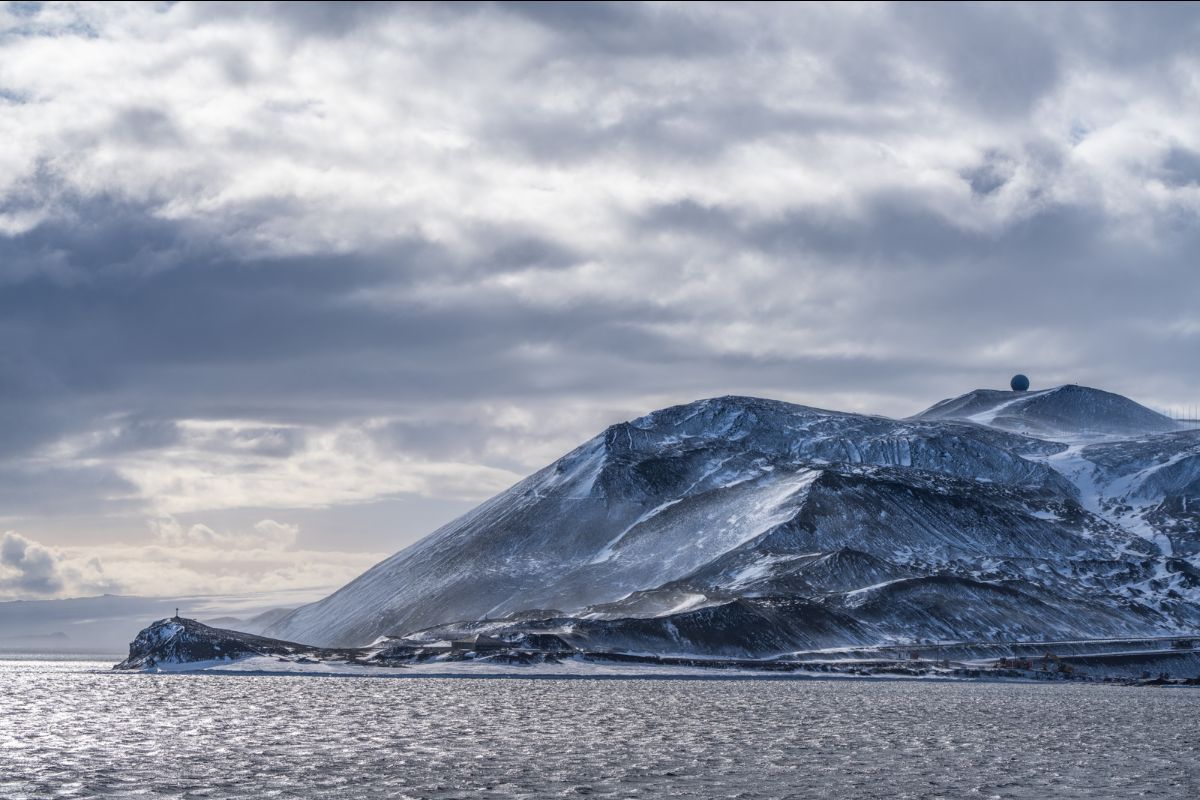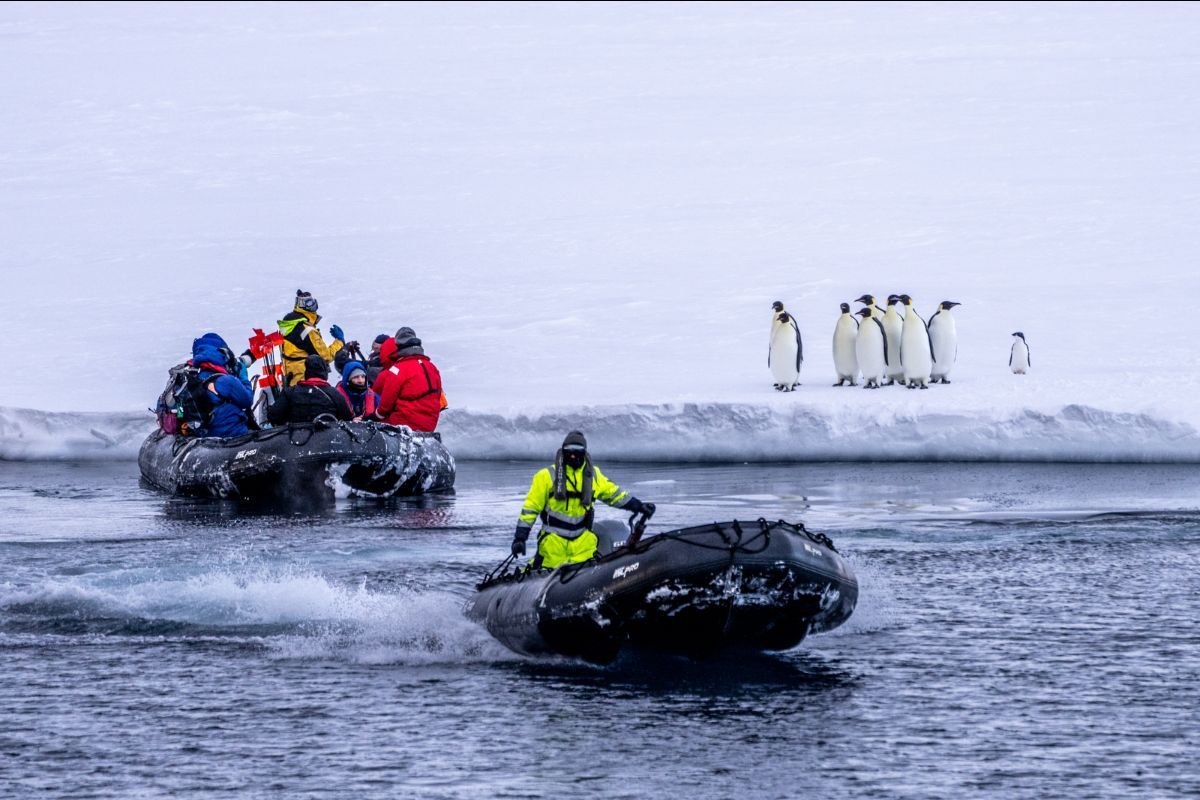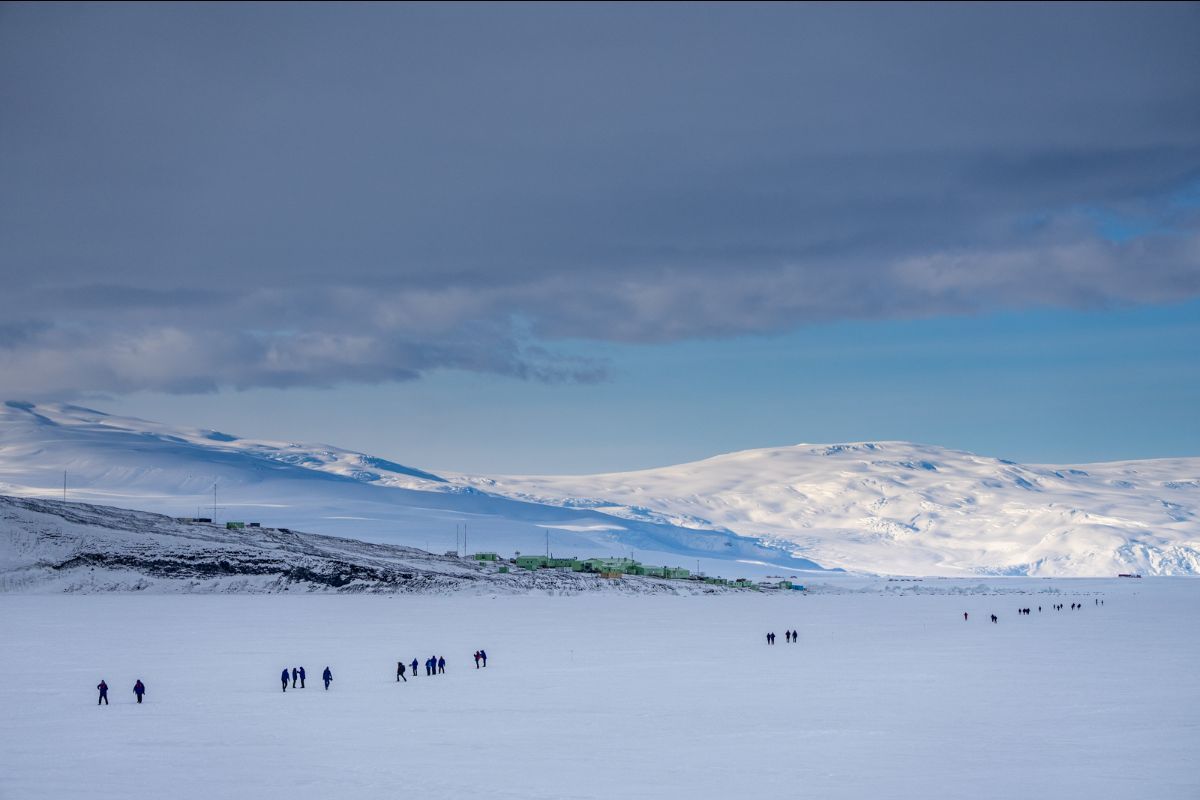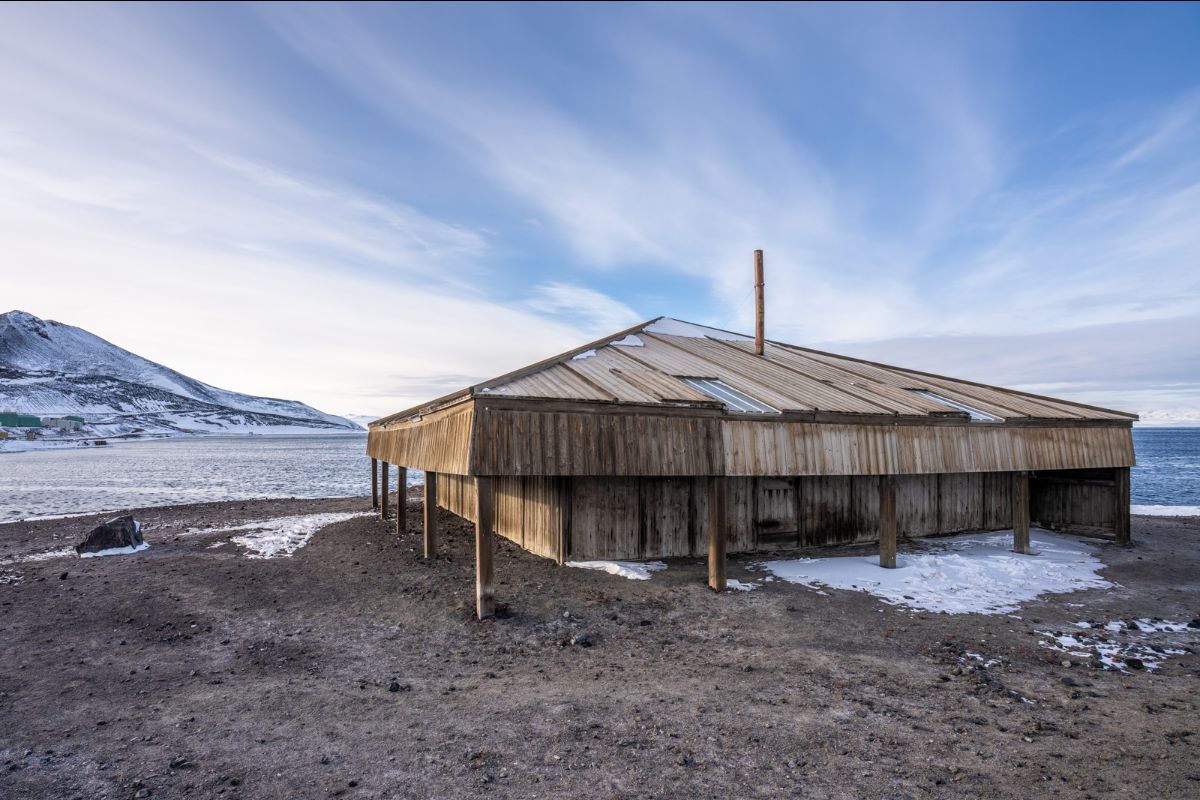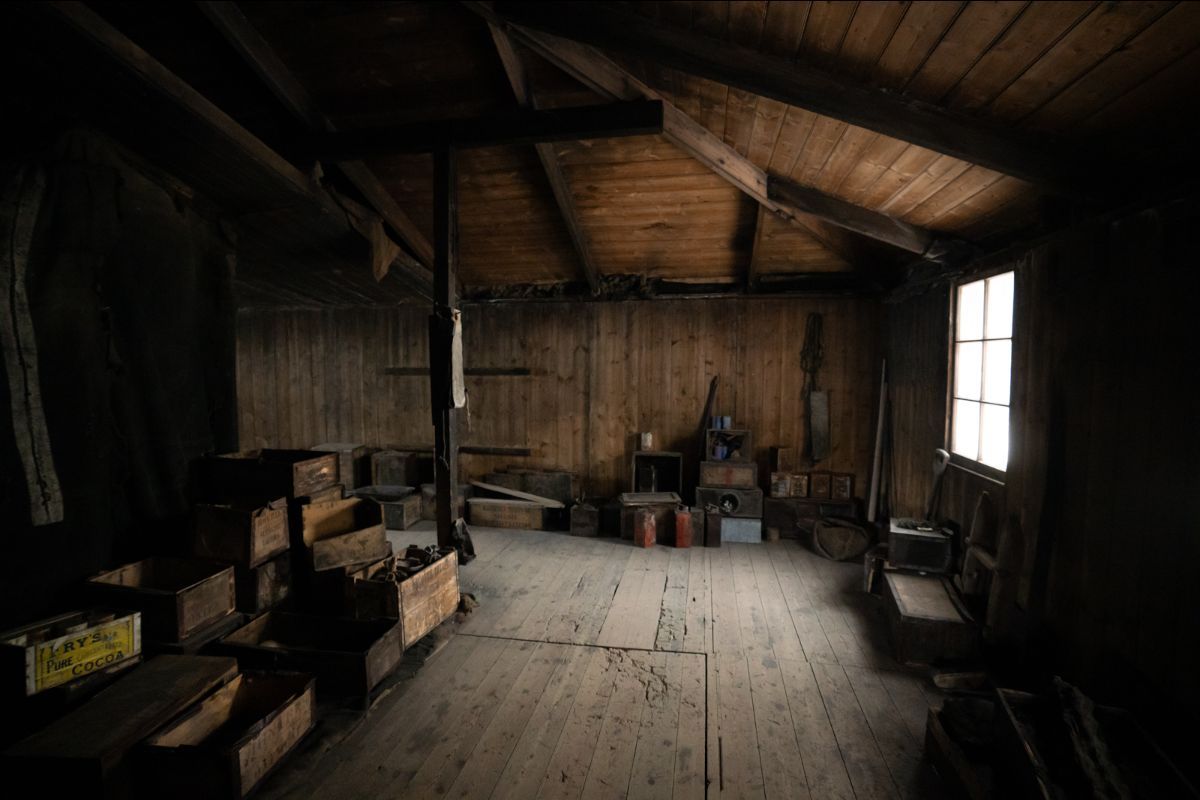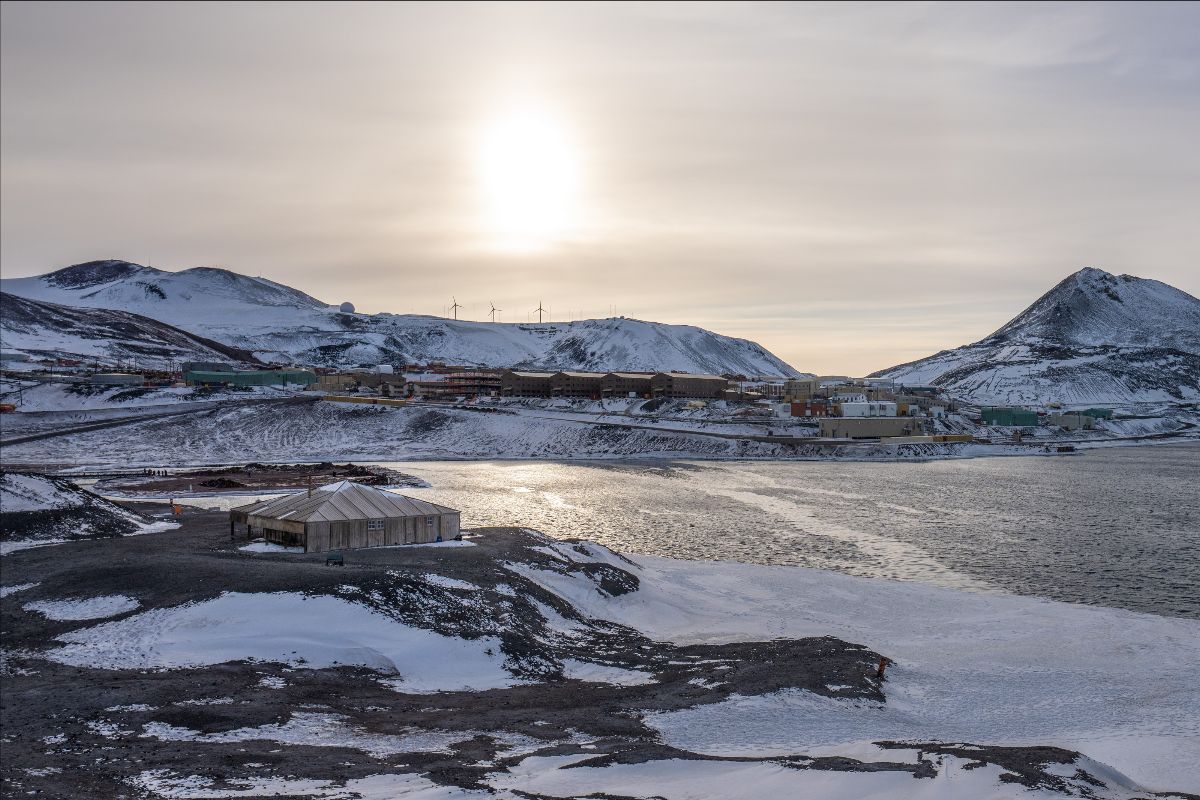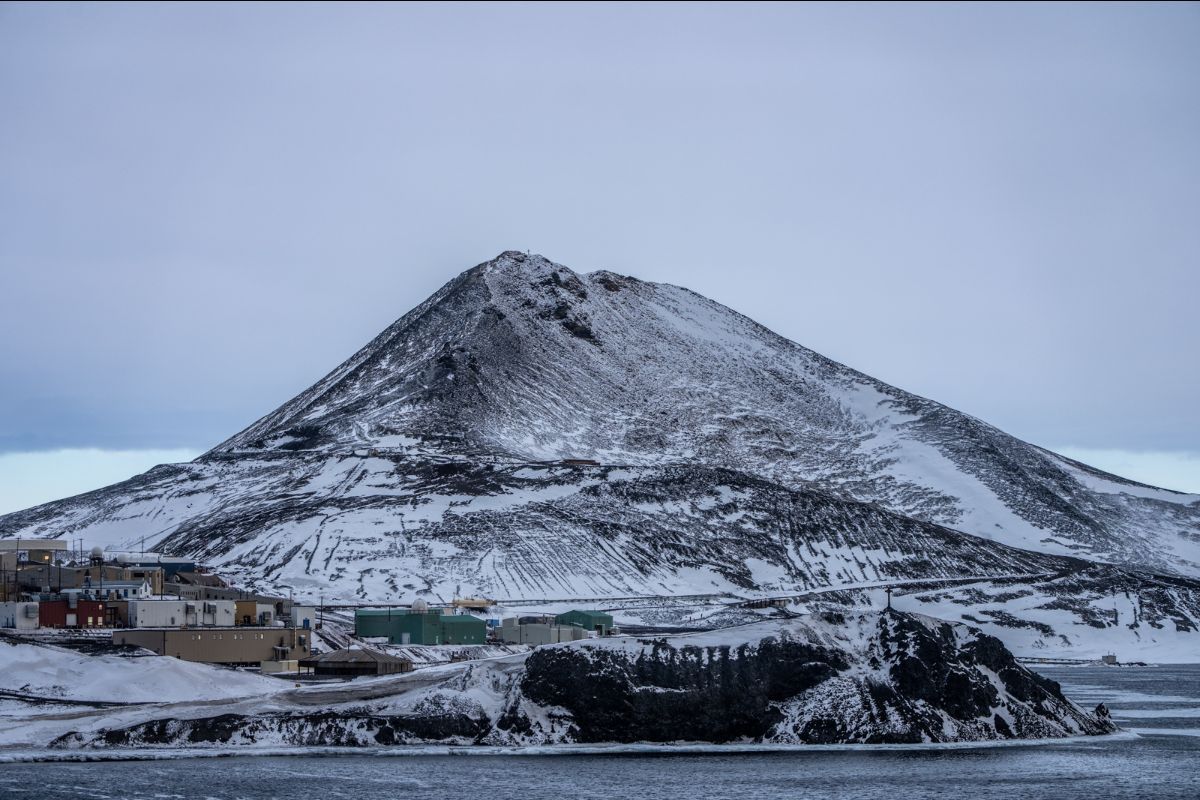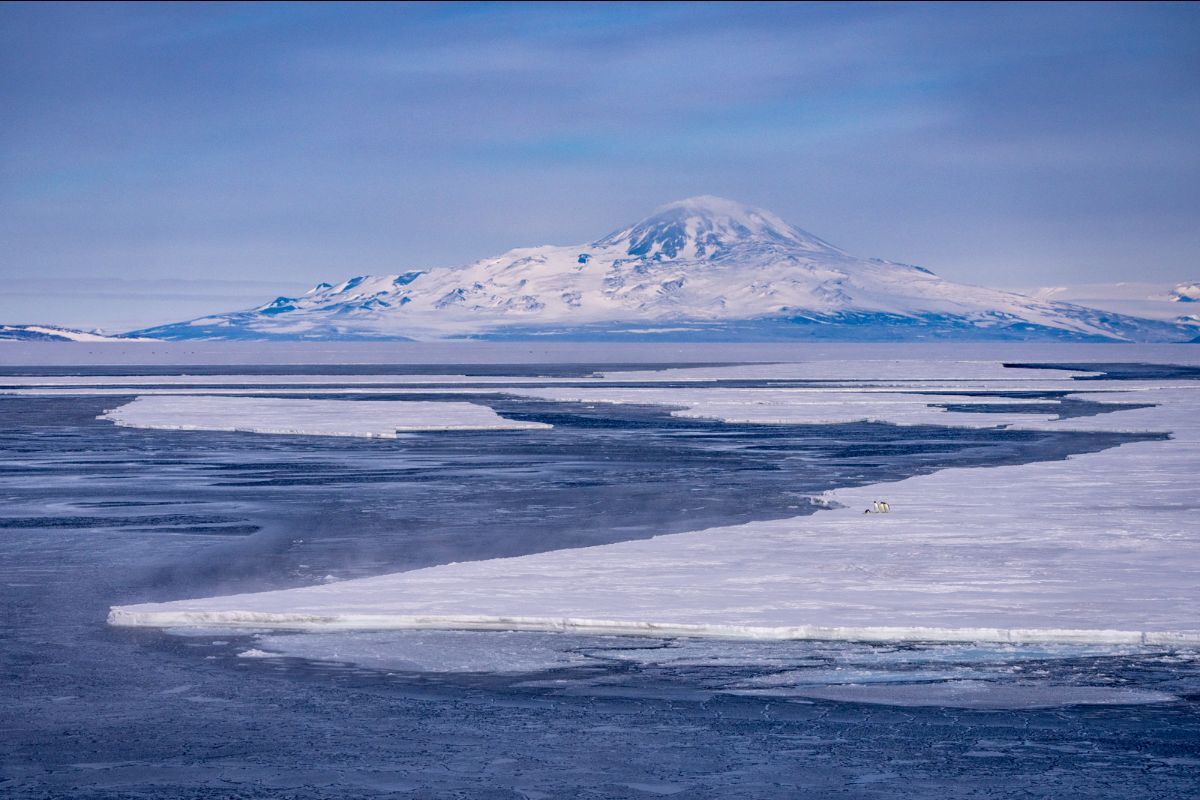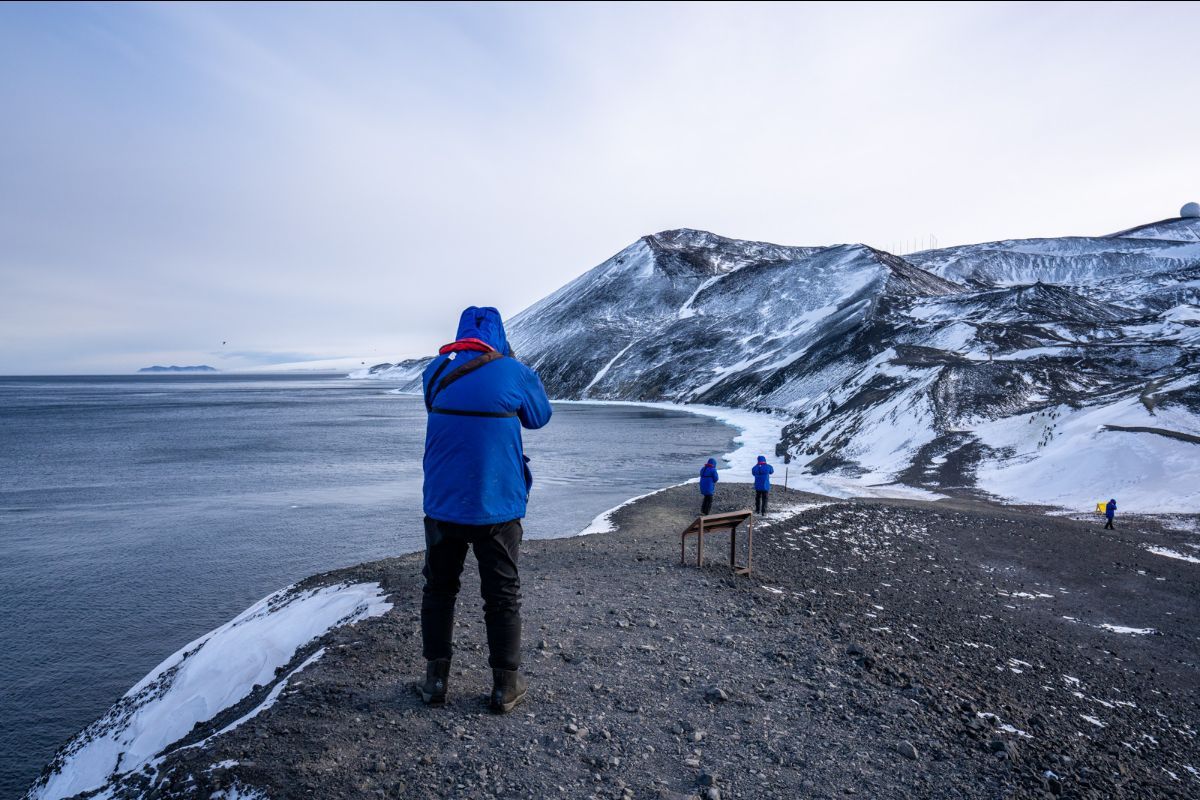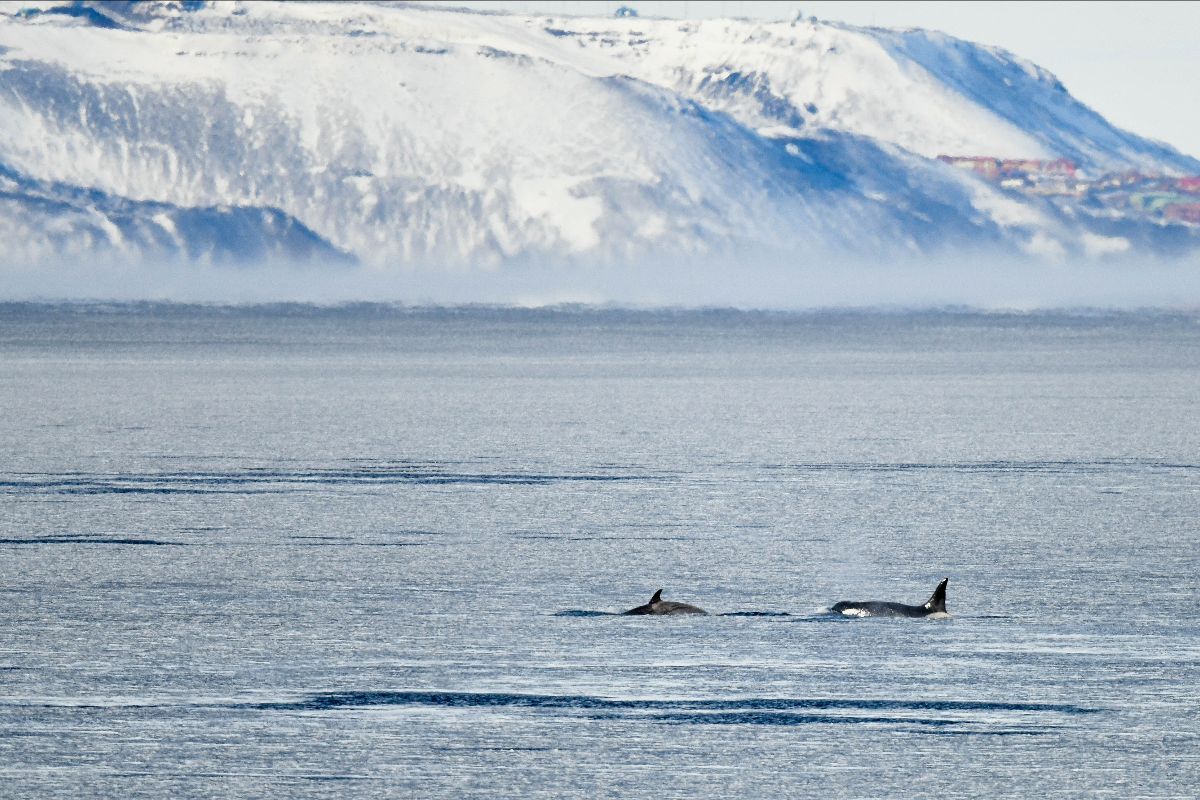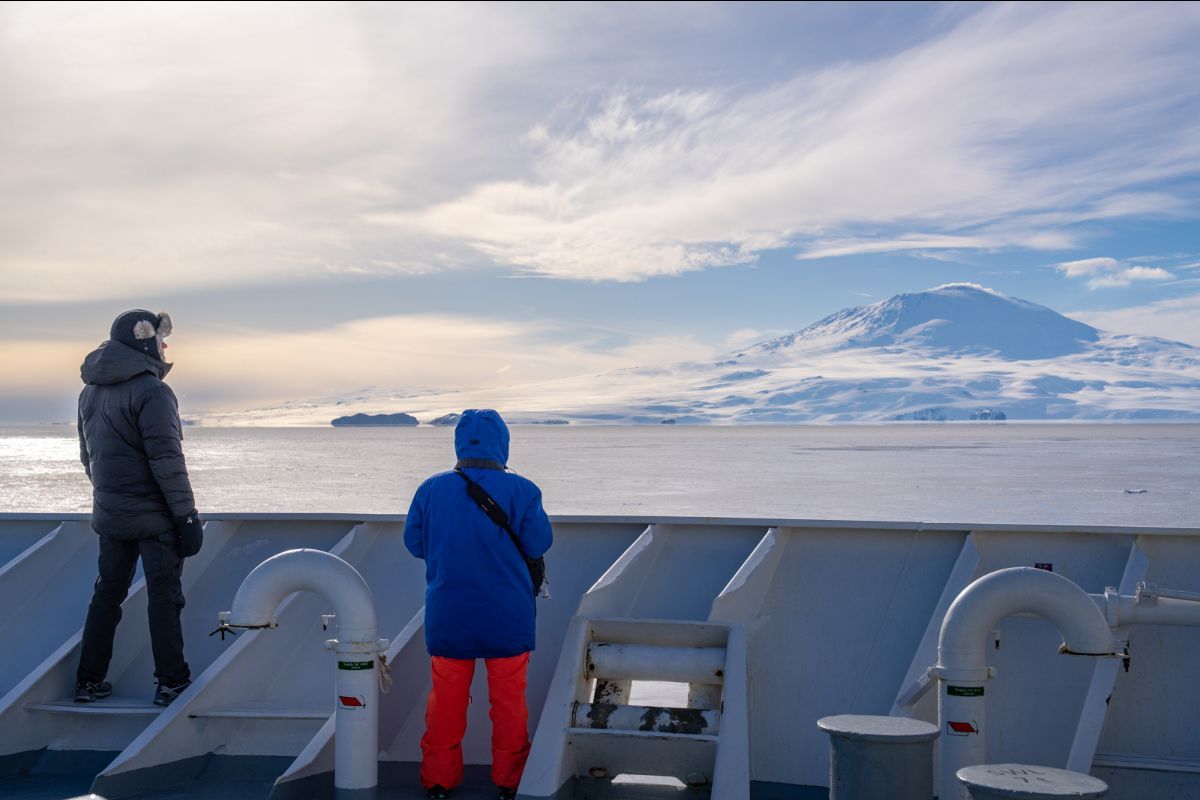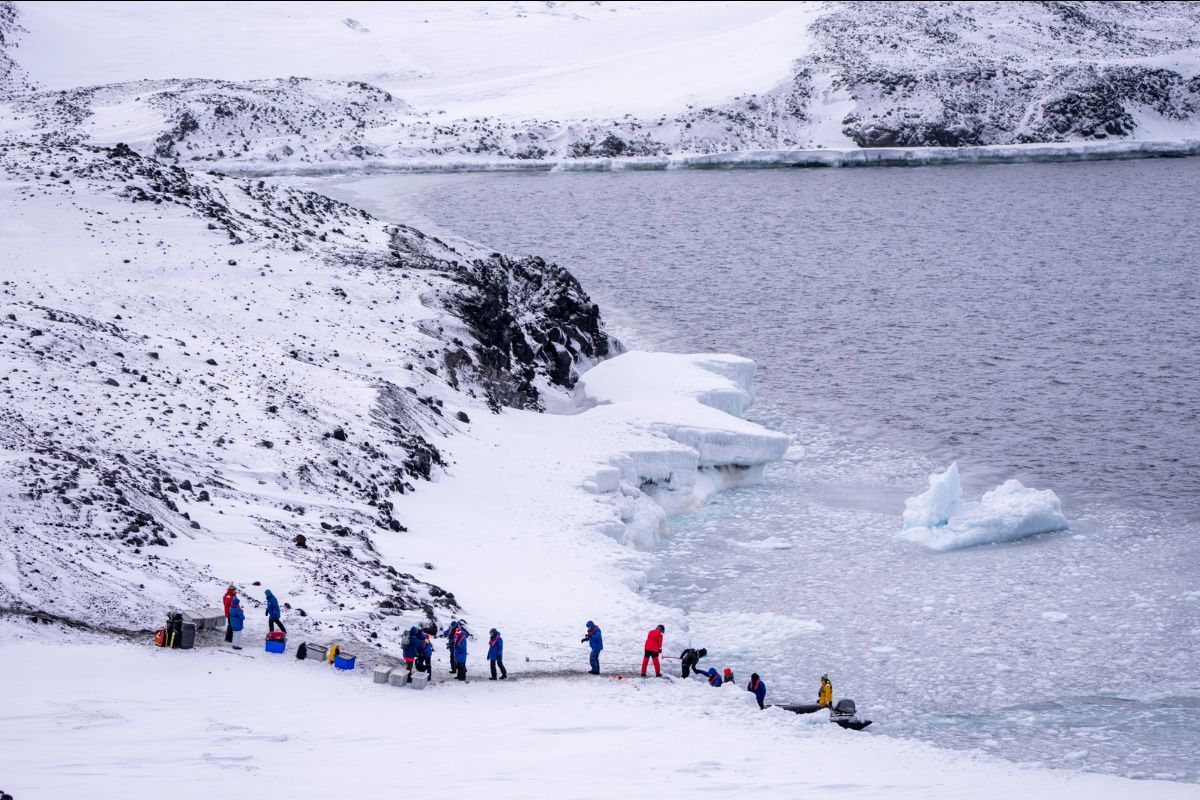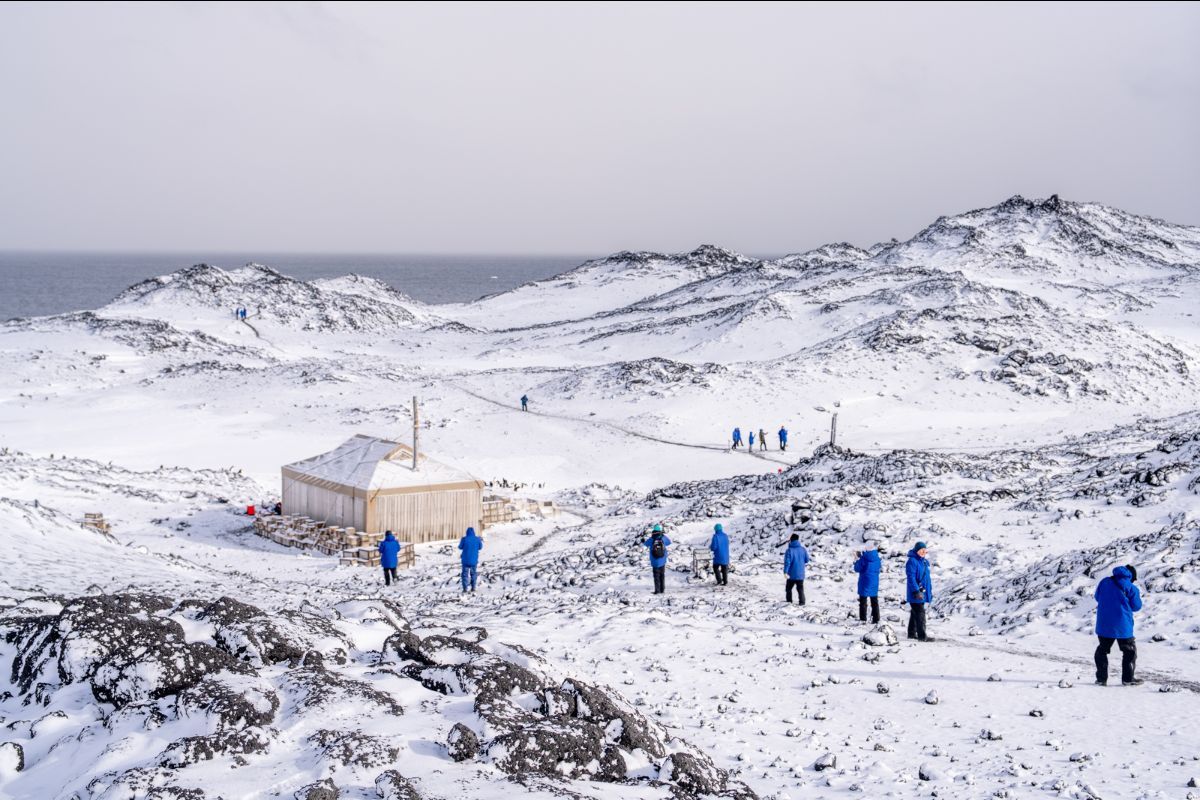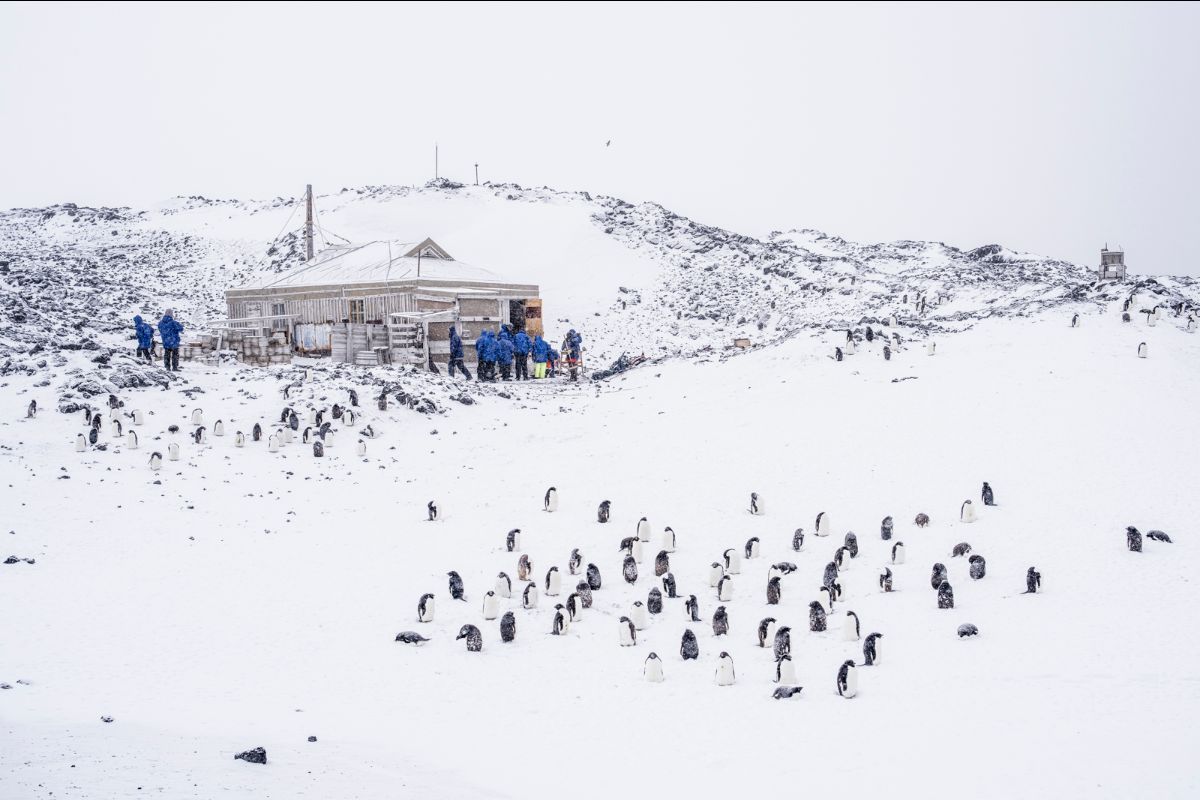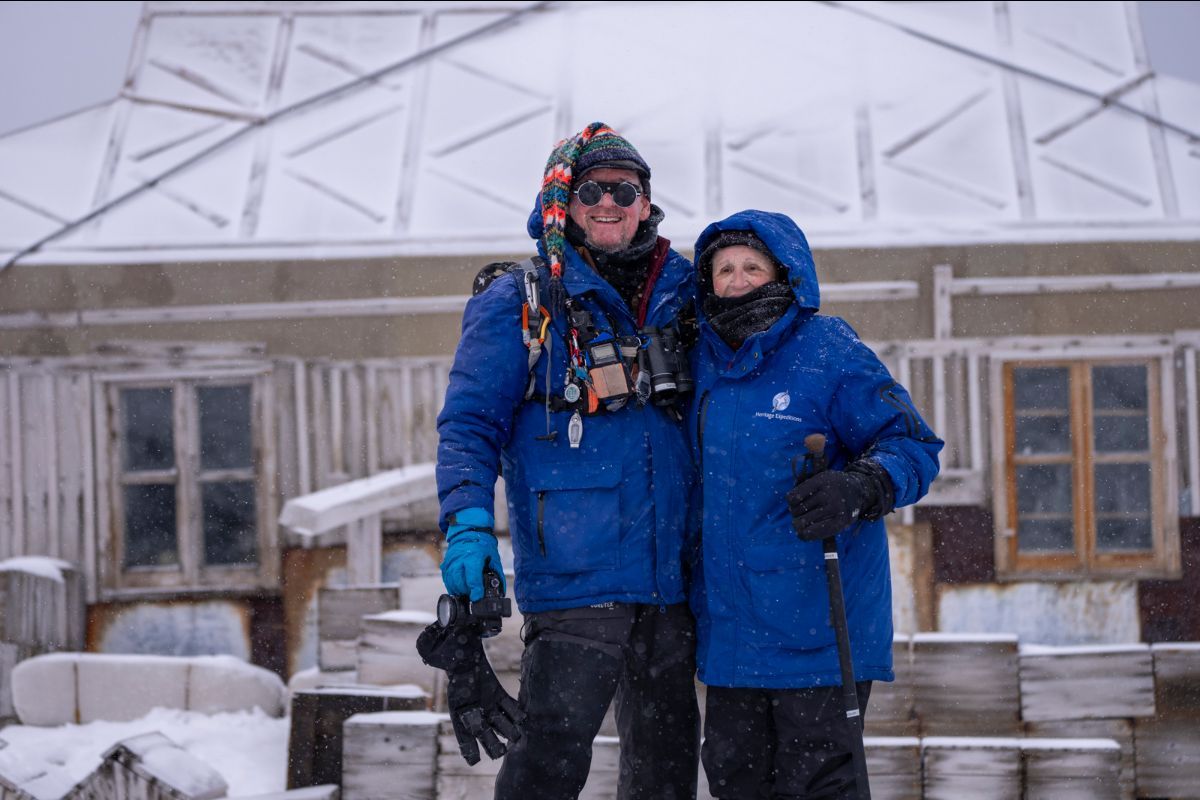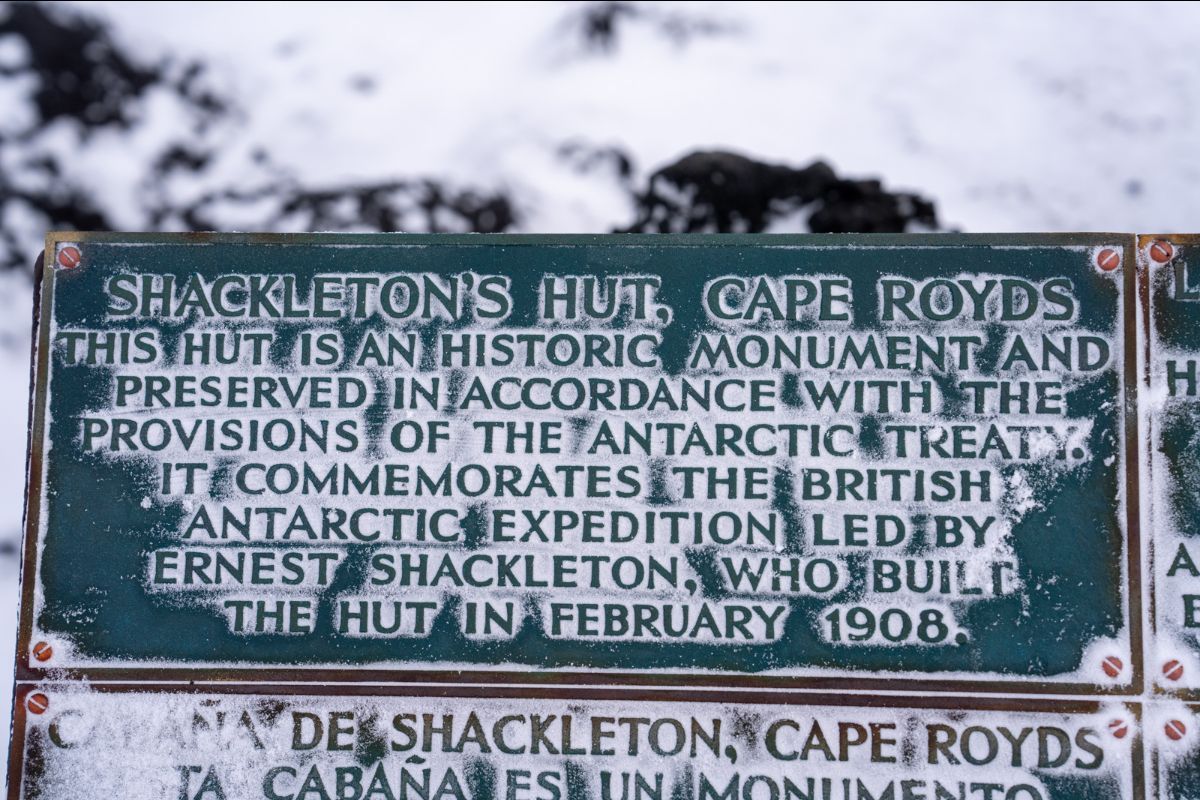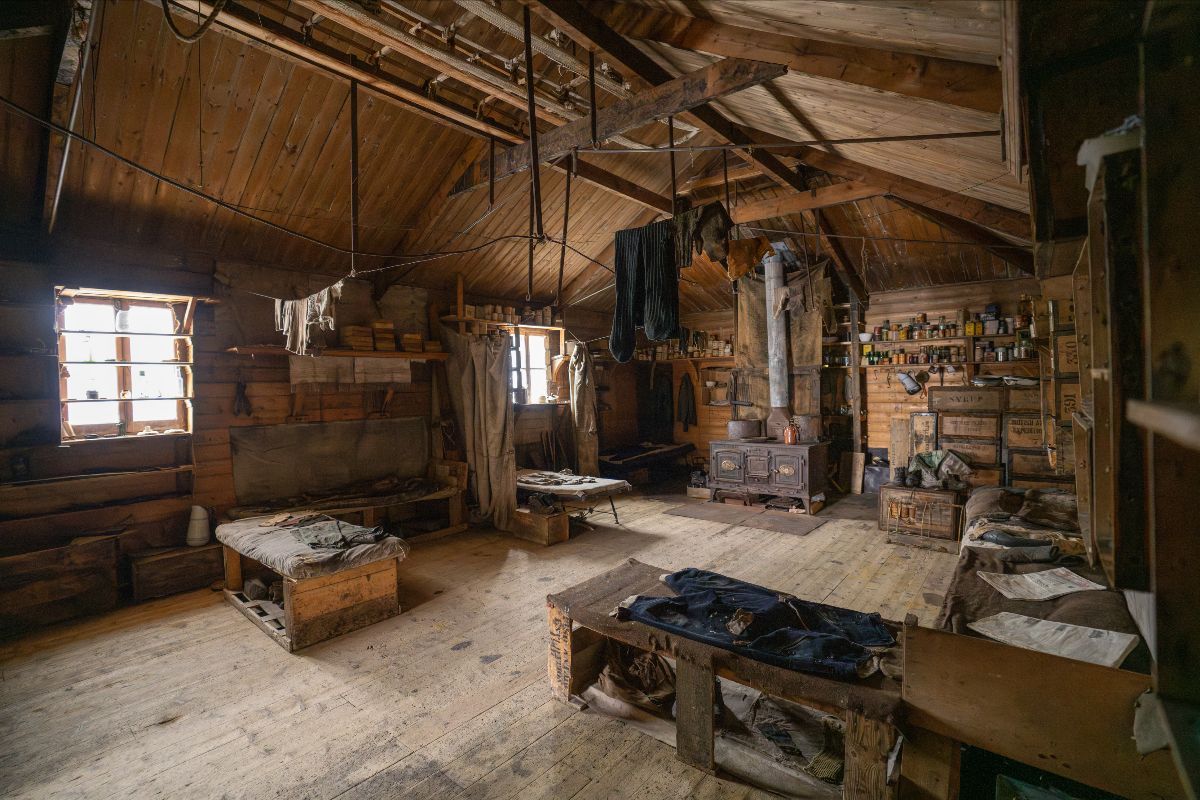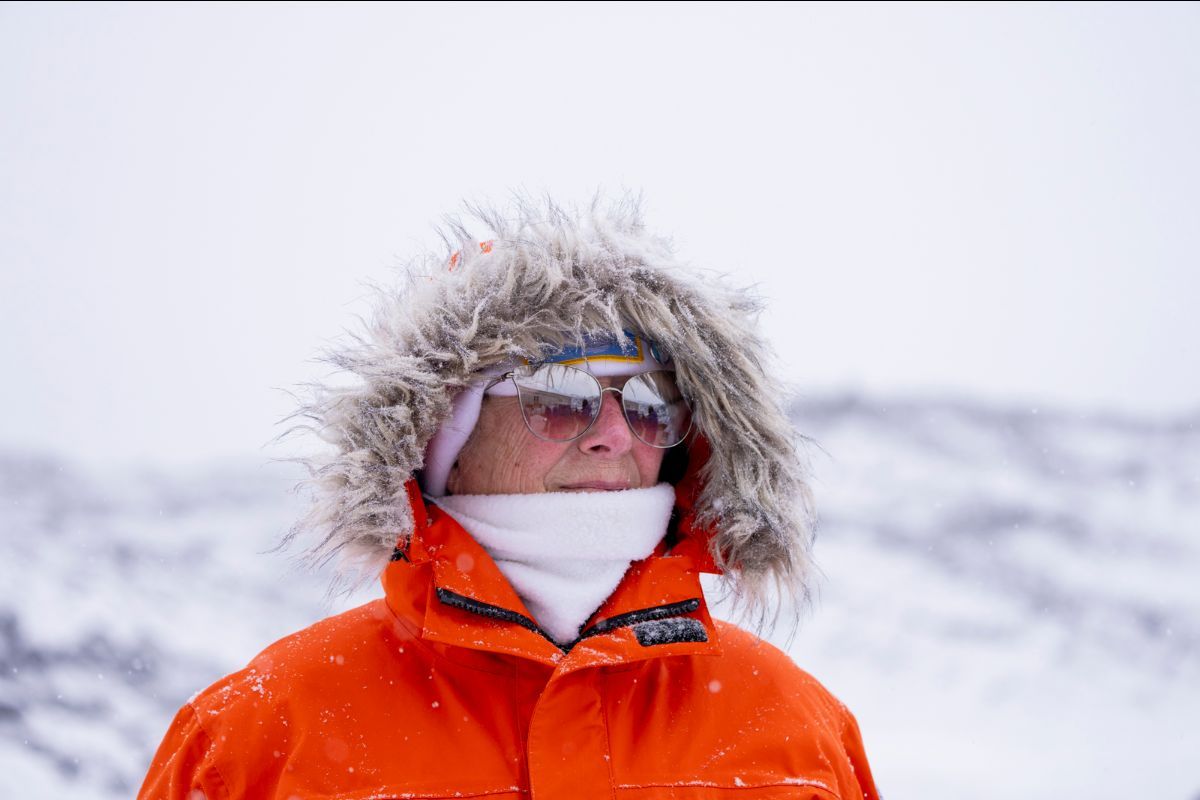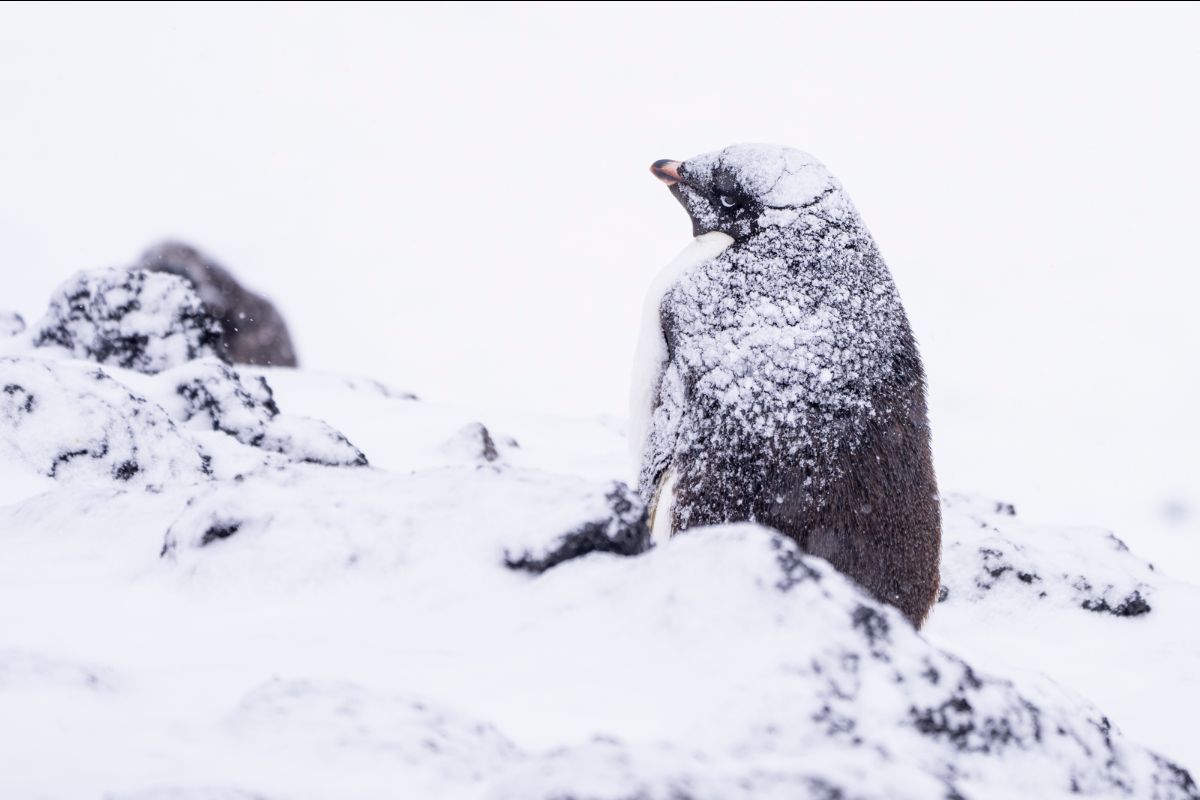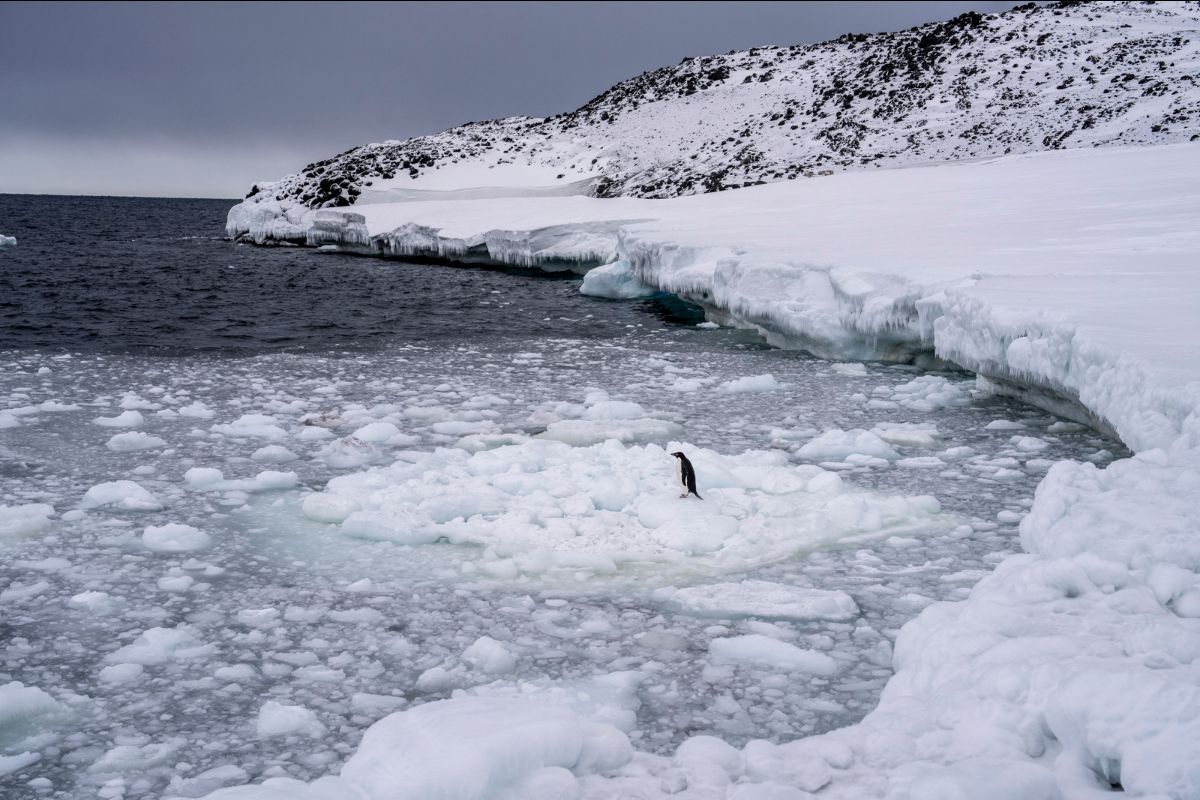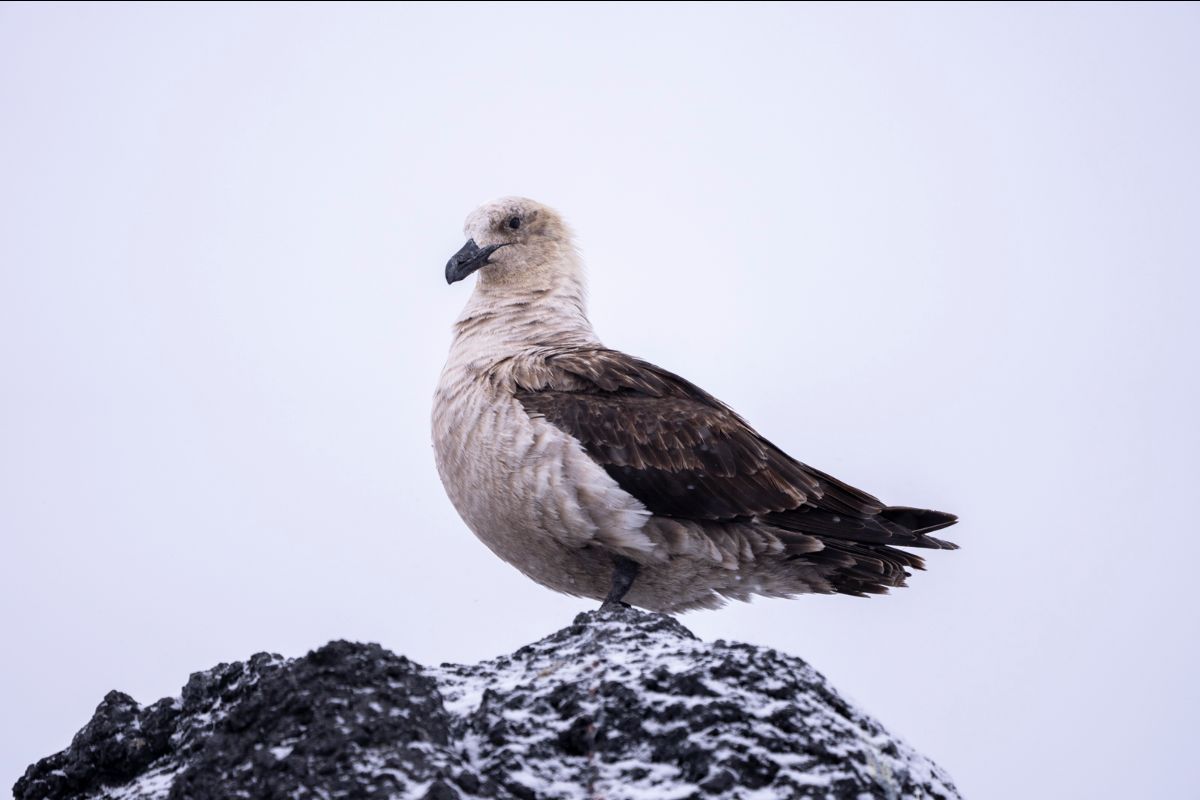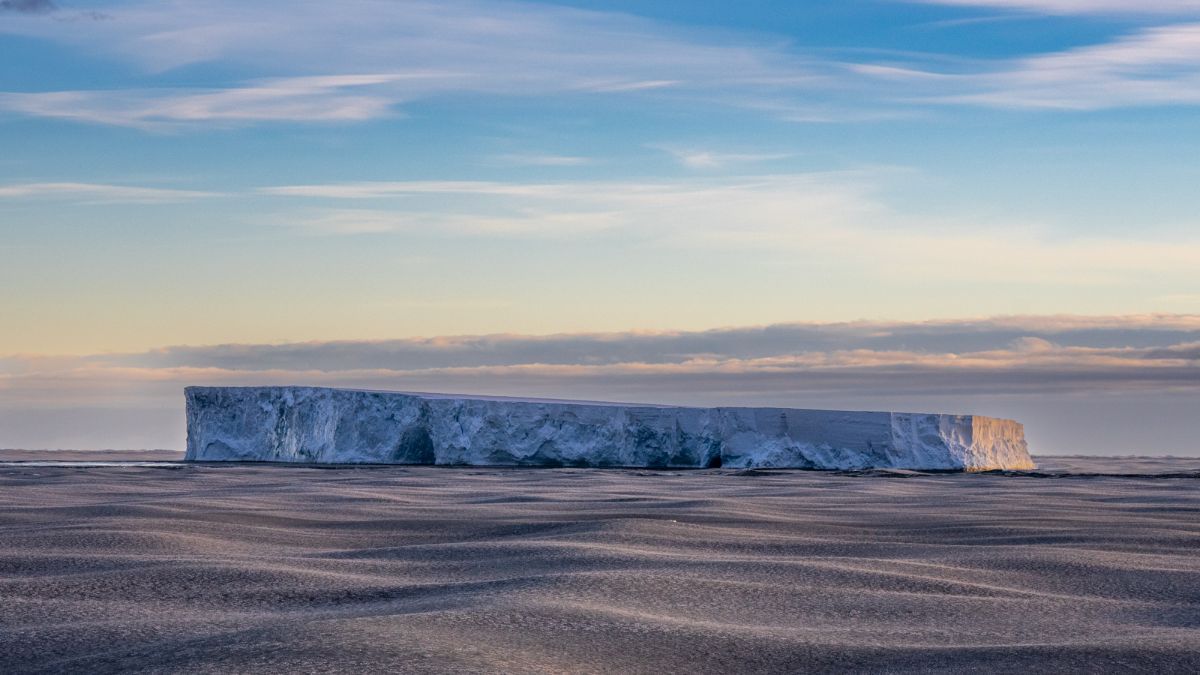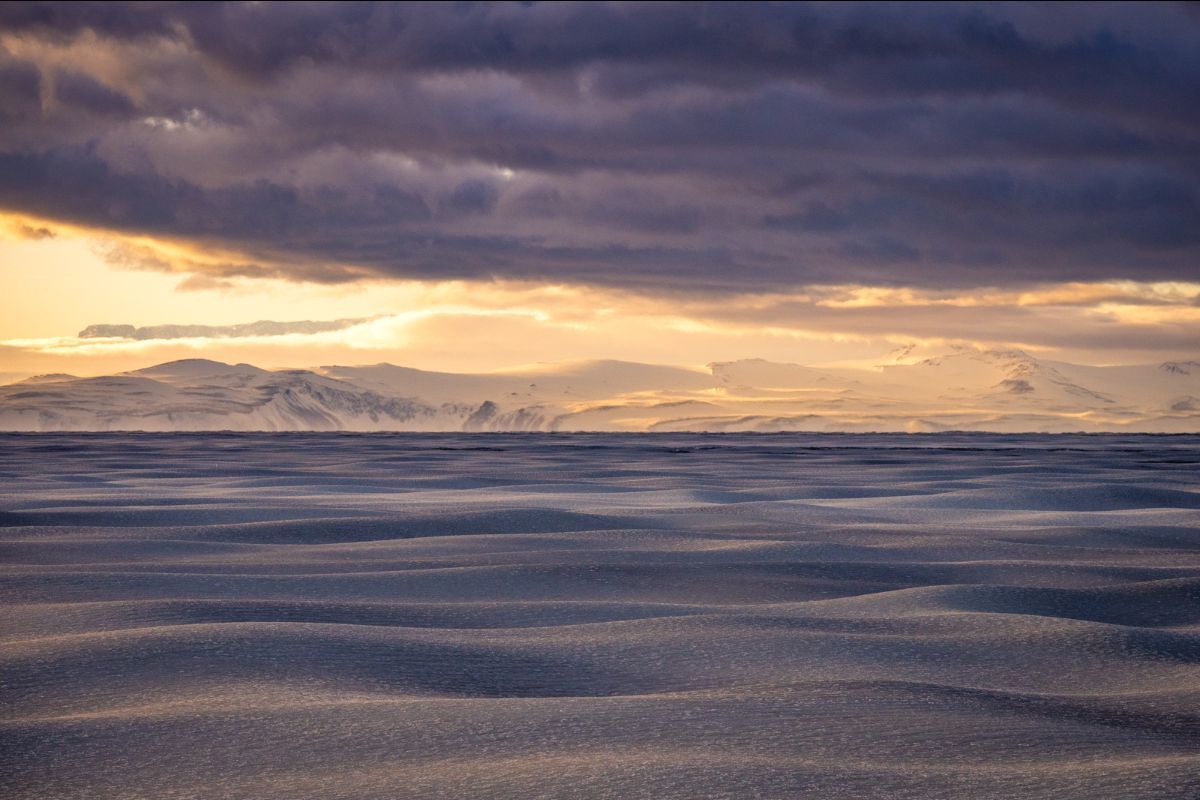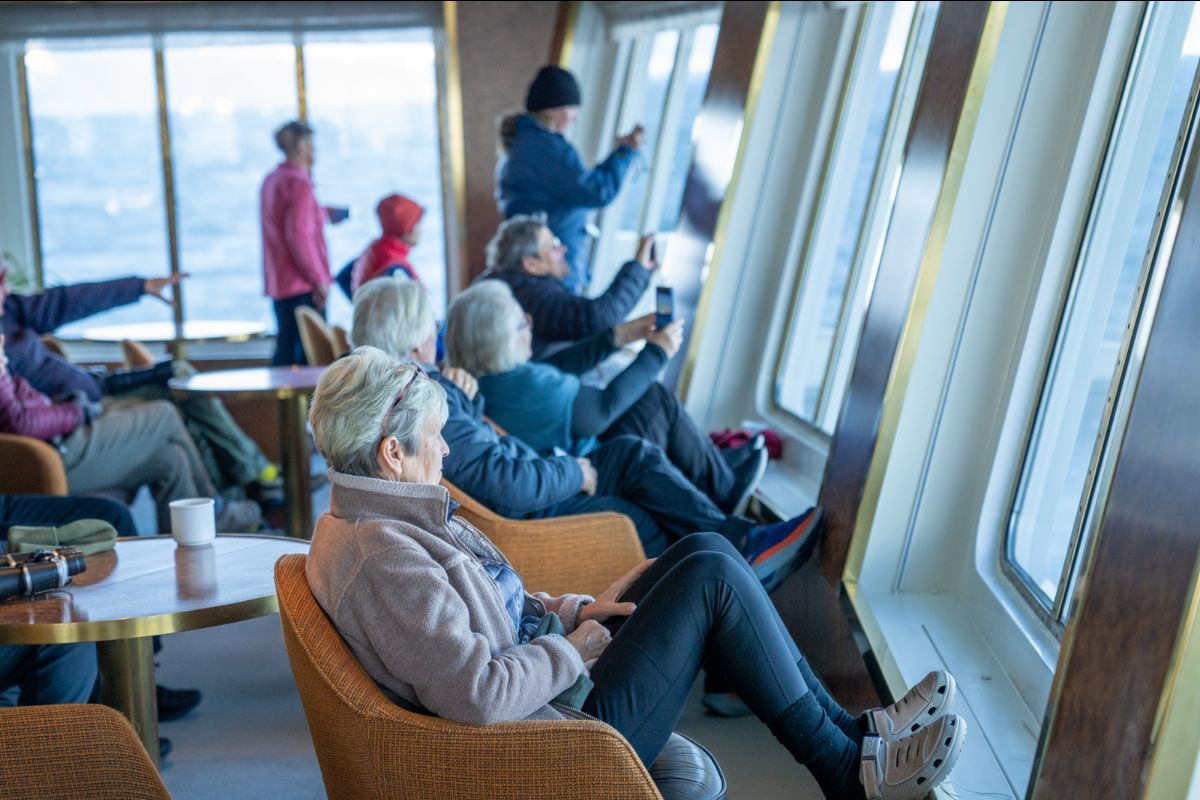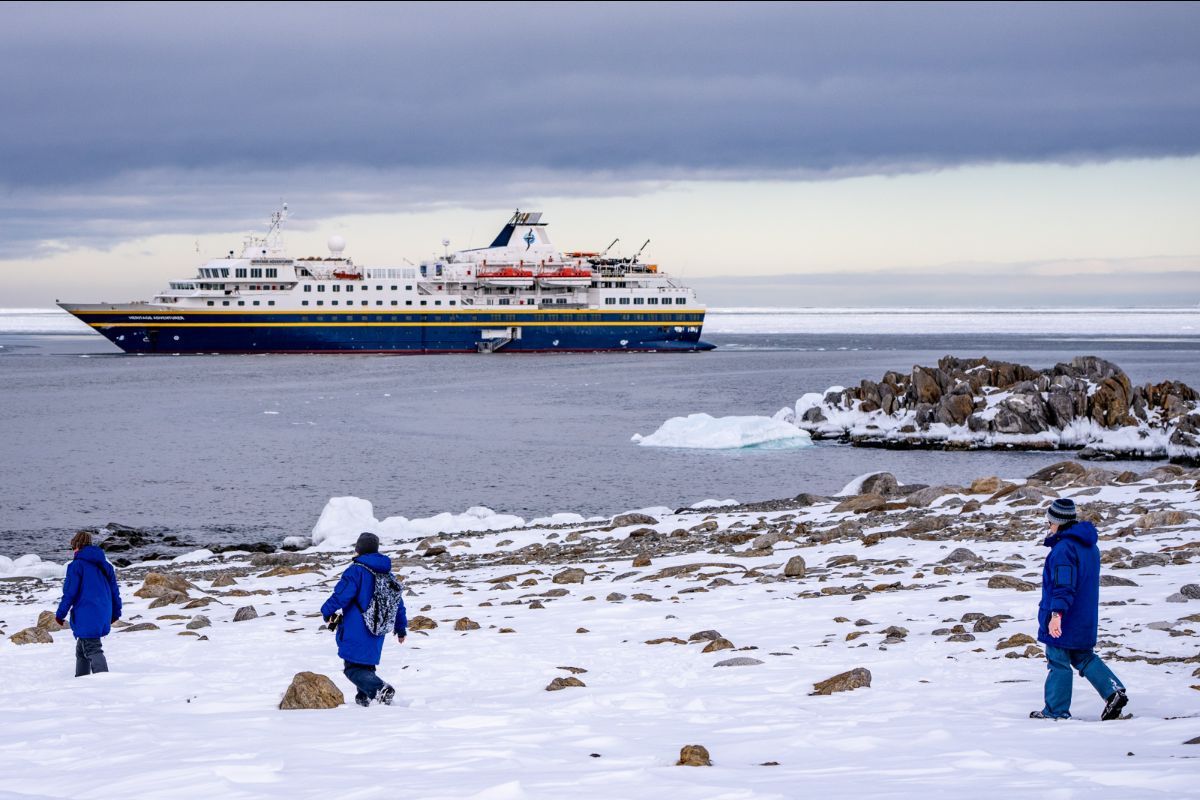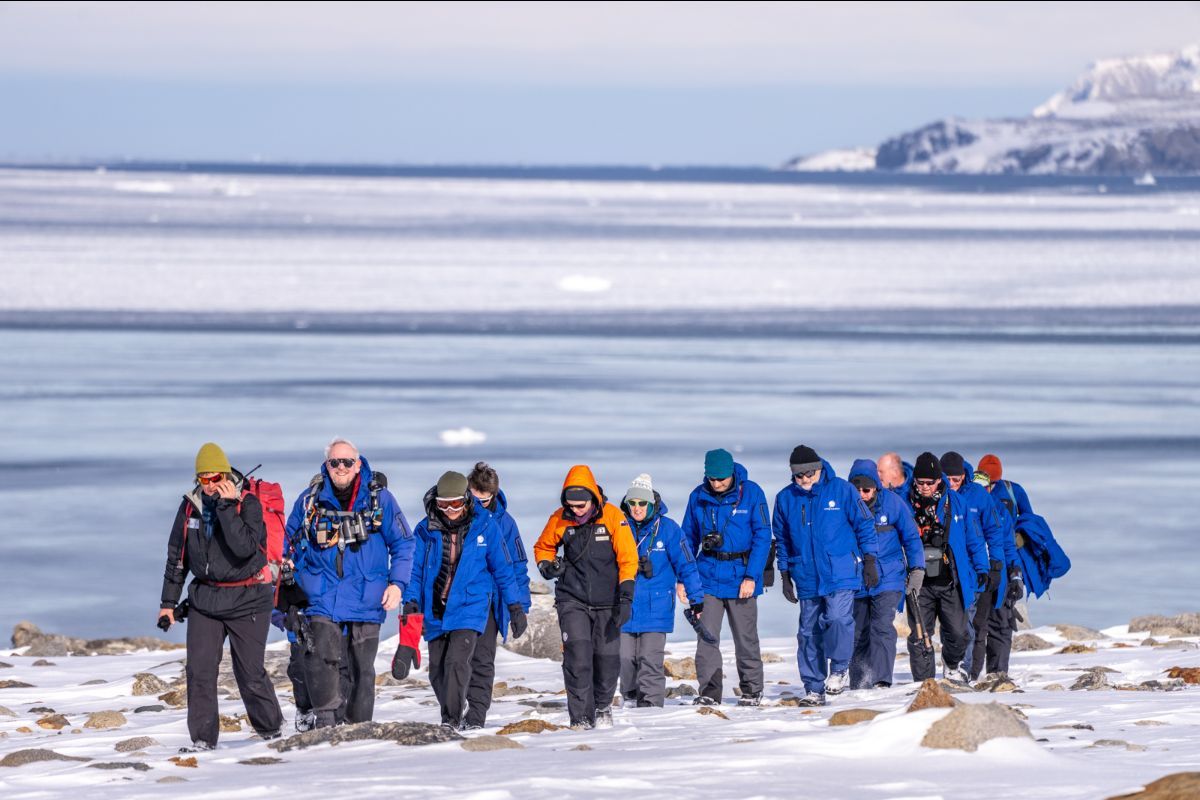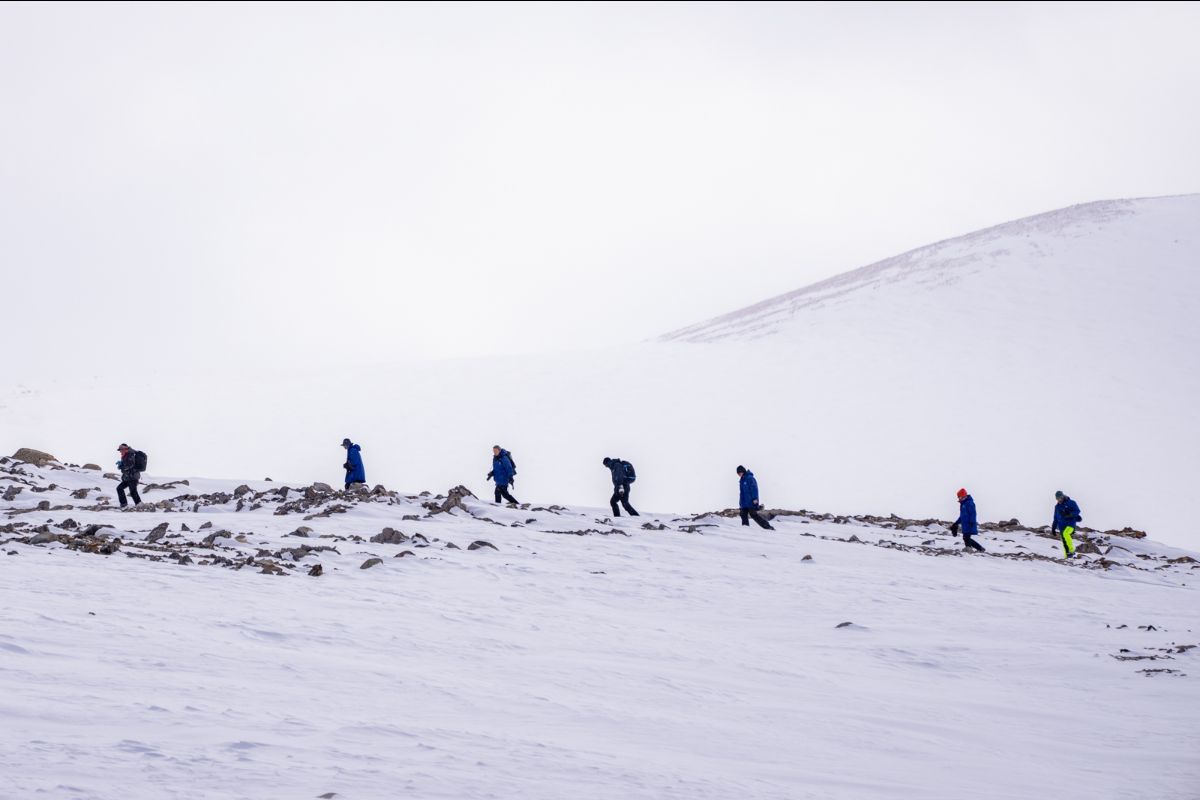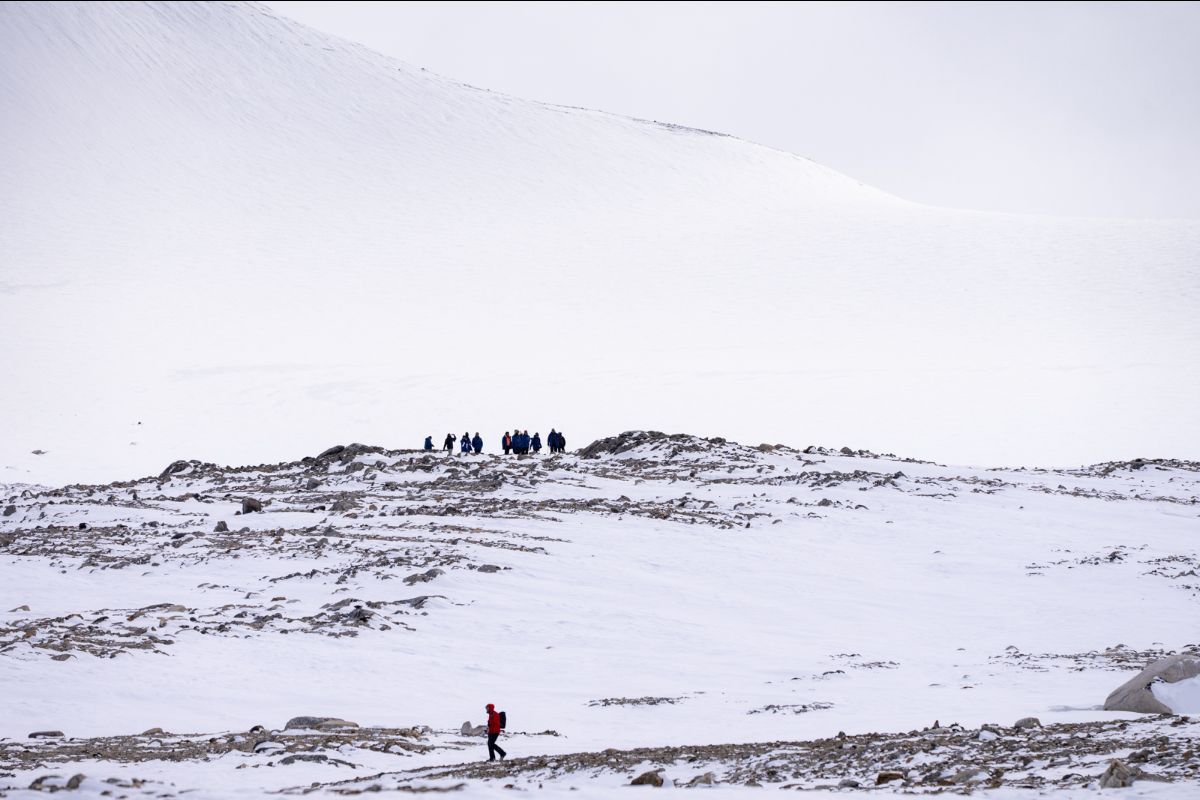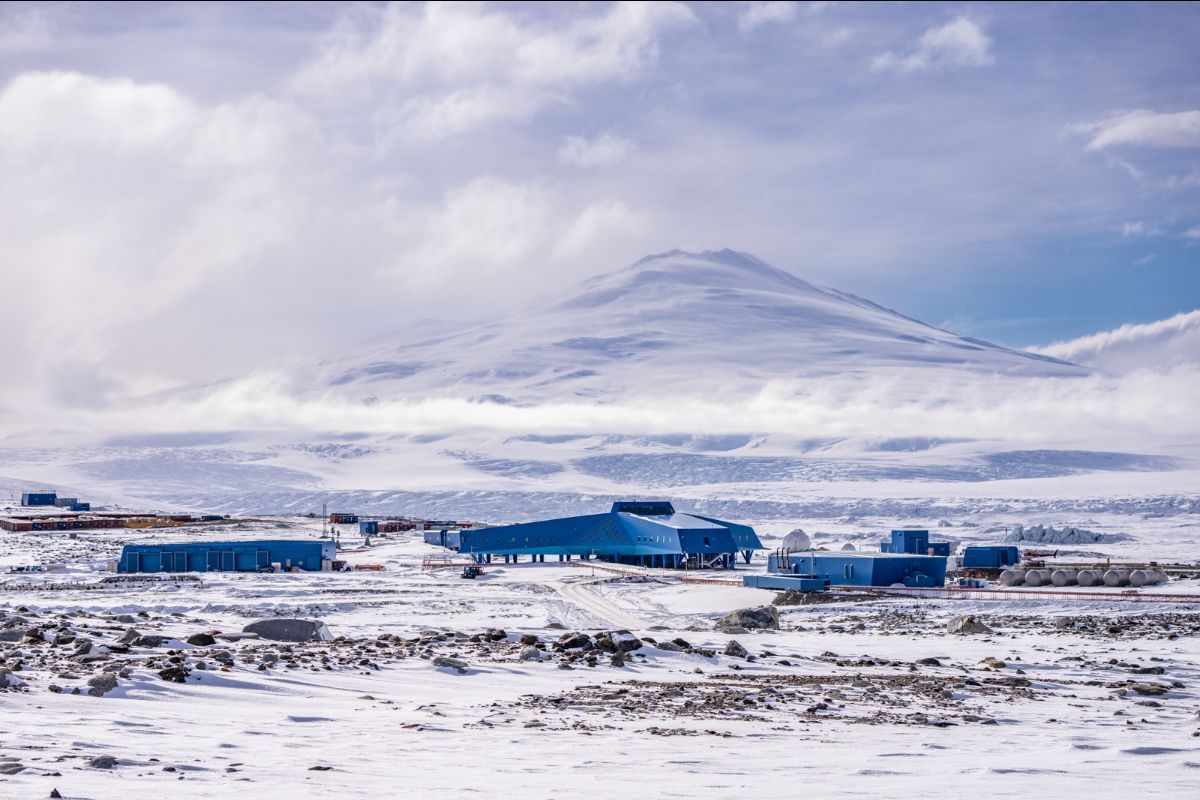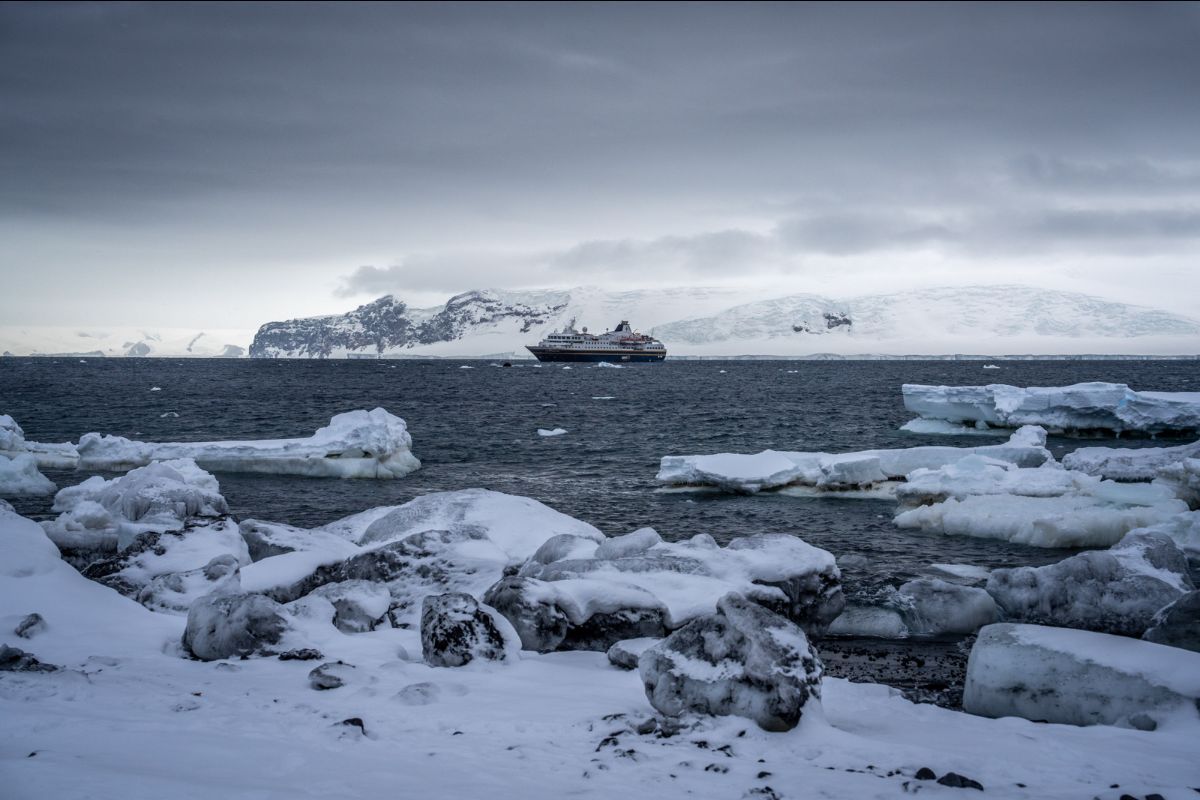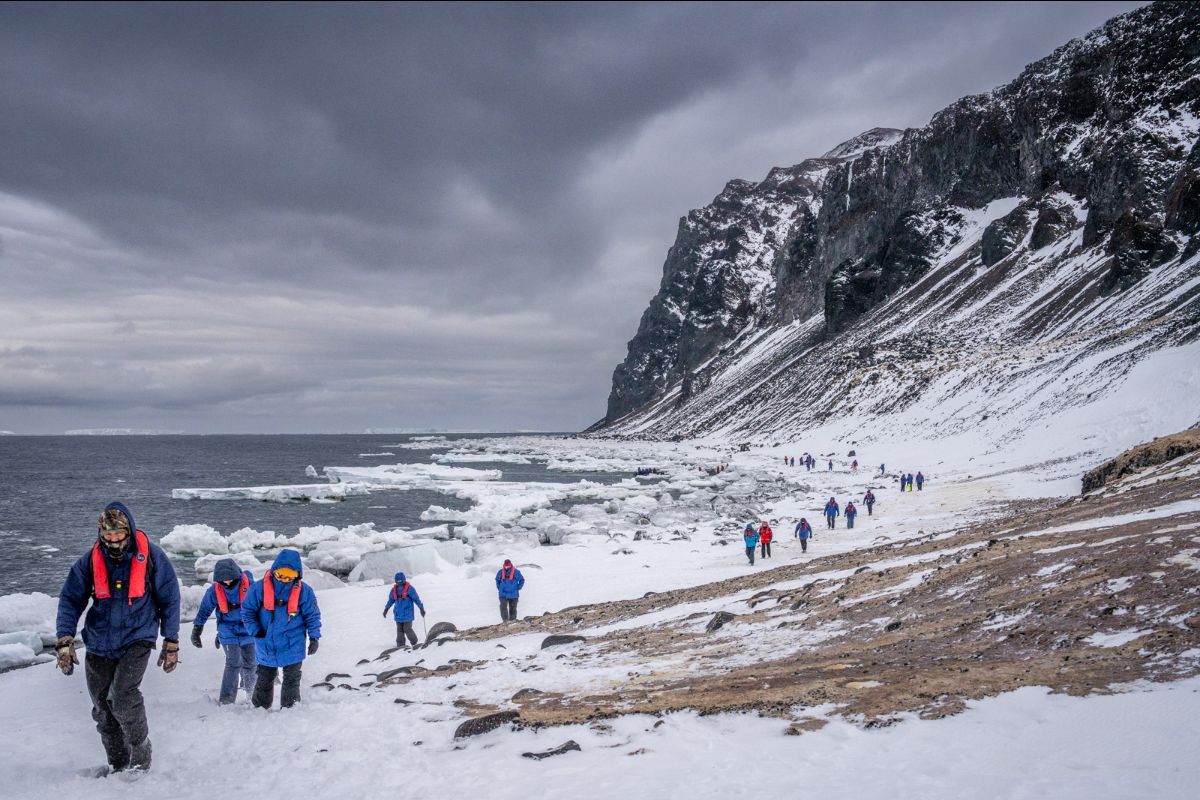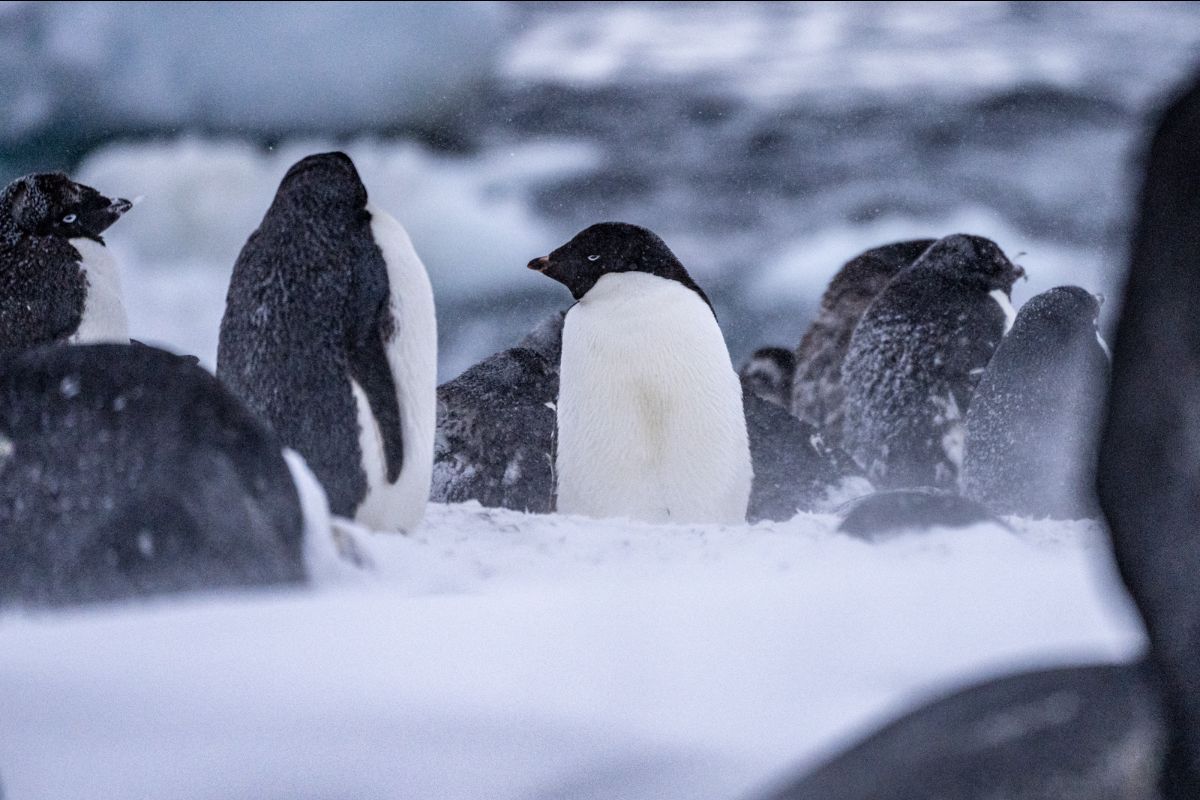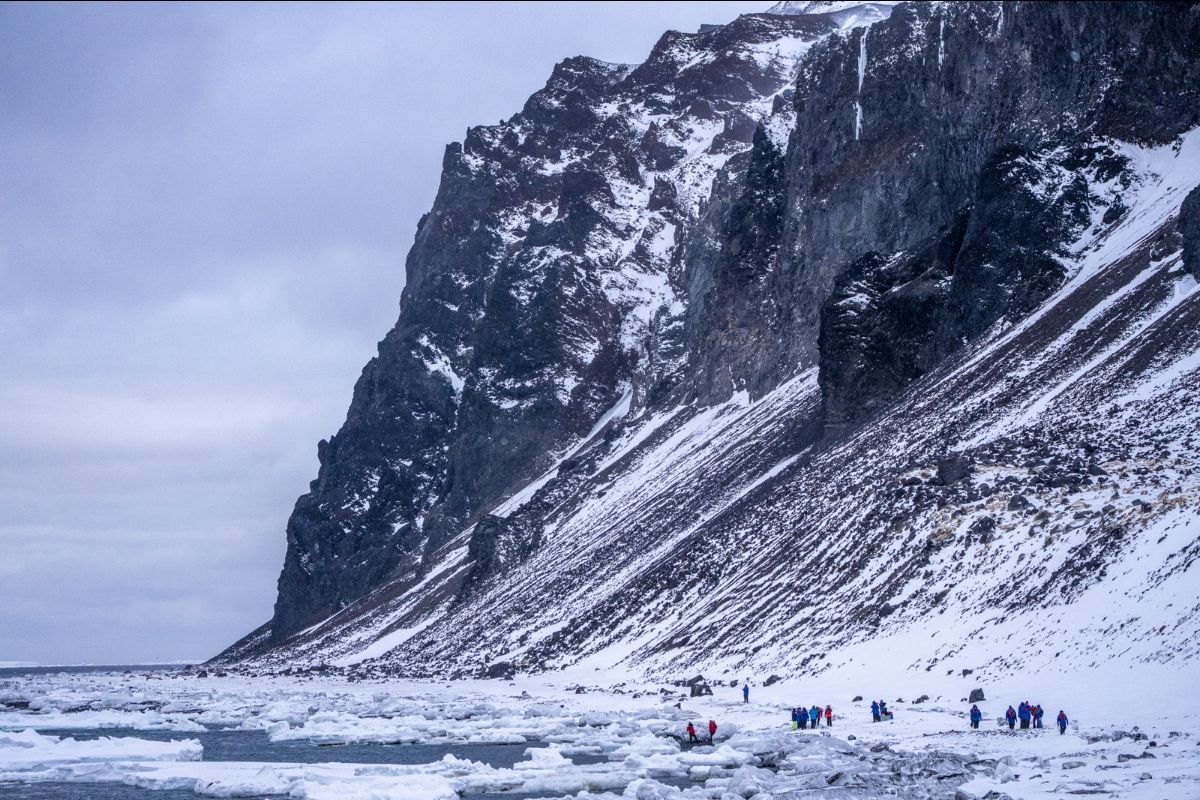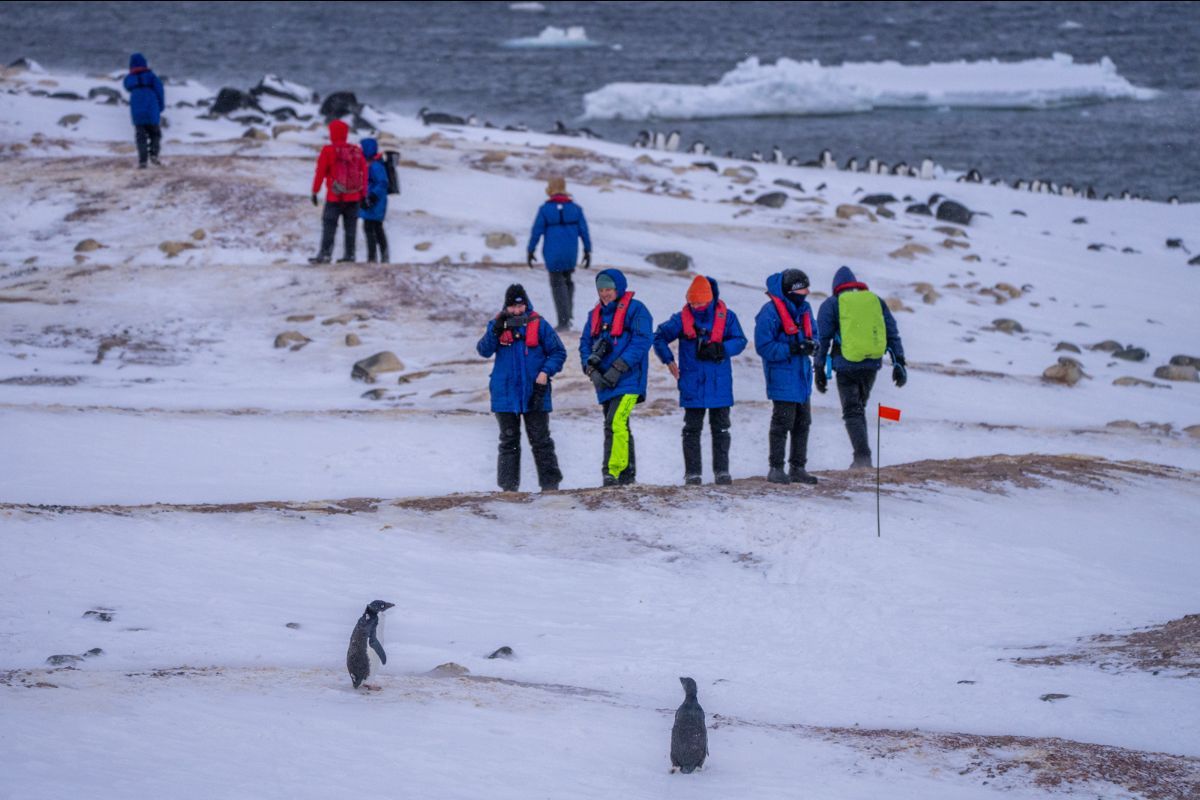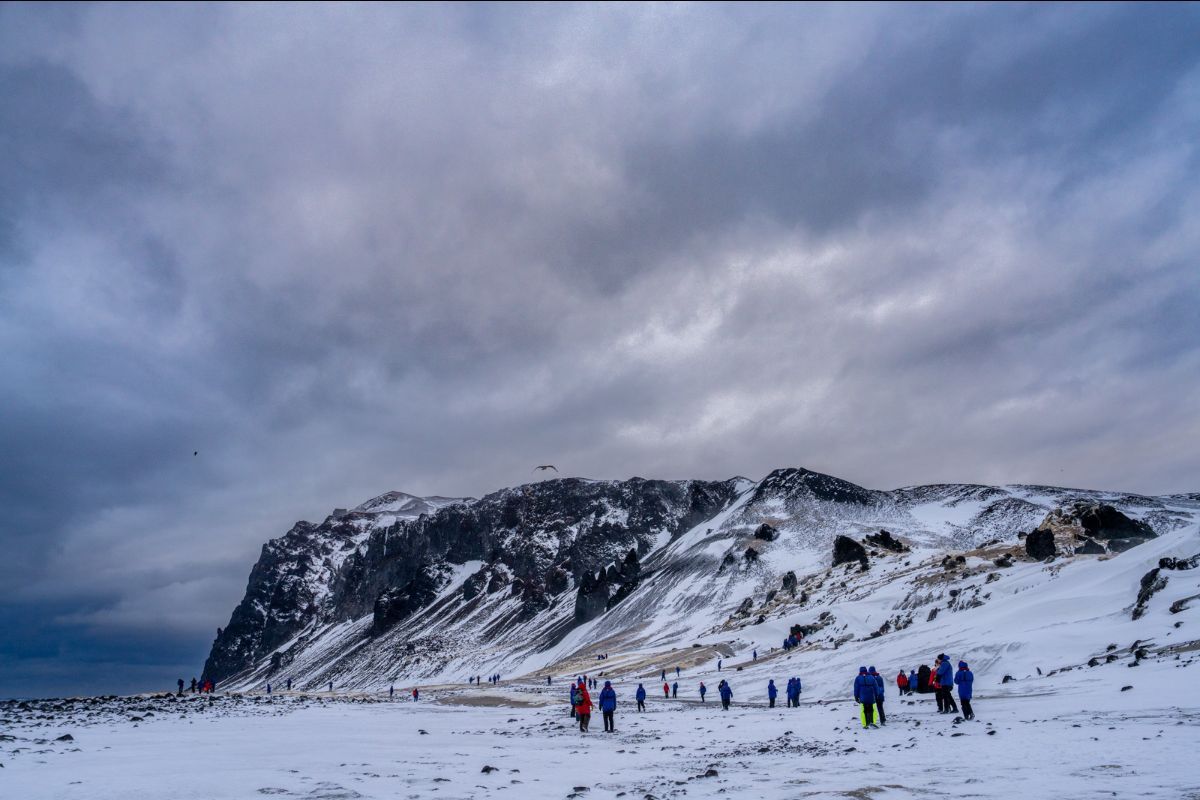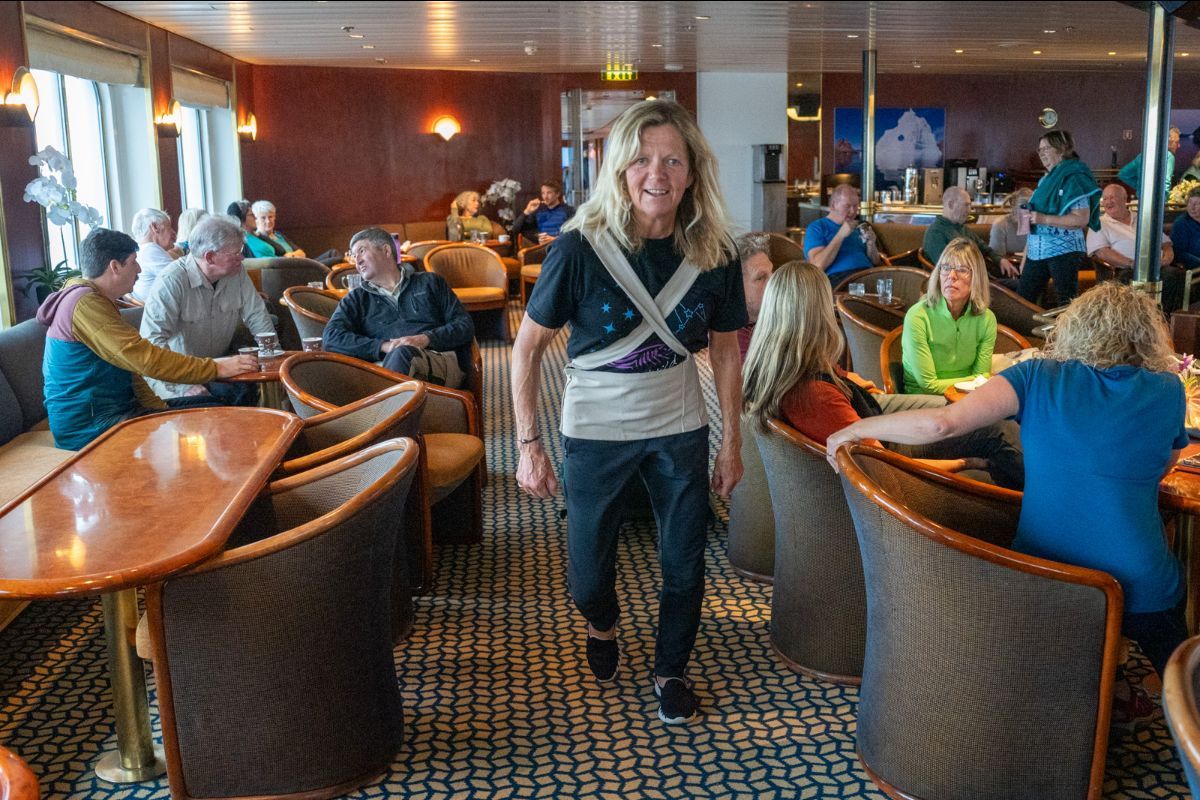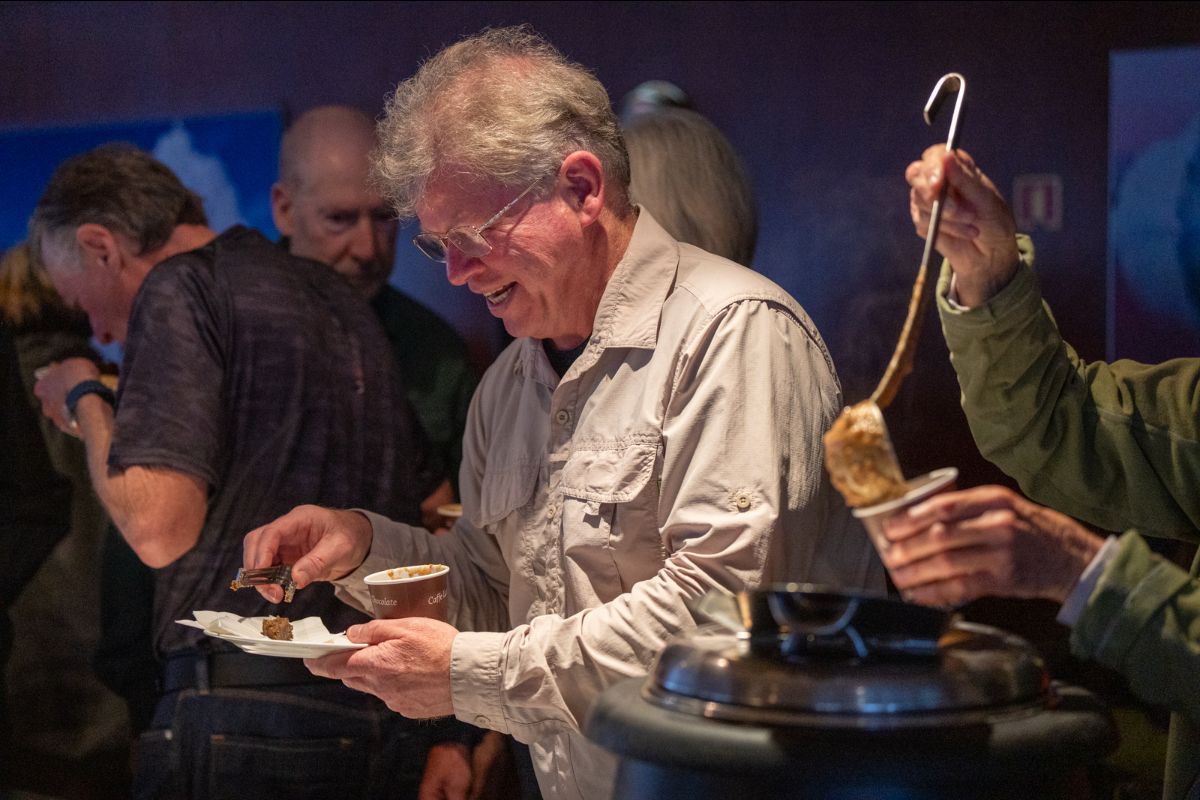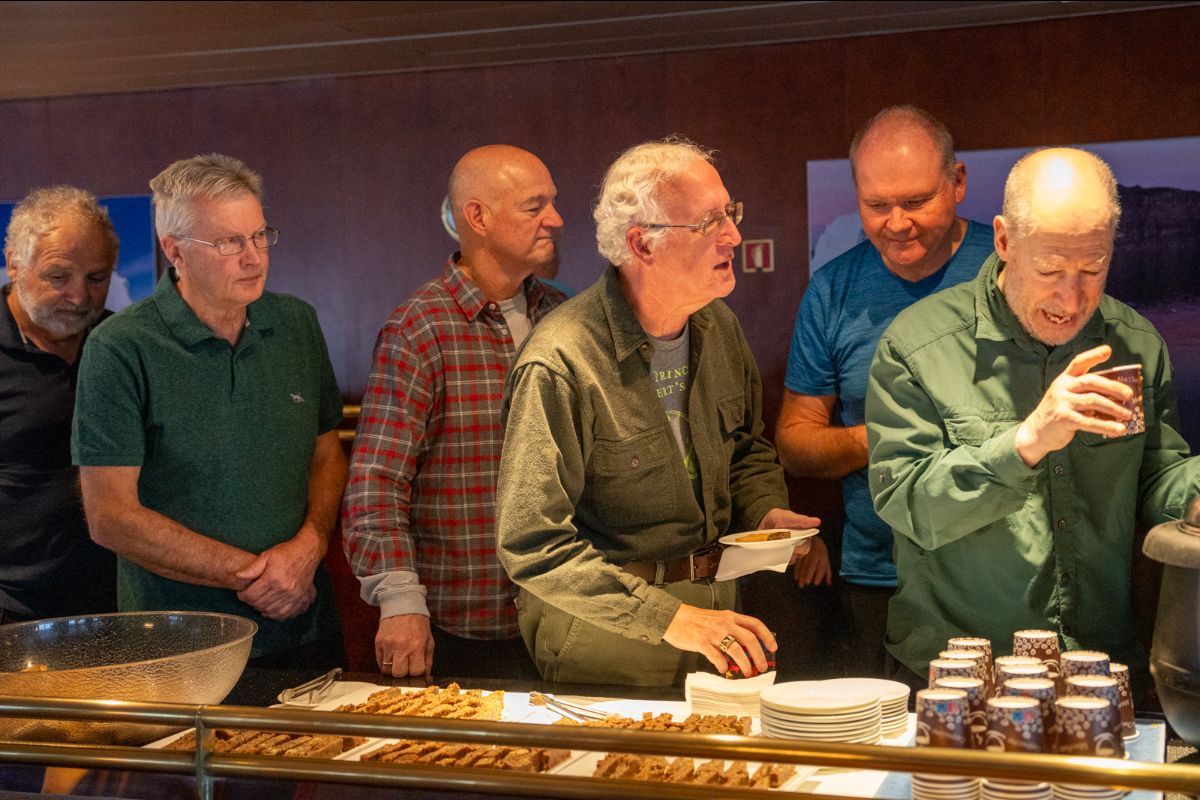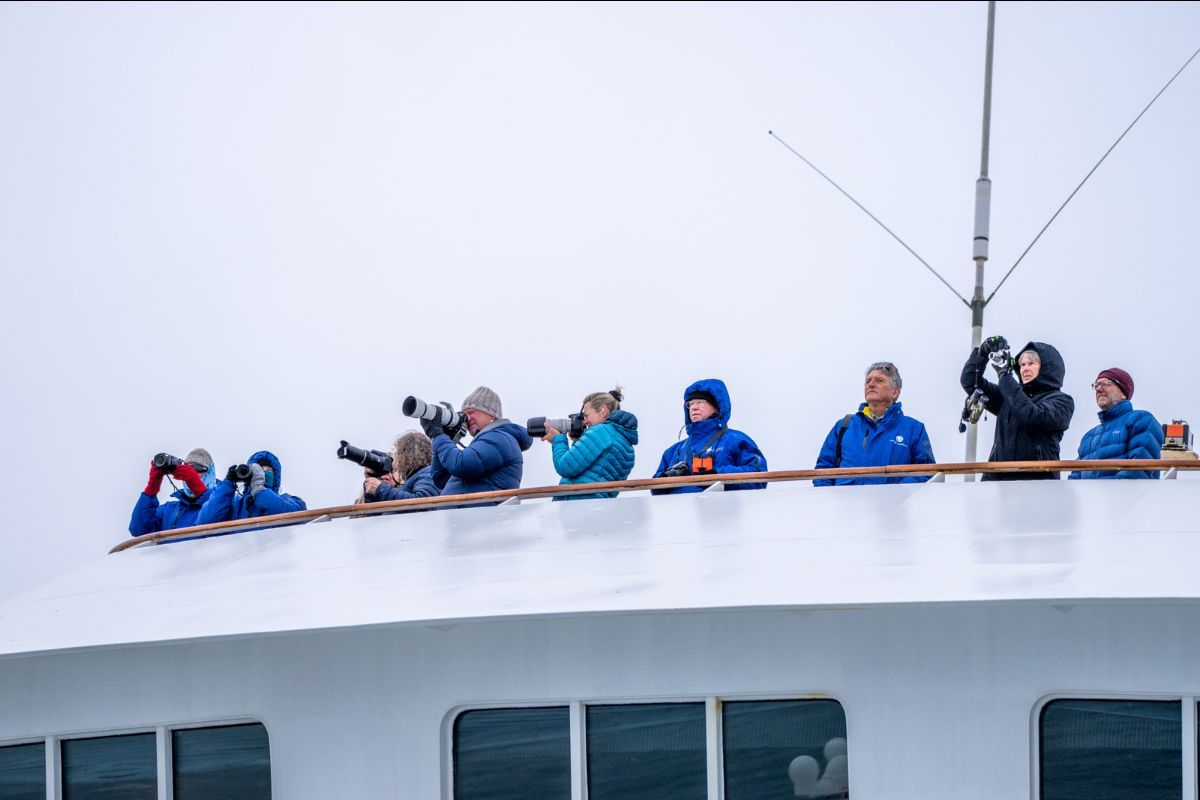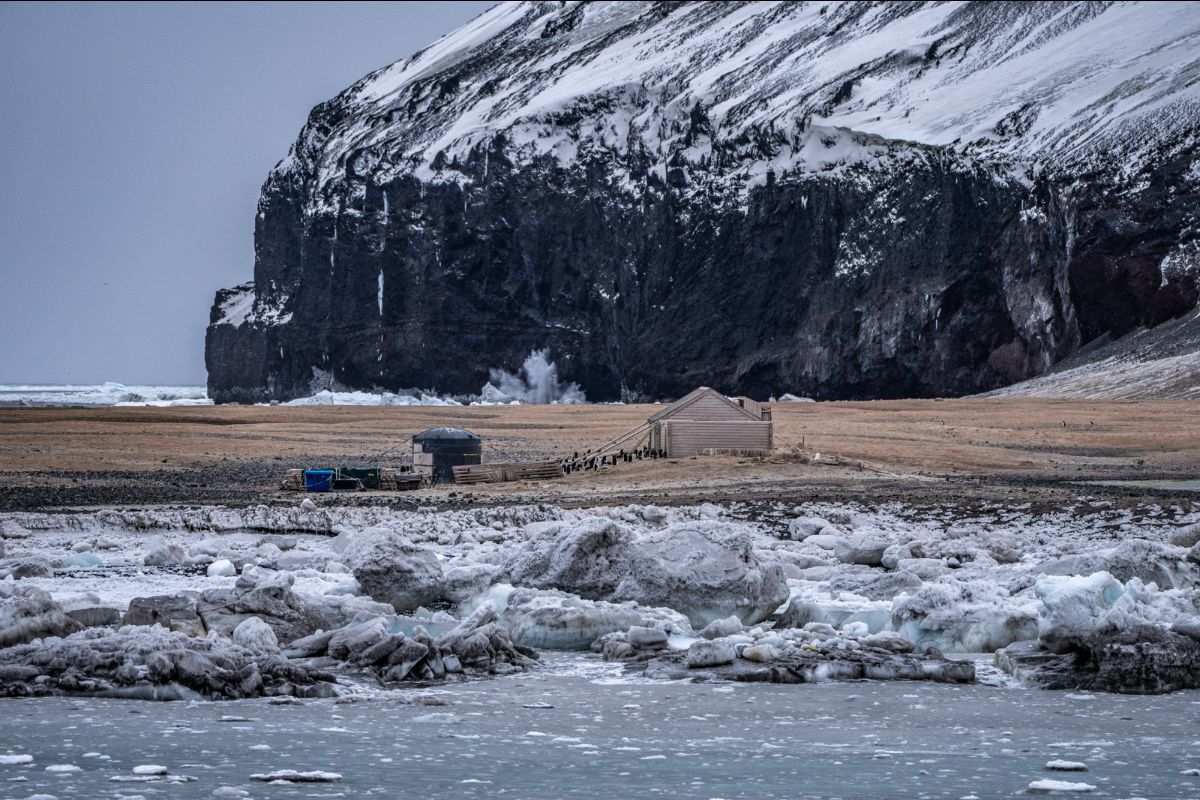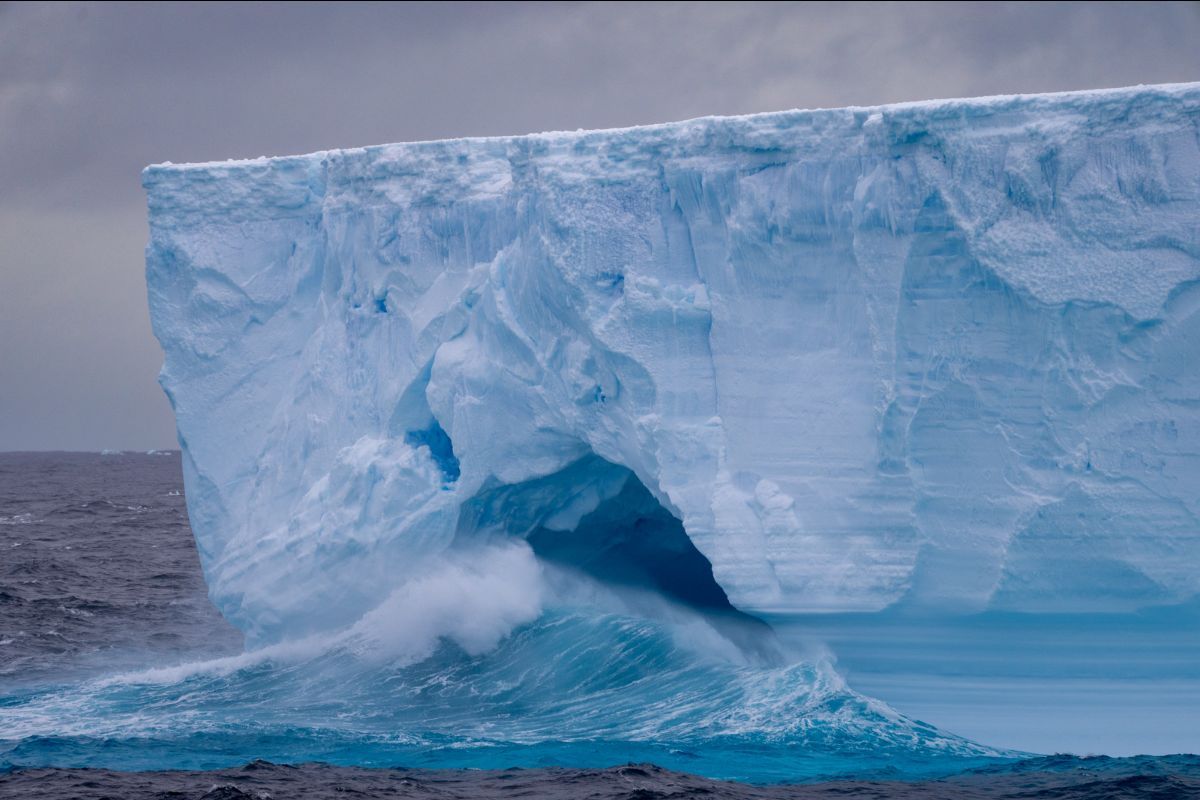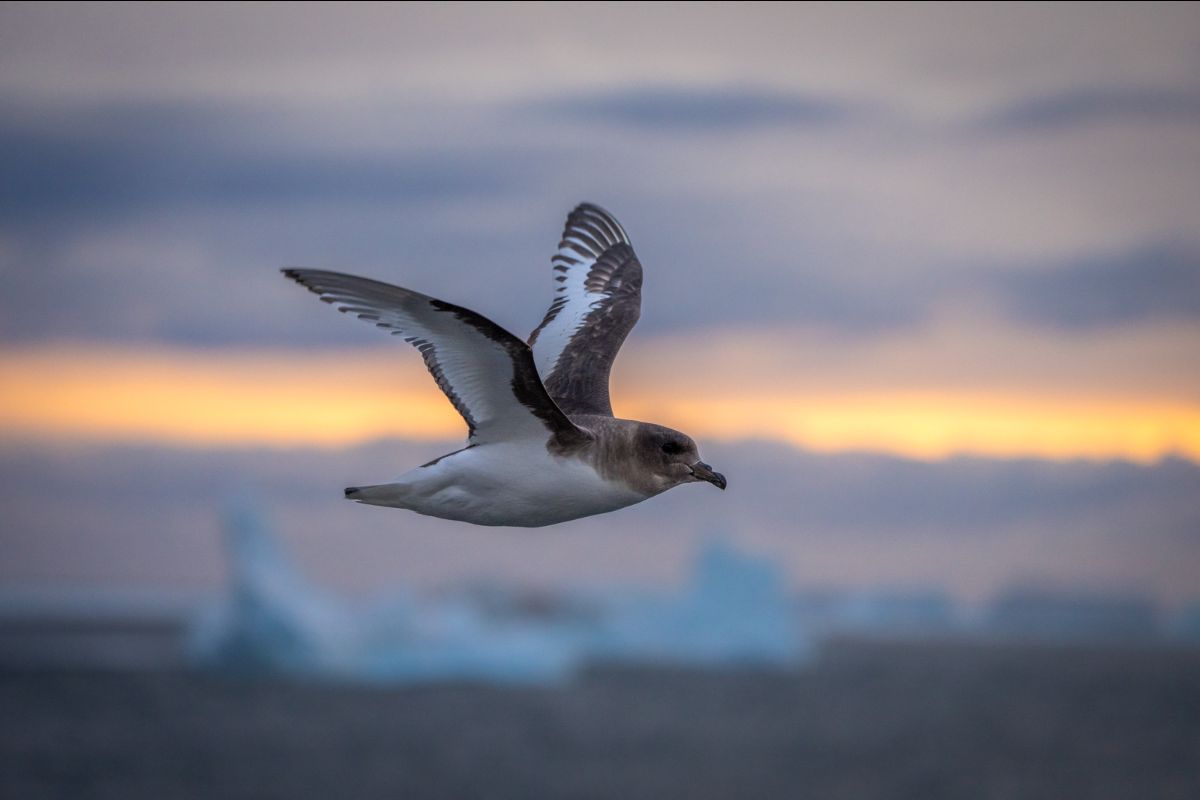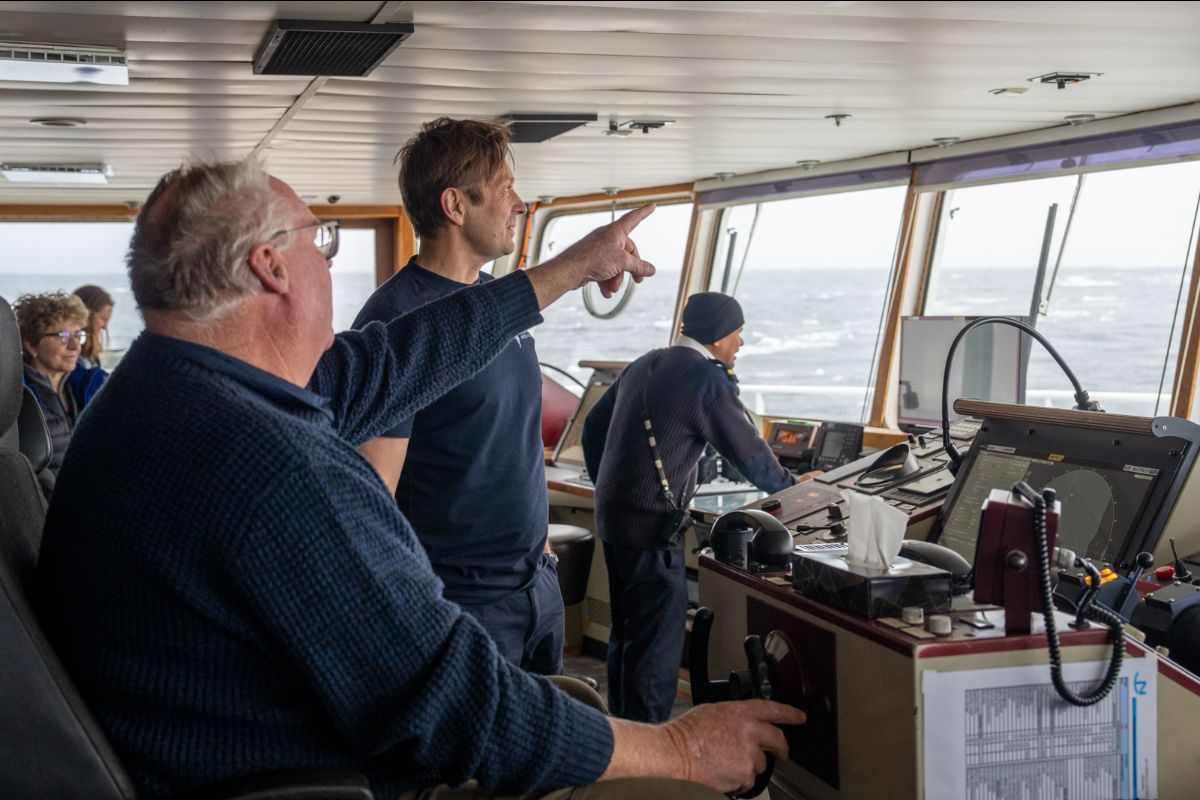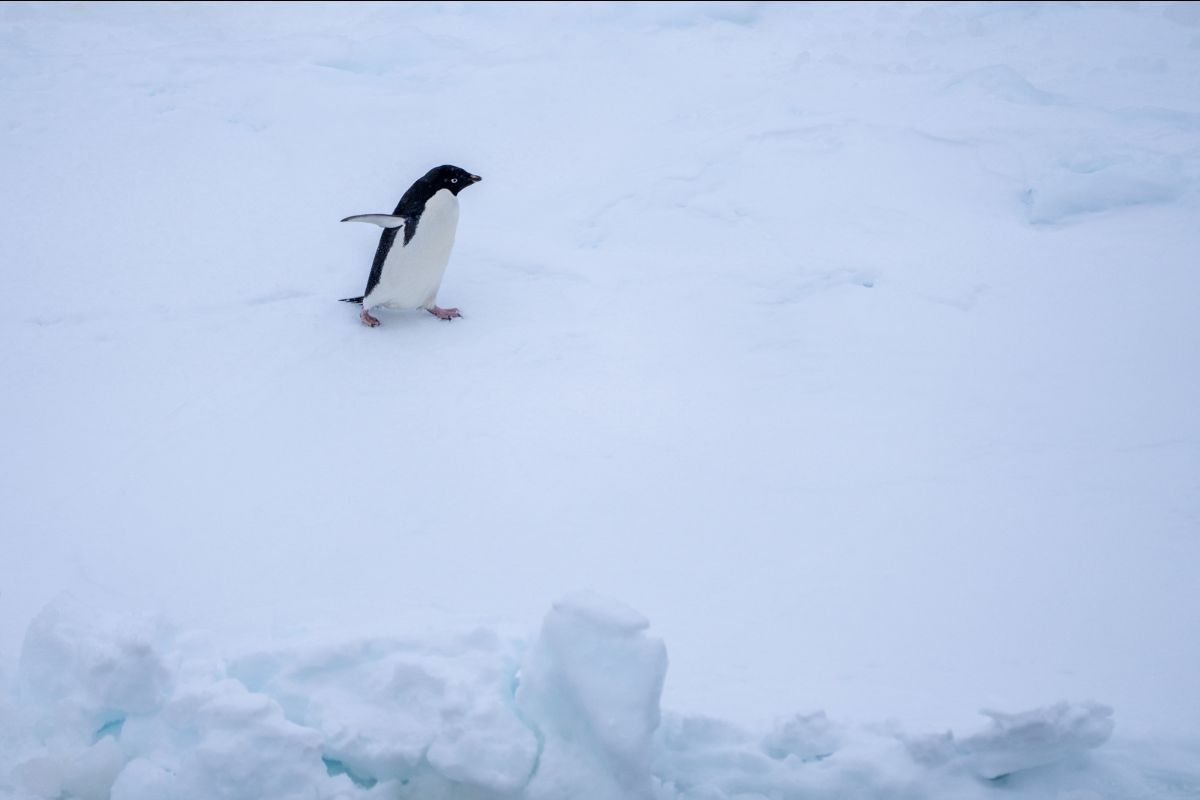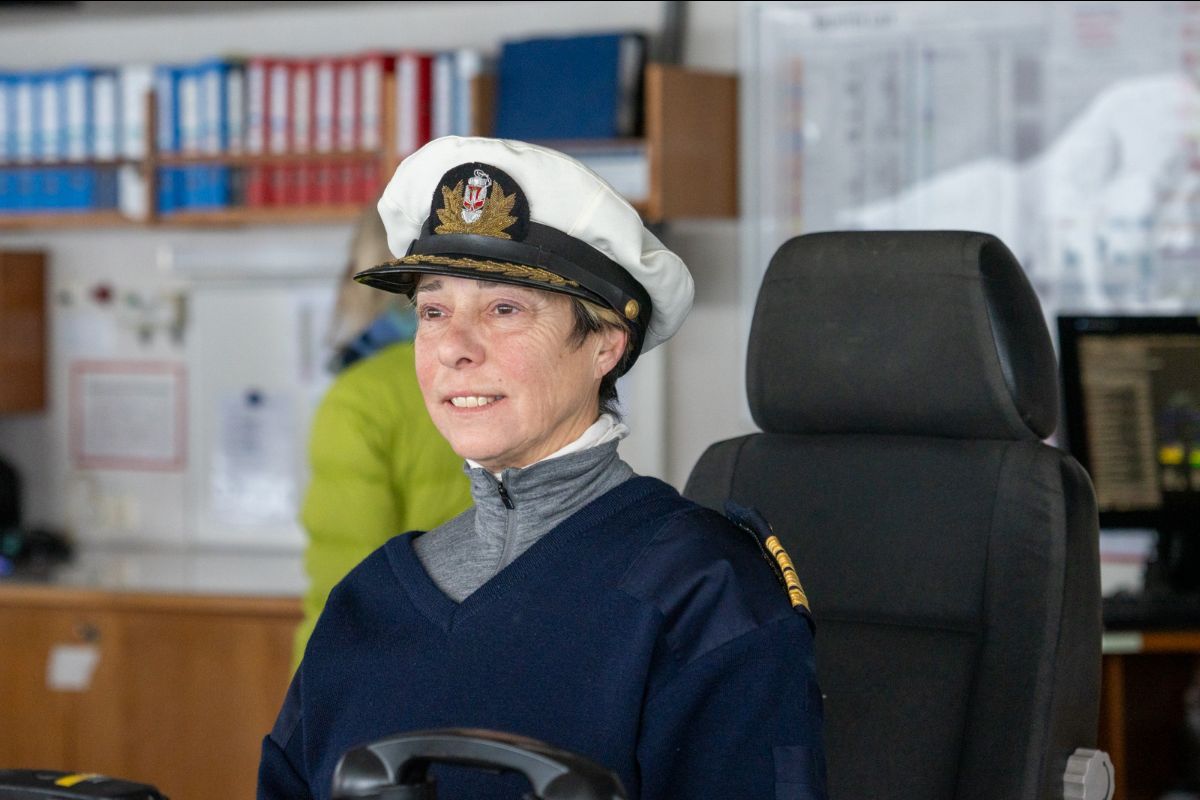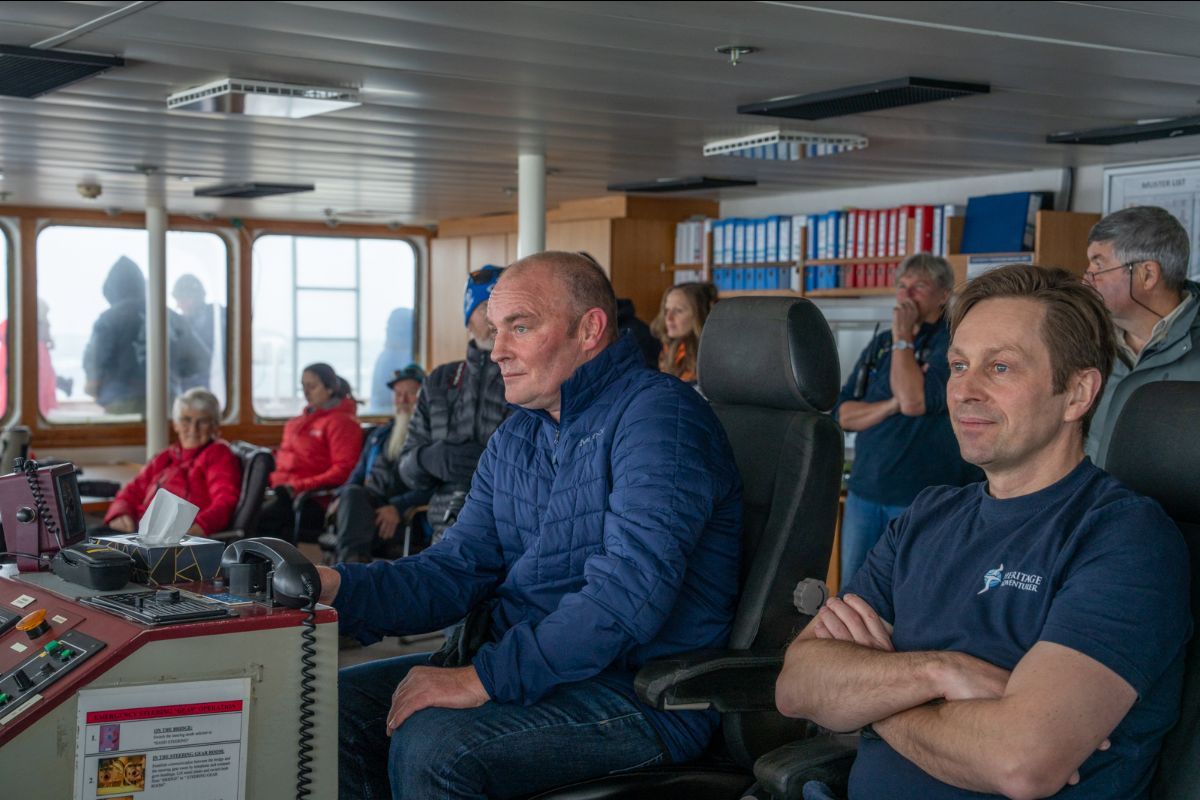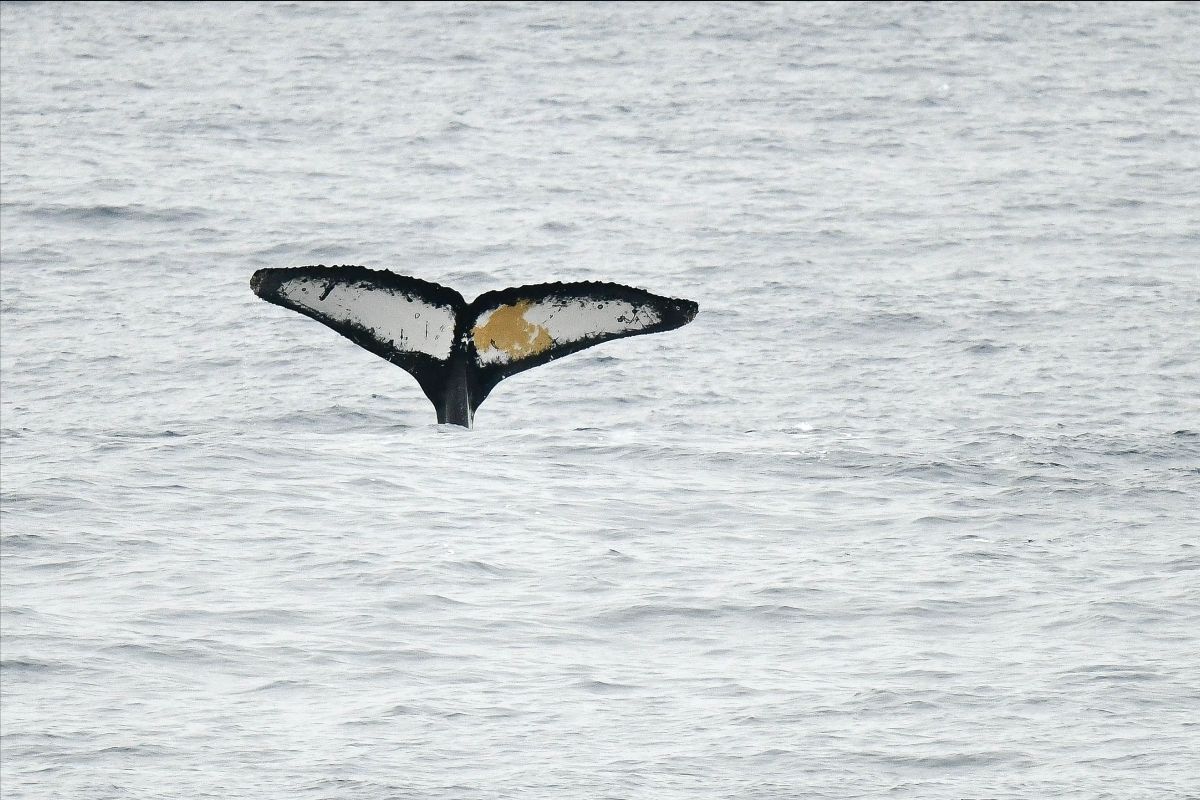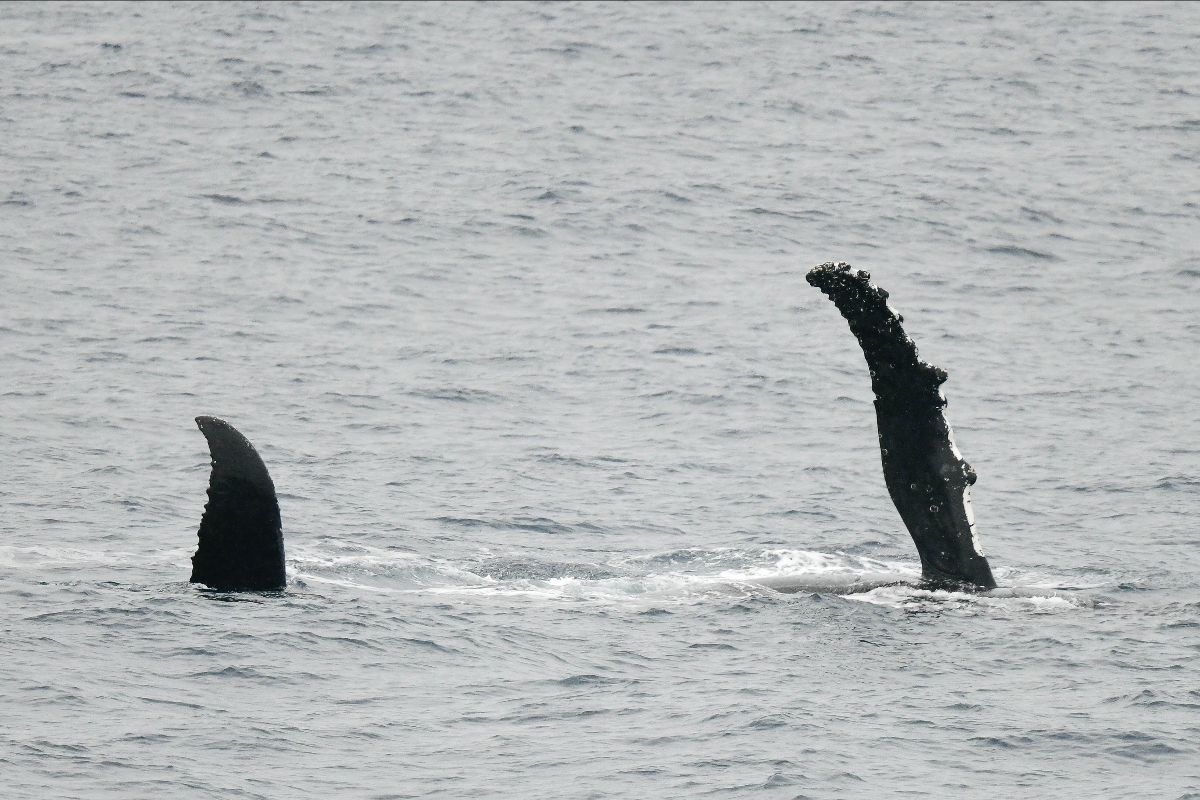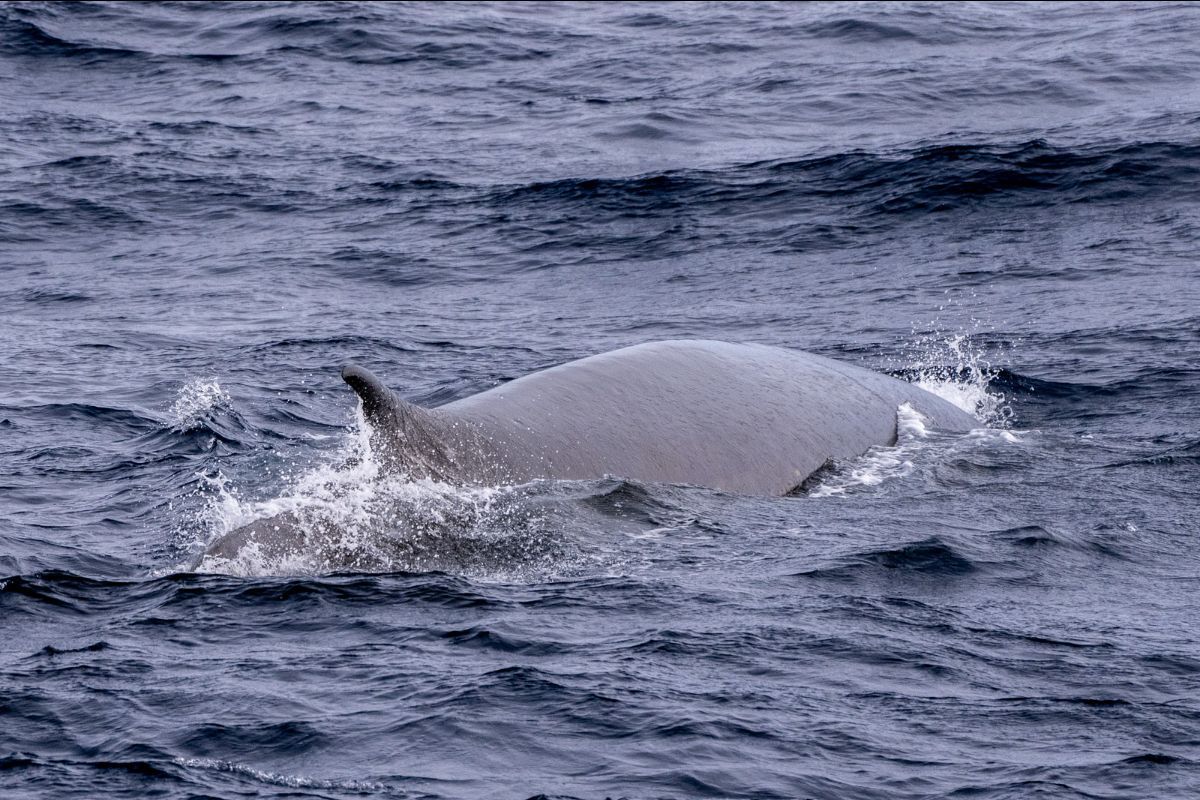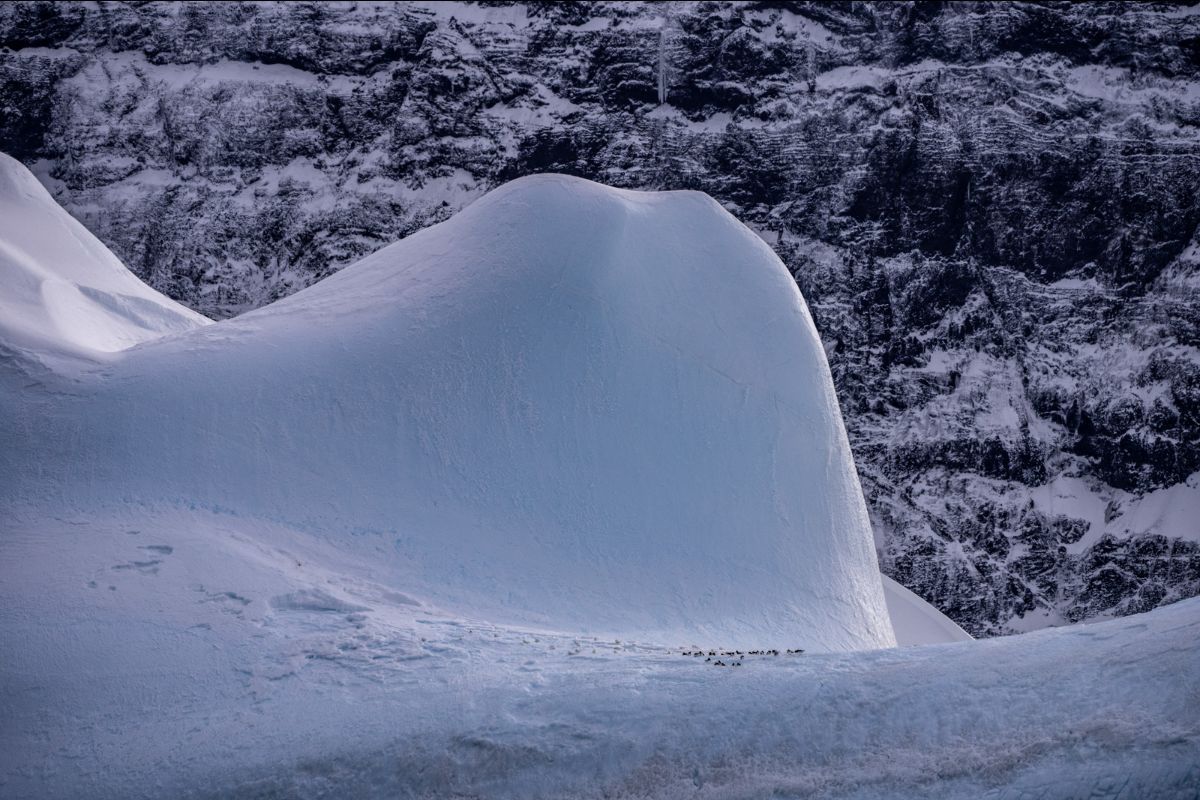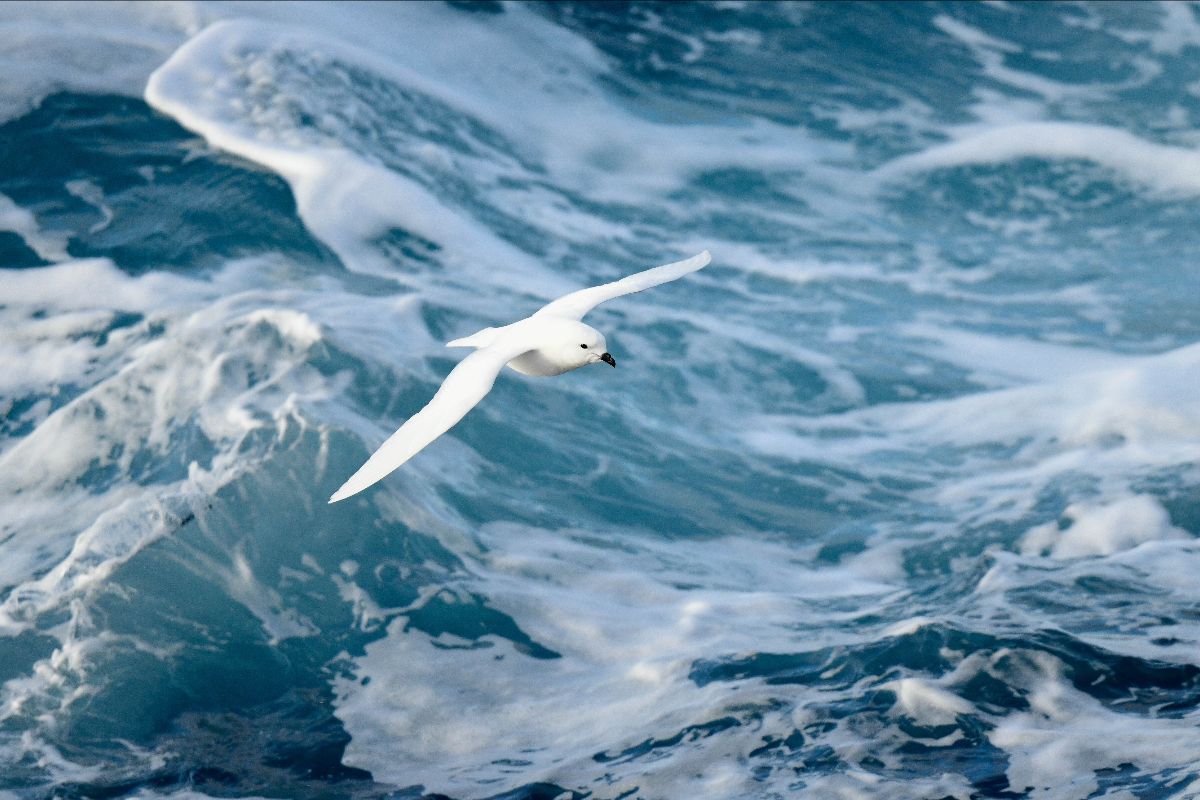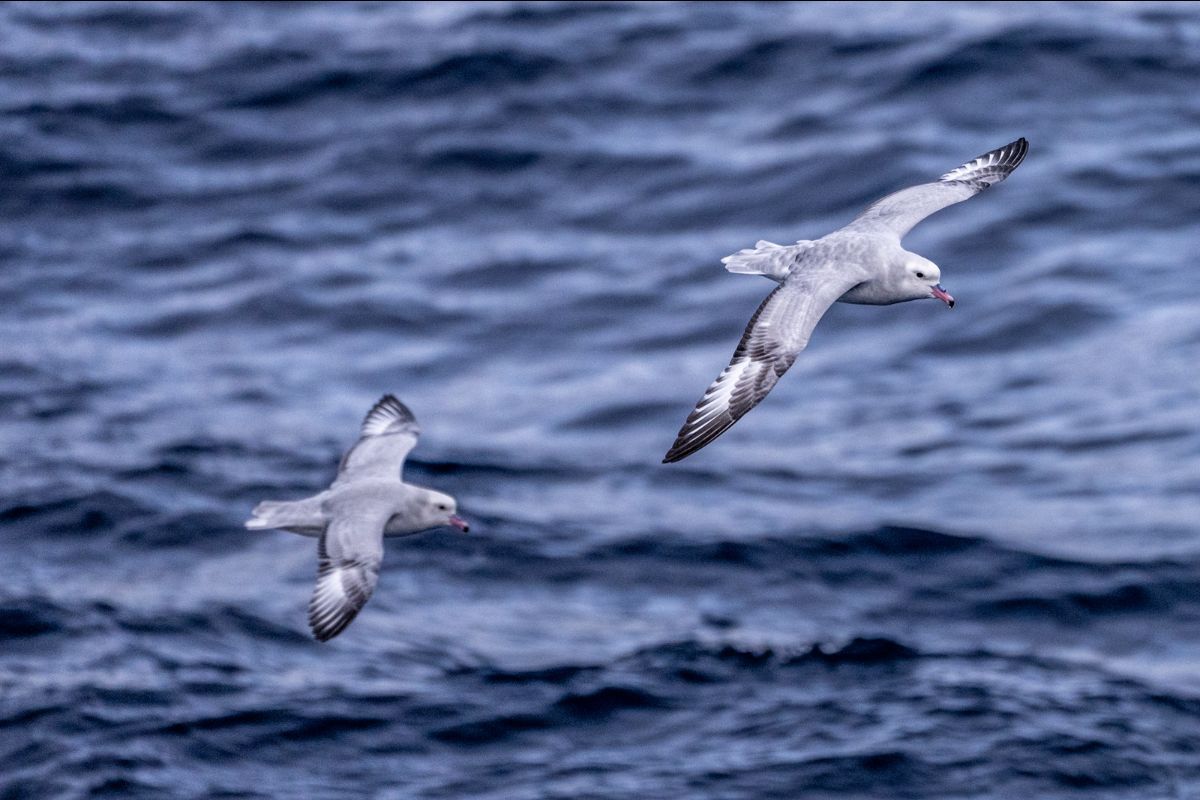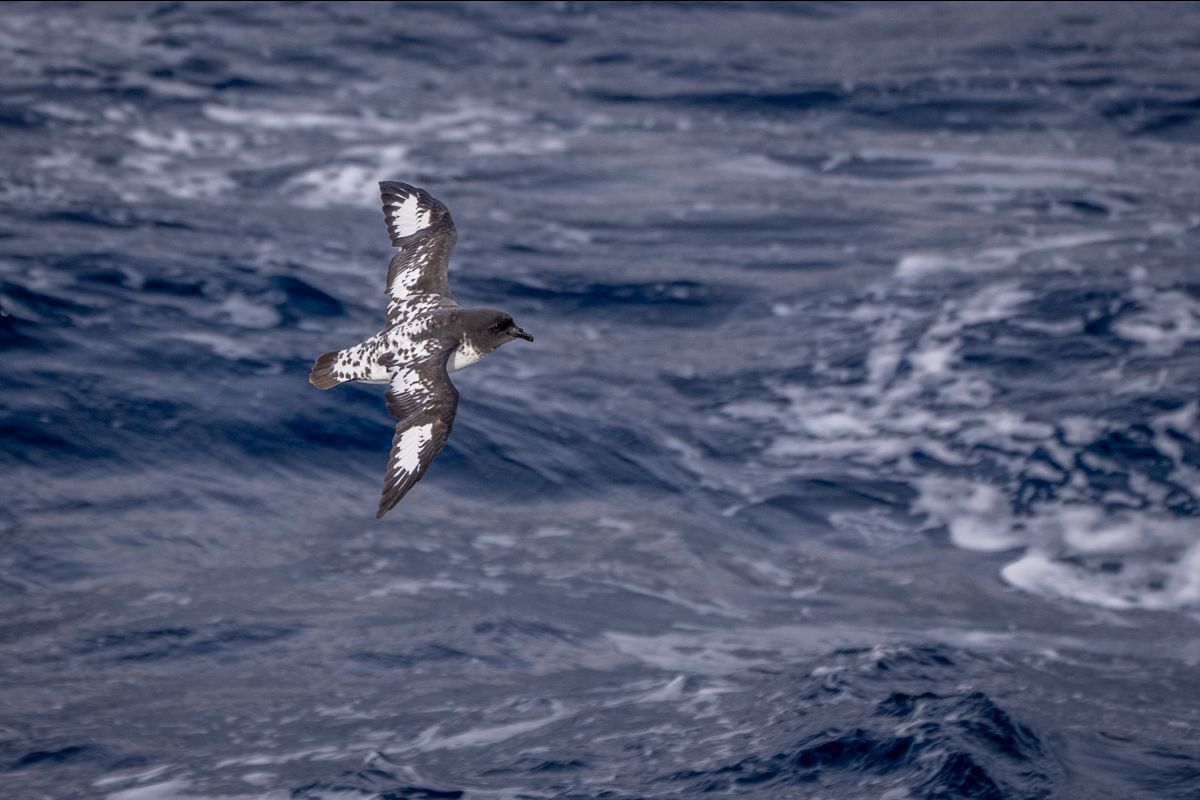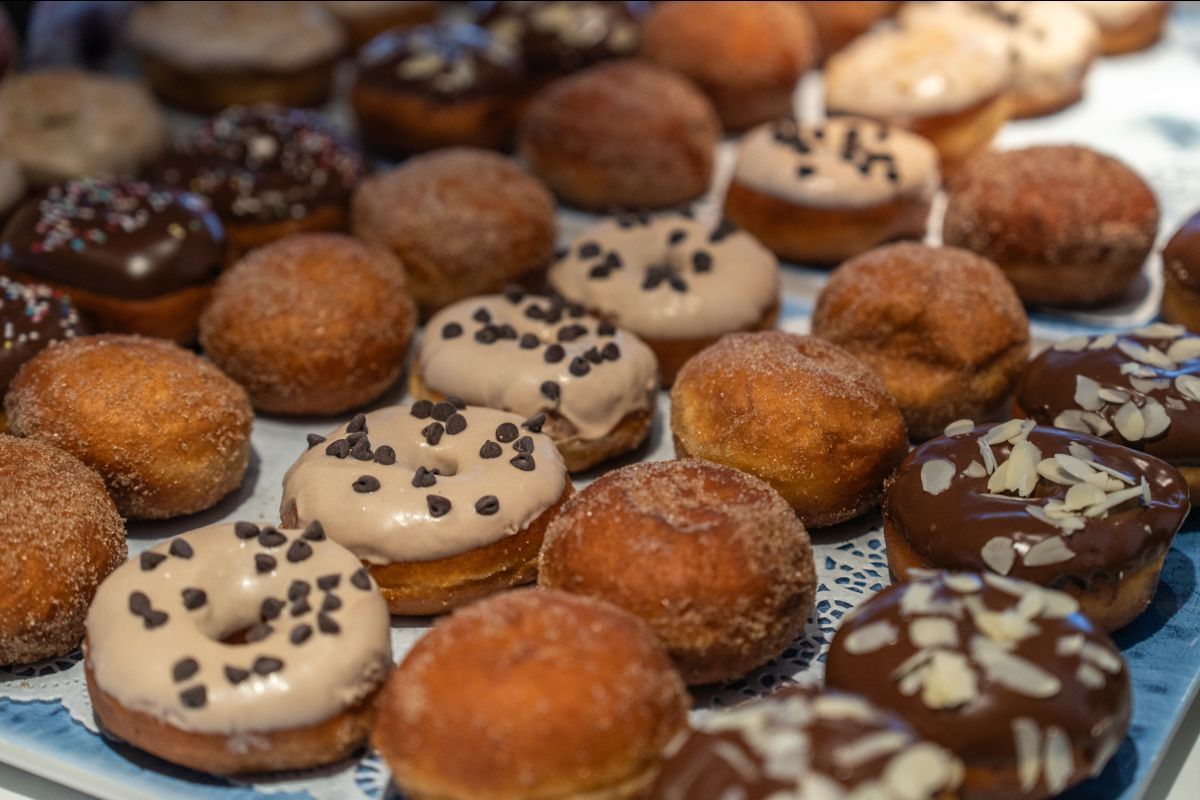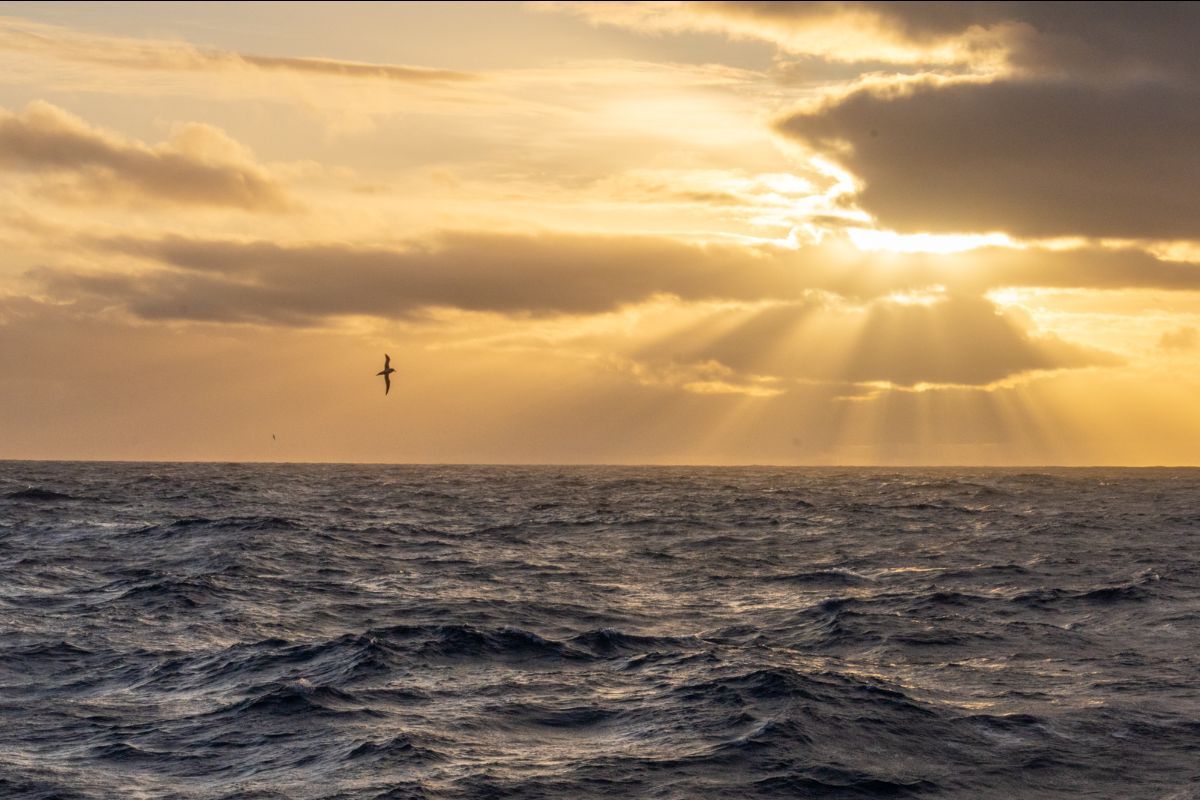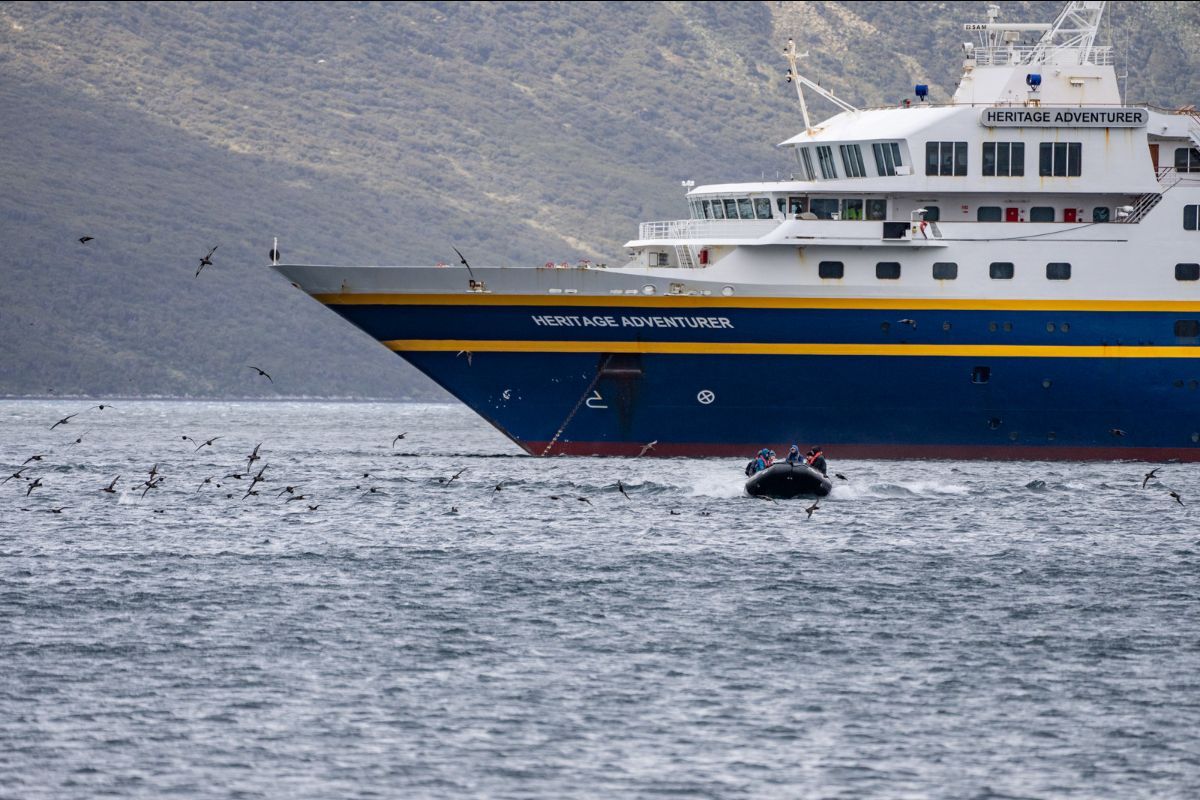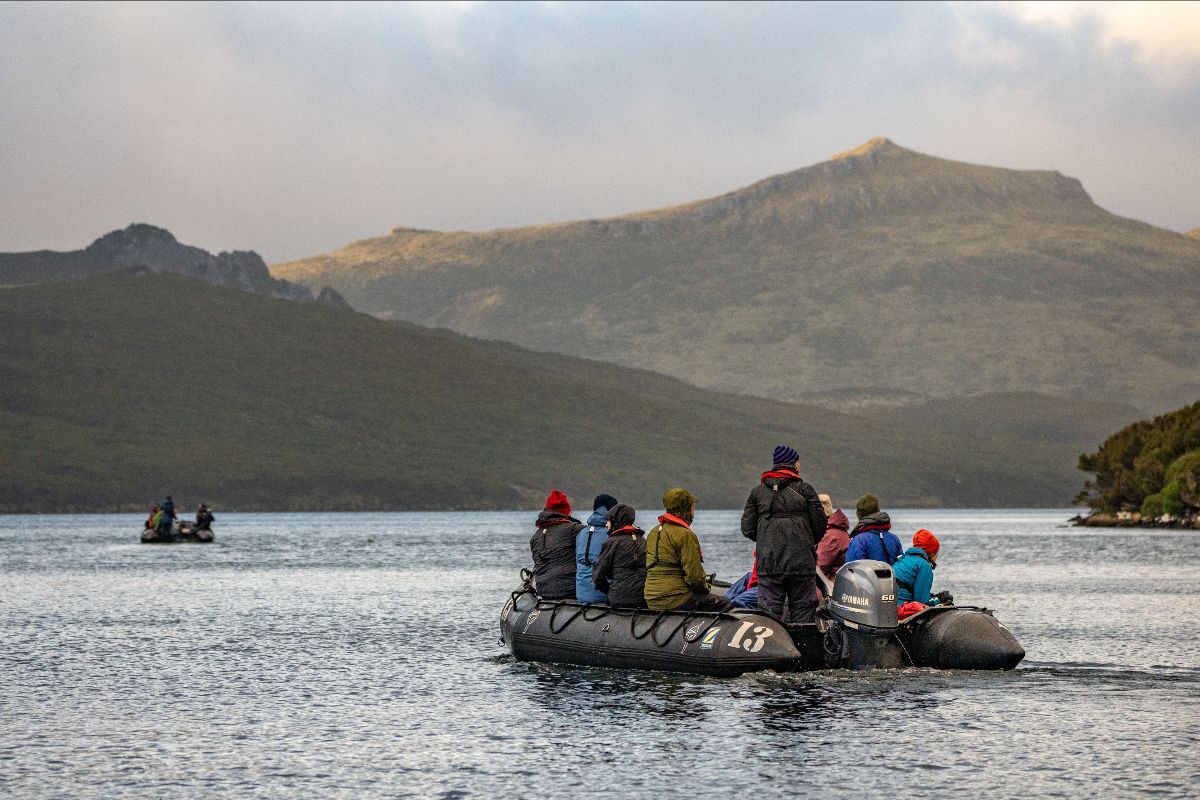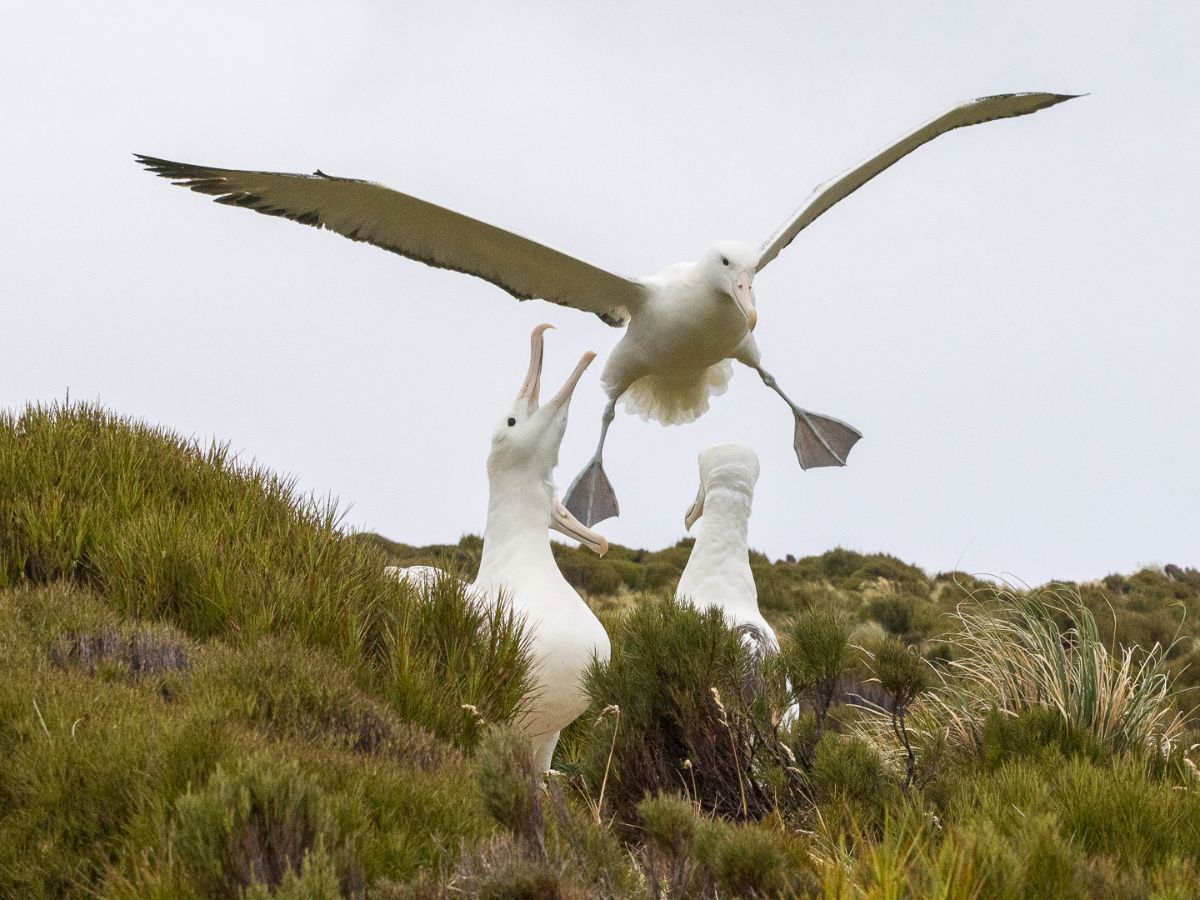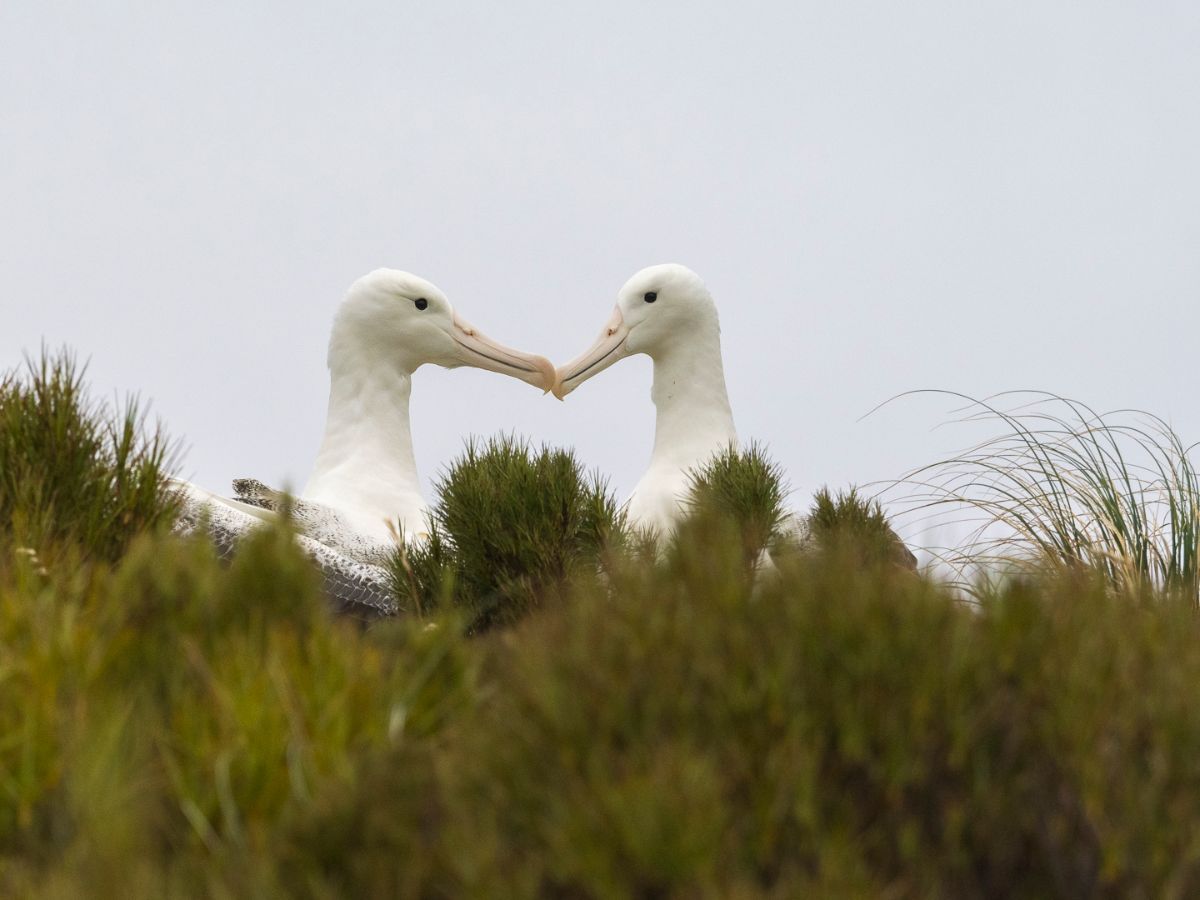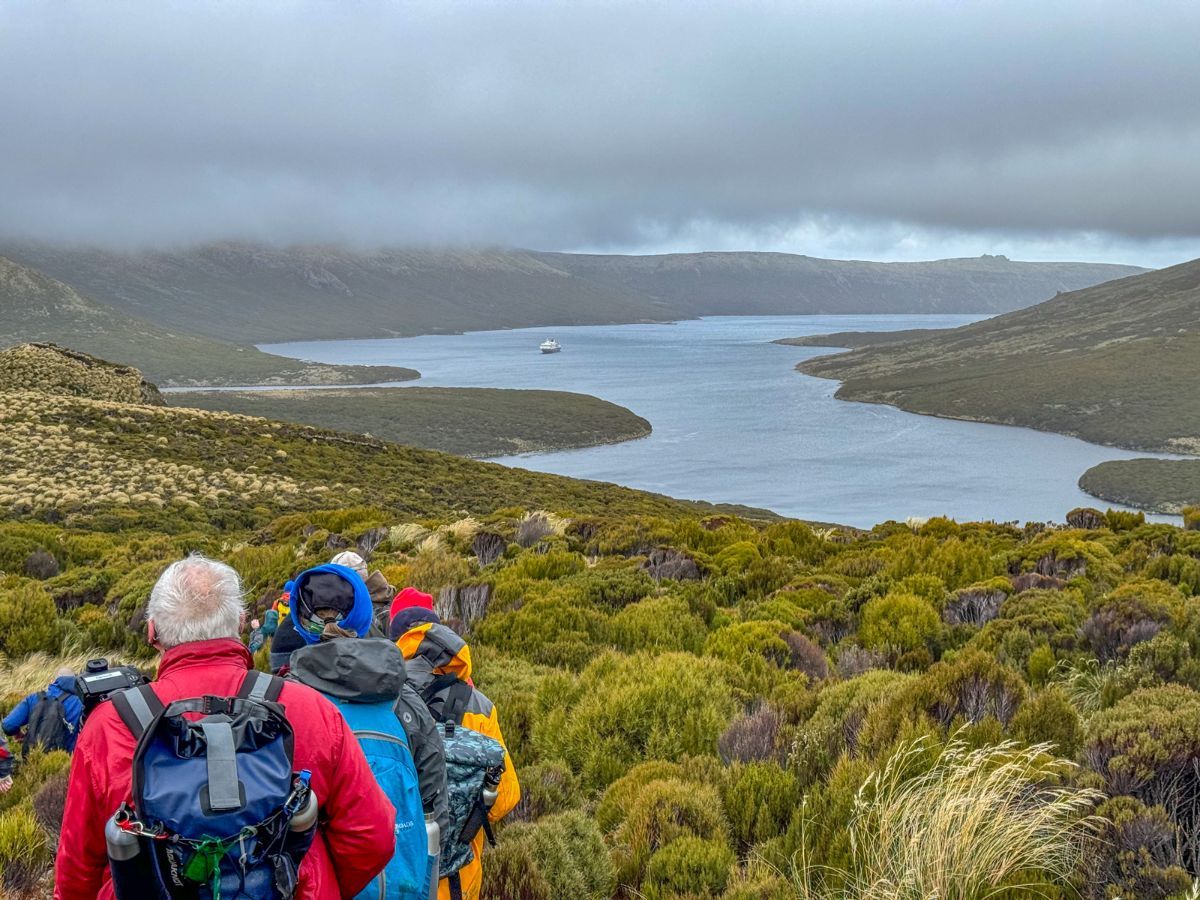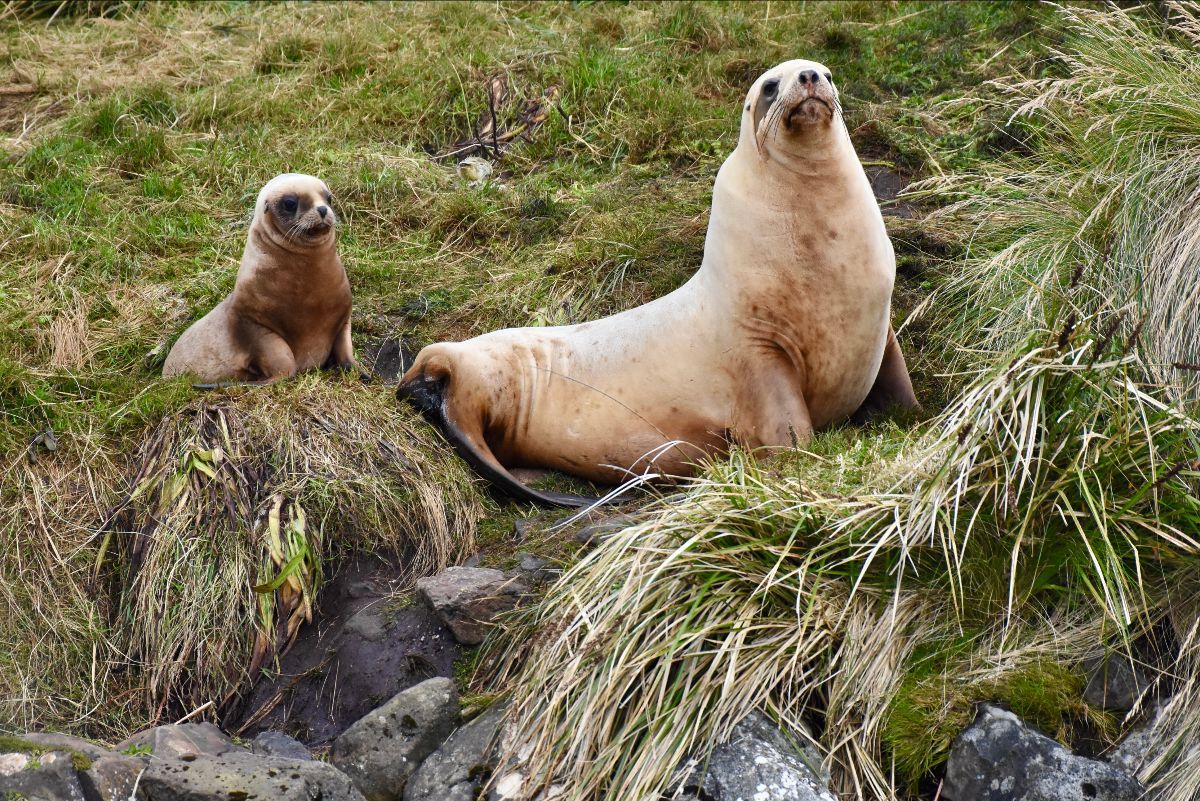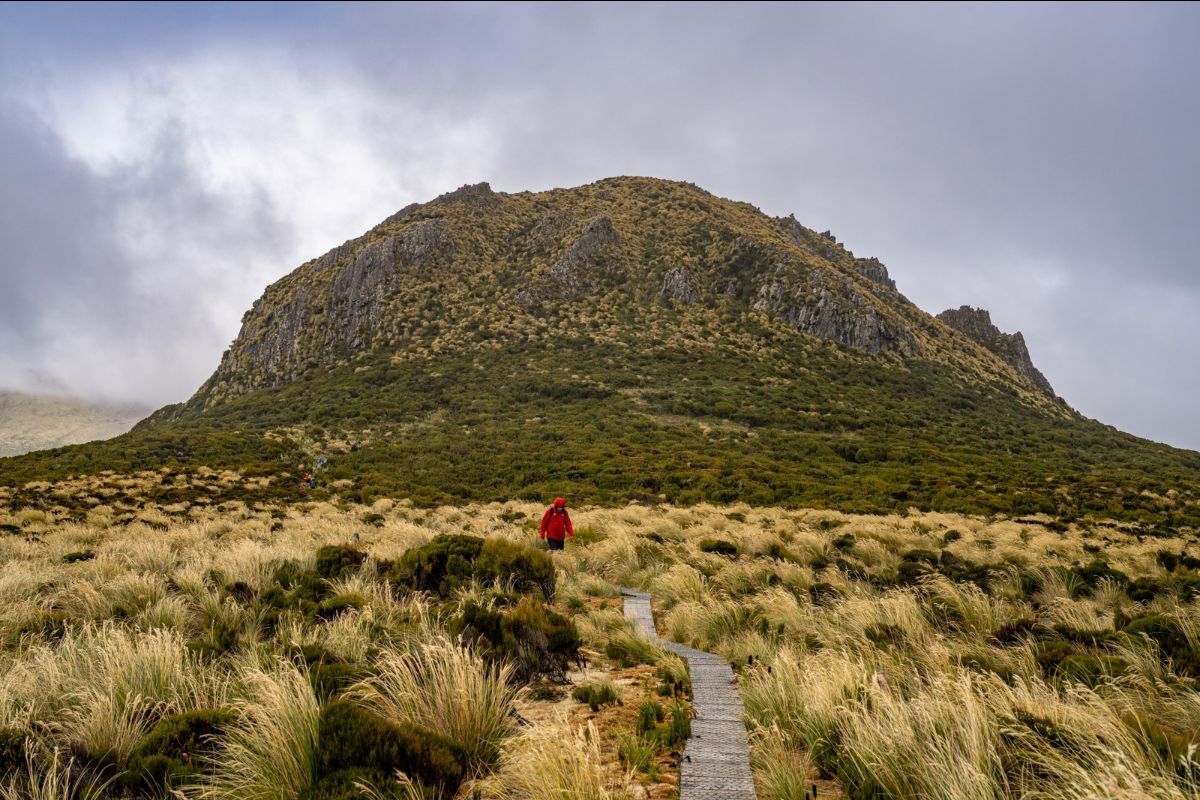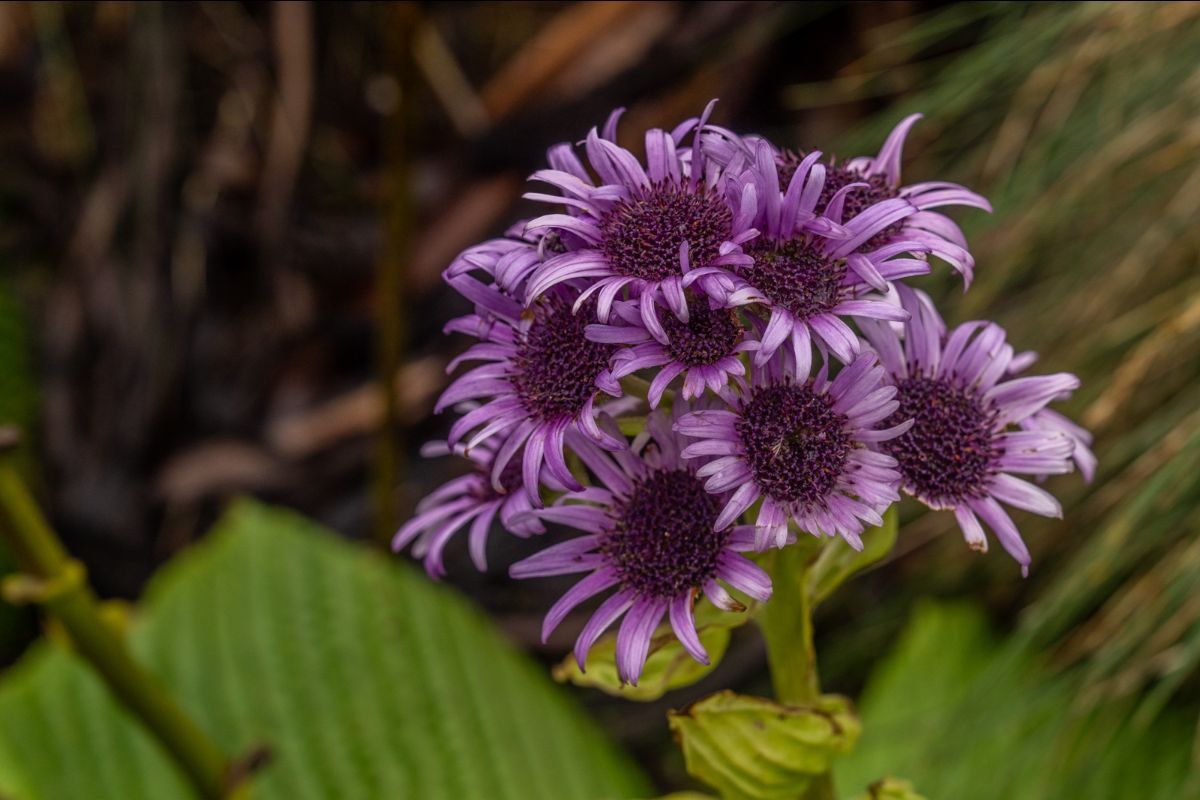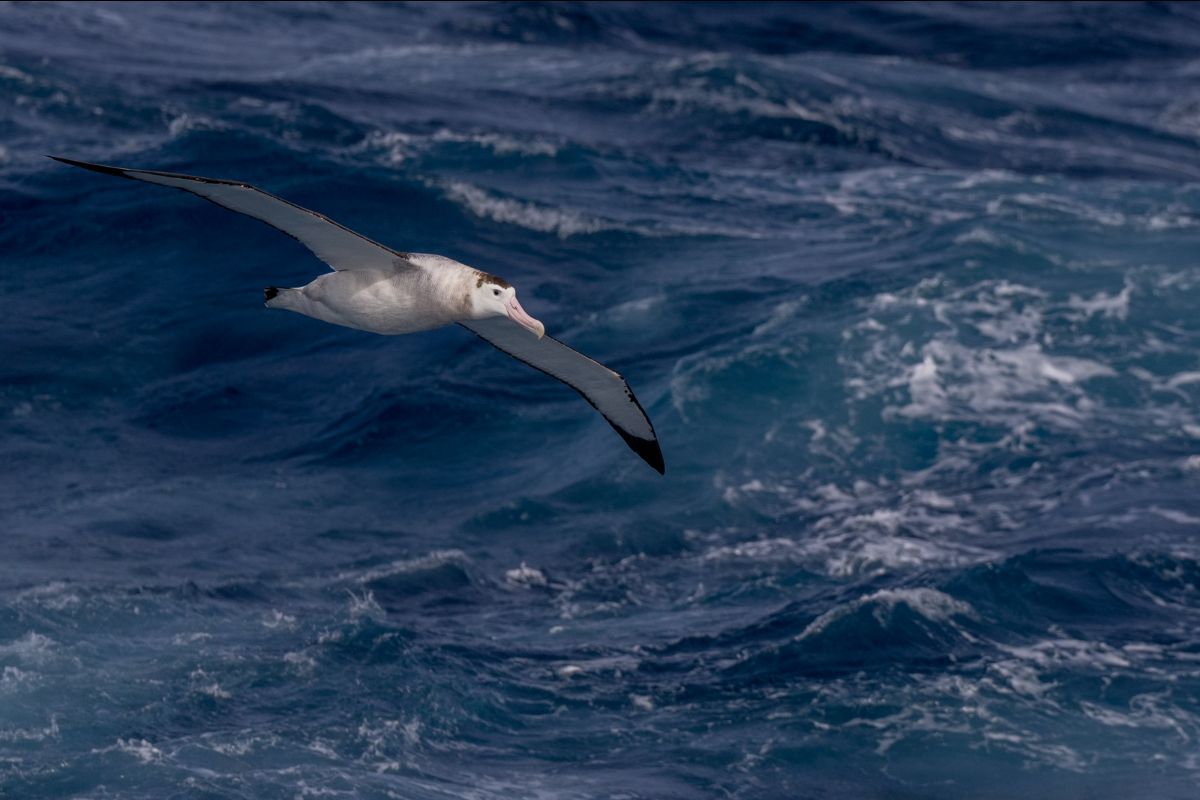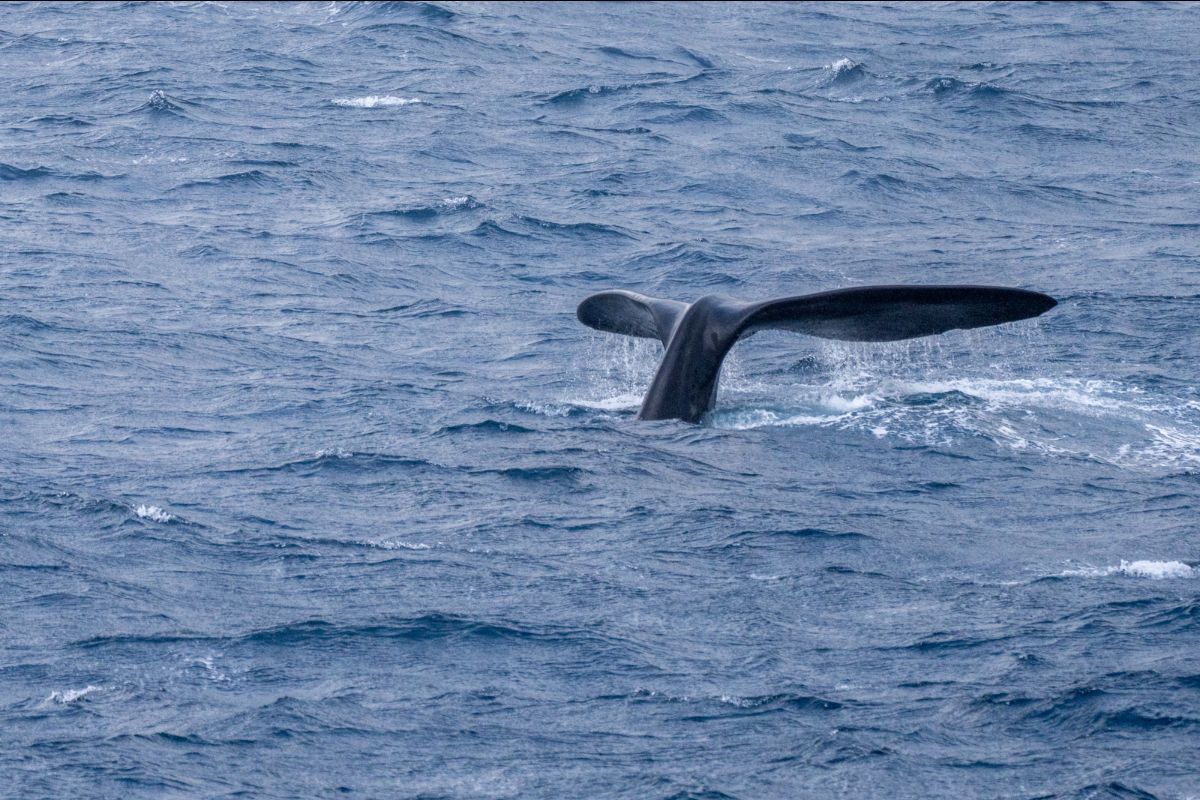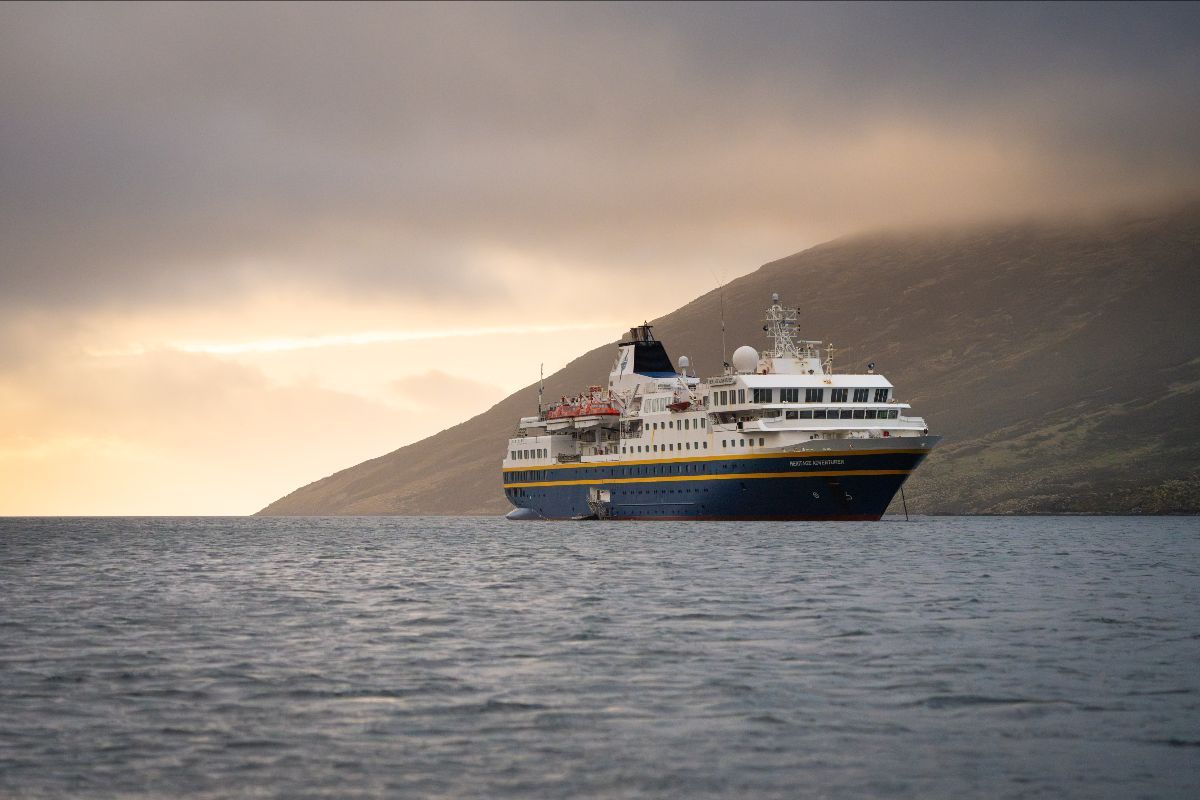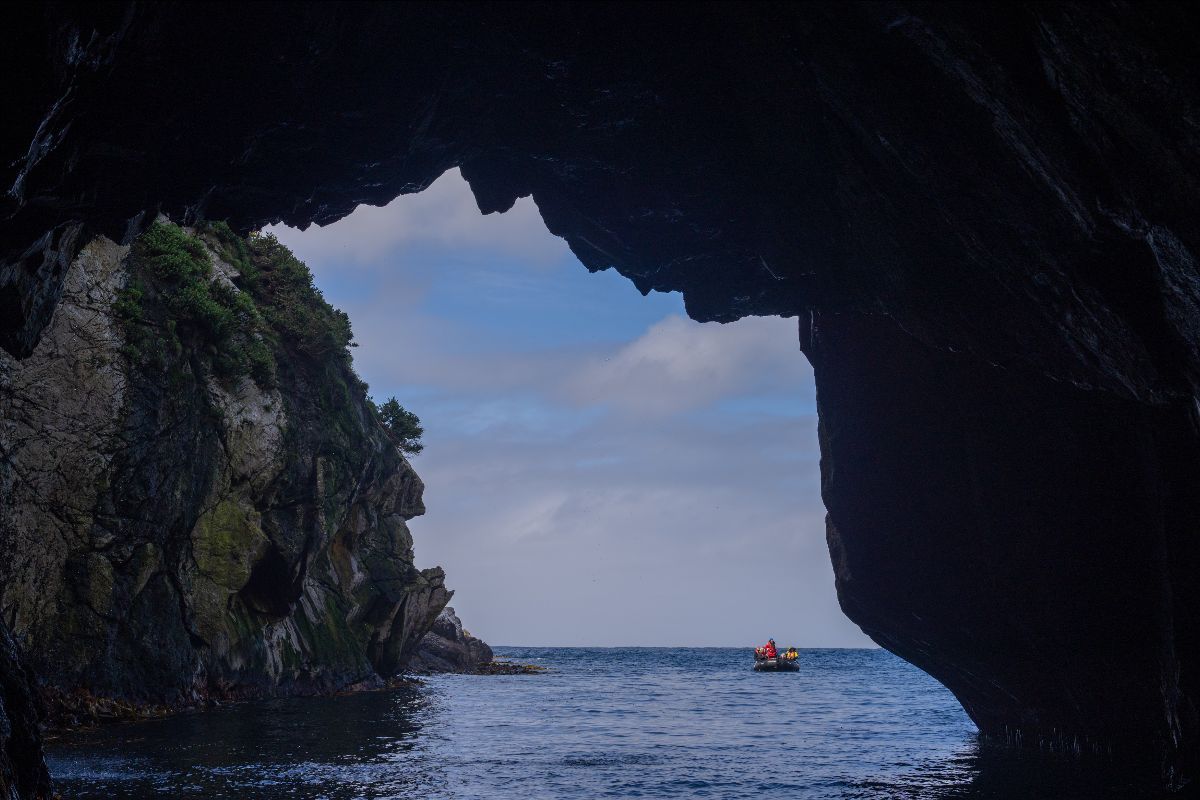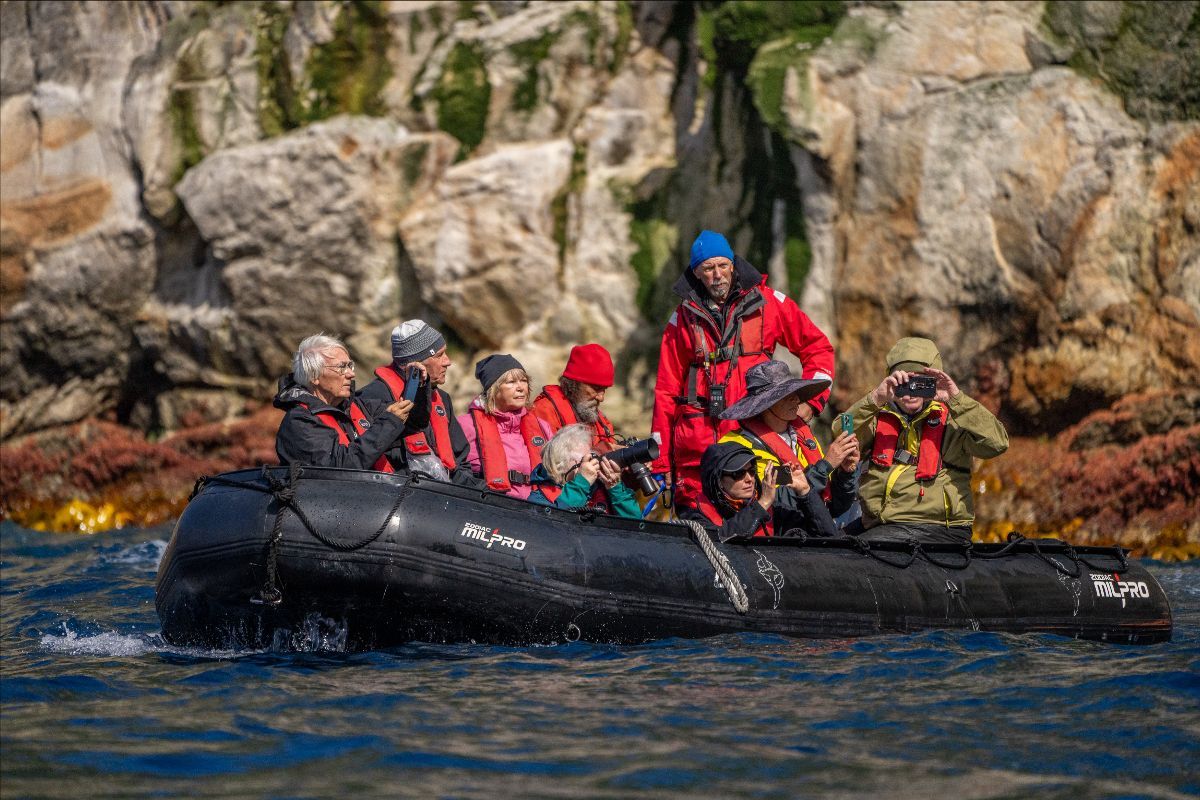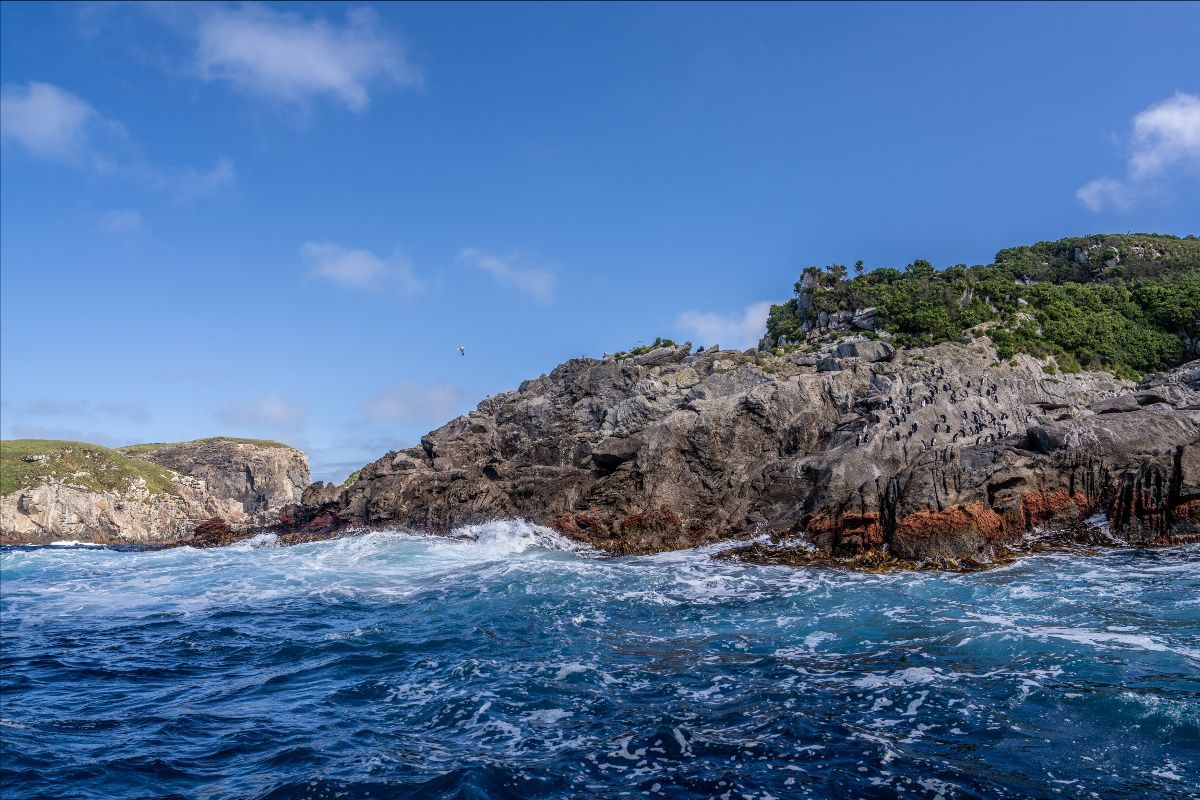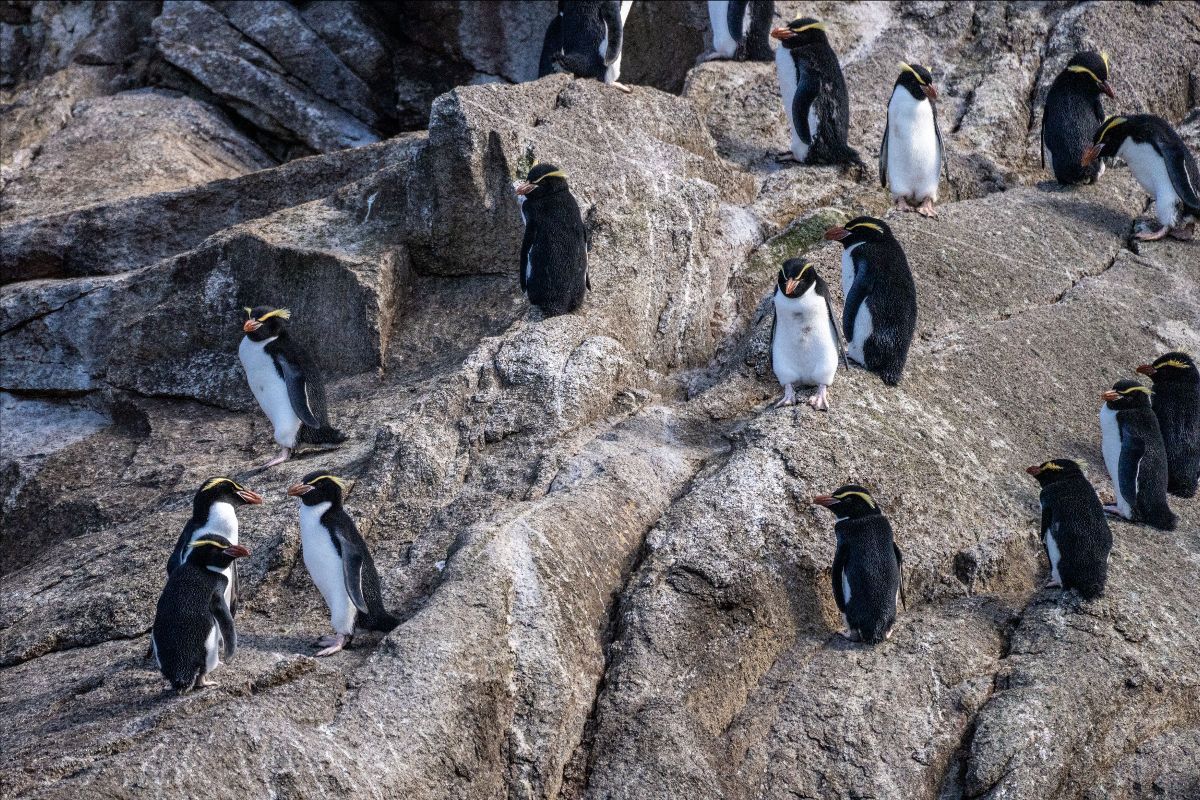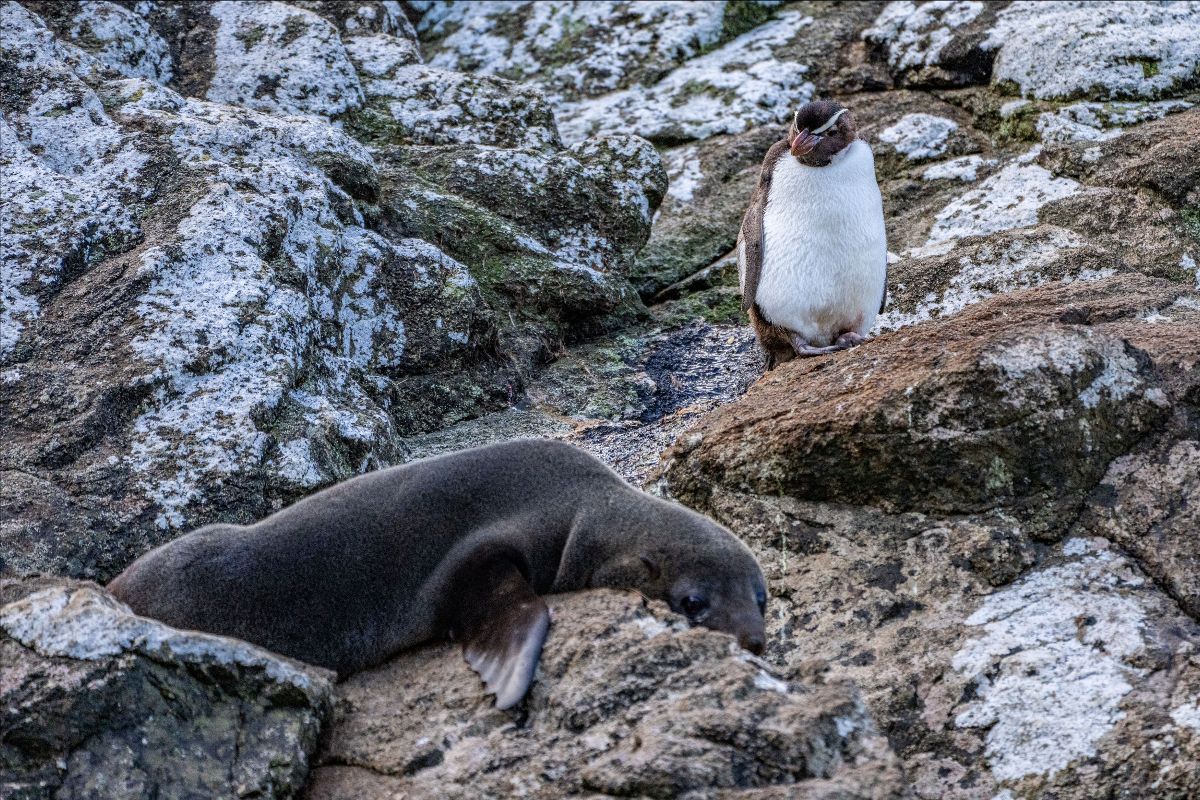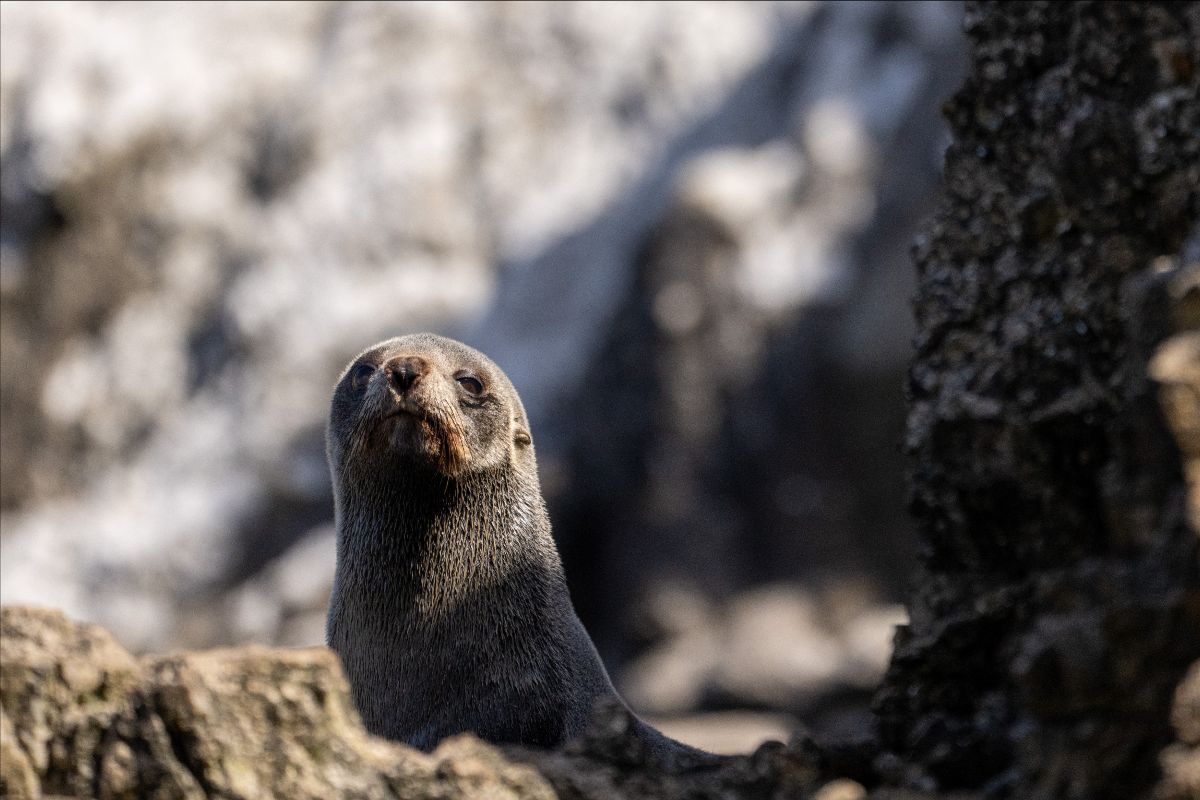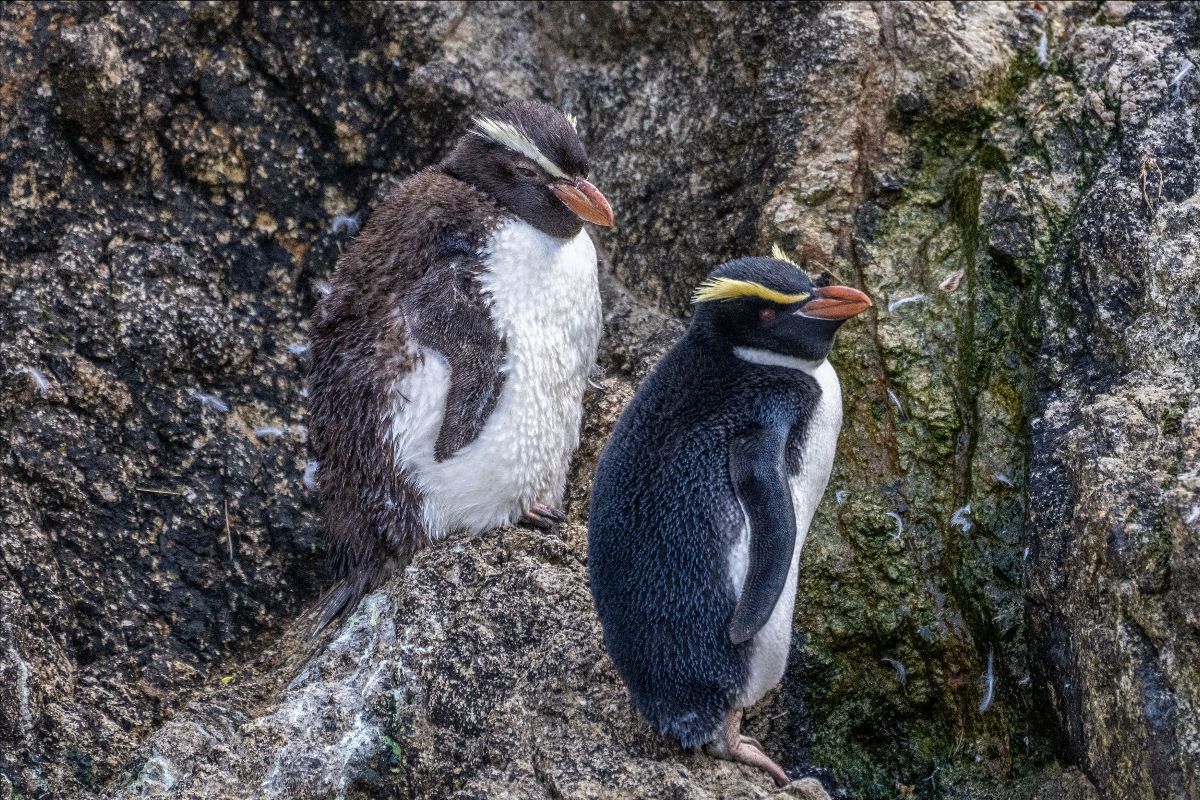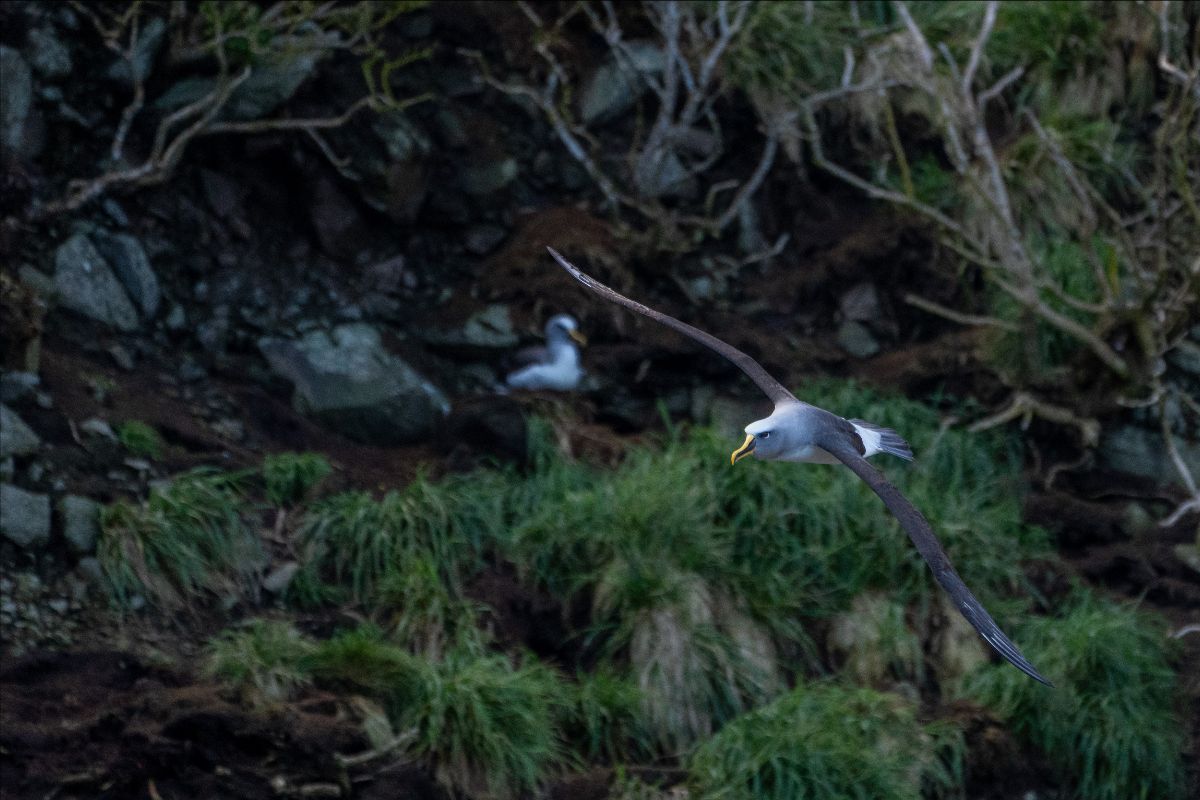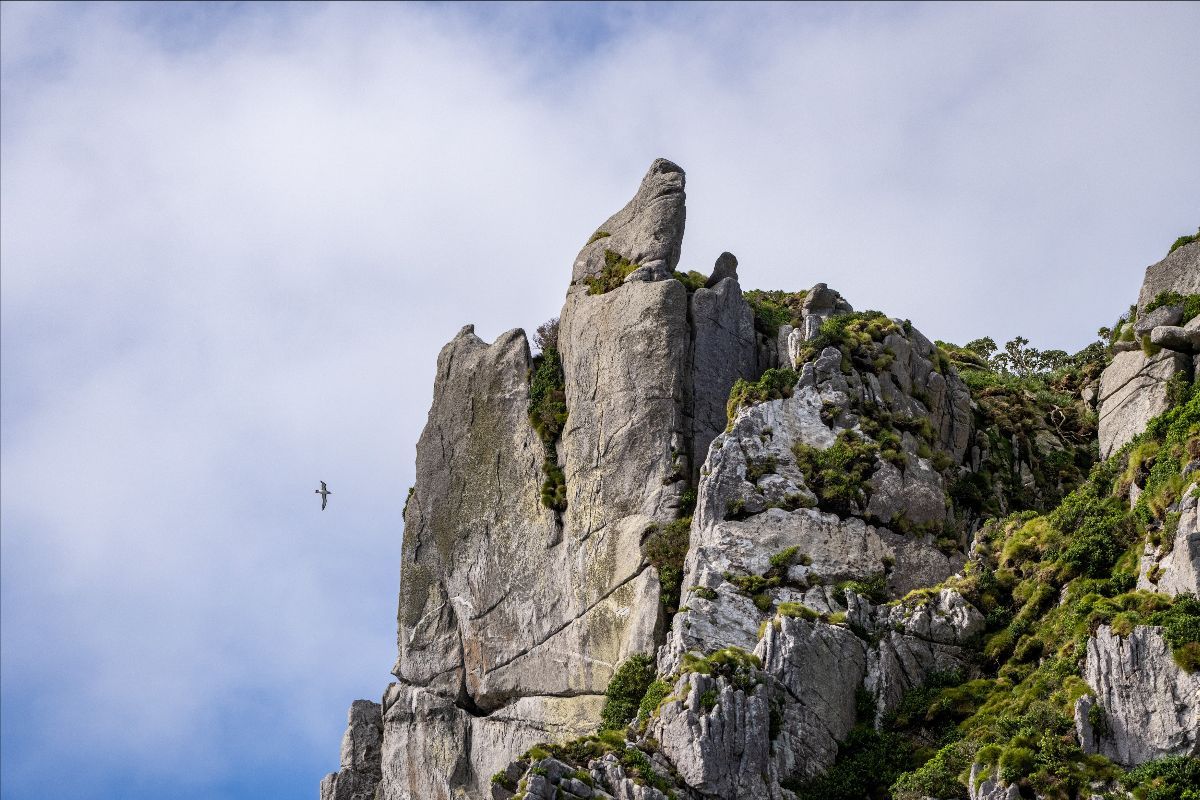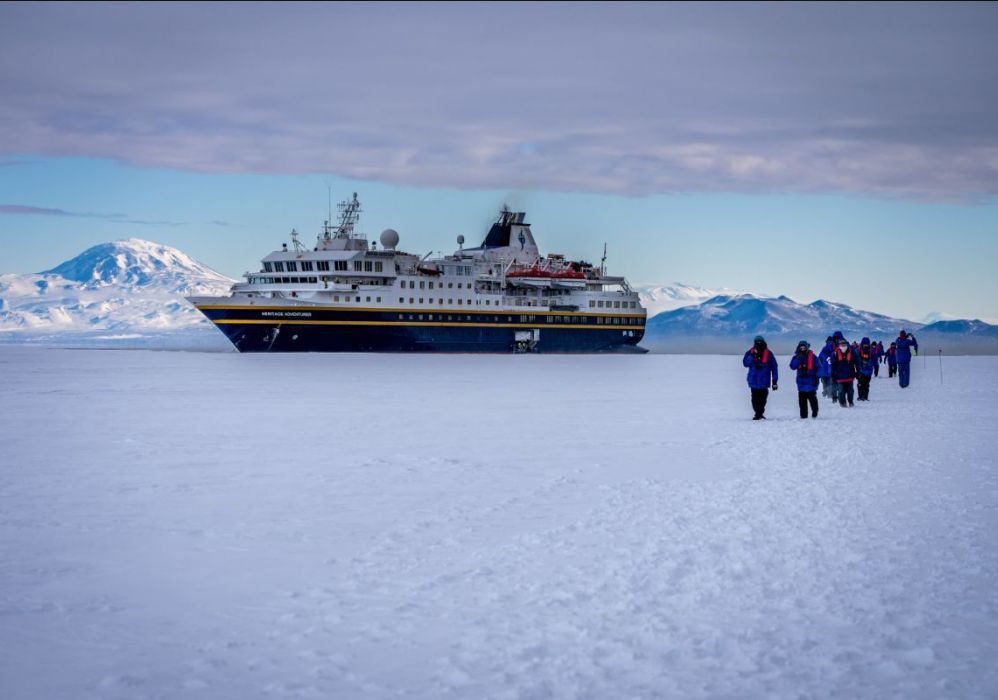
Expedition Log: In the Wake of Scott & Shackleton
Day 1
Sunday, February 4, 2024
Queenstown
We arrived from all over the world, kindred adventurers looking to venture down into the heart of Antarctica, the rarely-visited Ross Sea on Heritage Expeditions signature In the Wake of Scott and Shackleton voyage. Queenstown, New Zealand’s world-famous alpine resort town, gave those arriving by air an incredible bird’s eye view of the iconic mountain and lake scenery. Though even from ground level, the Remarkables lived up to their name. Checking into our hotel for the evening we meet fellow guests and some of our expedition team over our first dinner together hosted by Expedition Leader Cheli Larsen with an intro into our upcoming adventure.
Day 2
Monday, February 5, 2024
Queenstown to Bluff and departure
We enjoyed breakfast with newfound friends before exploring Queenstown, New Zealand's adventure capital, which was abuzz with holidaymakers and our adventurers finishing any last-minute shopping and soaking in the sights.
After lunch we boarded coaches for the scenic transfer through the pastoral countryside of Southland to Bluff Harbour where Heritage Adventurer, our home away from home, was waiting for us. There was time to settle in and explore before we came together for the lifeboat drill and introductory briefings.
We cast off at 1700 while Cheli told us what to expect on our voyage and introduced the Expedition Team – 18 experts who will help us get the most out of this experience. Hotel Director Erik introduced us to life aboard, and we got our first chance to sample the delights provided by his kitchen and dining room staff. We had until midnight in the relatively mild sea conditions in the lee of Stewart Island. We had been warned to secure our cabins and to expect less comfortable seas as we entered the Southern Ocean.
Day 3
Tuesday, February 6, 2024
At Sea
In the morning, Cheli announced that the anticipated 6-metre swells with 30-knot winds had not arrived – instead Heritage Adventurer was met by 12-metre swells and 70-knot gusts. Our Captain had decided to steer a more comfortable and safer course and bypass the Snares Islands. We could see the bend in our course when we checked the map at breakfast.
Conditions were much gentler in the morning, so most were up and around continuing our exploration of our new home away from home. The Expedition Team immediately swung into action to fill the gap in the programme. Starting was James with Geology of the Subantarctic. Lou followed with Subantarctic Marine Biosecurity about fighting invasive kelp in The Snares. Lunch was more attended than breakfast as conditions eased further. After the biosecurity briefing, we cleaned our gear, and had it inspected to ensure that we didn’t introduce any pests into the place described by John in his Introduction to the Auckland Islands.
Some of us then dressed up as Captain Jasek introduced his heads of department in the Captain’s Welcome Cocktails. We toasted the weather and hoped for the best. The galley and dining room departments had clearly put in a special effort for the welcome dinner, which was superb. Just as the sun was setting, we dropped anchor off Enderby Island. We had made our choices for the optional activities and retired to prepare ourselves for the big day ahead.
Day 4
Wednesday, February 7, 2024
Enderby, Auckland Islands
We awoke to a calm sea in the sheltered waters of Port Ross. The typical Subantarctic overcast sky slowly transformed into a blue and sunny day as we took off for our chosen activities on our first landing day.
The Circuit Walkers, the first group to leave, enjoyed the comfort of the Northern Cliffs boardwalk as we set out on the 10km walk. As we continued, the boardwalk changed and the track became rough and uneven, finally, disappearing into waist-high tussock. Happily, we found that the rewards of the effort were well worth it, allowing us to see an abundance of wildlife.
Others enjoyed a Zodiac cruise along the coast admiring the red blossoming Rātā Forest, beds of large Bull Kelp and the song of Bellbirds. Alighting at the cemetery near the site of the settlement of Hardwicke was a poignant reminder of lives lived and lost in this harsh environment. A Hooker's/New Zealand Sea Lion on the way to the Victoria Tree reminded us that they are permanent residents here, not us.
All who walked the boardwalk enjoyed the presence of plenty of wildlife and late flowering megaherbs, and all were treated to close sightings of Southern Royal Albatross. The two groups that had the afternoon in this vicinity had more opportunity to relax and slow down. The soaring birds on the cliffs and the gamming by the boardwalk showed us the majesty of the kings and queens of the sky.
We enjoyed a well-deserved dinner in the shelter of Auckland Island, cruising down the east coast at dusk as we departed for Macquarie Island. As we left the lee of the island the seas began to build and become lively. The buzz over dinner indicated the success of the day as we shared our adventures.
Day 5
Thursday, February 8, 2024
At Sea
We enjoyed a sleep-in after the busy day. It was another chance to let our bodies become accustomed to the motion of the ocean with 3 to 4-metre swells.
Cheli told us that this would be a day for dining, education and biosecurity – and so it was. Kate got us started by announcing that we had entered Australian waters and with her talk on Seabirds of the Southern Ocean. Then Meghan helped us to try to capture them with her advice for Mastering Phone Photography. After lunch, we cleaned the Auckland Island residue off the muck boots and had them inspected and ready for Macquarie Island. John and James continued our preparation with an Introduction to Macquarie Island. All the while the variety and abundance of seabirds spotted from the decks increased, as if in response to Kate’s call.
As an extra activity the shop was open before the recap and briefing. Cheli then told us about the possibilities for cruises and landings at “Macca” while making it quite clear that the forecasted weather for Day 1 was not ideal, and the forecast for Day 2 was pushing the limits. Still, we retired knowing that we would be at anchor for at least some of the night, and that, due to the time difference between Australia and New Zealand, we wouldn’t have an early start. We prepared ourselves to don the required outerwear and get out and see the wild side of nature if conditions allowed any operations to proceed.
Day 6
Friday, February 9, 2024
Macquarie Island
Dawn broke over us at a cloudy, windy and drizzly Macquarie Island. Cheli announced that no Zodiac operation was possible, but we got the next best thing – Heritage Adventurer became our Zodiac. As King Penguins swam around us in great numbers, special permission was received from our Captain to allow us onto the mooring deck on deck 3 aft. This is an operational area of the vessel normally used by the crew for mooring and Zodiac operations. It has big open bays very close to the ocean surface. We went in small groups to lean through these bays to watch and photograph the swimming birds. It also gave us a small glimpse behind the scenes of the working part of the ship. Plus, we stayed warm and dry.
From there, we made a shoreline cruise north past the largest King Penguin colony on the island at Lusitania Bay. The sun shone on the bright green hillsides and the hundreds of thousands of penguins. We could see the digesters from 125 years ago when the birds were exploited for their oil and decimated. It was heartwarming to see that the destruction caused by man has been reversed, at least in this case.
We turned 180° to ship cruise to the southernmost part of the island - Hurd Point. There the dramatic cliffs and rocks framed the largest Royal Penguin colony.
The mid-afternoon conditions allowed Zodiac operations in the more sheltered Sandy Bay, so off we went. We were immediately overwhelmed, surrounded by Kings and Royals Penguins, plus a single Gentoo that joined the party later in the afternoon. The Kings were as intrigued by us as we were by them, often coming close for an exploration while we admired their shining plumage. The Royals were fun to watch, busily going about their business with many chicks in the final stages of fledging. The Royal colony was a windswept and noisy place.
Back on the beach, the piles of Elephant Seals were totally uninterested in anything more than sleeping, yawning and occasionally jousting. We happily endured the occasional squall of horizontal hail – well worth it to experience this spectacle of nature.
Day 7
Saturday, February 10, 2024
Macquarie Island and At Sea
We remained at anchor in Sandy Bay overnight and woke to increased winds – gusting up to 50 knots. The sea state wasn’t too bad, and Heritage Adventurer repositioned north to the Isthmus. Upon arrival, two Zodiacs were launched to assess the conditions. We observed from the lounges and made our best guesses about if anything would be possible. In the end, Cheli announced that the swell along the shore was too large. That, combined with sensible caution to not jeopardise the rest of our voyage, made the decision.
The Expedition Team put together a recap on Macquarie Island, and we remained at anchor over lunch. While the crew was preparing for our journey south, we were advised that, once in the open sea, we would encounter waves of 8 metres. Off we went to ensure that all our cabins were well secured – with the buttons on the cupboard doors securely pushed in.
We cruised a farewell journey south along the east coast – waving to Ranger Carly at Sandy Bay, and the Rockhoppers, Kings and digesters at Lusitania Bay, and Royal Penguins at Hurd Point where the huge waves were breaking. The prediction was accurate and soon we were finding ways to pass the time – books, games and naps all around. The exceptional stability of Heritage Adventurer was again demonstrated as a significant number of us were in the lounge for cocktails.
Dinner was well attended with several “woohoo's” as we were looking up at the bigger waves. The dining room staff were amazing, and we retired to our beds well-fed as the anticipation was quickly building.
Day 8
Sunday, February 11, 2024
At Sea
As we crossed the Antarctic Convergence, Katja explained it and more in her talk on The Southern Ocean. We were called in our Zodiac groups to the lounge for lunch and dinner – Seals, Penguins, Albatross and megaherbs followed by the scavenging Skuas of the Expedition Team. In between, Meghan continued our photo education with The Art of Good Composition.
Recap and briefing were slightly earlier than usual, as was Kate’s convocation of the Bird Club to review the species list. Cheli whet our appetites by announcing that we had crossed 60° south latitude and mentioned the Balleny Islands, the Antarctic Circle, and a Polar Plunge. With our appetites satisfied and our bellies full, we were fitted for our Antarctic parkas.
Day 9
Monday, February 12, 2024
At Sea and Balleny Island
The first iceberg was spotted in the early hours of the night while we were journeying to the Balleny Islands. By morning, snow was descending from the sky, and icebergs were surrounding Heritage Adventurer, and it became clear that we had reached Antarctic waters.
Katja reinforced the feeling with her Introduction to Antarctica before Al told us of his work for the New Zealand Antarctic Heritage Trust in his An Overview of the Ross Sea Heritage Project. For further preparation, we had another session on biosecurity and instruction on our expected behaviour from the International Association of Antarctic Tour Operators (IAATO). Throughout the day, we were greeted by Humpback Whales, some even fully breaching outside the water.
It was 185 years ago that Captains John Balleny and Thomas Freeman were the first to sight the Balleny Islands. As Young Island, the northernmost island of the Balleny Islands, appeared in our view, we knew we were close to crossing the Antarctic Circle.
As the horn of Heritage Adventurer blew to confirm the crossing, we received the Mark of the Penguin and took the pledge to become Antarctic ambassadors. Many toasted the event with mulled wine. Those brave enough took part in a modified version of the polar plunge when the Heritage Adventurer pool was filled with the surrounding Antarctic seawater – quickly followed by a plunge in the Jacuzzi. The day ended with a beautiful sunset – our last for the duration of our visit to the Ross Sea. Everyone was in awe of what was to come. We felt like we were truly in Antarctica, but still, the anticipation was building.
Day 10
Tuesday, February 13, 2024
At Sea enroute to Cape Adare
Our good progress to the south and east continued through the night. Heritage Adventurer was heading into the swell, so the ride had a nice rhythm of up and down from bow to stern. As the morning went on, the conditions eased.
With a full day at sea, it was a great chance to continue our education. Bryan told us about the Past Lives of Antarctica, then Samuel gave an overview of the vast area we will explore in his Introduction to the Ross Sea Region and enjoyed lunch in the bistro and dining room.
Kate kicked off the afternoon programme as she reported on the research she undertook with Dr. Steve Emslie in her talk about Adélie Penguins: Past, Present and Future. A bit later, the first episode of the Norwegian documentary Forgotten Polar Hero helped us understand the difficulties faced by Carsten Borchgrevink and the 9 other men at Cape Adare 125 years ago.
We had the opportunity for some shopping before Kate and the Bird Club updated the Species List, and Cheli briefed us on possible activities at Cape Adare and Robertson Bay.
Day 11
Wednesday, February 14, 2024
Robertson Bay
Some of us were awake in the wee hours of the morning as Heritage Adventurer navigated a band of pack ice and made a ship cruise into Robertson Bay. For most, it was an early call for breakfast as we arrived at Cape Colbeck. From there, we boarded the Zodiacs in absolutely perfect conditions. There was not a breath of wind, and the sea was smooth. The mountains rose above us straight out of the sea. They were layers of sandstone and mudstone folded into fantastic shapes. The layering was artistically enhanced by a light dusting of snow. Geology at its finest.
When we finally looked away from the rock, our eyes were captured by the multiple shades of blue and sculptural shapes of the glacial ice. We spotted a few newly fledged Adélie Penguin chicks floating on small bergy bits, and a couple of Weddell Seals raised their heads as we pulled into the shore near them. South Polar Skuas and Wilson’s Storm Petrels flitted by. At the end of the cruise, a pod of Orcas/Killer Whales made an appearance.
Over lunch we retraced our steps, only to discover that Ridley Beach at Cape Adare was completely blocked by the ice and no landing was possible. Our Captain pushed his way back through the bands of pack ice, giving most of us our first experience of the capability of Heritage Adventurer in this environment. Along the way were many Adélies, and our first sighting of an Emperor Penguin.
As we made our way through the pack ice, John showed how it had hindered many expeditions during the age of sail in his talk Antarctica Unveiled. During recap, Samuel helped us understand the dynamic movements of the ice we had experienced. At dinner, we finally broke through into ice-free seas and turned south.
Day 12
Thursday, February 15, 2024
Franklin Island
Cheli had explained that we would be steaming south to escape some high winds in the northern section of the Ross Sea. So, it was no surprise to see our track on the map at breakfast and that the daily programme called for time at sea. John continued to develop the history of the Heroic Age in his talk on The Discovery Expedition, and Agnes described one of our favourite birds with her presentation Penguins – family, biology, behaviour and adaptations.
The afternoon was a time for rest and recharge before Al described one of his projects in detail in A Case Study on Conserving Scott’s Terra Nova hut a Cape Evans. Dinner was pushed forward 30 minutes to give us free time for a potential activity at Franklin Island on arrival.
At Franklin Island, it was clear that a strong onshore swell prohibited any landing, so we made a Zodiac cruise to view the Adélie Penguin colony. A fresh dusting of snow on the island and passing snow squalls provided a real Antarctic experience. A bonus was spotting an Emperor penguin standing tall amongst the Adélies and Weddell Seals. We returned to Heritage Adventurer to dust off the snow and join the buzz of stories of the adventure.
Day 13
Friday, February 16, 2024
Ross Ice Shelf and Cape Bird
Overnight Heritage Adventurer travelled south of the Ross Ice Shelf. Our Captain was keen to explore the series of cracks in the ice shelf that had been seen in the satellite images. There were 3 of them, each given a cheeky name by everyone on board – “Captain’s Crack”, “Cheli’s Crack” and “Samuel’s Crack”. We went deep into each of them – up to 11 kilometres into the ice shelf until the crack was so narrow that Heritage Adventurer just had turning room. We cruised past Cape Crozier at the eastern end of Ross Island under Mount Terror. As we turned westward John continued his series of Heroic Age history with a talk on the Nimrod Expedition.
After lunch, most of us were able to make the landing at Cape Byrd. Cheli and several others of the expedition team were in waders deep into the water among the substantial ice chunks moving in the surf. Each Zodiac safely landed, and once ashore, we were greeted by Adélie Penguin chicks with their punk hairdos, and totally ignored by the Weddell Seals. The view from the Antarctic New Zealand research hut over the bay was stunning. That evening, we cruised through calm waters south past Cape Royds for a peek at Shackleton’s Hut and anchored close to Cape Evans.
Day 14
Saturday, February 17, 2024
Cape Evans and McMurdo Sound
It was an early start with the first Zodiacs taking small groups of us ashore at Cape Evans at 0700. Scott’s Hut, located just above the shoreline, contains a spectacular array of artefacts from the 1911-1915 occupation. The hut, figuratively and literally, has been frozen in time since Scott’s team left. The reindeer sleeping bags lay on beds, the personalised clothing hung on hooks, the seal blubber is ready for the stove, and the tinned rhubarb sits ready to be cooked. We struggled to take all these breathtaking sights in.
Outside, clear views of a gently smoking Mount Erebus reminded us that the hut was built on the flanks of an active volcano. We walked around the Antarctic Specially Protected Area (ASPA) with our guides up Wind Vane Hill, to the cross honouring the three members of Shackleton’s Ross Sea Party who died during that expedition, with stunning views over McMurdo Sound.
In the afternoon, Heritage Adventurer sailed deep into McMurdo Sound for views of the large USA research station and the smaller New Zealand station, Scott Base, around the corner. We pulled in near the sea ice and took a short Zodiac shuttle for a hike over the ice. Undertaking a modified polar expedition, we walked to the pole as a series of poles with flags marked the safe route set by the expedition team. We went over the sea ice towards Scott Base for a close-up view and then hiked back for a hot cocoa and dinner. The Emperor Penguins were intrigued by all the unusual activity. A group of them assembled at our Zodiac landing point, with the last few of us getting a wonderful close-up experience while the rest watched from the decks. The day closed with a cruise along the sea ice edge, looking for Emperors and Orcas/Killer Whales.
Day 16
Monday, February 19, 2024
Cape Royds
Our fantastic day began with tension in the air over breakfast. With the challenging sea ice conditions, would we be able to visit Shackleton’s Nimrod Hut? We had looked at Blacksand Beach and Backdoor Bay and saw that it would take something special to make it happen. We watched from Heritage Adventurer as the expedition team went through the brash ice, selected a bank of fast ice on the shore, and carved a series of ice steps. From here, it was only a short walk up the hill to visit our third historic hut on our third consecutive morning.
A light dusting of snow enhanced the scene, with the hut nestled in the black-and-white landscape. What a great choice of site; sheltered and with great views, and with that shelter and a bit of sun came slightly warmer conditions. The Nimrod Hut was again different than Cape Evans or Hut Point being smaller and cosier. It gave another perspective on the experiences of the Heroic Age of expedition. We put ourselves in the place of Shackleton, Mawson, or Wild and thought about leaving here to climb Mount Erebus, sledge to the South Magnetic Pole, or attempt the South Geographic Pole and come so close.
After visiting the hut, we journeyed to the headland to view the world’s most southern Adélie Penguin colony. With temperatures dipping, we returned to the comforts of Heritage Adventurer to warm up over lunch. We had been fortunate to be able to visit the three Heroic Age huts on Ross Island and explore and experience the wildlife and landscape of this truly vast and remarkable area. We began our journey north as John continued our education with his talk on the Race to the Pole - Part 1.
It would take some days and some reflection before we can have a better context of the experiences during the past few days.
Day 17
Tuesday, February 20, 2024
Drygalski Ice Tongue and Terra Nova Bay
Headed north, we hugged the coast to try to reach some of the areas we passed on our way south. First up, we called into Terra Nova Bay for a cruise along the Drygalski Ice Tongue. In more favourable conditions, we could see the full extent of this dramatic floating ice cliff and well inland. The expedition team continued to educate and entertain us, this morning with Samuel’s talk on Emperor Penguins.
Continuing north, we passed through an area notorious for katabatic winds. True to form, we got them. Heritage Adventurer leaned to starboard as we had westerlies of 70 knots. We passed the new Chinese research station during the gale and wondered why they would choose to build in an area they knew was one of the windiest in Antarctica, and thus in the world.
We passed through the wind zone, including Inexpressible Island, while we enjoyed lunch. The conditions at the northern portion of the bay were suitable so we landed on the continent! We were between the small German summer-only station Gondwana, and the South Korean year-round station, Jang Bogo. This was a chance to really stretch our legs and go for a long walk up the hill or explore the coast observing South Polar Skuas, Adélie Penguins and Weddell Seals. Because the conditions were so good Cheli announced a Polar Plunge before dinner. There was plenty of banter and laughter as, one by one, the brave, or foolish, adventurers jumped into the sub-freezing sea.
They had certainly earned a second helping of dessert, but even the non-plungers enjoyed the feast provided by the galley and dining room teams. We thought we had had an astounding day, but the best was yet to come. As we turned south to go north, avoiding the expected ice we re-entered the strong winds. Blow they did, but then they encountered the freezing sea. The thickened surface of the sea flowed in mesmerising waves. The Captain, all of the members of the expedition staff, and all of us on board were dumbfounded. No one had ever seen anything like it before. The sea was a silver satin sheet undulating in the evening sun. It was indescribable. You just had to be there - and we were!
Day 18
Wednesday, February 21, 2024
At Sea and Foyn Island
As we continued back to the land of sunsets, Heritage Adventurer navigated to the east to dodge the ice. Our arrival at Foyn Island was thus delayed. To make sure that we actually got out of bed, several presentations were given. Brian described the Antarctic Treaty System, giving an overview of the politics and of the environmental protections that the treaty provides. John followed with the completion of Race to the Pole, after which we had an opportunity to enjoy a small taste of the lives of a Heroic Age explorer. We sampled their staple evening meal, Hoosh (a stew made from pemmican and biscuits – not many went back for seconds), and try manhauling with replica harnesses.
Cheli announced that dinner would be brought forward to allow the opportunity for a landing in the evening before Katja gave her insight into Photography during the Heroic Age – Herbert Ponting and Frank Hurley.
During dinner, we could see the scout boat in action along the coast and soon the announcement came that a small beach had been found amidst the push ice, and the landing would go ahead. The swell at the gangway was challenging, but most rugged up warm and made it ashore. There we could see the advancing season. The Adélies were gone or moulting, and the leaden skies and falling snow foretold winter coming soon. Still, the dramatic basaltic cliffs, the Wilson’s Storm Petrels, the raw, wild feel, and the chance for a leg stretch made it all worthwhile. Plus, it made for a good chance to unwind with a beverage among friends before bed.
Day 19
Thursday, February 22, 2024
In the Ross Sea
The morning found us cruising in the Captain’s big Zodiac, Heritage Adventurer, exploring the sea ice near Cape Hallett. Samuel told the history of the discovery of this region in his talk Sir James Clark Ross and the British Antarctic Expedition. Katja then brought us a more modern perspective with her talk on Women in Antarctica. During lunch, we had a close look at the Italian icebreaker Laura Bassi as we continued to wait for the strong winds to clear.
Antz Powell described living in Antarctica and showed his award-winning documentary Antarctica: a Year On Ice before the big event of the day – the auction in support of three worthy causes. With auctioneer Cheli directing our Captain and the expedition team as her runners, a number of treasures went under the gavel. There was plenty of laughter and fun during this serious business, most notably the struggle between Al and Cheli to see about the trimming of that beard. The beard contest alone raised almost US$9,000 of the $US23,430 raised for the Antarctic Heritage Trust. With 3 winners for the “Drive the Heritage Adventurer” auction, US$9,000 was raised for the Crew Welfare Fund, while US$475 will go to the New Zealand Antarctic Society.
The fun continued through dinner and as we set course north to see if the winds had produced the desired effect at Cape Adare.
Day 20
Friday, February 23, 2024
Robertson Bay and At Sea
We heard the familiar crunching and banging of passage through ice during the night, but when we had a look in the morning, Robertson Bay was clear. Unfortunately, the ice was thick in the breaking waves along Ridley Beach. We could see, and seemingly almost touch, the historic hut, but no landing was possible. Our Captain took Heritage Adventurer in for a very close look while Al explained what we saw.
Then, our three Captains-in-training, Greg, Josh and Sylvia, took the helm. What is the collective noun for icebergs? Fleet? Convoy? Armanda? Whatever it was, we had a collection for them to navigate. We passed the huge tabular bergs with crashing waves, deep blue water, deep caves, arches and even a blowhole. Our Captain took over and set course for Campbell Island while keeping south to allow some bad weather to pass to the north. We had permission for an LLD (Little Lie Down) before the education programme resumed with Al’s talk on The Challenges of Working at Cape Adare, and Agnes appropriately following with Icebergs: Cathedrals of Ice.
The drone footage from Antz and the review of Terra Nova Bay from Samuel at recap were stunning. We knew that we now had a few days at sea ahead of us to rest and reflect. Some went to the theatre for episode 1 of The Last Place on Earth. No alarms were set or wake-up calls requested.
Day 21
Saturday, February 24, 2024
At Sea and Balleny Island
We continued our approach to the Balleny Islands as Regina and Byran educated and entertained us with their talks on Orca/Killer Whales and Living and Working in Antarctica as a Geologist from 1974 to 2018.
After lunch, we were on cetacean watch in the upwellings around Sturge Island and discovered several Humpback Whales. One was logging, but some were more active. We took a break for High Tea on the High Seas, then John and Megan tested our knowledge with the Great Heritage Adventurer Quiz.
During the nightly recap, Agnes reported that the photos of the flukes of the Humpbacks that we had seen were sent to HappyWhale.com. They returned the information that one of them had been seen many times before – sometimes off the coast of Queensland, Australia, and once, back in 1998, near New Caledonia. After taking some sounding, we turned north and started the transit of several sea days to Campbell Island. We secured our cabins and hoped the forecast for moderate seas held true.
Day 22
Sunday, February 25, 2024
At Sea
We settled quickly into our sea day routine of informative presentations, wildlife watching, quiet reflection, overeating, reading, knitting, social chatter, and LLDs. Megan helped us get the most of the time we spent reviewing our photos with An Intro to Lightroom – Using Post-processing to Improve Your Images. Bryan followed with a presentation on climate change, Melting Ice in a Warming World, which was interrupted by an encounter with a pod of Fin Whales.
It was a bit sad to return our blue Antarctic parkas after they had served us so well in the cold. At the same time, we dug out our sub-Antarctic gear, ensuring it was clean, and had it inspected for biosecurity clearance for Campbell Island.
Kate got the Bird Club caught up on the species list, as we observed many new/returning species during the transit. Jo then explained the pathetic performance of humans as divers when compared with other animals in Comparative Diving Physiology: Man vs. Penguin vs. Seal vs. Whale.
Day 23
Monday, February 26, 2024
At Sea
The day started with Heritage Adventurer making her way north through moderate seas and winds. During the morning, John completed the history of the heroic age with his talk on The Imperial Trans-Antarctic Expedition and Katja told us the stories of her time as a researcher in Working in Antarctica.
A look out the window during lunch showed whitecaps on the deep blue sea, so the reminder of one hand for the ship became more relevant. The seas and the winds continued to build, and Heritage Adventurer provided a smooth ride. The afternoon included a talk by guest lecturer Keith on bird migration in The Great Ocean Wanderers. Then came a bit of fun with a gathering of all the toy animals, and several humans dressed as penguins, in the formation of The Heritage Adventurer Penguin Colony.
The swell that was 4-5 metres at recap continued to build and we were looking up at some waves in the dining room (with a “woo-hoo”). The port side portholes were shuttered, and we made sure that the buttons were pressed on the cabinet doors. Still, most of us were up and around and taking it all in as part of the adventure.
Day 24
Tuesday, February 27, 2024
At Sea
Overnight, the rocking and rolling either promoted or prevented sleep depending on our personal preference. Whichever, the sea presented a stormier aspect in the morning.
Presentations included Katja’s The Science Behind Climate Change and Effects on Antarctica, while Lindsay shared the success of the Campbell Island Rat Eradication. We made steady progress through the afternoon as John and James brought us up-to-speed on geology and human endeavours in their Introduction to Campbell Island.
We were fully rested and ready to get going again, so it was well received when Cheli explained the options for our day of activities on Campbell Island at the briefing. As if in anticipation, the sea state started to calm, and the day slipped gently into the night.
Day 25
Wednesday, February 28, 2024
Campbell Island
We approached Campbell Island from the southwest and were cruising toward the entrance of Perseverance Harbour when a Southern Right Whale was sighted from the Bridge. Our Captain turned Heritage Adventurer around and we retraced our course and caught up with a pod of four of these rare animals. We were all on the decks, or wherever we had a good view, to watch them happily feeding, blowing and showing their flukes when diving. As these were the “Right” Whale for hunting, their numbers were decimated during the whaling era. They are recovering, and Cambell Island is one of the places they come to give birth in the winter. They remain a very seldom sight in these waters, so it was a special treat indeed.
From there we got back to Plan A, and the long walkers were dropped at the old Meteorological Station wharf for their day out to North West Bay and back. The rest of us enjoyed the calm conditions watching the seabirds during the morning, and a barbeque lunch. We too were then dropped at the wharf for a walk up the boardwalk to Col Lyall Saddle and observe the nesting Southern Royal Albatross.
The walk was pleasant despite the cloud layer that obscured the view. We concentrated on the megaherb gardens and the nesting Southern Royal Albatross and tried not to get blown away. We especially enjoyed our evening meal in the knowledge that we would be at anchor overnight. An evening treat was a guest presentation by Fiona Pardington of her art.
Day 26
Thursday, February 29, 2024
Campbell Island
Our Leap Day started with a gentle glide across the mostly placid waters of Perseverance Harbour. We boarded the Zodiacs to find Flightless Campbell Island Teal, historic remains of the pastoral era, the French Transit-of-Venus camp, and the 'World's Loneliest Tree'. One of the highlights was the playful juvenile New Zealand/Hooker's Sea Lions following our Zodiacs to tussle with each other in the prop wash. The surprise was the vagrant Erect-crested Penguin moulting on a tussock.
We weighed anchor and cruised around the east coast of the island. There were splendid views of the rugged coastline as far as Northeast Harbour, where suddenly the fog took over. Undeterred, photographer Meghan assembled us on the bow for a group photo with a suitable background to be supplied later.
We turned the corner into the open seas, and somewhat clearer weather for bird watching. The Southern Ocean was predicted to be a bit bumpy and windy, and we were advised to secure our cabins. After that, we enjoyed a quiet afternoon with education supplied by Kate in her presentation Pterodroma Conservation through Translocation.
The bittersweet feelings of the end of this remarkable voyage were starting to surface with the realisation that only one full day remained.
Day 27
Friday, March 1, 2024
The Snares
The predicted increase in movement overnight was accurate and a look out the window in the morning at the large swells, and the map, showing a change of course, confirmed we were amid a strong weather system.
So, it was one hand for the ship as we made our way to the lounge to hear Lou tell us about her work, including scuba diving, in New Zealand’s Role in the Ross Sea and Subantarctic Fisheries and Marine Management. We then had a chance to satisfy our curiosity about food, engines and more in a Q&A with Hotel Manager Erik and Captain Jacek.
As we corrected our course to again head to The Snares, the wind eased, the clouds lifted and the sky turned blue. By the time we reached our destination, the temperature was balmy, but the swell was too large for Zodiac operations on the east coast of Northeast Island. Undaunted, our Captain took us on a cruise in his Zodiac along that coast to see the Penguin Slide and more. Heritage Adventurer then anchored off the south coast, and we boarded the smaller Zodiacs. We snuck through the gap and explored the southern end of the east coast, where we found extraordinary 100-million-year-old rocks, nesting Buller's Albatross, Snares-crested Penguins, New Zealand Fur Seals, and so much more.
We had tried and failed to reach The Snares on our first night at sea, then diverted in heavy swells. But persistence paid off, and we made it. And it was so worth it – a wild, rugged, beautiful piece of living natural art.
We had a quick shower and change to join the Captain’s Farewell Cocktails to say thank you to all the members of all the teams that have made this voyage possible, and outstanding. The special dinner was followed by Meghan’s slideshow to much applause and appreciation. Well done! We can’t wait to share this with our friends and family.
Day 28
Saturday March 2, 2024
Bluff
It was a sad farewell as the luggage was placed outside doors and one final breakfast together enjoyed. Once customs were cleared it was time for final farewells and any last-minute exchanges of contact details before one last walk down the gangway. Boarding our coaches we waved goodbye to the expedition team and our trusty expedition vessel and set off on new adventures - Antarctica forever in our hearts.
